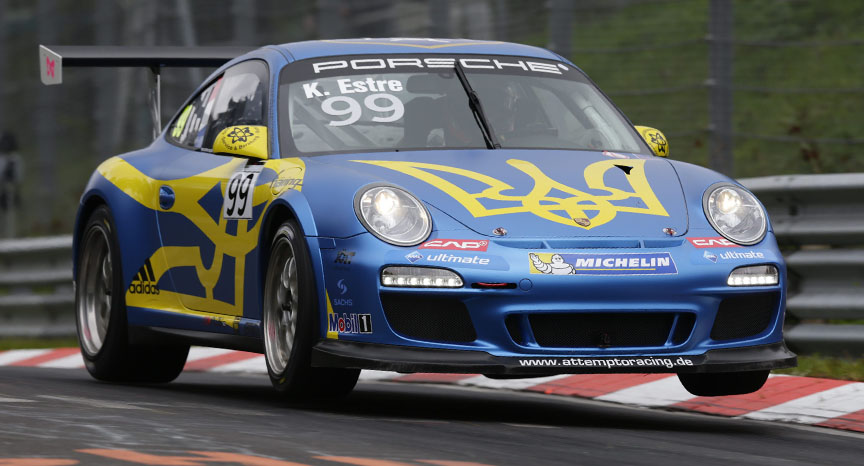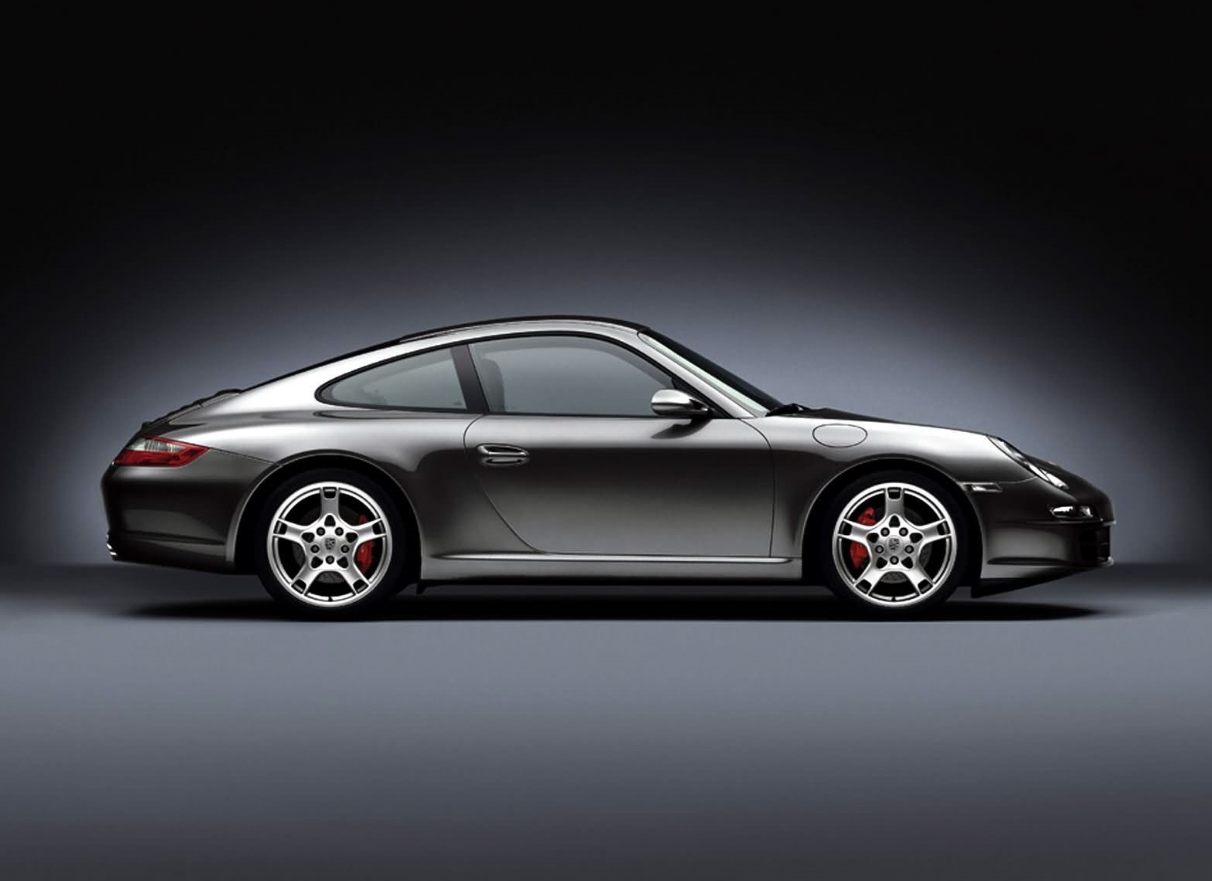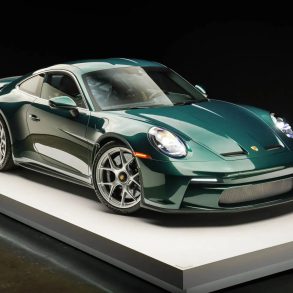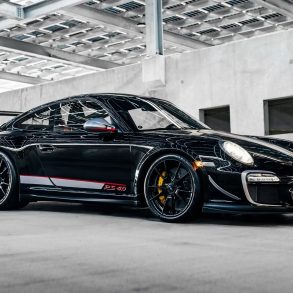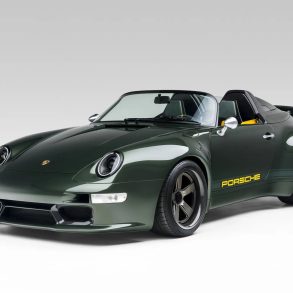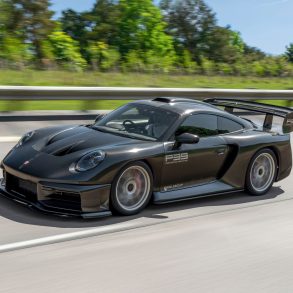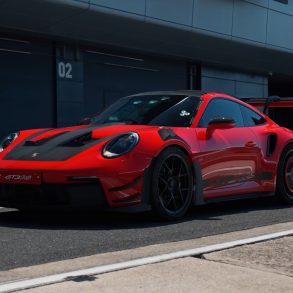Porsche 911 (997) (2004 – 2012) Story & History
Type 997 – The 6th Generation Porsche 911
Official photos: 2004 May 7 / Premiere: 2004 July 16 at 9:11 pm at all the 85 Porsche centres in Germany / Market launch: 2004 July 17
On May 7, 2004, Porsche announced that the new 911 generation will come in July as a 2005 model and will have two engine variants – the Carrera 3.6 and the Carrera S 3.8. The headlamps were round again, the body more curvaceous and the interior completely new. The Porsche Communication Management (PCM) screen became standard, but the navigation module was an extra. The new Porsche Active Suspension Management (PASM) was standard on the S version and optional for the base 911. Pressing the “sport” button made the PASM shock absorbers firmer. While the standard wheel size of the 996 Carrera was 17″ (although typically ordered with 18″), the 997 Carrera came with 18″ wheels (front 8″ with 235/40, rear 10″ with 265/40) and the 997 Carrera S with 19″ (front 8″ with 235/35, rear 11″ with 295/30). To improve active safety, the standard Porsche Stability Management (PSM) had two new functions: pre-filling the brake mechanism ensured more spontaneous deceleration when required, and the hydraulic brake power support helped to build up full brake pressure in emergencies.
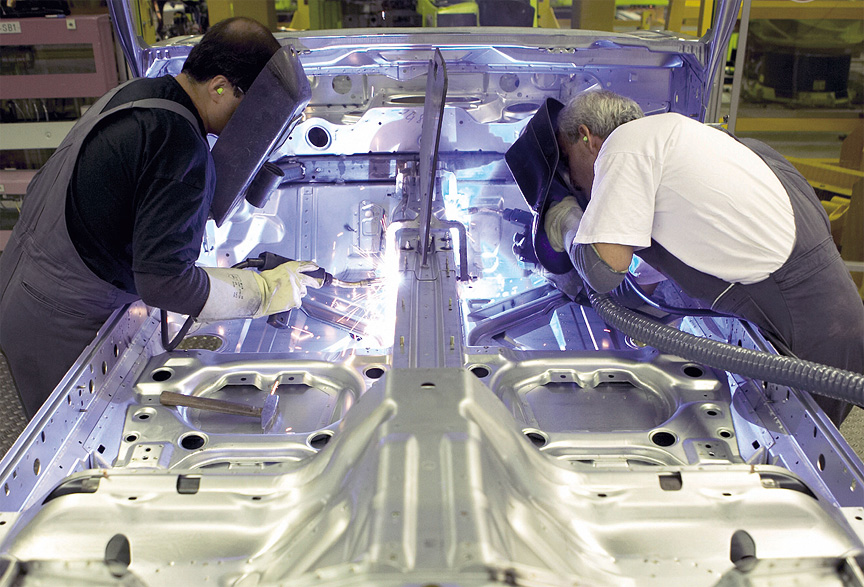
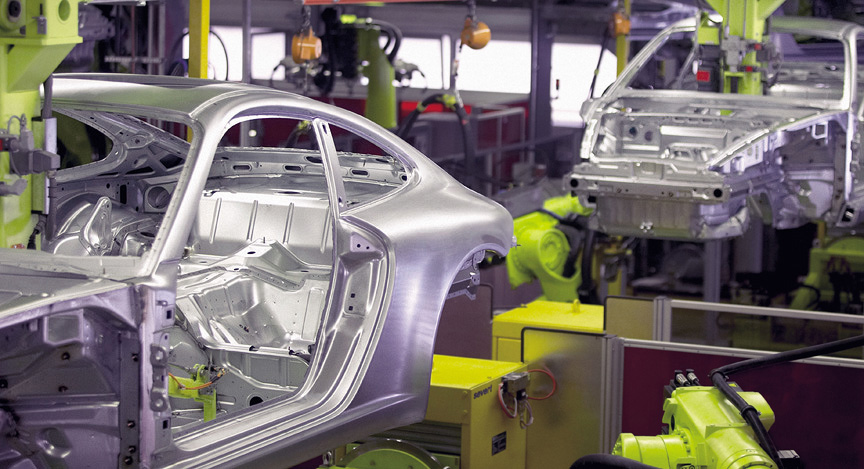
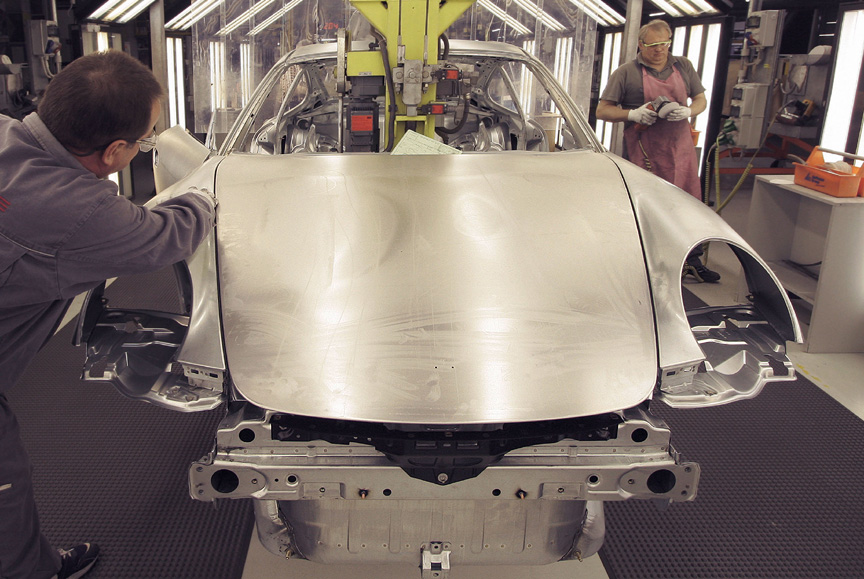
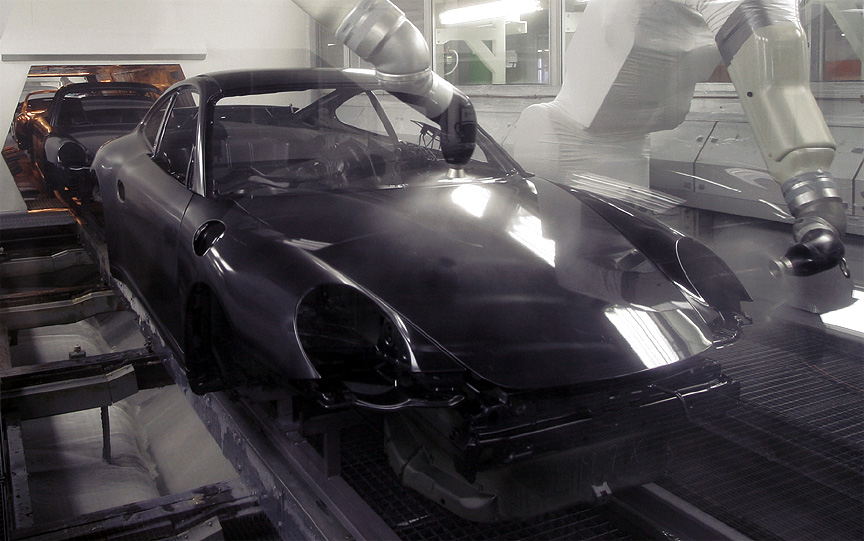
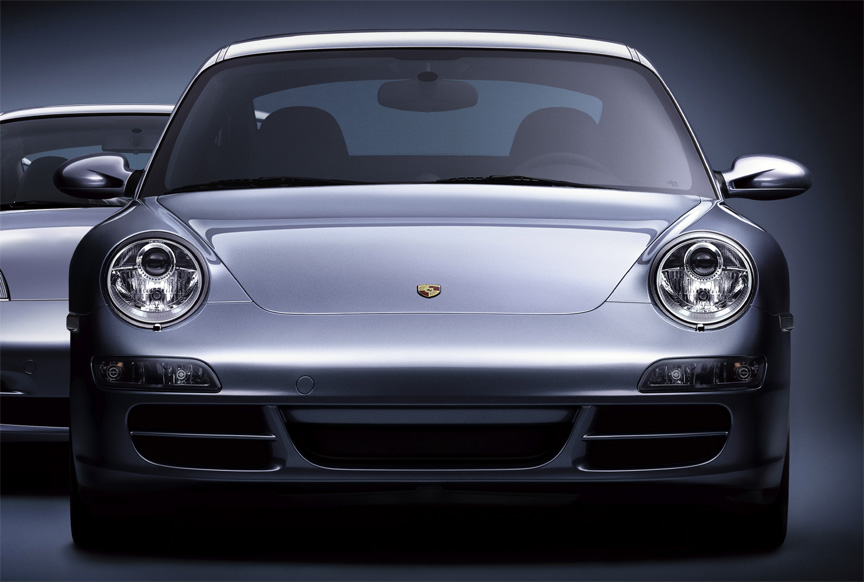
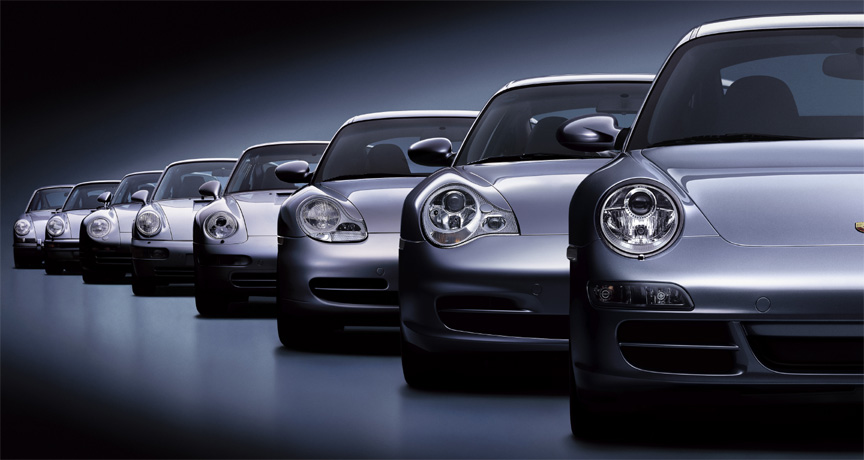
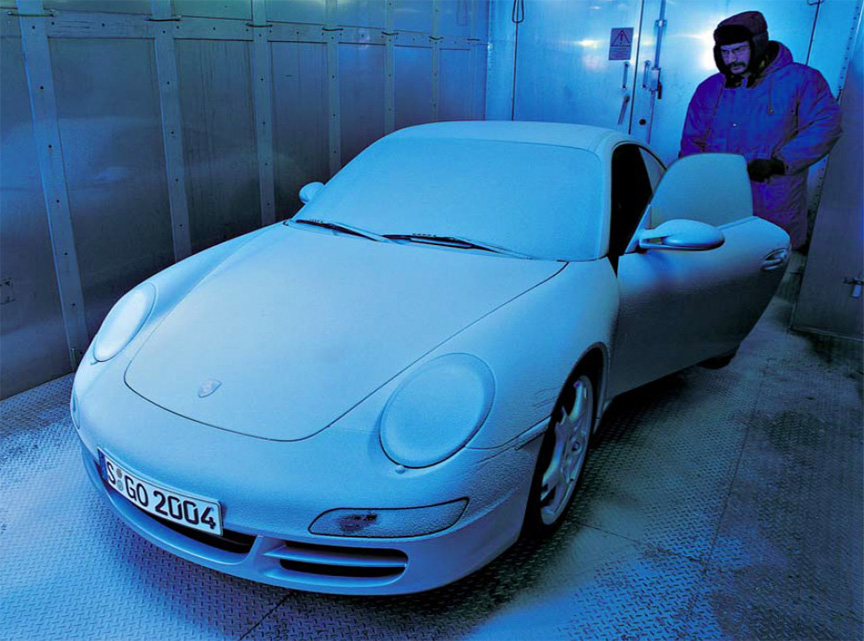
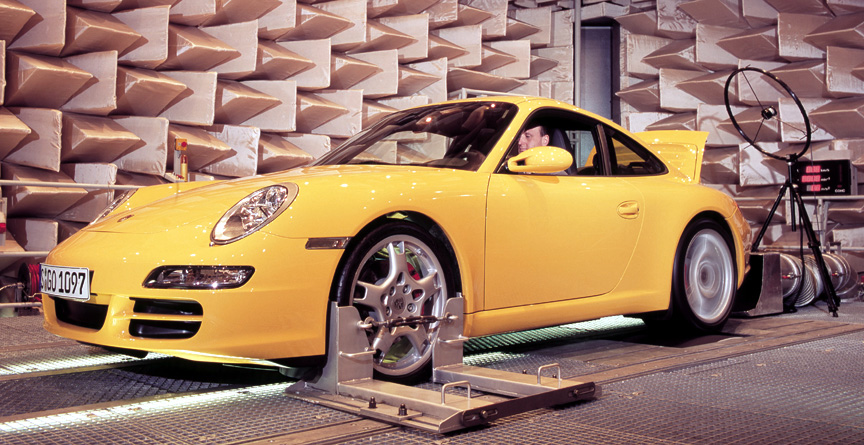
In Porsche’s financial situation of the 1990s, the 996 had gone to a bit wrong direction exterior design and engine technology wise. The 997 Carrera now was mostly a cosmetic makeover. The structural bodyshell, the shape of the roof and the 3.6-litre engine of the 996 Carrera were kept (type M96 with +3 kW thanks to chip tuning). The financial trick was to offer the new 3.8-litre M97 engine in the model called the 911 Carrera S. So, if you really wanted a NEW 911, you ordered the car with the 3.8-litre engine. As the years went by, the downside of the bored-out engine came out: the larger the displacement of the M96/M97 Carrera engine, the more fragile its 6th cylinder is to the overheating. Sounds nonsense as there were no overheating problems with the air-cooled 911.
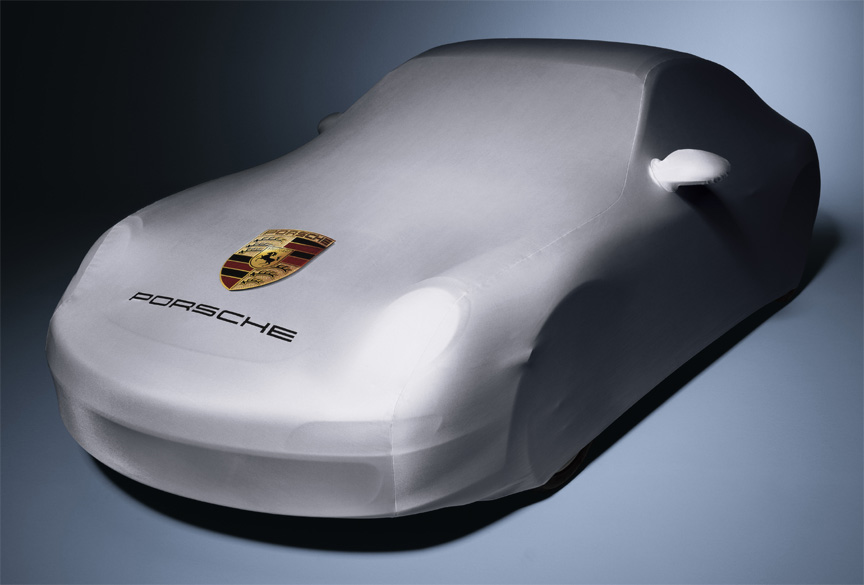
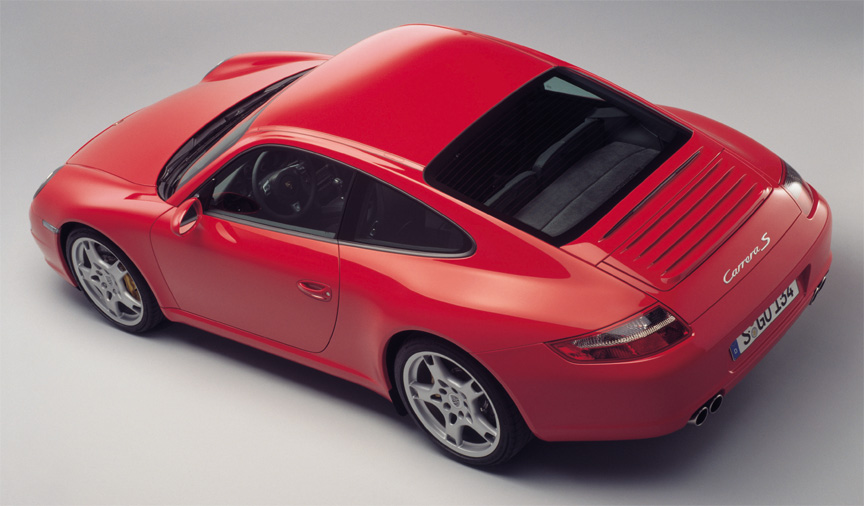
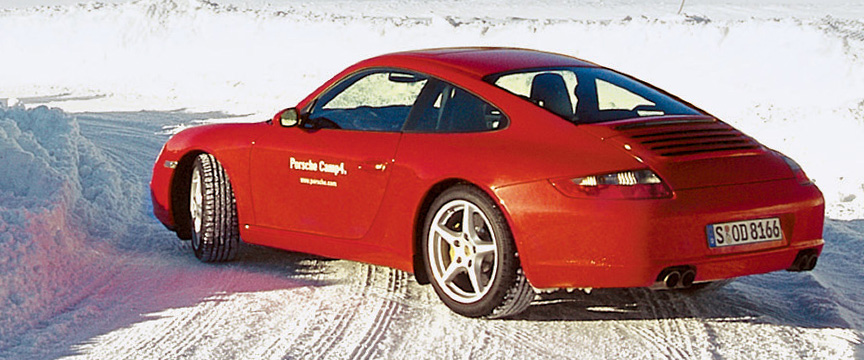
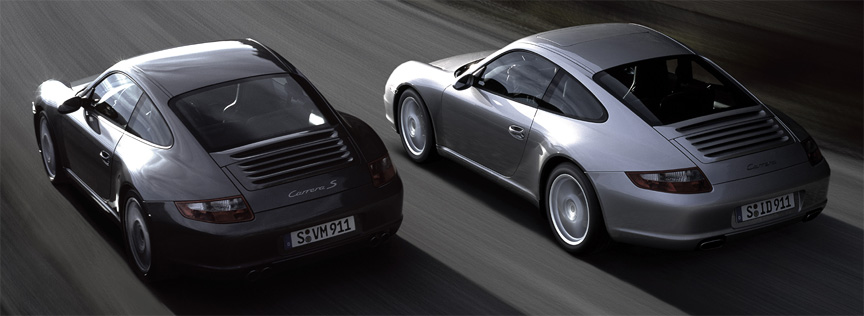
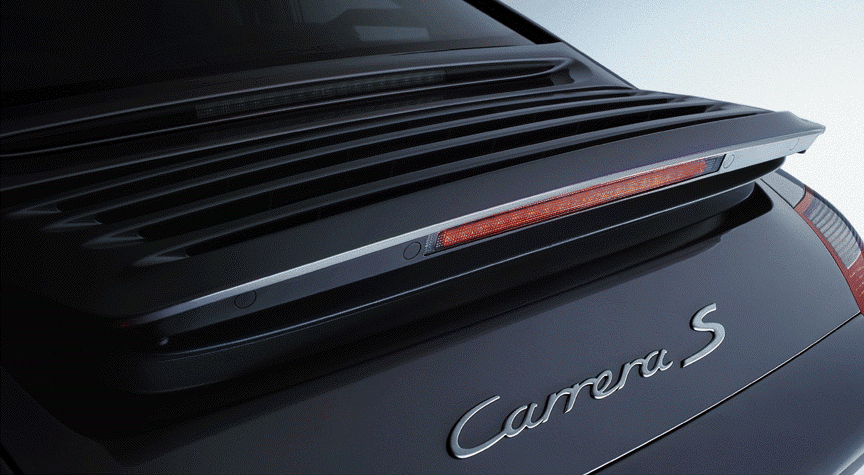
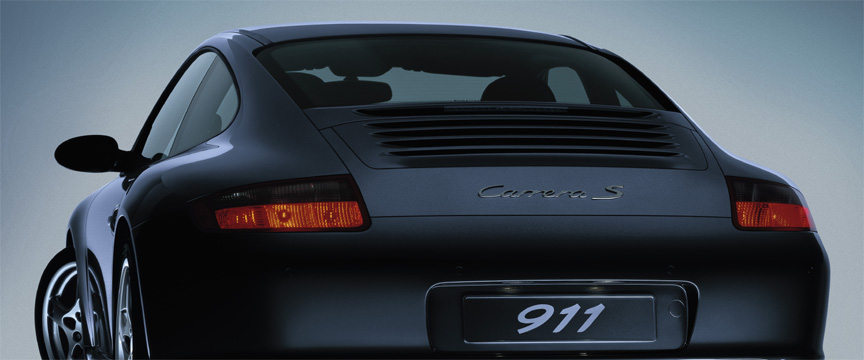
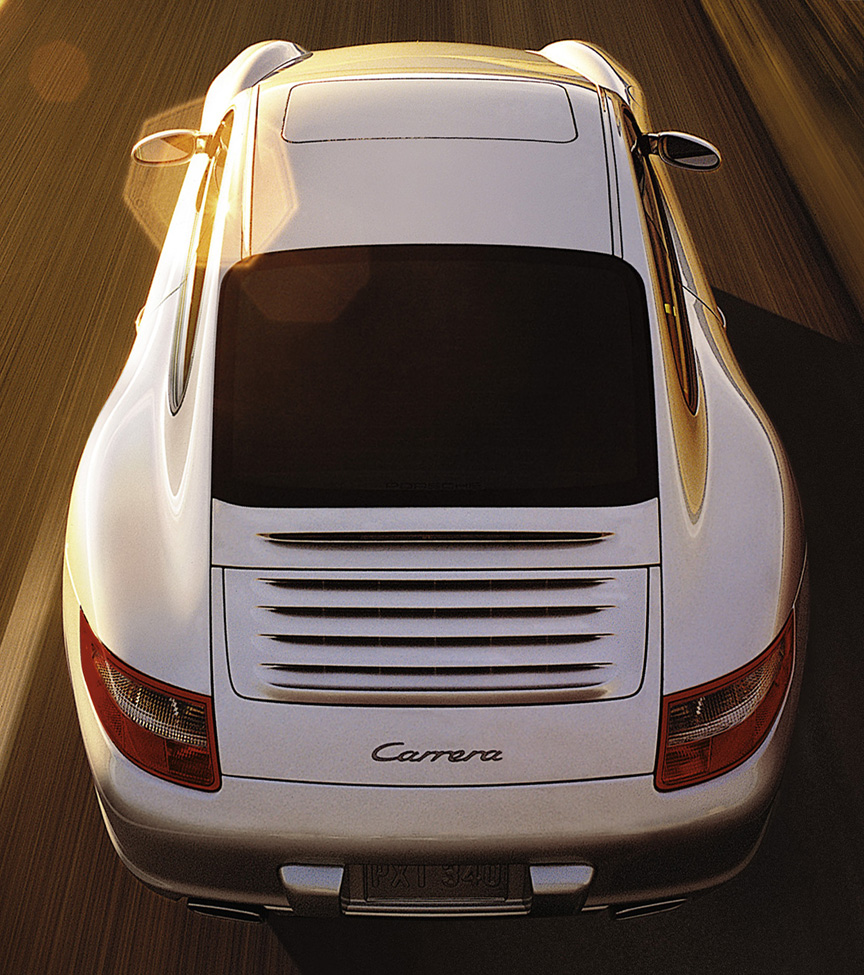

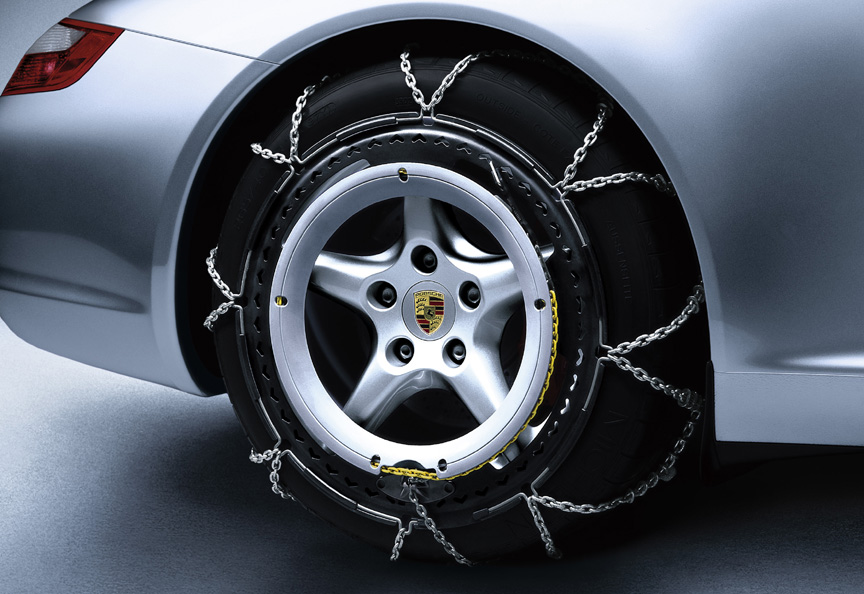
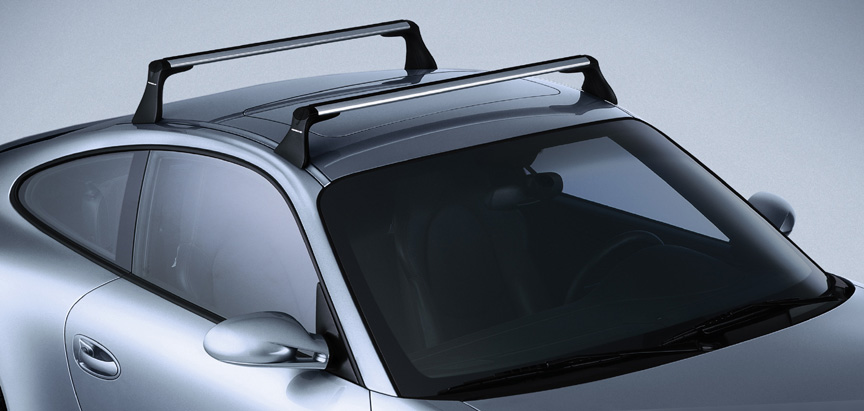

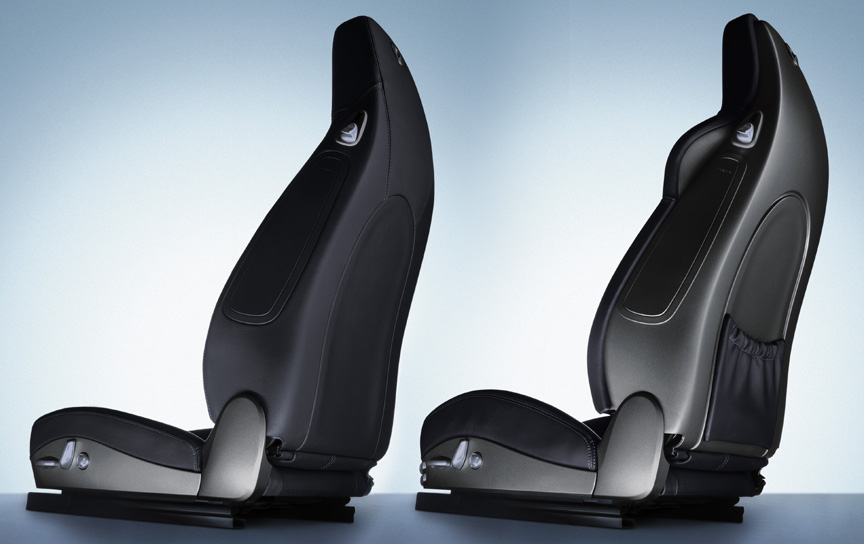
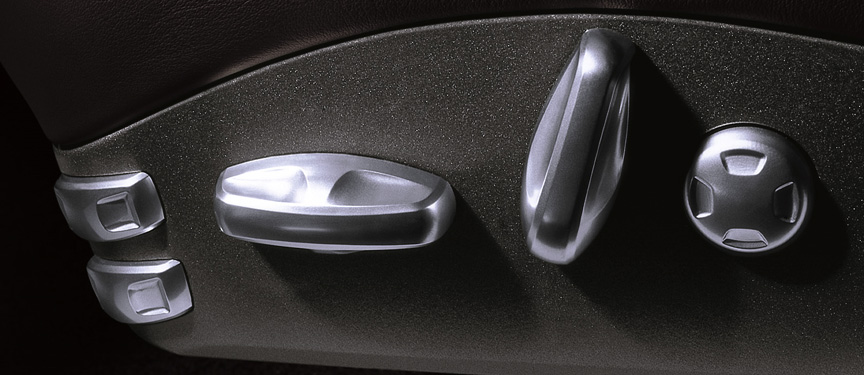
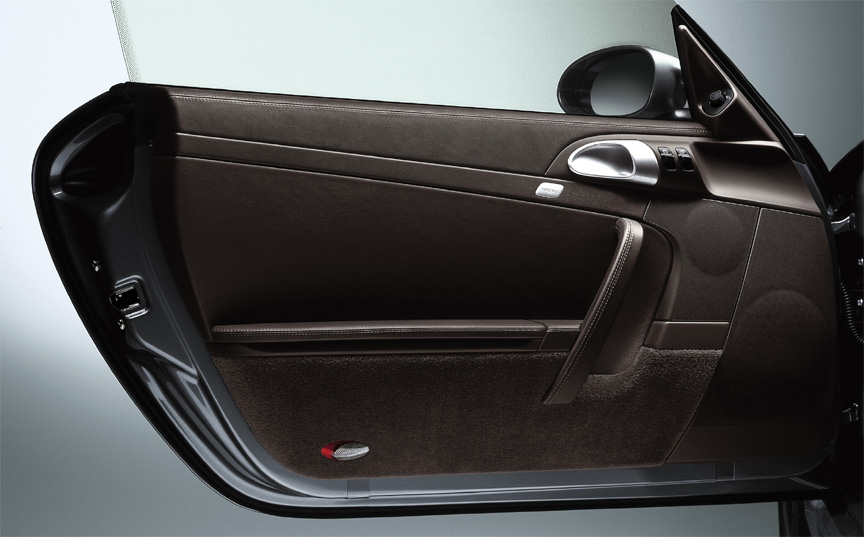
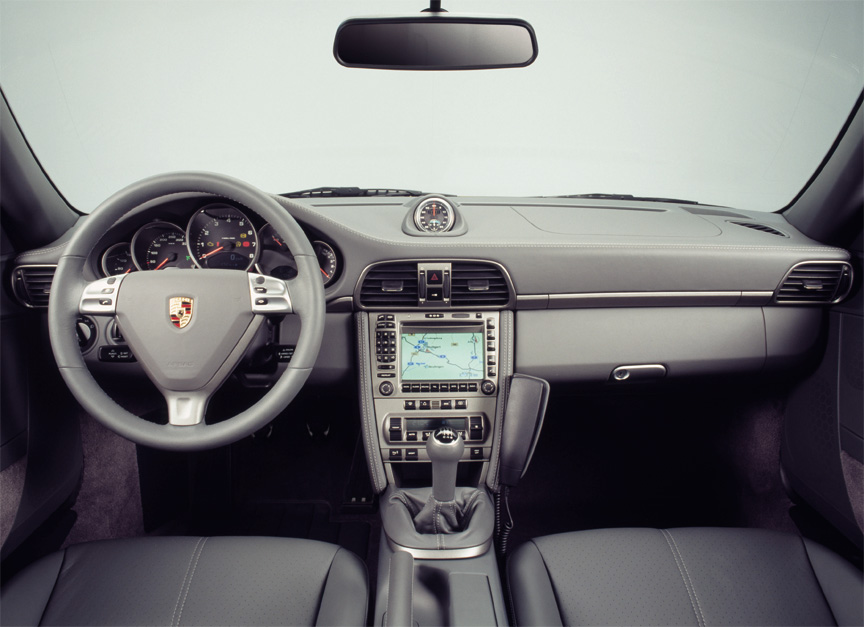
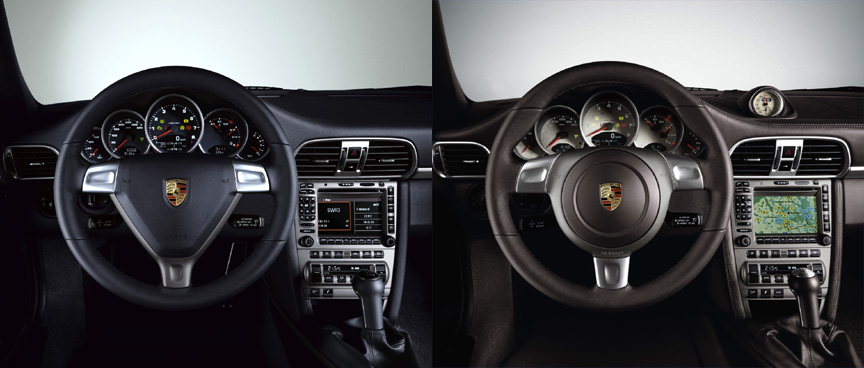
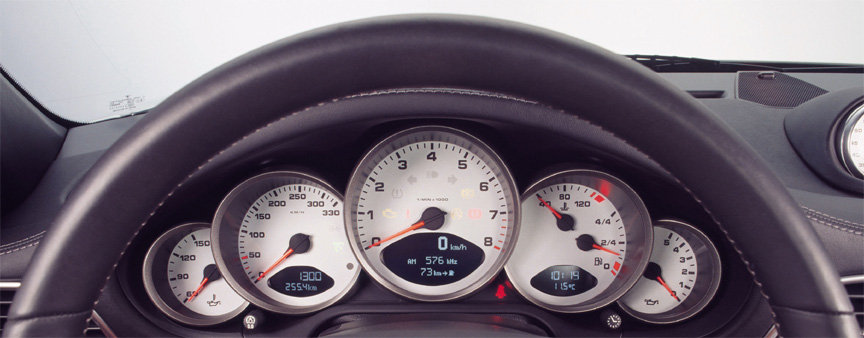
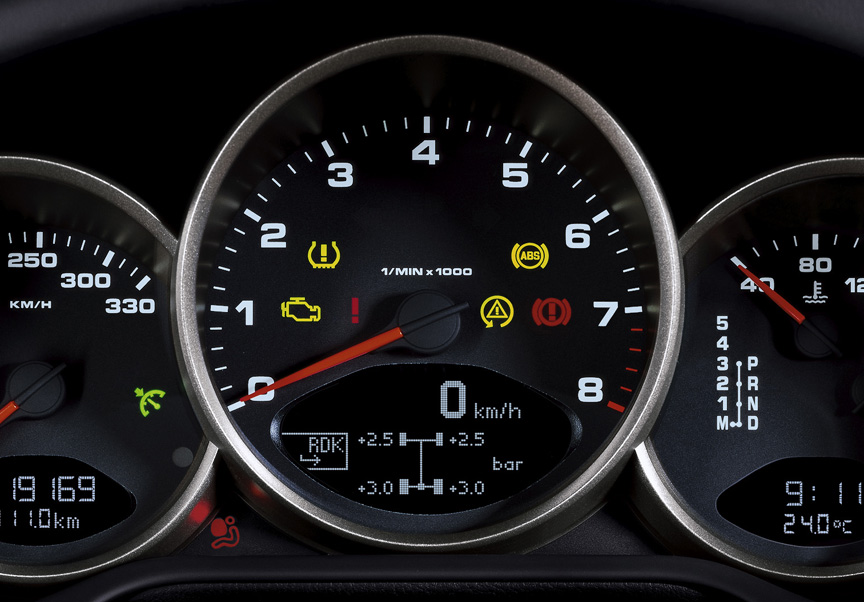
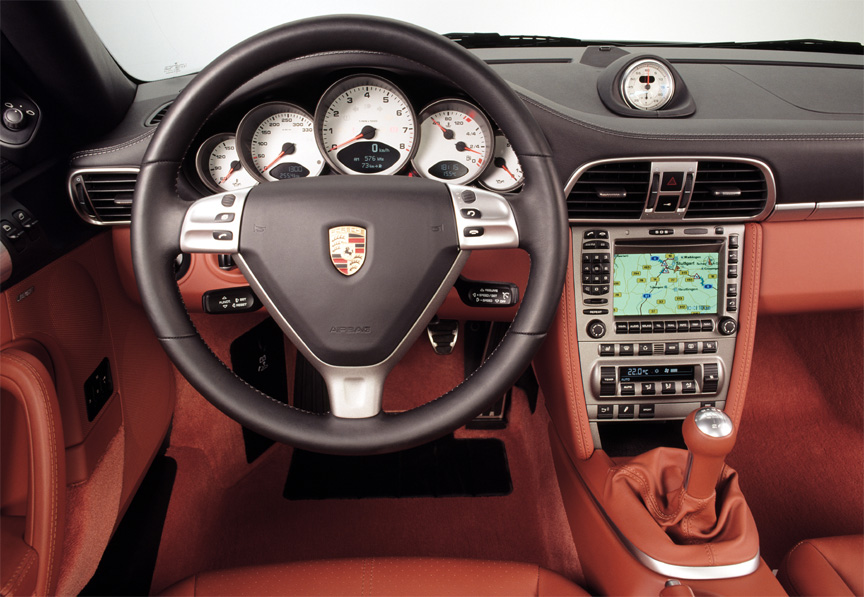
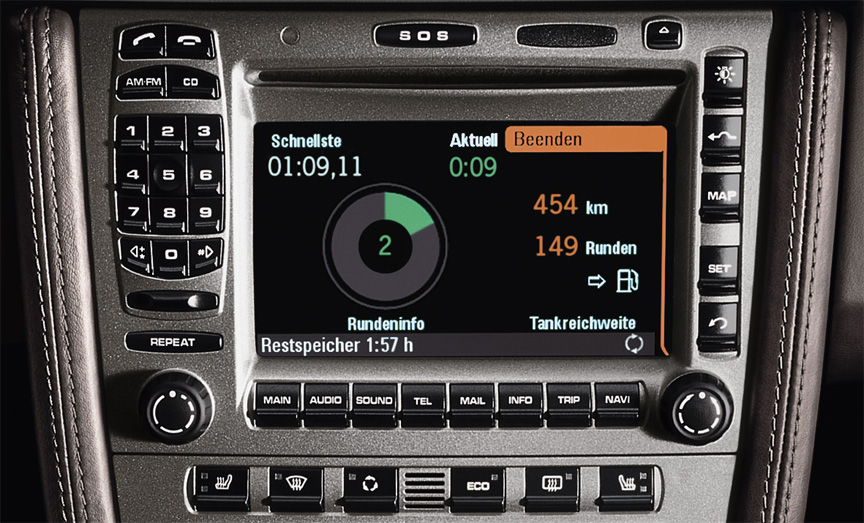
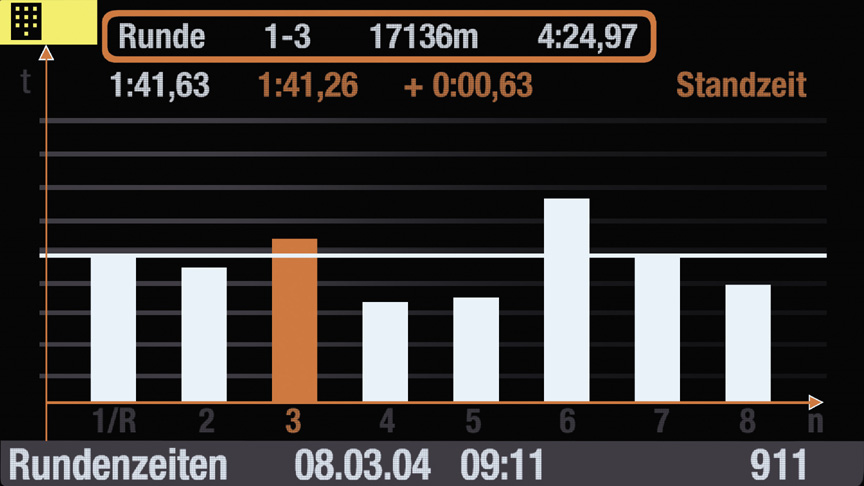
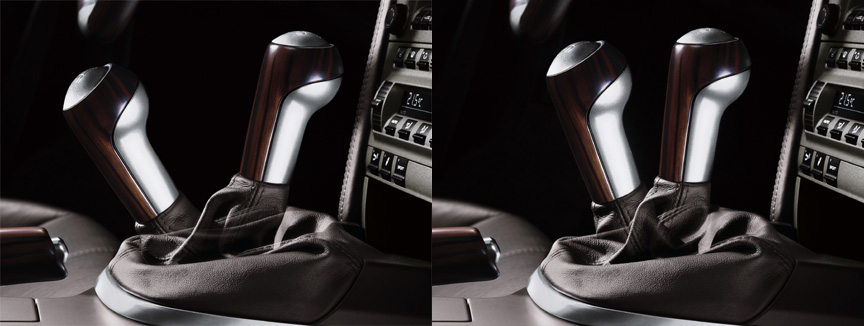
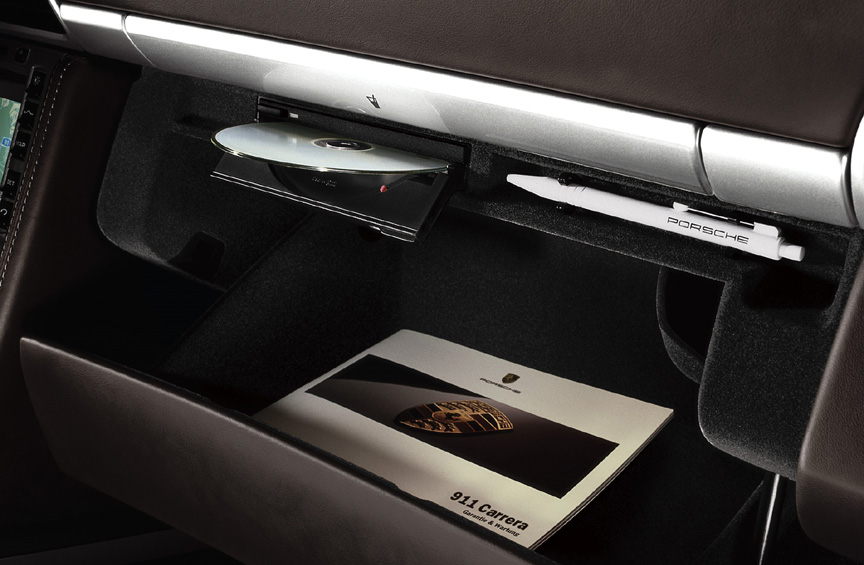
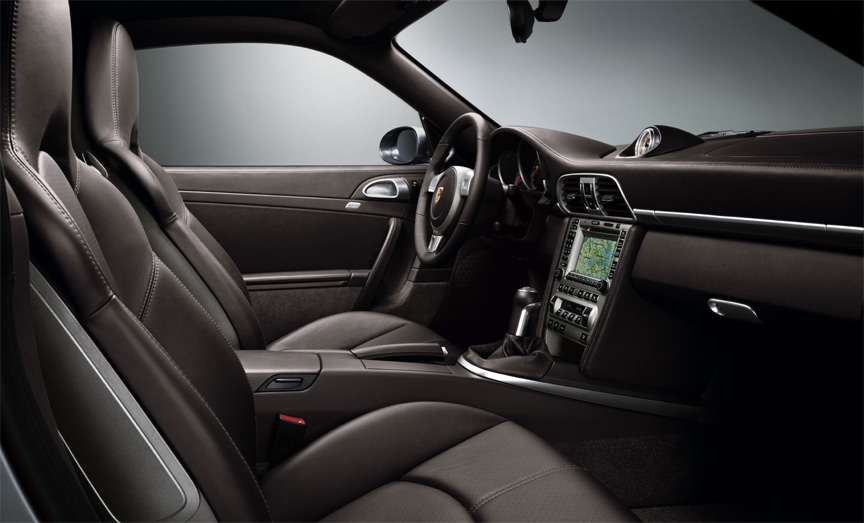
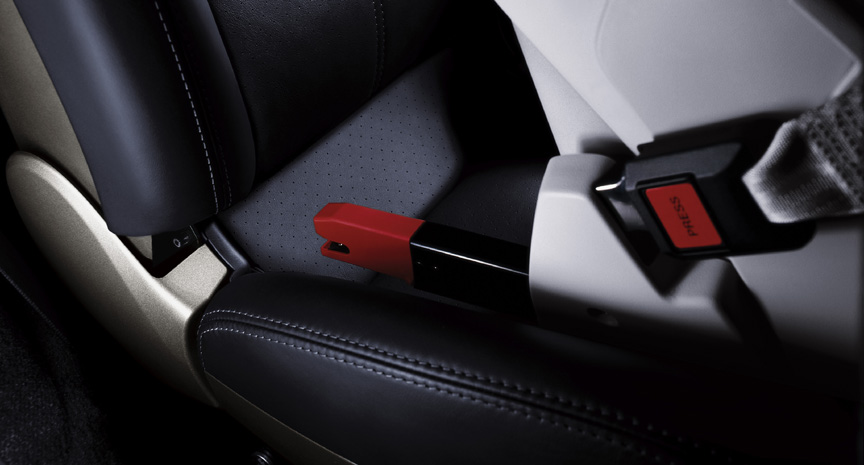
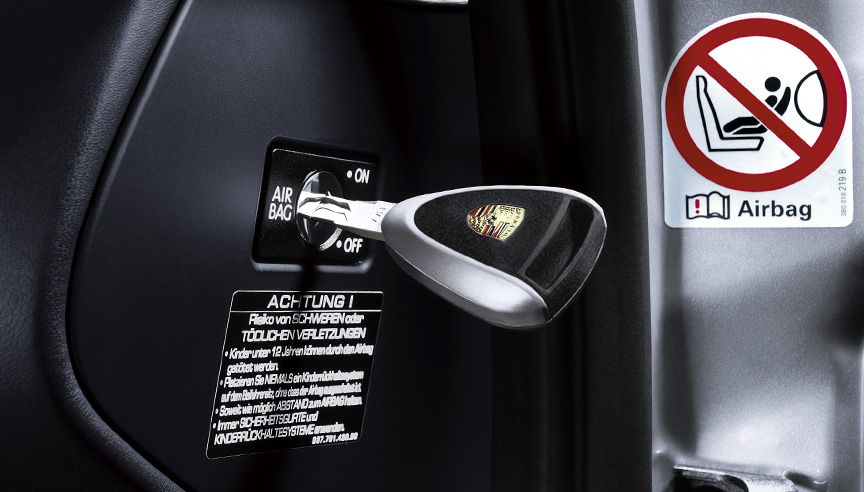
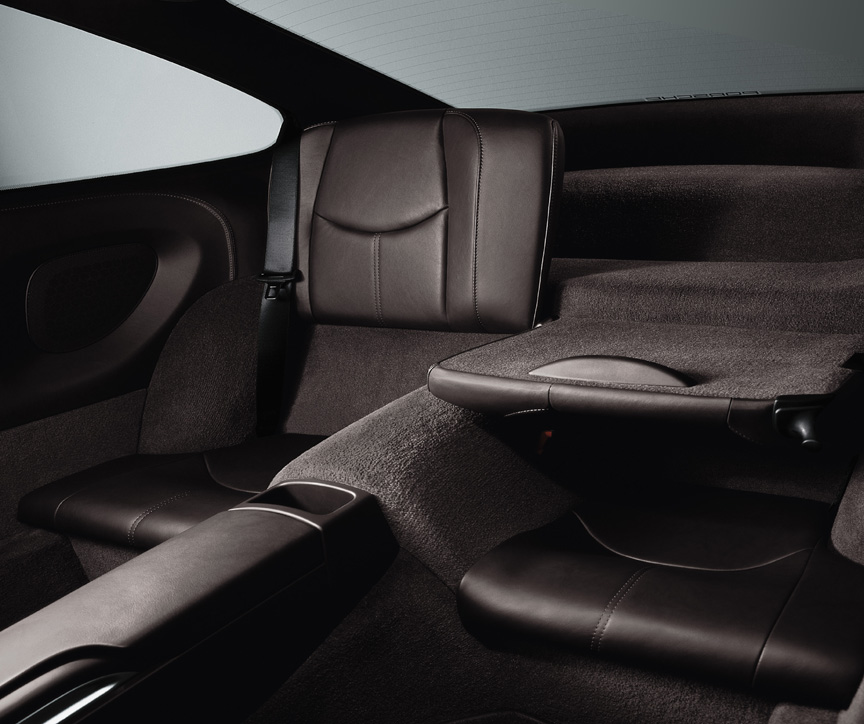
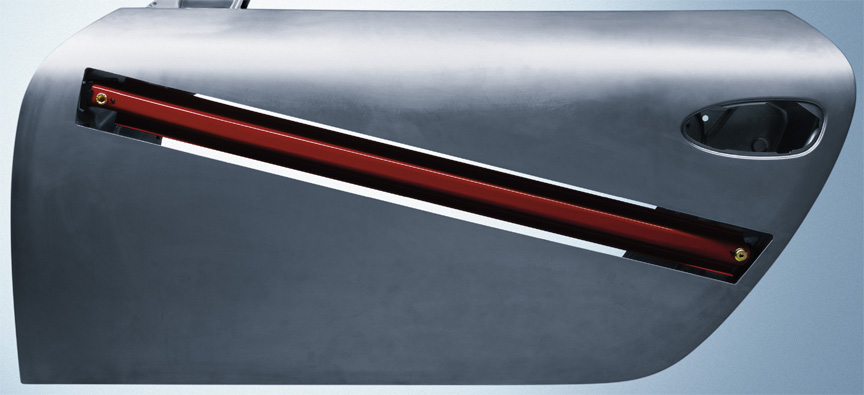
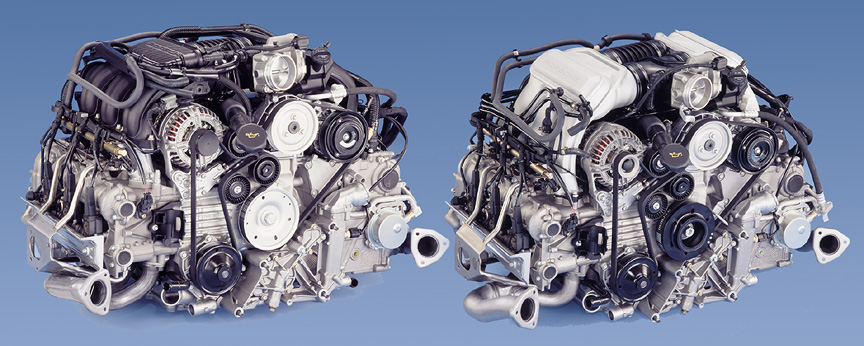
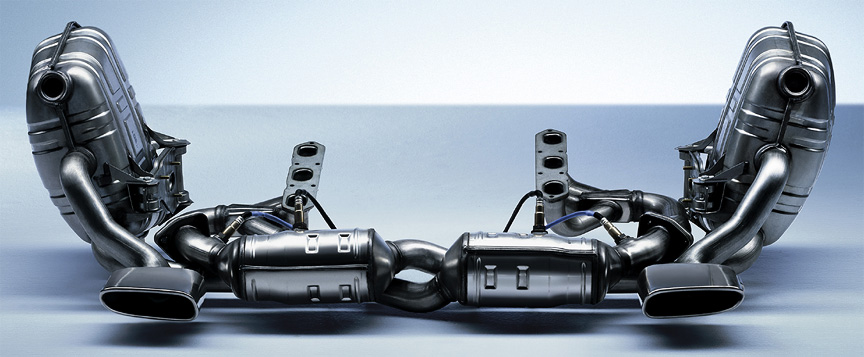
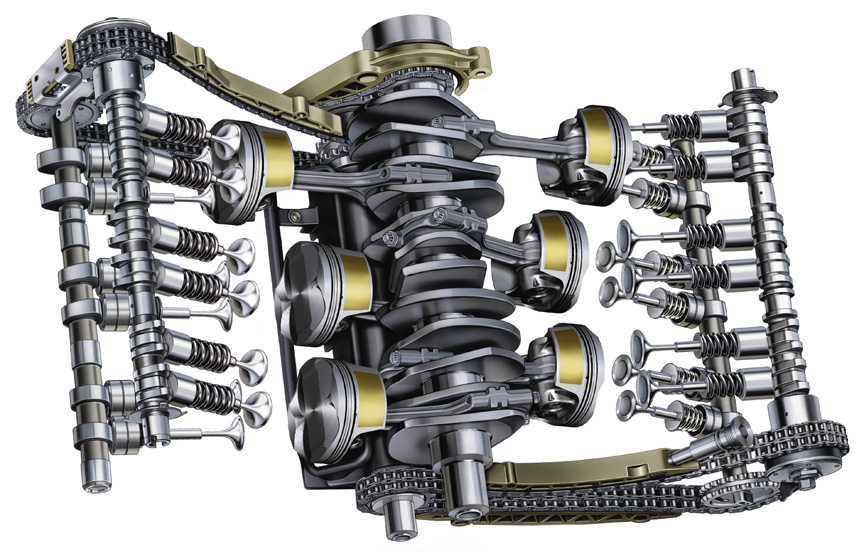
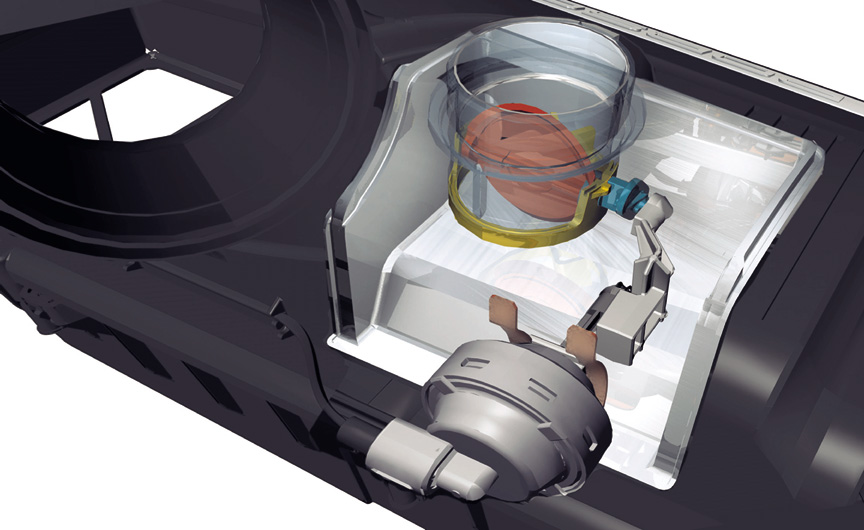
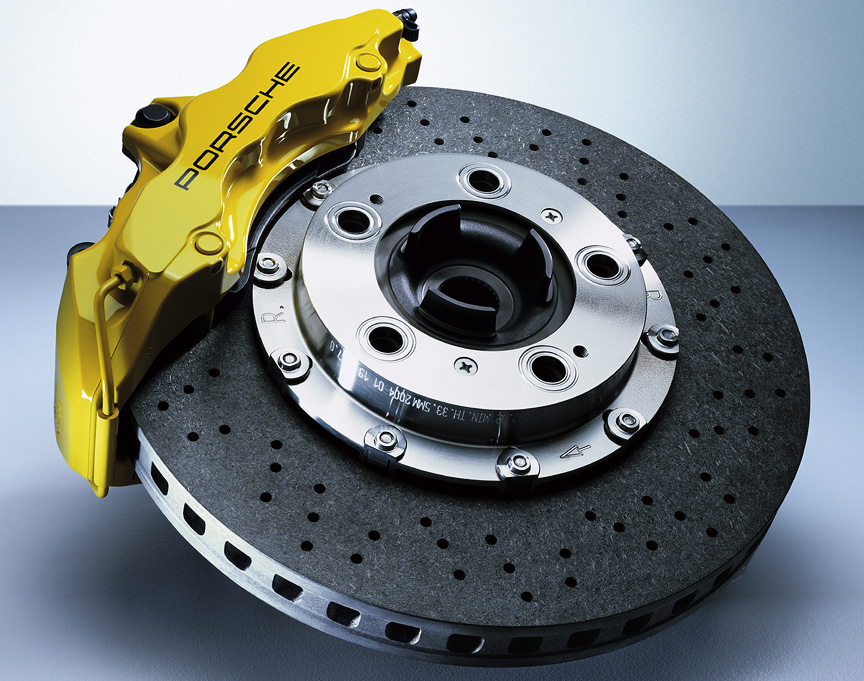
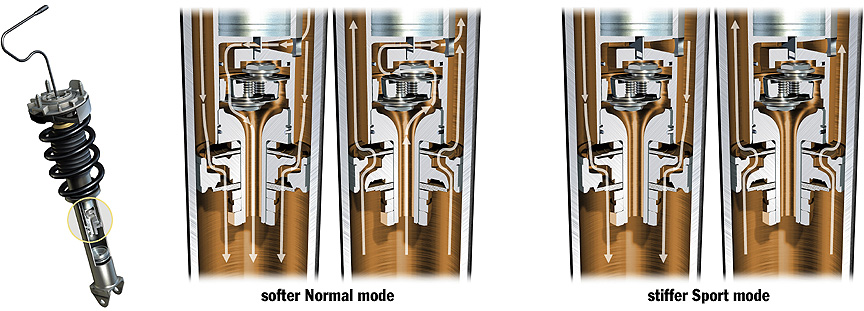
The 997 GT3 Cup was introduced in January 2005 for the upcoming racing season. The 3.6-litre durable old-school unit got 294 kW and maximum 8200 rpm (last 996 Cup: 287 kW and rev limitter at 8000). The transmission was a 6-speed sequential dog-type gearbox with 5.5″ triple-disc sintered metal clutch. The fuel tank size was 90 litres. There were front and rear double coil springs and the power steering was electro-hydraulic like on the 996 Cup cars. 3-piece central locking aluminium rims were used, fronts 9×18, rears 11×18 (same width as on the 996 Cup car). The tyres were naturally from the best manufacturer, Michelin, fronts 24/64-18 and rears 27/68-18. The body had many carbon fibre parts: front bumper and spoiler edge, doors and rear bumper. Air jack system was incorporated into the car. For the first season, the car was only used for the international Supercup series. The Supercup specification cars had ceramic brake discs (380/350 mm) and car weight 1120 kg/2469 lb. Later Carrera Cup specification cars had steel rotors in the same size which made the car heavier (1140 kg/2513 lb).
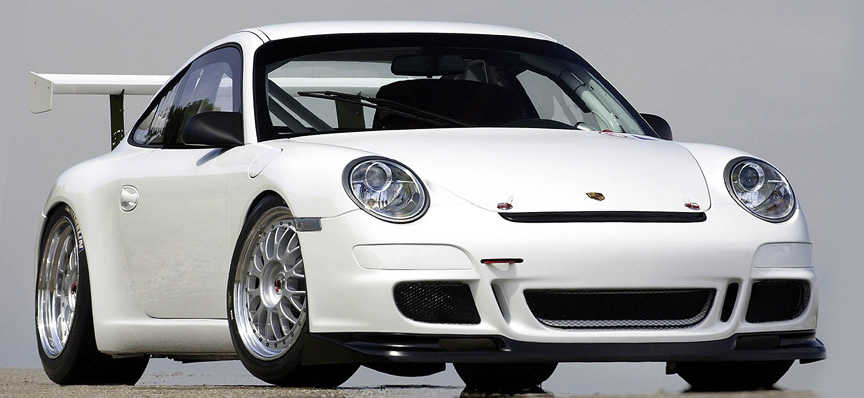
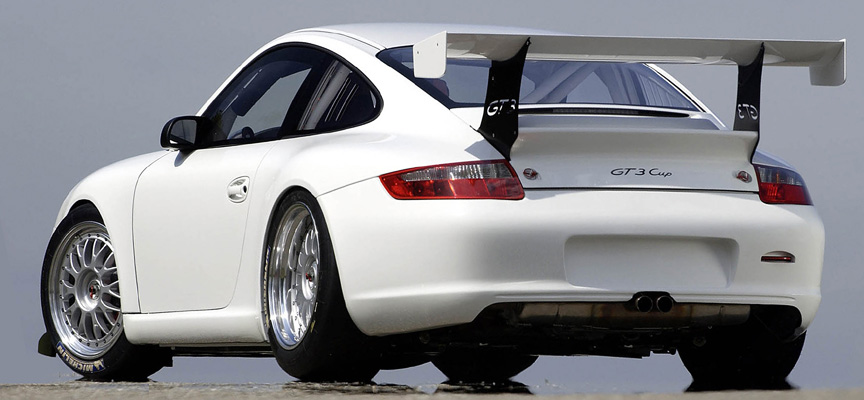
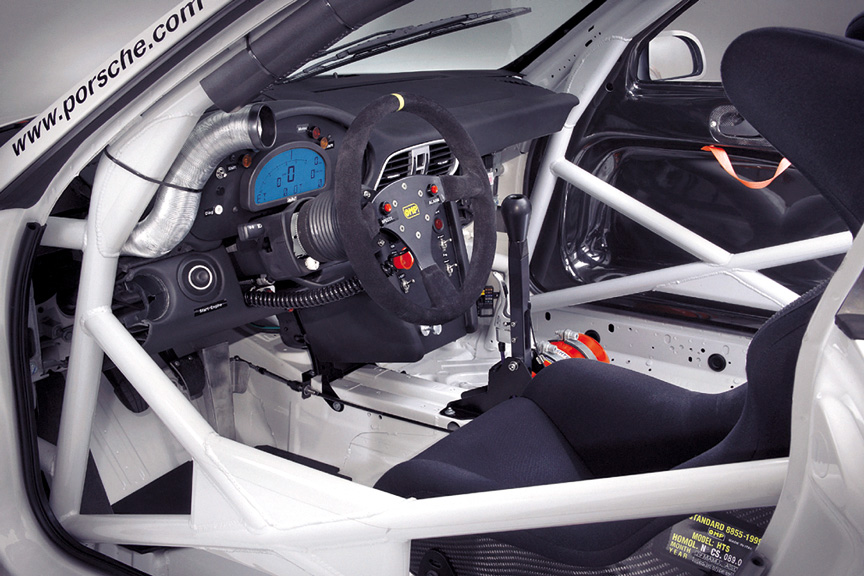

Three days after the 997 GT3 Cup was shown in Bahrain, the Aerokit was introduced for the coupé-bodied 911 Carrera and Carrera S. The Aerokit consisted of a GT3 Cup-style front spoiler and a different rear spoiler (a year later to be used on the GT3 street version).
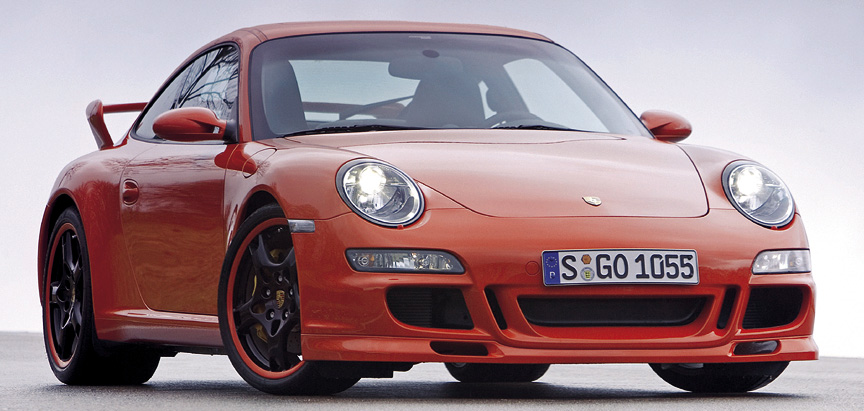
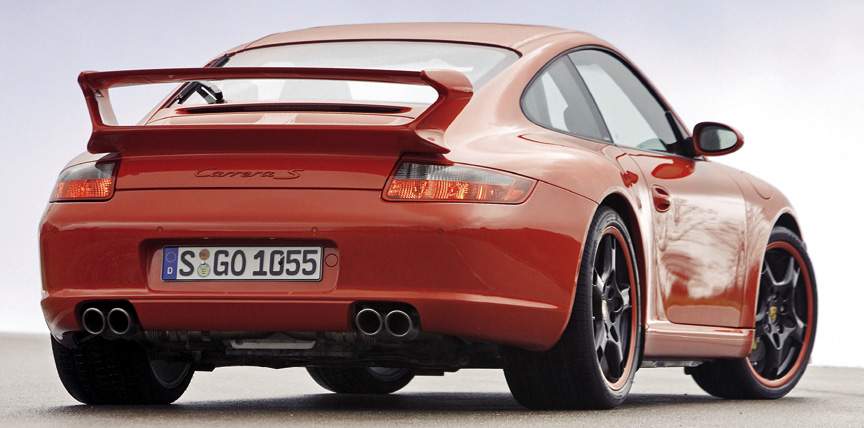
For the spring of 2005 the Carrera 4 and 4S were introduced. The all-wheel drive system had a viscous multi-plate clutch, which brought 5-40% percent of the driving power to the front wheels. To sell more of these more expensive versions, wider rear fenders came together with the added front wheel drive (and not with the S engine!?). The Carrera 4/4S body is 1.7″/44 mm wider at the rear. With the rear mounted engine the rear wheels already have enormous traction. The added front drive system kills the sharpness while not offering permanent 4WD, so it really doesn’t give you any benefits. It gives weight. With “4” in the 911 model name, the first owner paid an extra 9% to kill the fun in the car.
The 997 Cabriolet was introduced at all the 85 German Porsche centres on April 2, 2005. The 997 Cabriolet weighs 85 kg/187 lb more than the Coupé. Both versions have the same top speed. The side airbags provide a unique form of protection for the head, even when the top is down. The Carrera Cabriolet cost 13% more than the Coupe or exactly as much as the Carrera S Coupé.
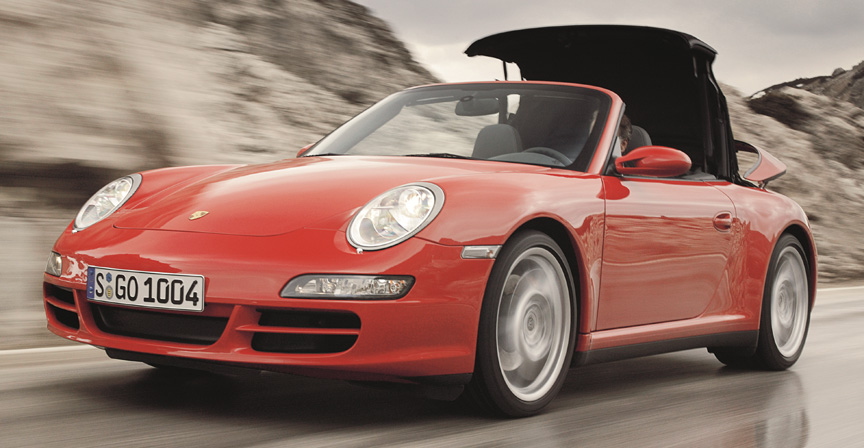
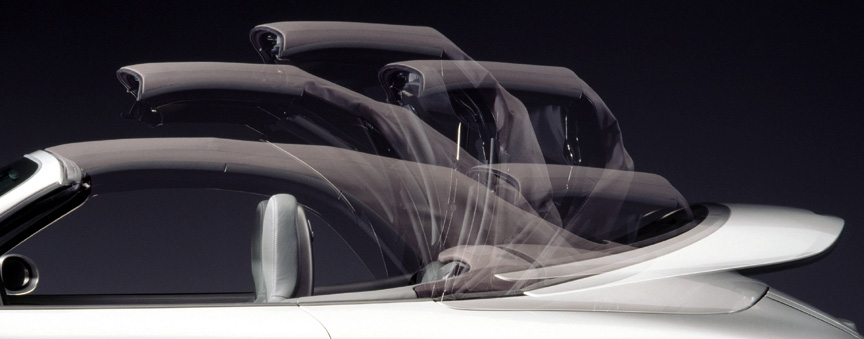
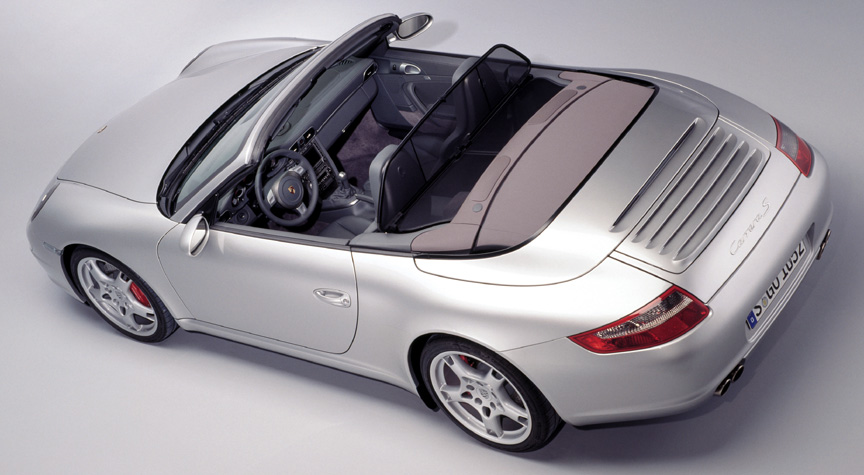
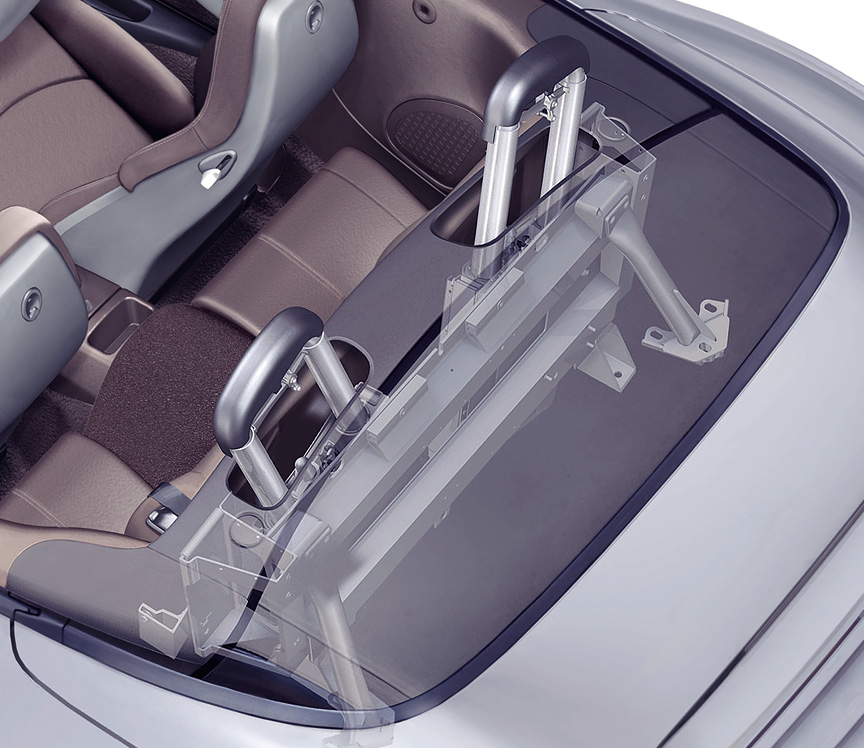
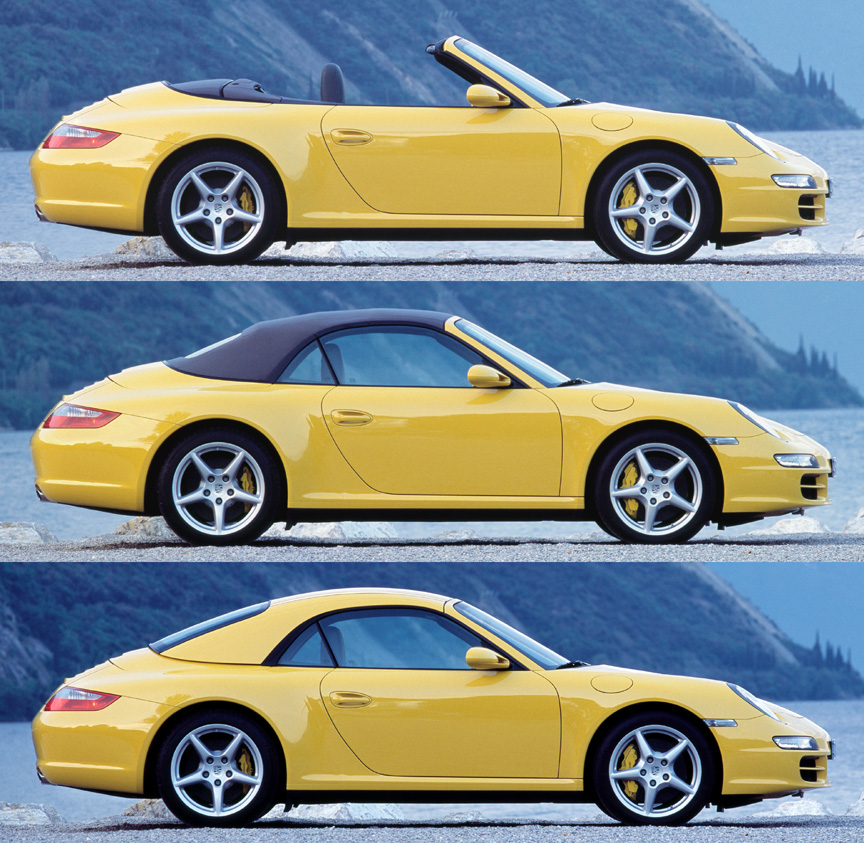
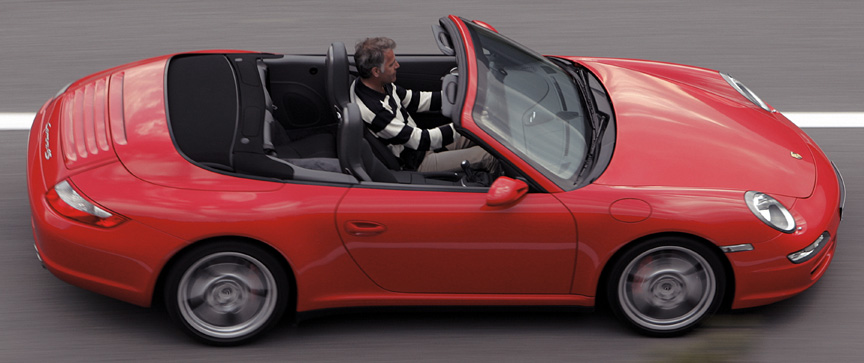
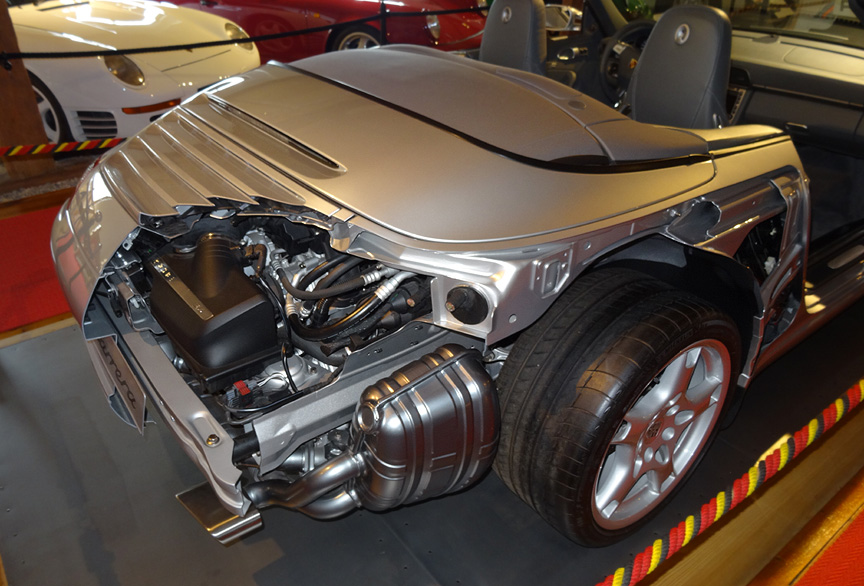
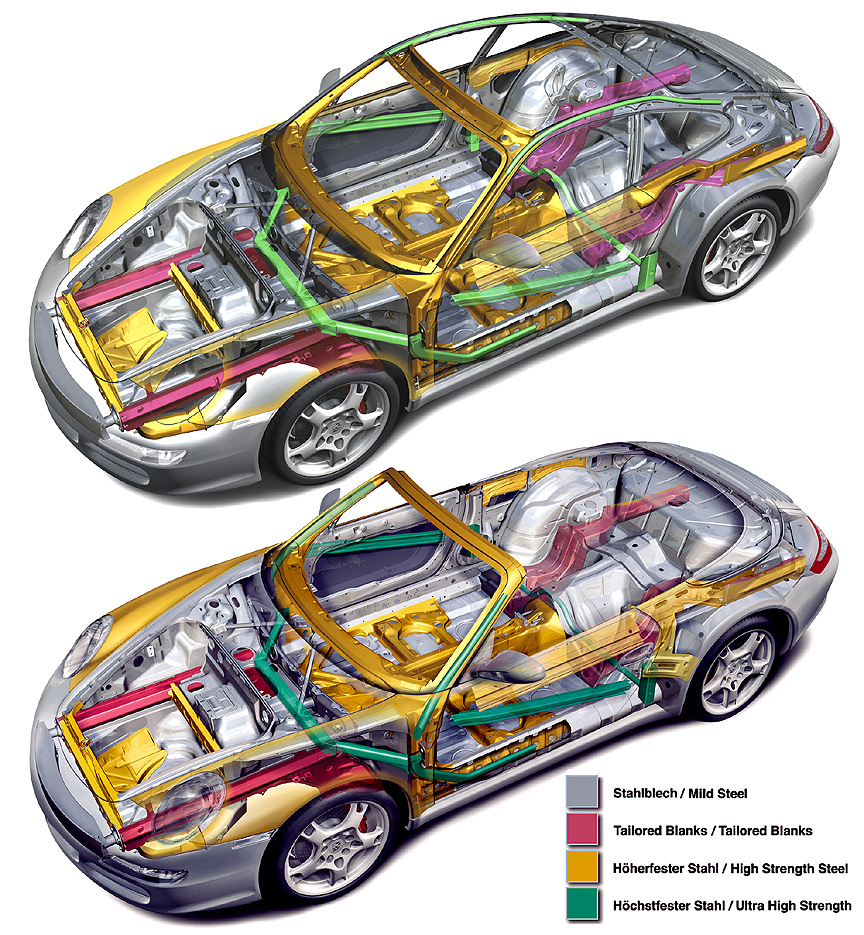
In July 2005 it was announced that the market launch of the Carrera 4 Cabriolet and the Carrera 4S Cabriolet was scheduled for October. It wasn’t a news for the Porsche enthusiasts who prefer the lighter versions that were already launched.
From the 2006 season the 997 GT3 Cup cars were also used for national Carrera Cup series in addition to the Supercup. Porsche built the record number of 195 units of the 911 GT3 Cup for the 2006 season.
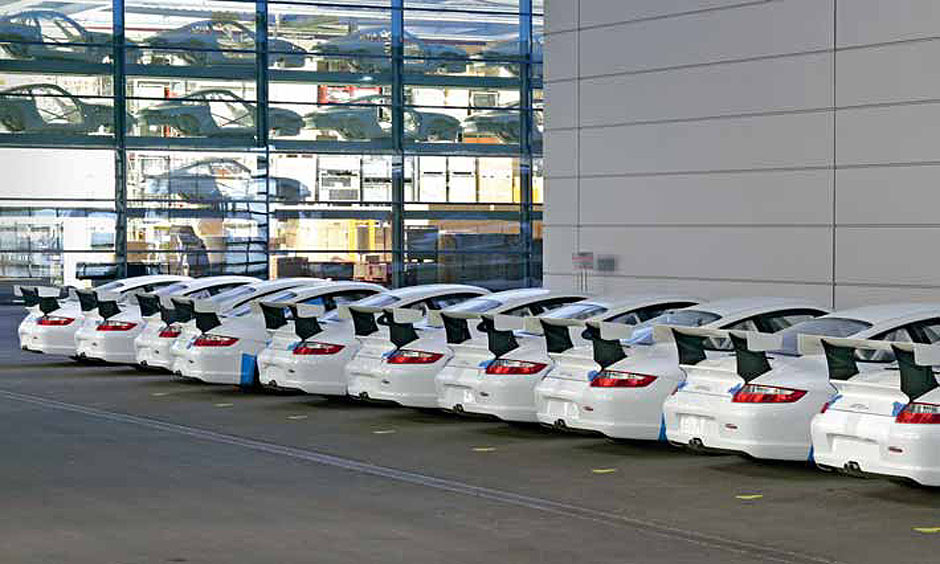
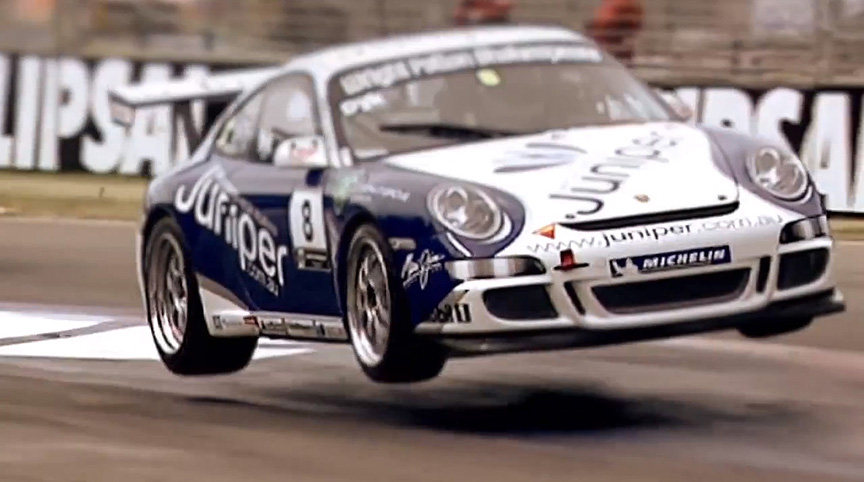
The 997 GT3 street version and the 997 Turbo were presented on February 28, 2006 at the Geneva Motor Show. The Turbo was available in European dealerships from June 24, 2006. Compared to the 996 Turbo, the power was up from 309 kW to 353 kW. The weight increase was minimal, but The 997 Turbo was .9″/22 mm wider than the 996 Turbo.
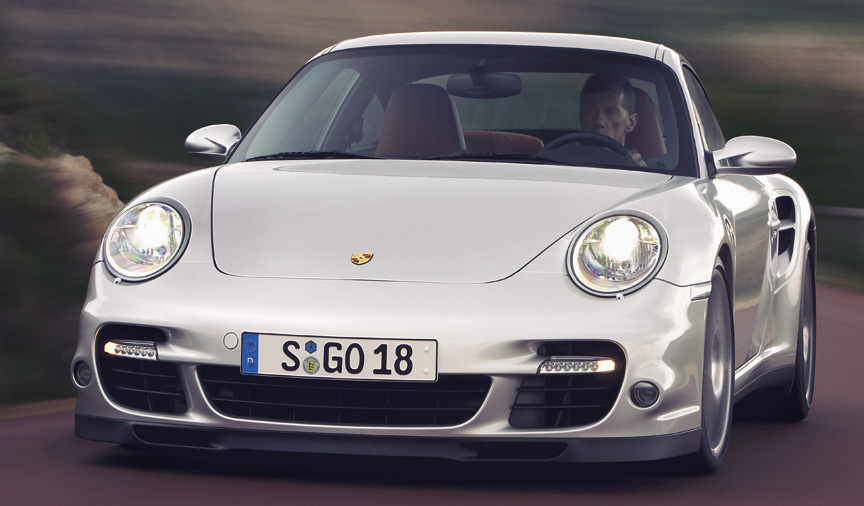
In comparison with the 996 Turbo, the diameter of the brake discs at the front and rear wheels has been increased by 20 mm to 350 mm. Optional PCCB Porsche Ceramic Composite Brakes give a weight reduction of 17 kg/37 lb compared to the standard brakes. The PCCB discs for 997 Turbo have a diameter of 380 mm at the front axle and 350 mm at the rear. The wheel sizes are 8.5×19″ with 235/35 tyres and 11×19″ with 305/30 tyres.

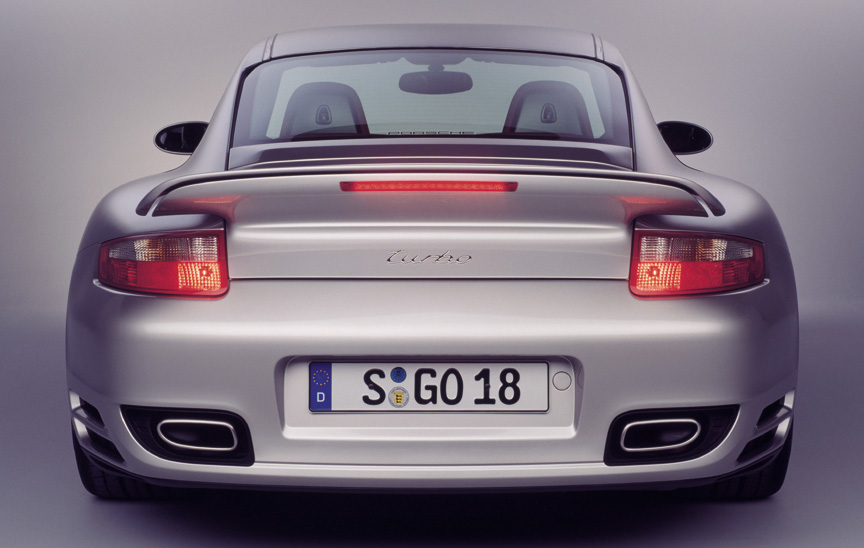
Thanks to the new Variable Turbine Geometry (VTG) turbochargers, the turbo lag was minimized and the maximum torque of 456 lb-ft/620 Nm is available between 1950-5000 rpm (compare to 996 Turbo: 412 lb-ft/560 Nm between 2700-4600 rpm). The principle of variable turbine geometry unites the advantages of small and large turbochargers and leads to improvement in flexibility and acceleration, particularly at low speeds. The vehicle’s flexibility can be enhanced even further with the optional “Sport Chrono Package Turbo”. Here the driver selects the sport-mode to activate a short-time overboost at full throttle. This increases boost pressure in the mid speed range by 0.2 bar for up to 10 seconds; torque rises to 500 lb-ft/680 Nm.
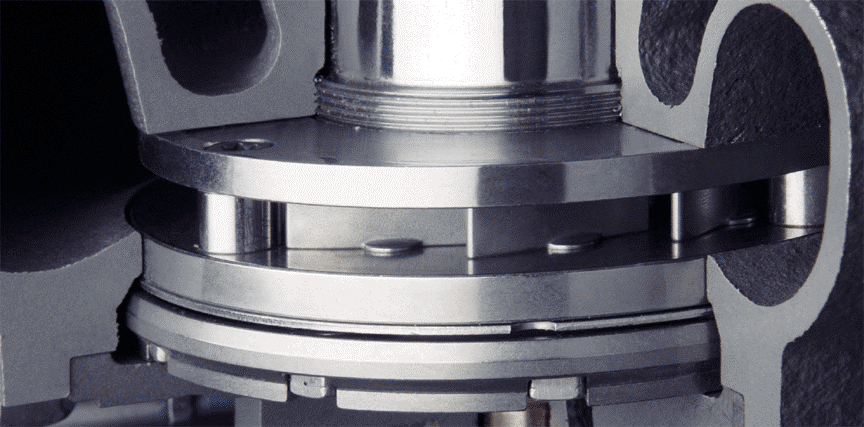
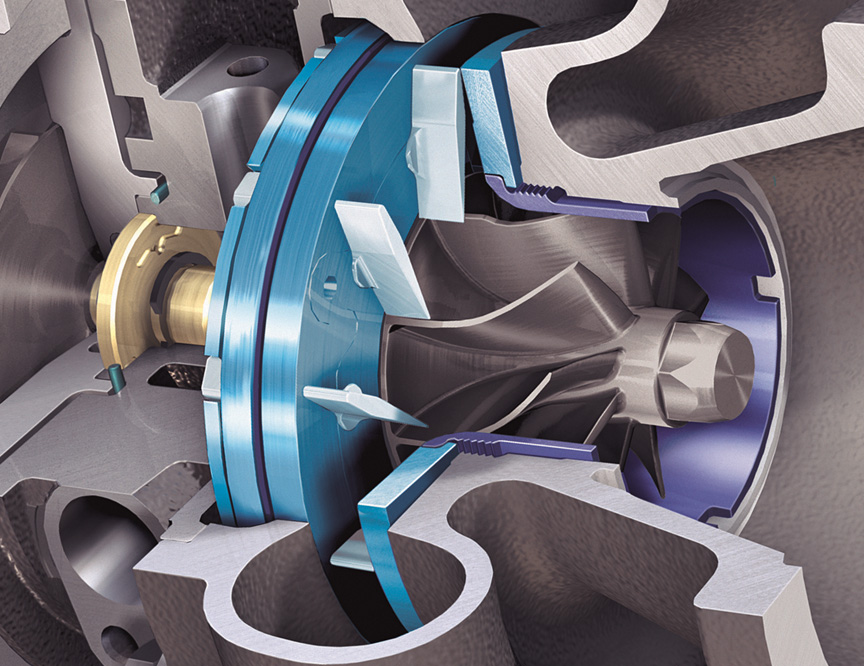
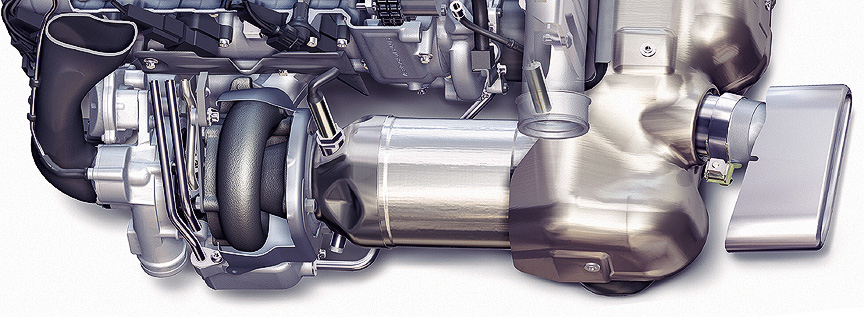
It was announced that the GT3 goes on sale across Europe in May 2006 and in the USA from August. Compared to the 996.2 GT3, the engine speed limit was raised by 200 rpm to 8400 rpm. This meant the car could do at least 50 mph/80 km/h in the first gear. The scream from the engine is phenomenal! The GT3 accelerates from zero to 100 mph/160 km/h in 8.7 seconds. Its top speed is 193 mph/310 km/h, equal to the much more powerful 997 Turbo.
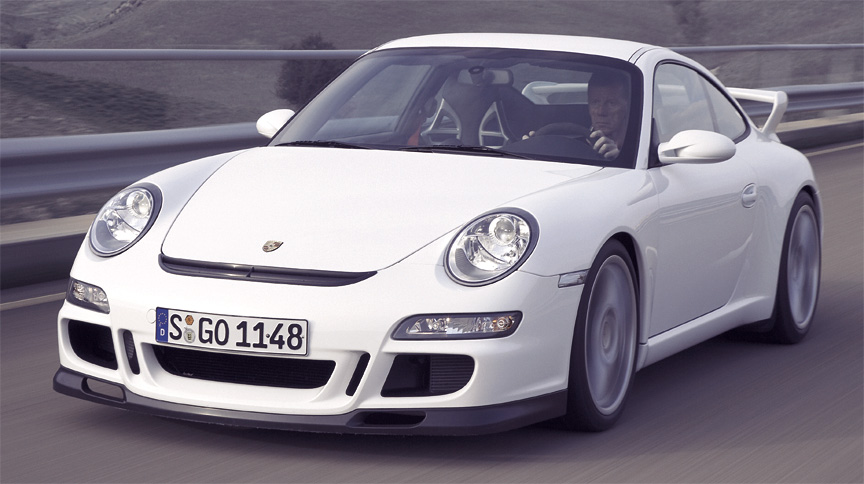
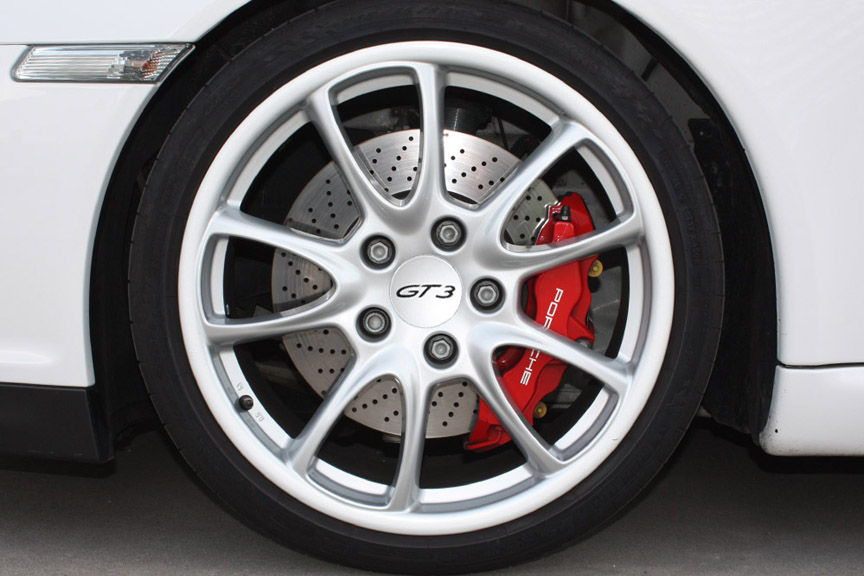
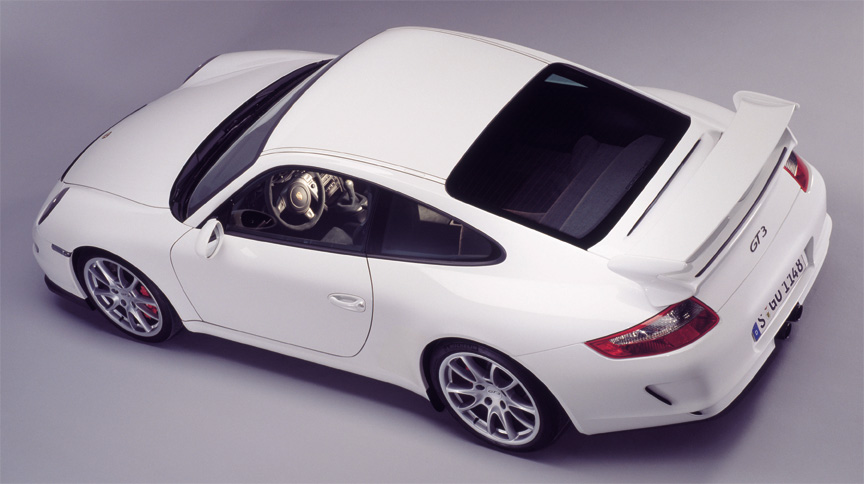
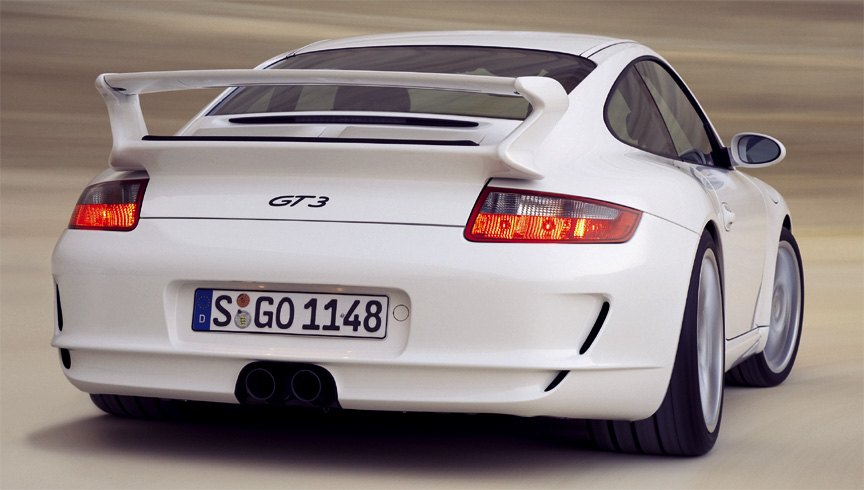
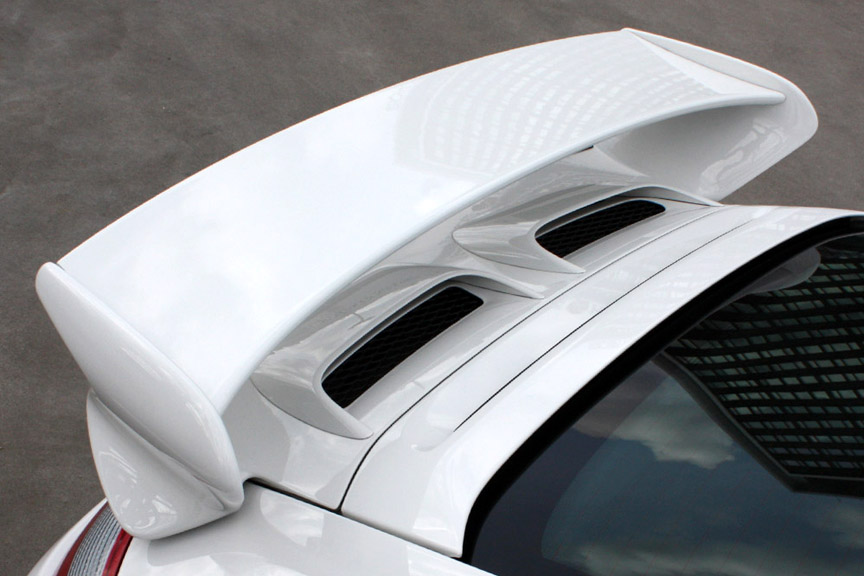
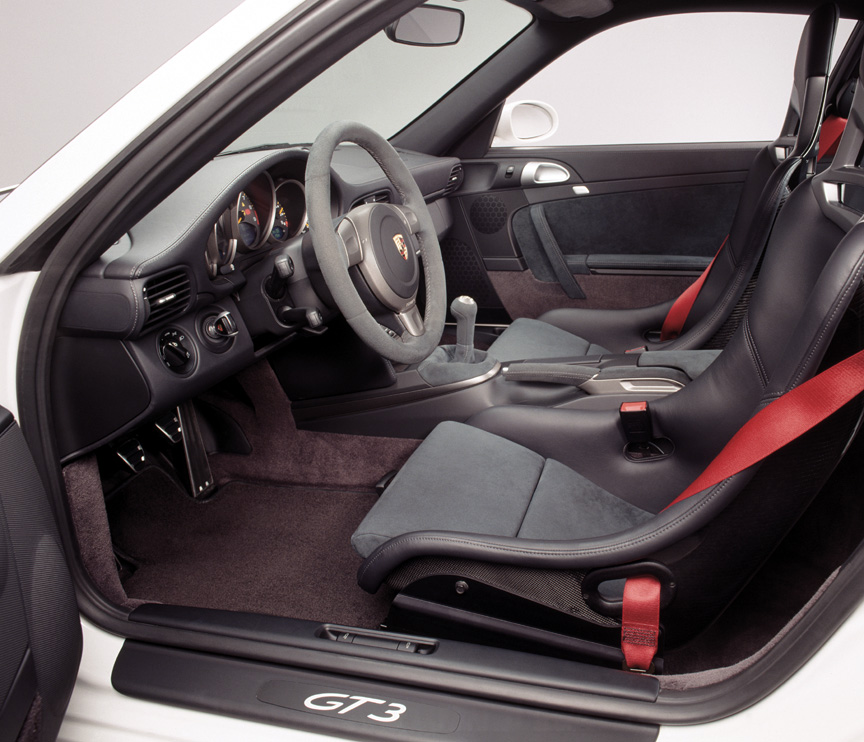
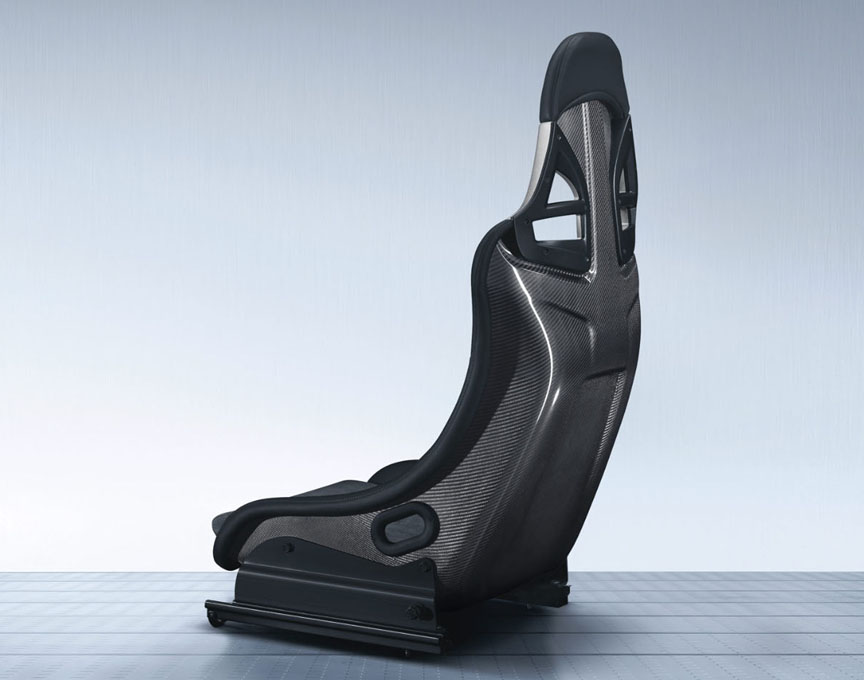
New for the GT3 was a change-up display, which lights up on the rev counter shortly before the relevant engine speed is reached.
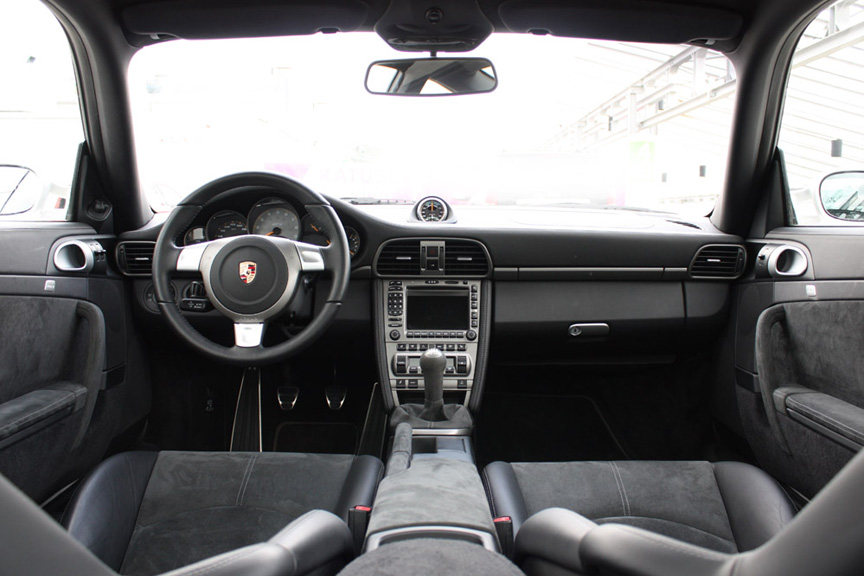
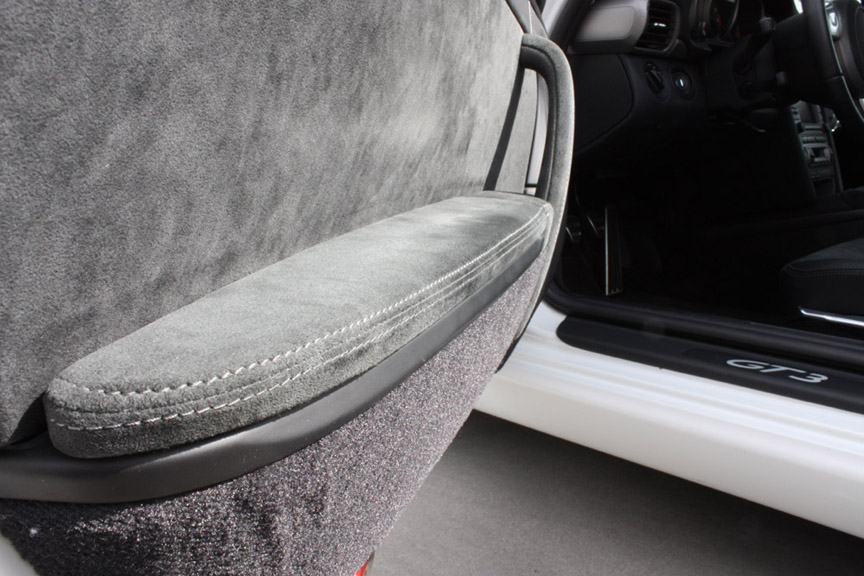
With the exception of USA, the GT3 was naturally available with the no-cost ClubSport (CS) option which included the roll cage and a few other racing items. The bucket seats had to be paid for, though. The GT3 CS was further developed into the GT3 RS.
The 997 GT3 RS 3.6 was basically an optical tuning version of the GT3 CS. As announced in May 2006, the GT3 RS was available from October in Europe and from March 2007 in North America.
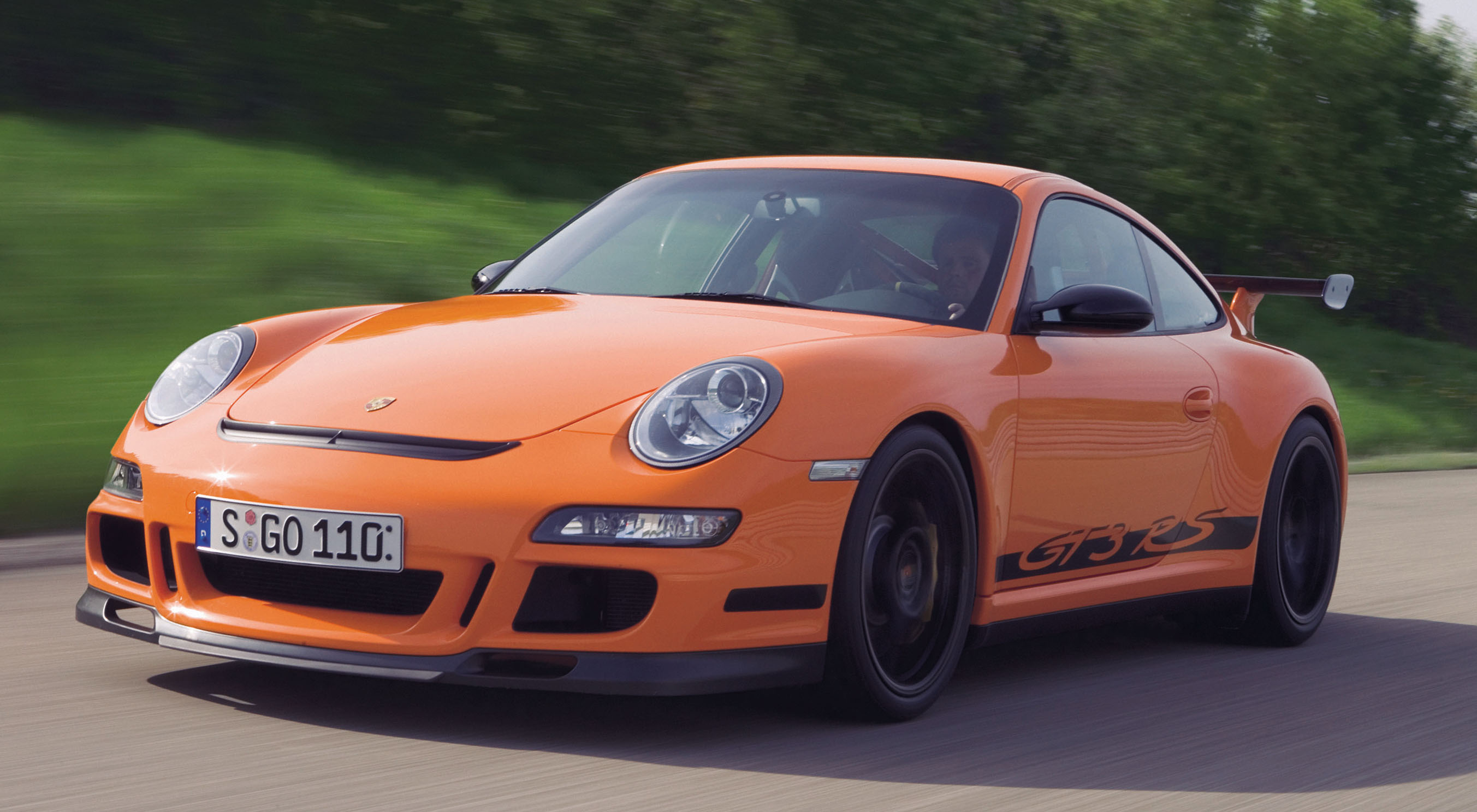

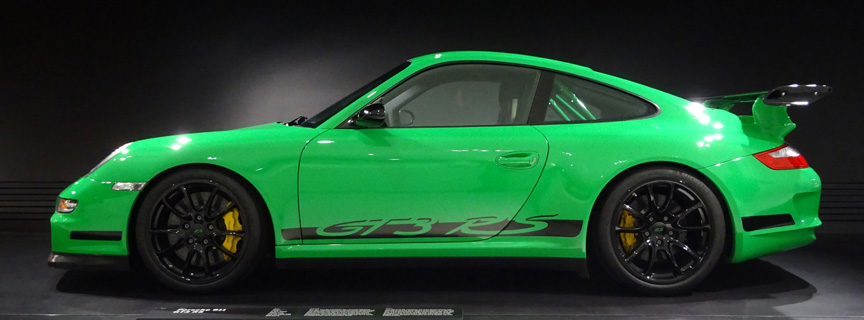
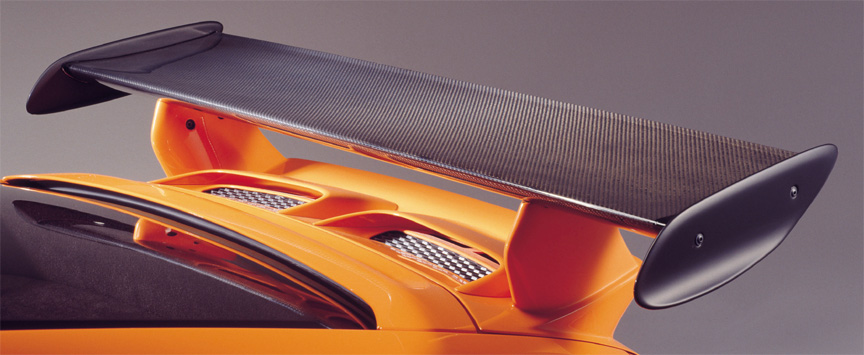
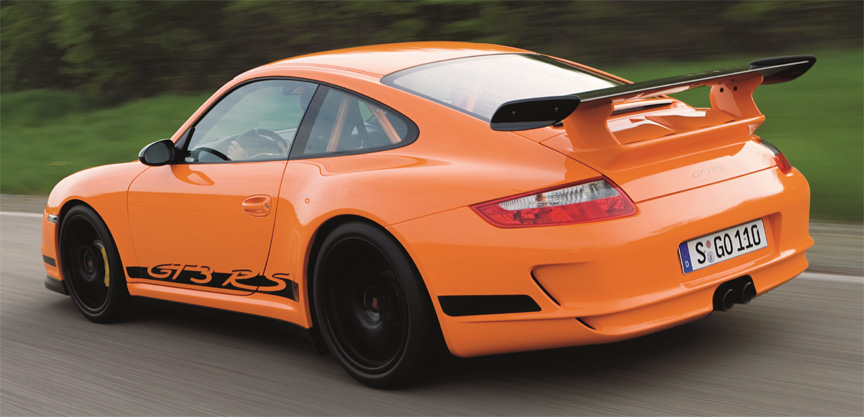
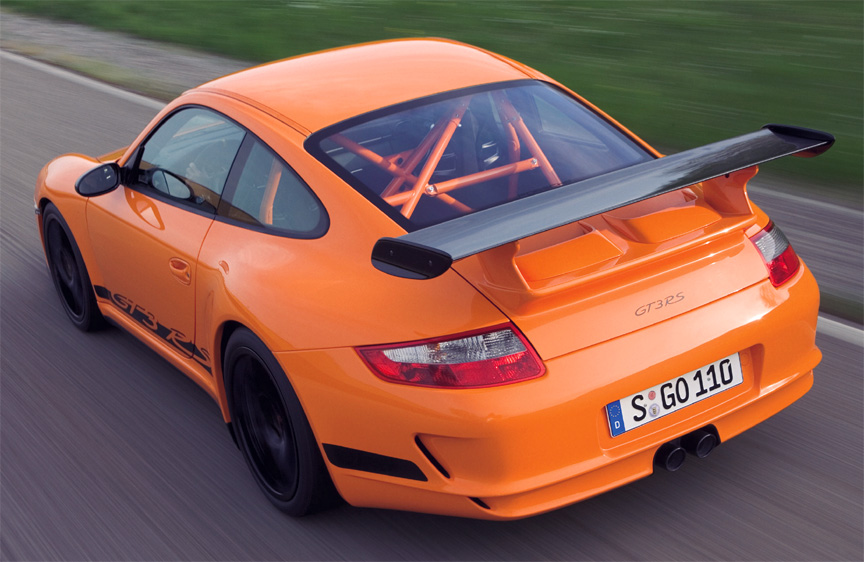
With the 44 mm wider body and with the roll cage installed, it looks that the RS cannot be lighter than the basic GT3. On the paper the RS is 20 kg/44 lb lighter. The omission of the underbody rust protection, the plastic rear window and the single-mass flywheel don’t give that much weight-saving. The roll cage adds around 30 kg/66 lb. The lap times on the Nürburgring Nordschleife prove that the basic GT3 is equally quick if not quicker.
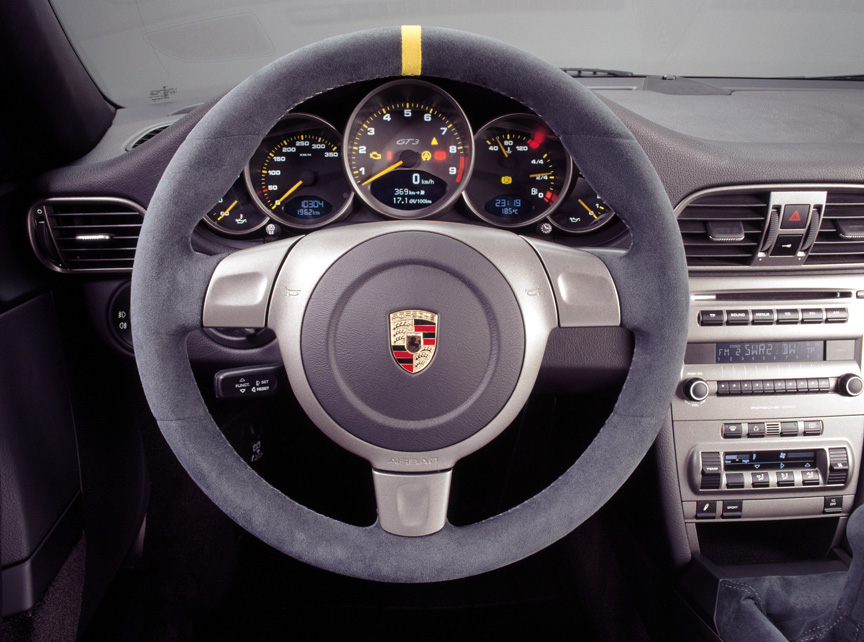
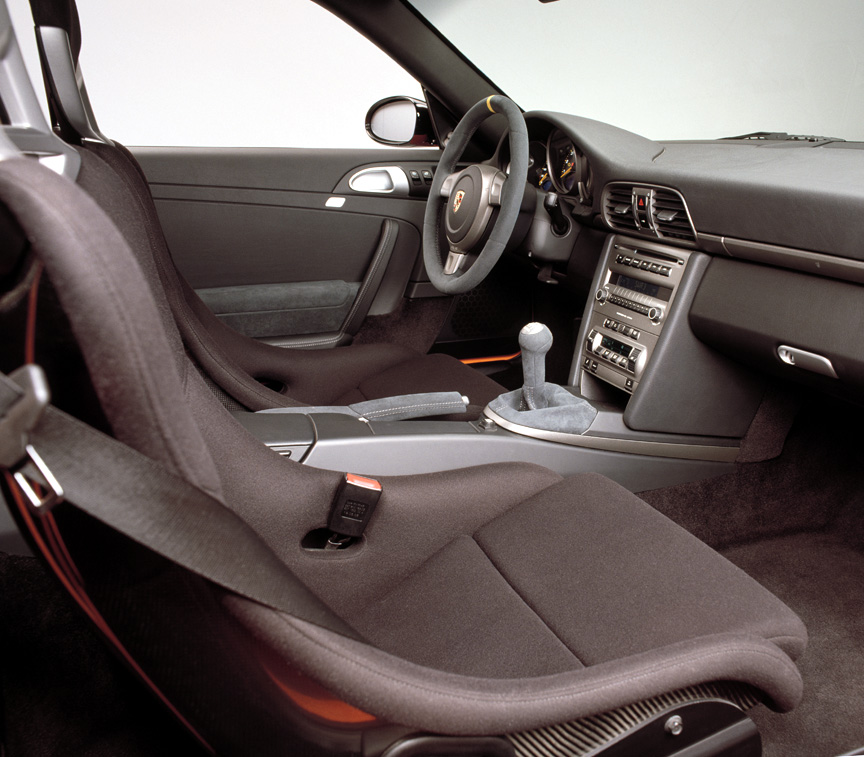
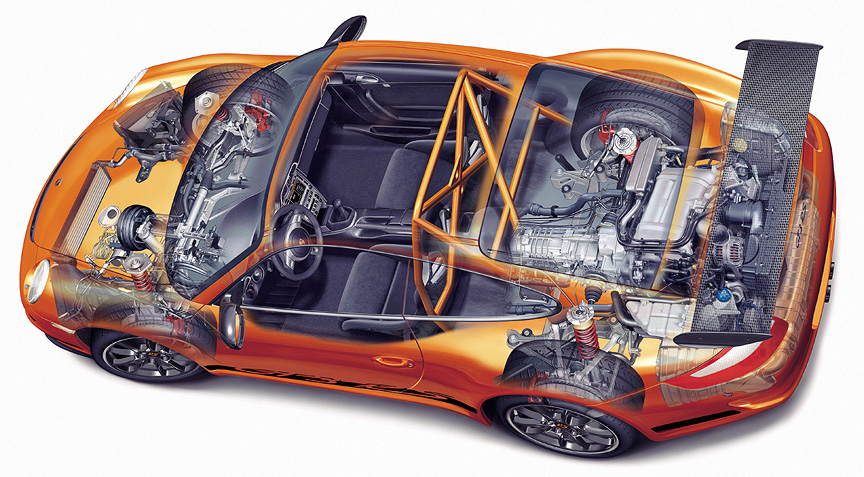
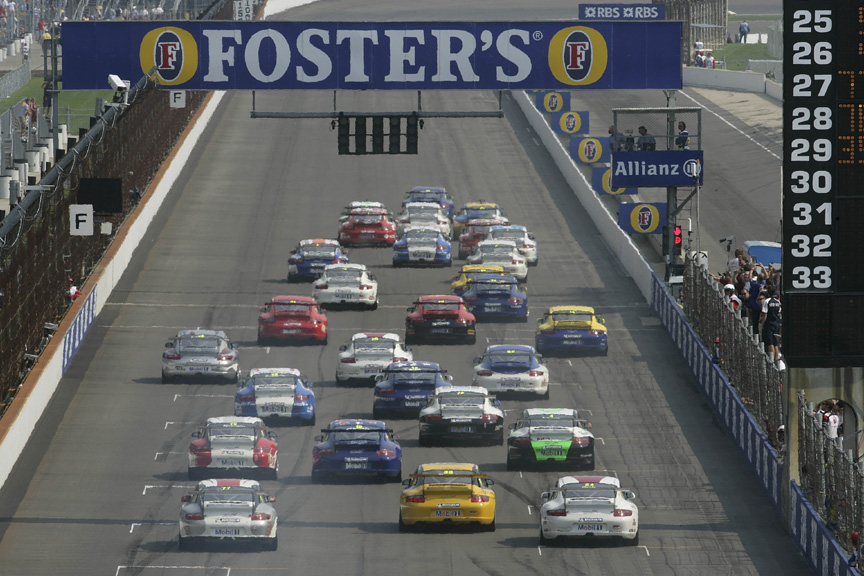
In July 2006 it was announced that from November 2006 the 997 Targa is available as a 2007 model. In addition to the roof concept adding weight, the Targa versions were made available only with the heavier wider body and the useless 4WD system. The cool Targa wasn’t a very appealing option anymore for driving enthusiasts after the addition of the “4”.
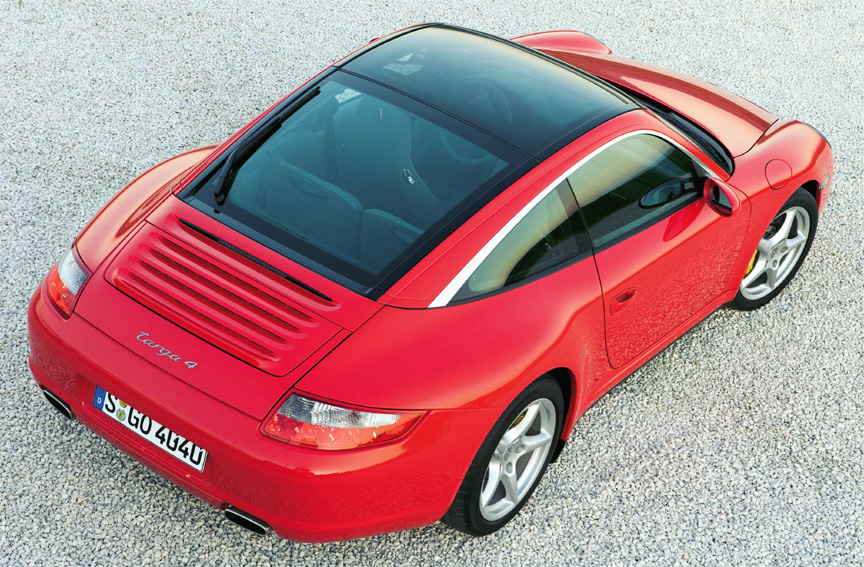
The Targa roof can be opened in 7 seconds. The roof unit is of two-ply special tinted glass which is 1.9 kg/4 lb lighter than on the 996 Targa. Wind noises are kept to a low level even at high speed by a newly developed sealing system. The semi translucent black cloth roller sunblind provides protection from excessive solar radiation.
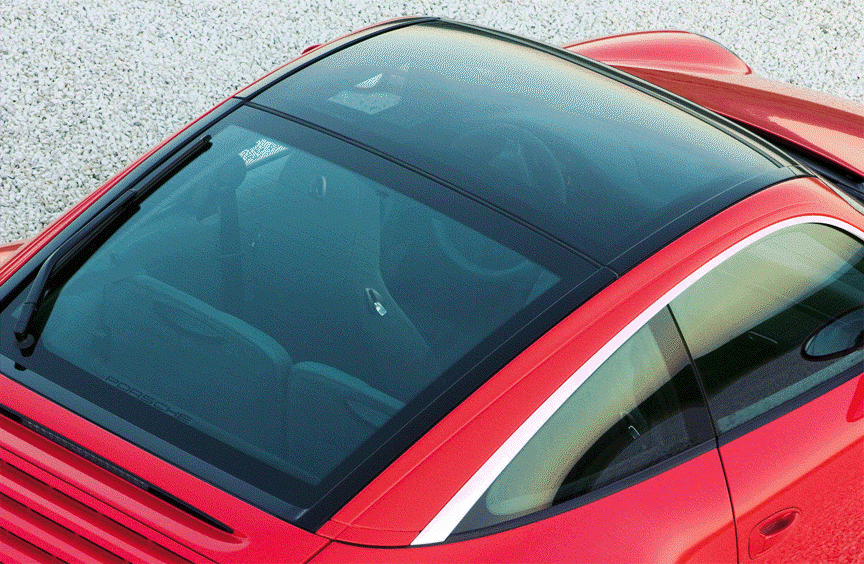
The tailgate can either be unlocked by a switch on the driver side doorsill or by the remote control button on the key fob.
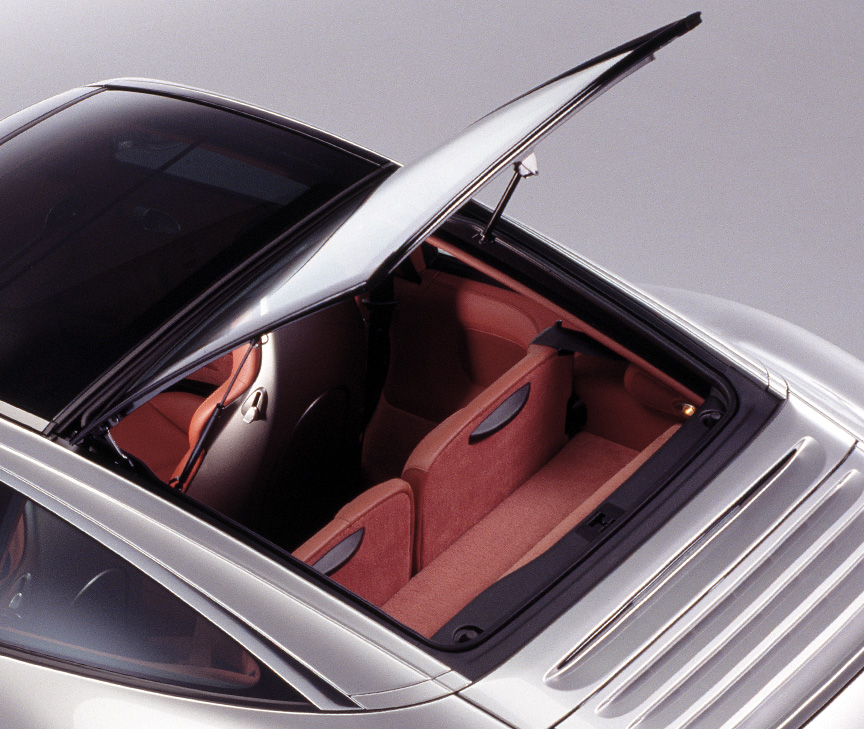
Although the first race for the 997 GT3 RSR 3.8 was the 2006 Spa 24 hours on July 29-30, the RSR was scheduled to race in the GT2 class at the 2007 long distance races. With the two 30.3 mm air restrictors the power was rated at 357 kW. The rev limitter allowed the engine to reach enormously screaming 9000 rpm. The front lid, front fenders, doors, rear wheel arch extensions, rear lid and wing were made of carbon-fibre composite material. The ACO and FIA regulations allowed a minimum weight of 1225 kg/2700 lb. For 2007 season approx. 35 units were built
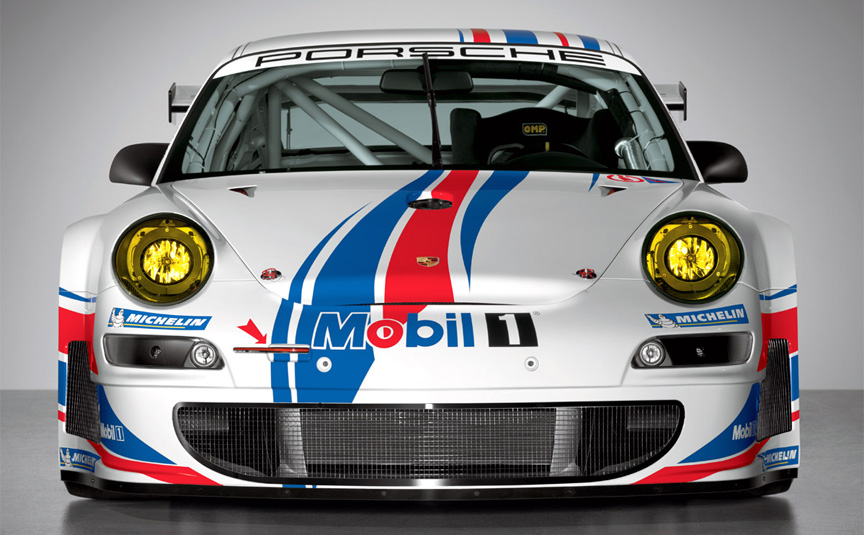
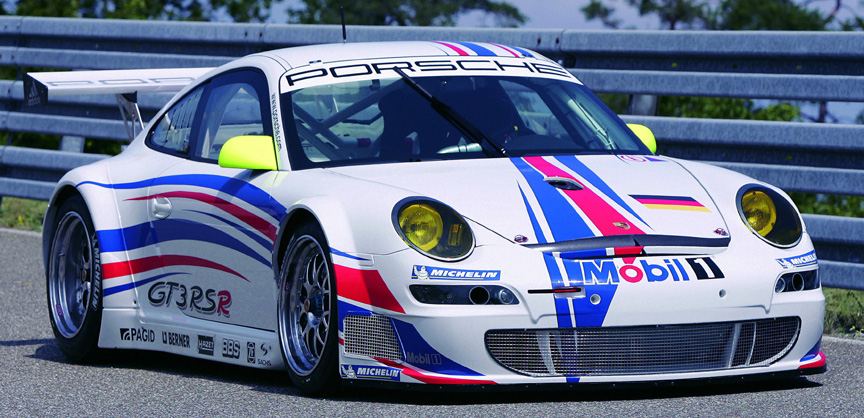

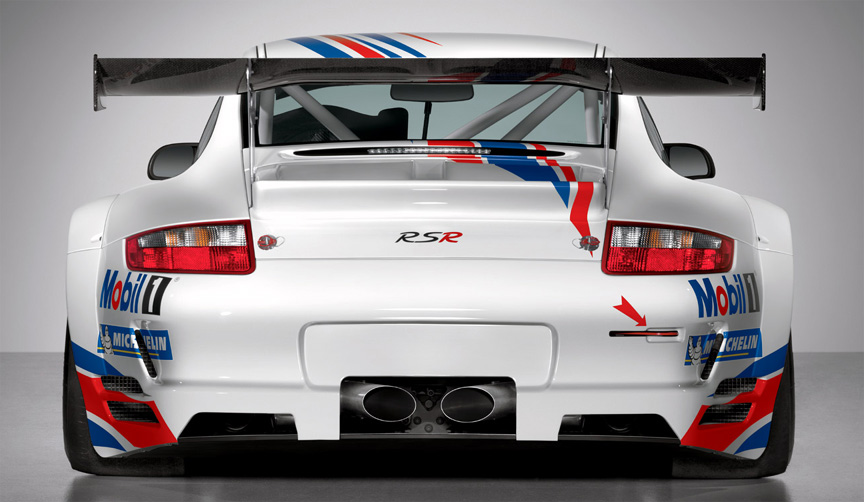
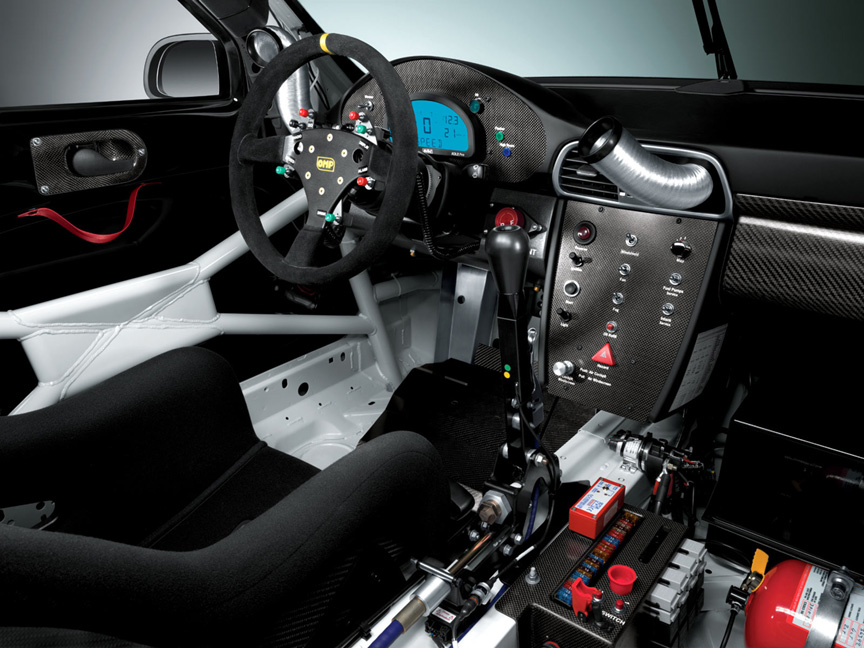

For 2007 model year, the optional X51 280 kW powerkit was launched for the Carrera S.
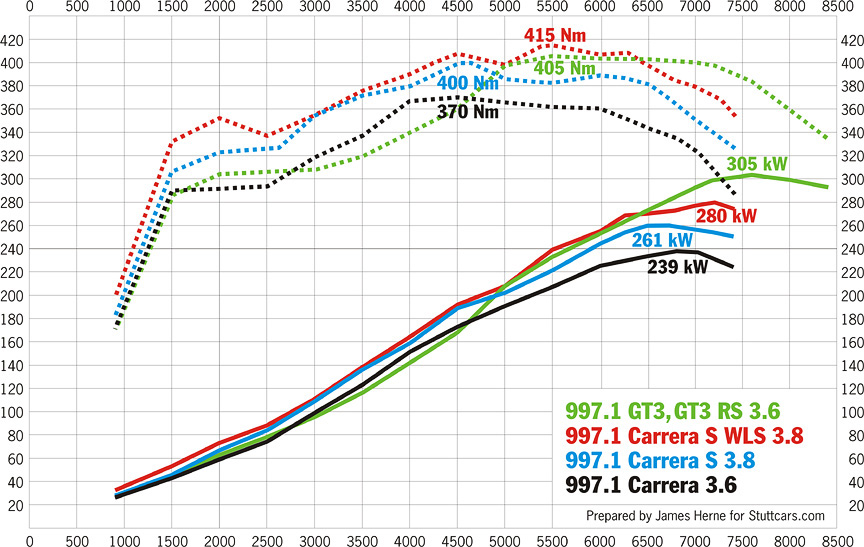
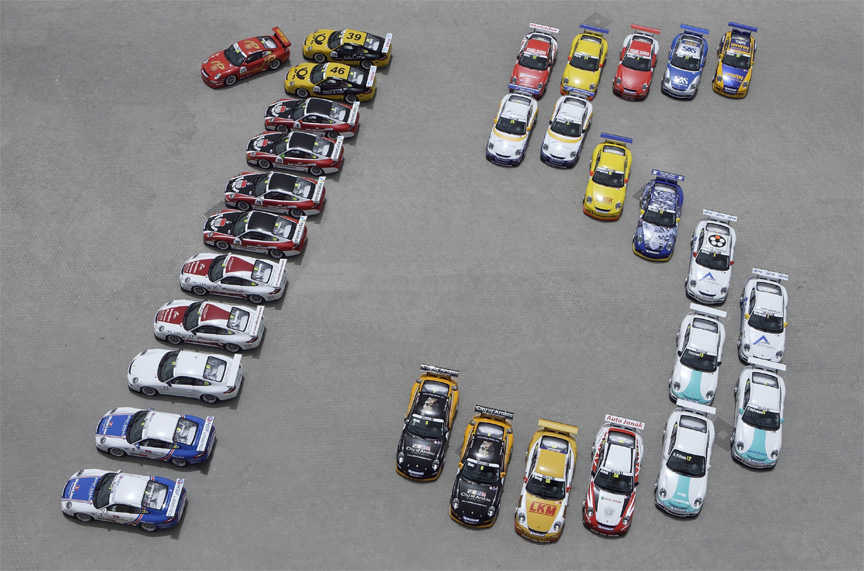
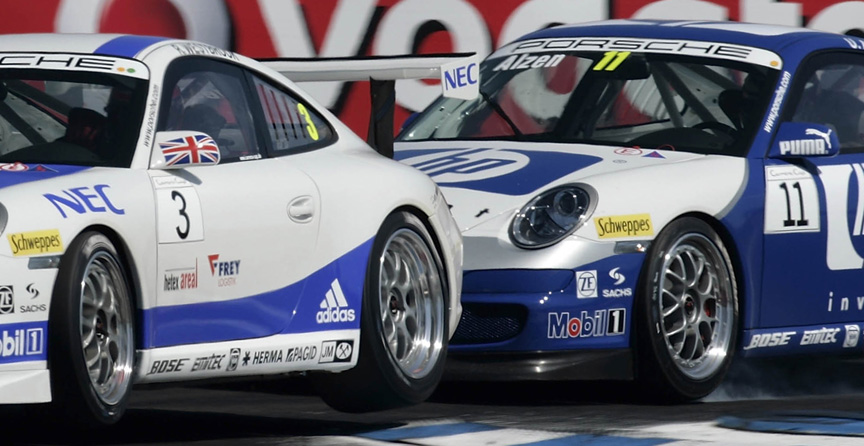
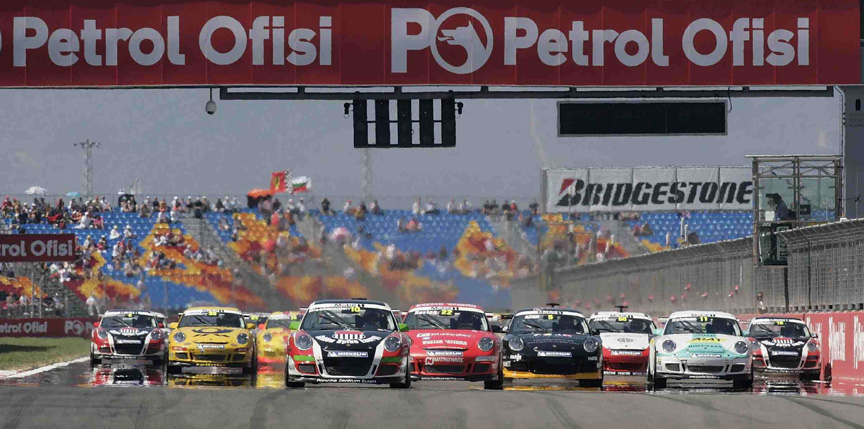
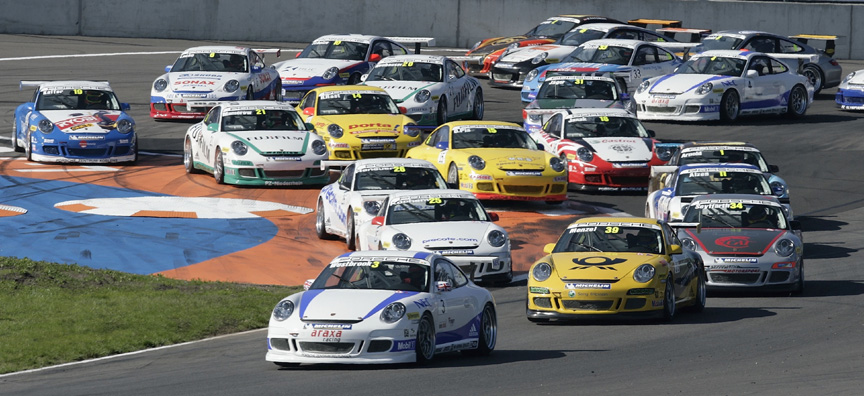
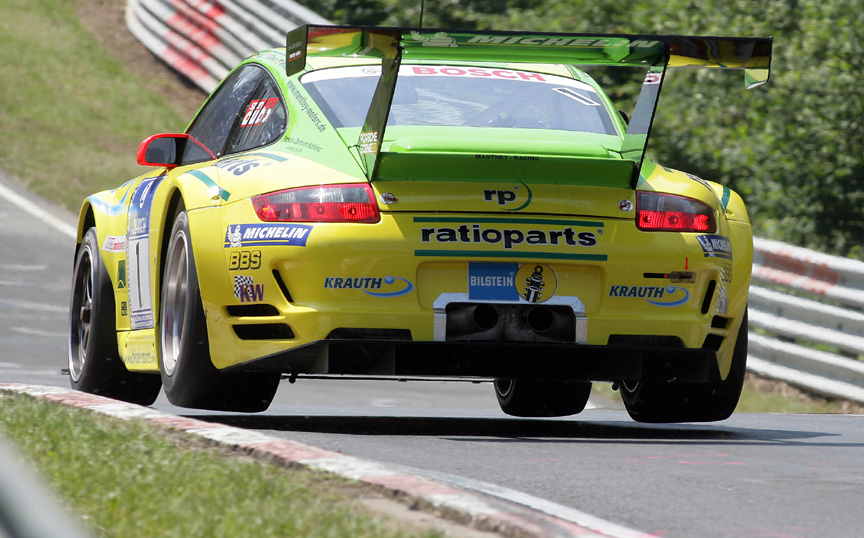
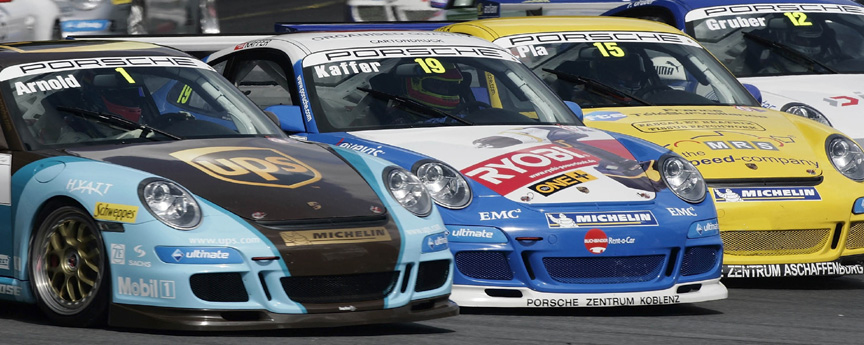
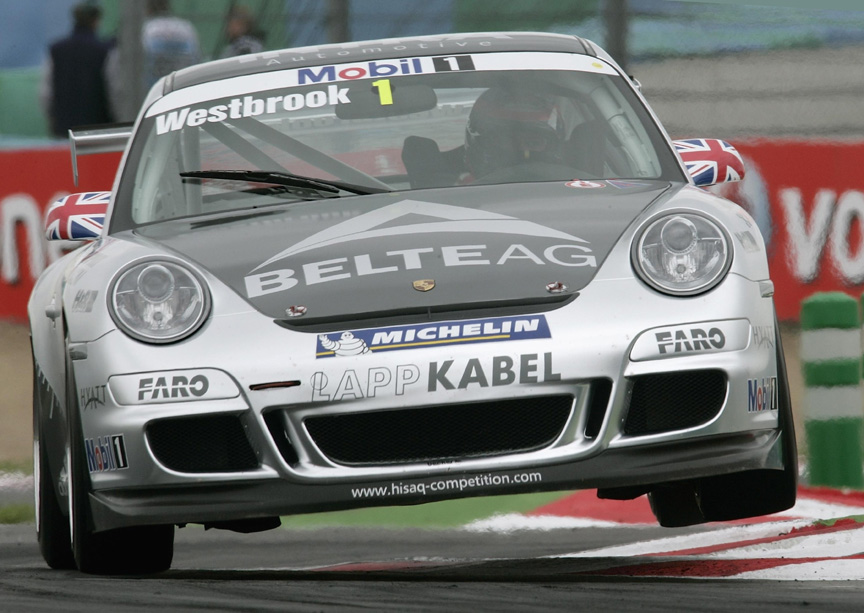
At the 2007 Le Mans 24 hour race, a 997 GT3 RSR takes the victory in its GT2 category. Why is a GT2-class Porsche called GT3 RSR?
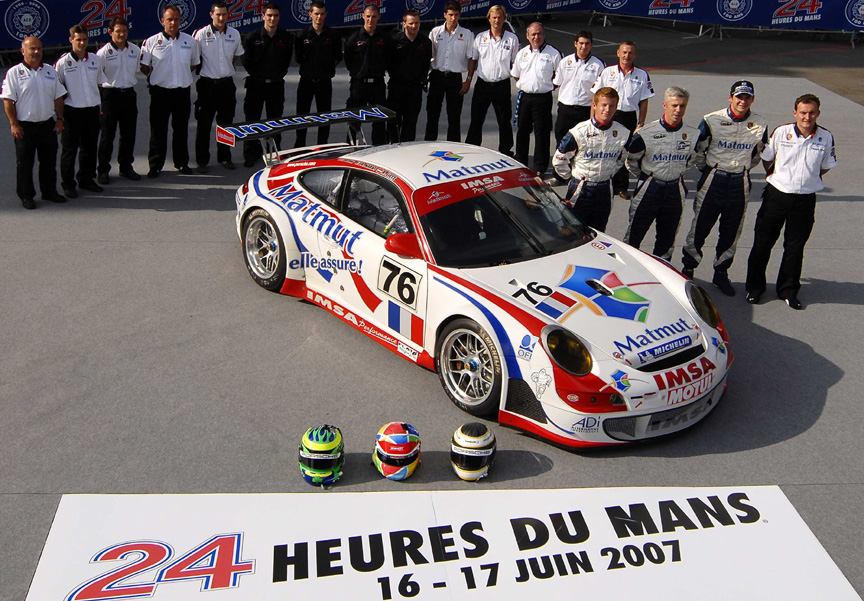
Announced in May, the 997 Turbo Cabriolet went on sale in September 2007 as a 2008 model. The already heavy 997 Turbo was made 70 kg/154 lb heavier with the Cabriolet version. Despite its weight the acceleration is mind-blowing.
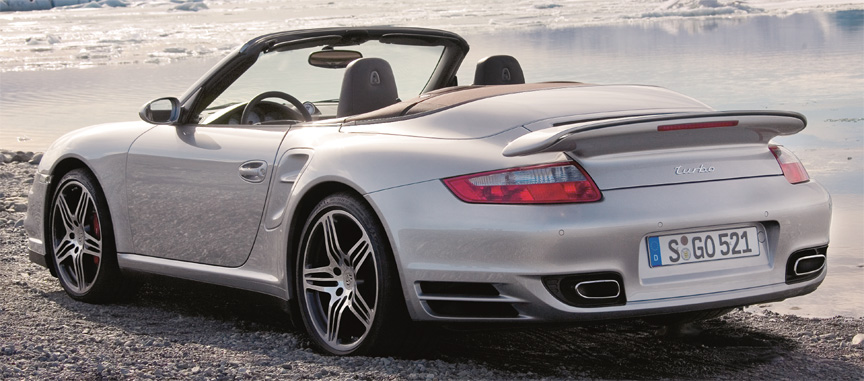
The 997 GT2 was launched as a 2008 model. Super-cool car with a wrong name – the 997 GT2 didn’t have anything to do with the GT2 racing class. To add to the confusion, Porsche’s GT2-class racer was called GT3 RSR. The real GT2 Porsche was made during the 993 generation and the 996 GT2 was already a wrongly named car. The 3.6-litre twin-turbo in the 997 GT2 produces 390 kW and its 200+ mph top speed says it all. The 911 GT2 is what the 911 Turbo initially was – a rear wheel drive 911 with turbocharged engine.
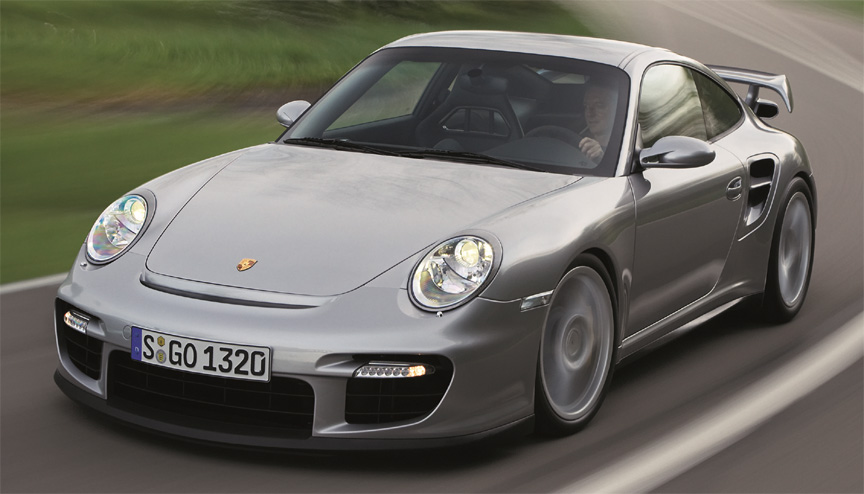
Benefiting from an innovative expansion-type intake system and VTG turbochargers operating at a pressure up to 1.4 bar, the 997 GT2 offers an extra 37 kW over the already powerful 997 Turbo 3.6 (which operates at 0.8 bar turbo boost or 1.0 bar in temporary overboost mode). The GT2 uses turbochargers featuring an even larger compressor wheel compared to the 997 Turbo 3.6. The principle applied in expansion-type intake system is to use the oscillating intake air during the cooler expansion phase to prepare the fuel/air mixture, keeping the temperature of the fuel/air mixture lower than in the engine of the 997 Turbo 3.6. Like the GT3 and the Turbo, GT2 comes with dry sump lubrication featuring a separate oil tank. A total of 9 oil pumps ensure smooth and reliable circulation of lubricant even under the long-lasting horizontal forces typically encountered on the race track. A total of 11 litres of oil circulates within the system. With its 1440 kg/3175 lb weight the GT2 is 105 kg/231 lb lighter than the Turbo.
The new Launch Assistant enabled the driver to accelerate with optimum power and performance from a standstill. All the driver had to do is to select the first gear and hold the clutch and gas pedals on the floor. The Motronic engine control unit then immediately opened the throttle butterflies in full and kept the turbochargers at a pressure of 0.9 bar. At the same time the ignition control system set engine speed to 5000 rpm, so that now all the driver had to do was to take his foot off the clutch as quickly as possible. In this process PSM Porsche Stability Management prevented the car from twitching, with the full power of the engine transmitted to the road.
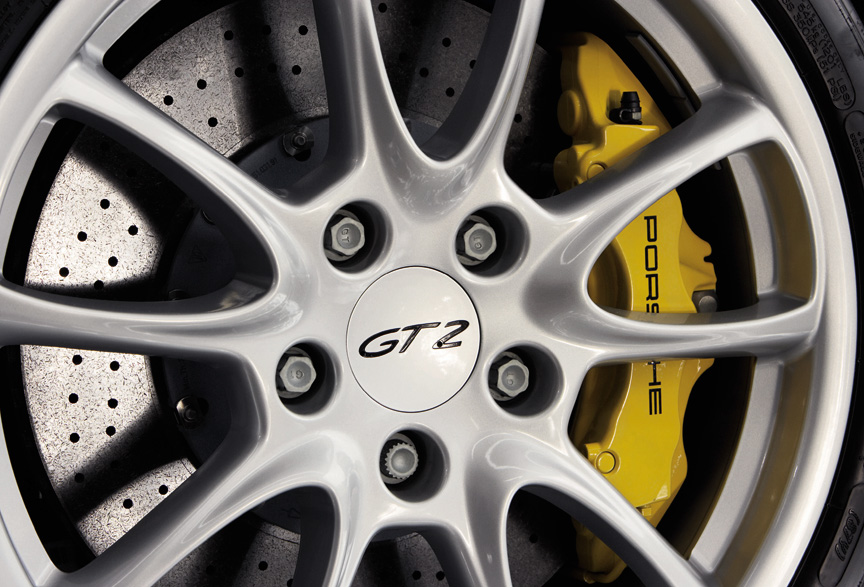
The PSM in the GT2 has two stages: you can switch the stability control off and leave the traction control on, or ultimately switch off even the TC. The 997 GT2 was the first Porsche homologated for road use to be fitted as standard with an exhaust system featuring a titanium rear-end silencer and titanium tailpipes. With its only 9 kg/20 lb weight it is approximately half the weight of the similar steel unit.
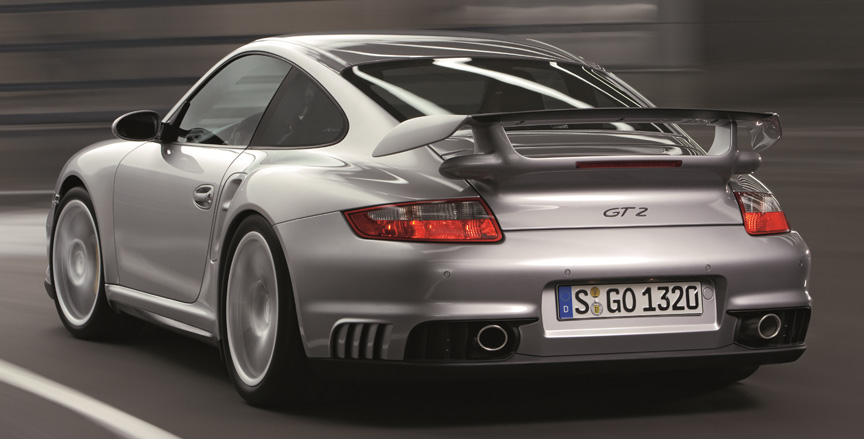
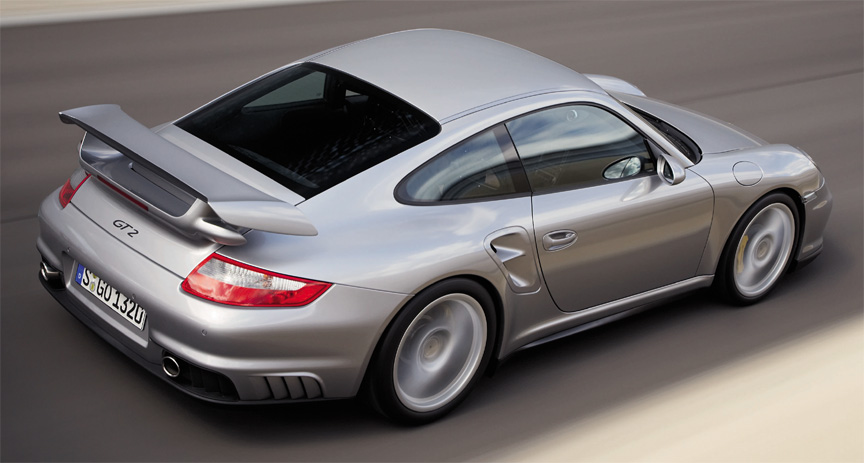
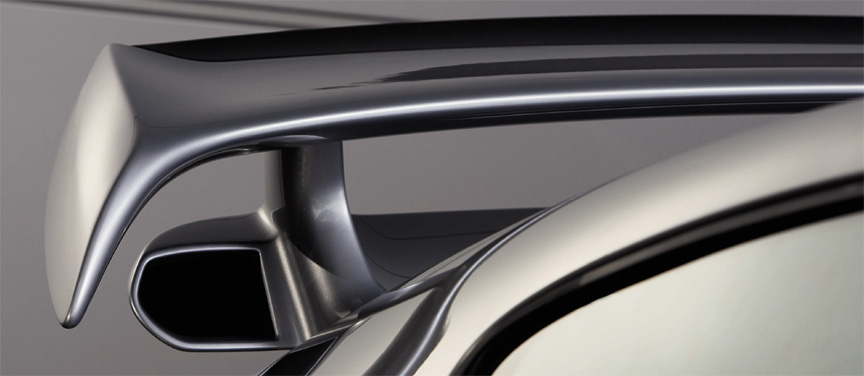
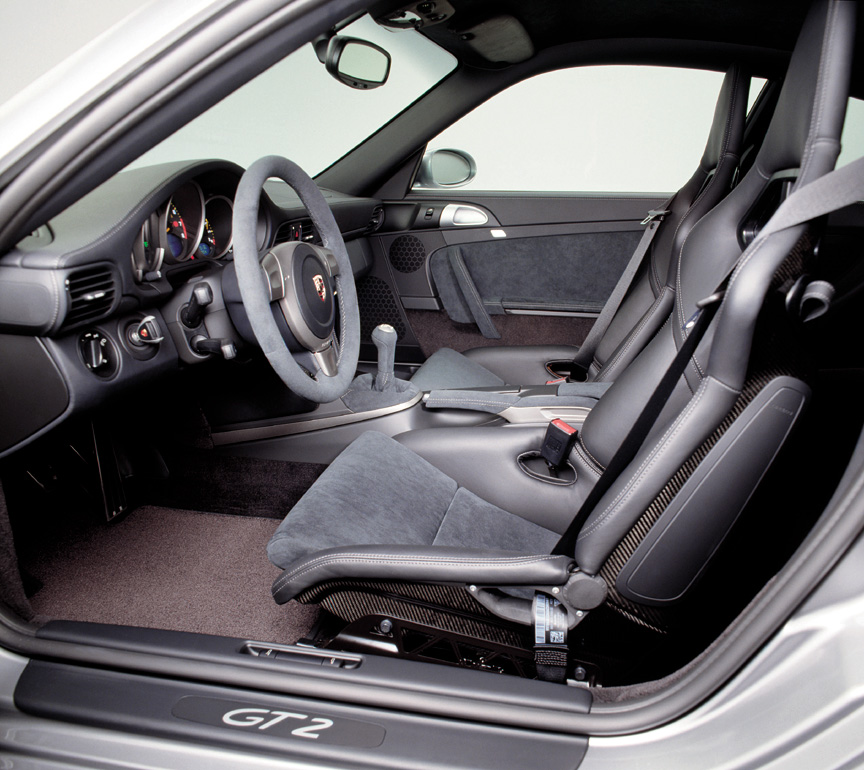
Like the GT3, the GT2 also came with the gear upshift indicator integrated in the rev counter. In consideration of the driver’s response time, the indicator comes on somewhat earlier in the lower gears than in the higher transmission ratios. The GT2 naturally was available with the ClubSport package at no extra cost. The CS pack comprised a rear rollover cage, 6-point seat belt for the driver, a fire extinguisher as well as a preparation kit for the main battery switch. On cars featuring the ClubSport package the bucket seats came with a flame-resistant cloth replacing the leather and alcantara. According to Porsche, 1155 997 GT2 were made including pre-series cars (and excluding 997.2 GT2 RS).
A very mild aerokit was introduced for the Turbo in December 2007. It included a front spoiler lip and a new engine cover with fixed aerofoil. Compared to the standard 911 Turbo, the side skirts and the rear skirt were painted in body color.
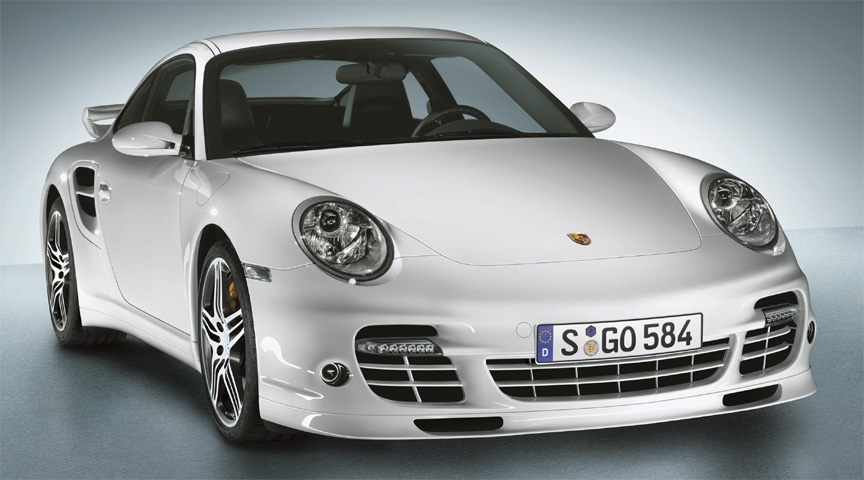
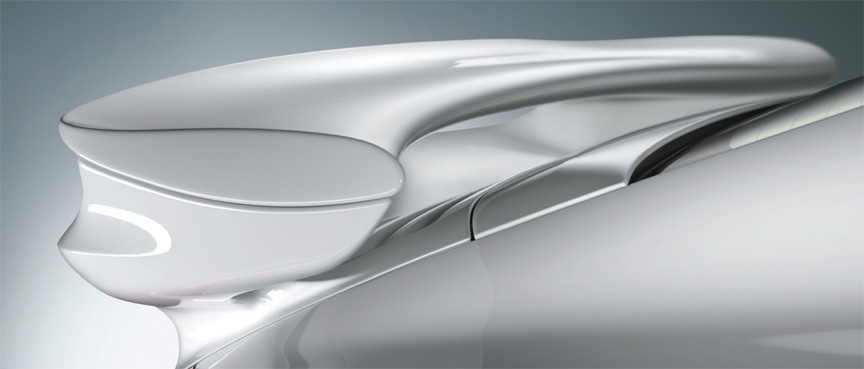
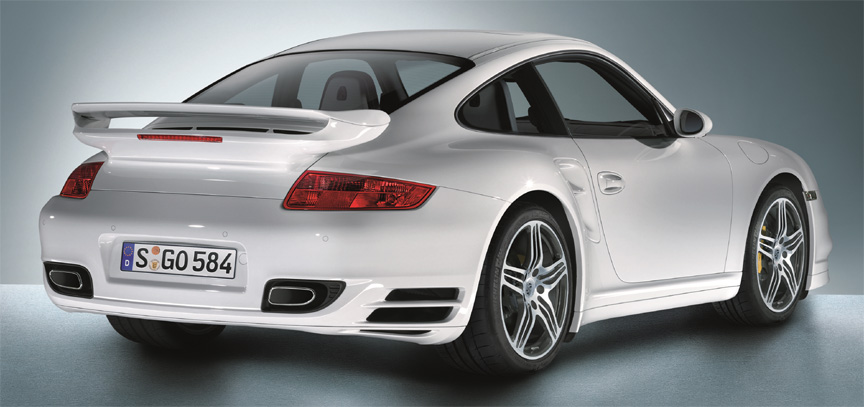
With the new regulations, the power of the 2008 GT3 RSR had to be decreased by 15 kW, to 342 kW. The gearbox was totally new and much of its know-how came from the RS Spyder.
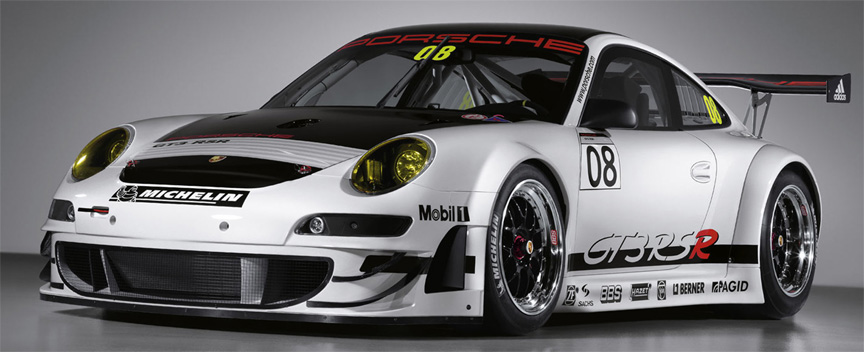
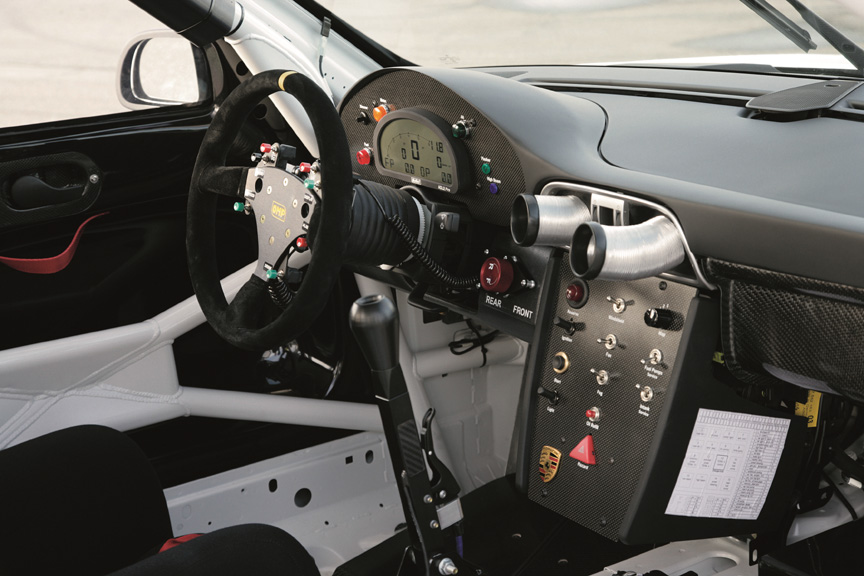
In February 2008 Porsche Motorsport announced a new model, called the 911 GT3 Cup S and made for the championships which run in accordance with FIA GT3 regulations. The 3.6-litre boxer is similar to the power unit in the GT3 Cup. The power increase to 324 kW resulted from optimised engine electronics and a modified exhaust system. The clutch disc is a 5.5″ three-plate carbon-fibre unit.
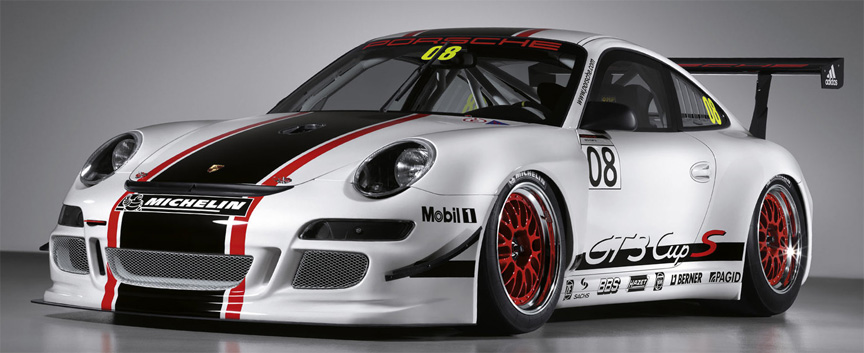
In contrast to the GT3 Cup, the body of the Cup S is not based on the GT3 but on the GT3 RS. In the GT3 Cup S body, that is also wider at the front, larger wheels could be mounted. At the front, the rims measure 10.5″ in width with 12″ wheels fitted at the rear. The front section and flares are significantly different to the GT3 Cup components. An adjustable splitter generates more downforce at the front axle.
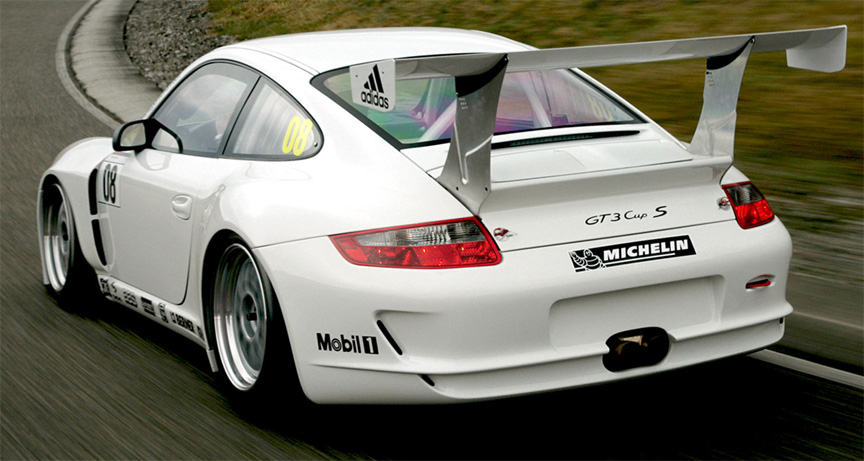
The wider and higher rear wing provides more downforce at the rear axle. Several suspension components for the GT3 Cup S have been taken from the more powerful GT3 RSR. At the rear the diameter of the brake discs has grown by 5 mm to 355 mm (front discs still 380 mm). In addition to complete cars, Porsche Motorsport offered a kit to upgrade the 2007 GT3 Cup models to the GT3 Cup S specs.
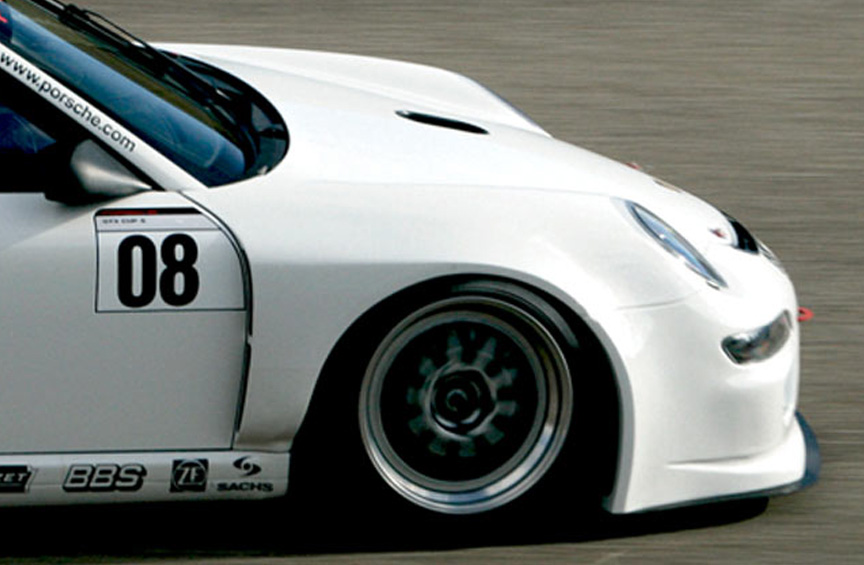
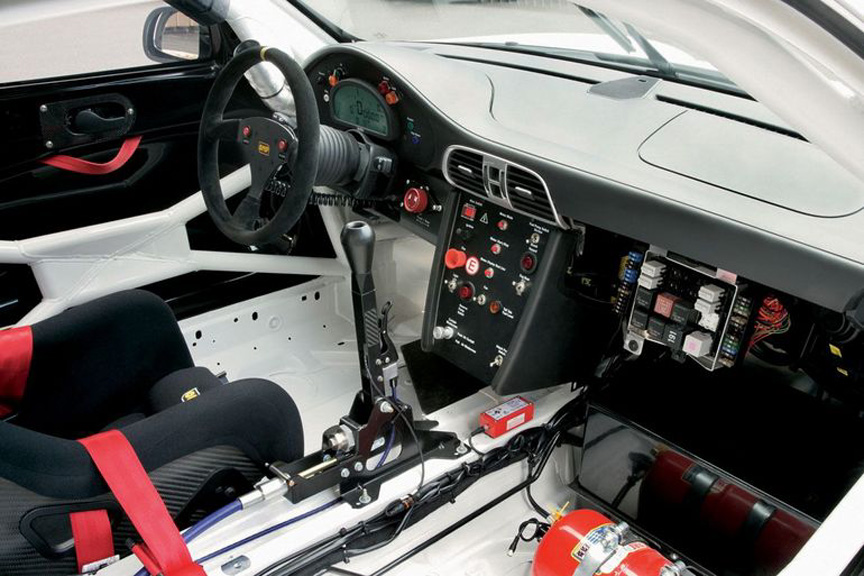
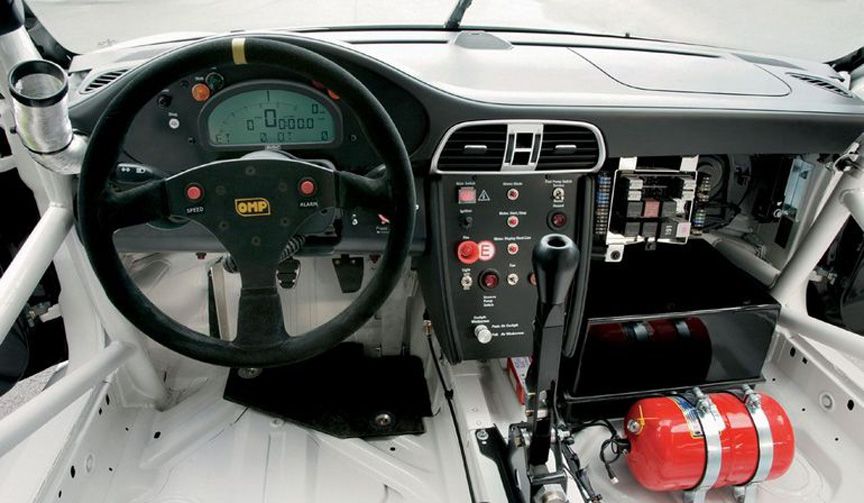
For the 2008 season the GT3 Cup 3.6 got additional 15 kW (now 309 kW). The 2005-2007 GT3 Cup and the 2008 GT3 Cup have their visual difference in the rear bumper – the Cup car now has the same design as the street GT3.
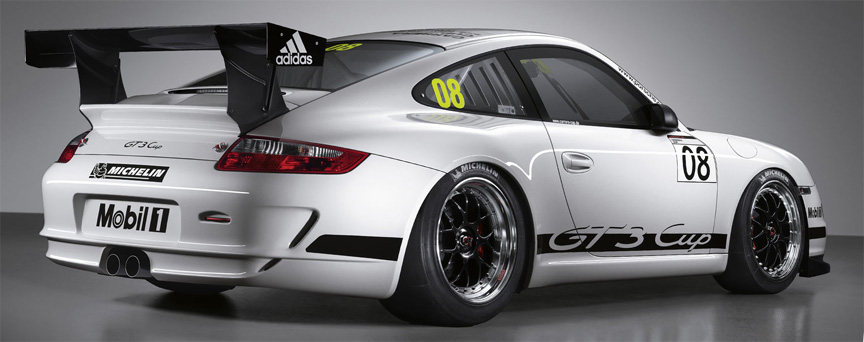
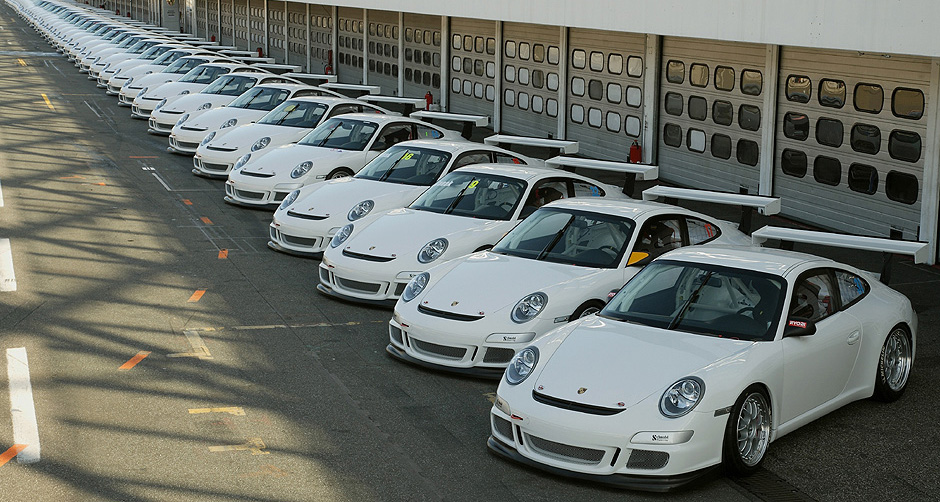
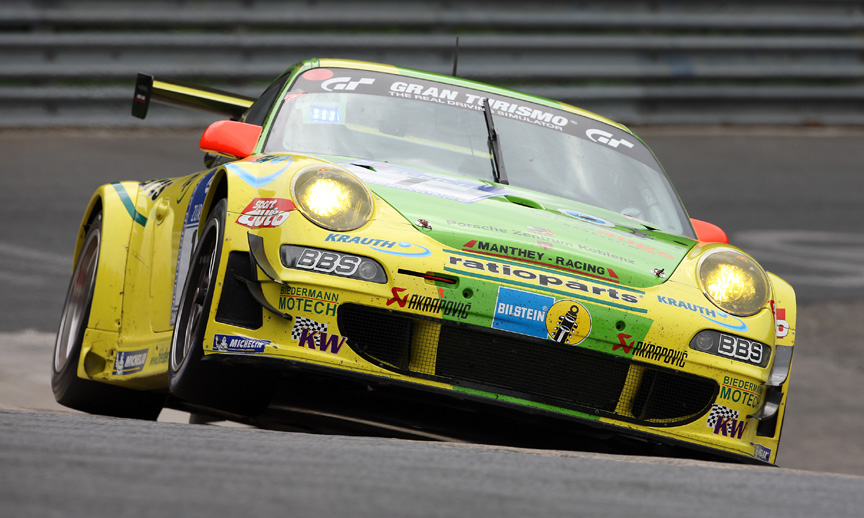
At the 2008 Le Mans 24 hour event works driver Patrick Long wrote history when he turned a qualifying lap in 3:58 with the 997 GT3 RSR. The 4-minute mark was regarded as the barrier to break for the GT2 class cars.
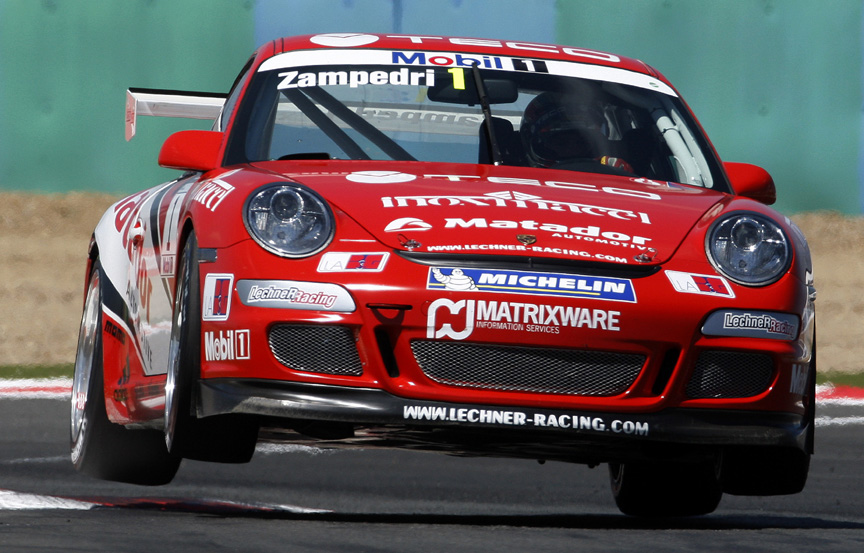
The facelifted 997 Carrera (997.2) was introduced in the summer of 2008 as a 2009 model. At first rear-wheel drive coupes and cabrios were launched. The front spoiler, wheels, rear bumper and rear lamps were different.
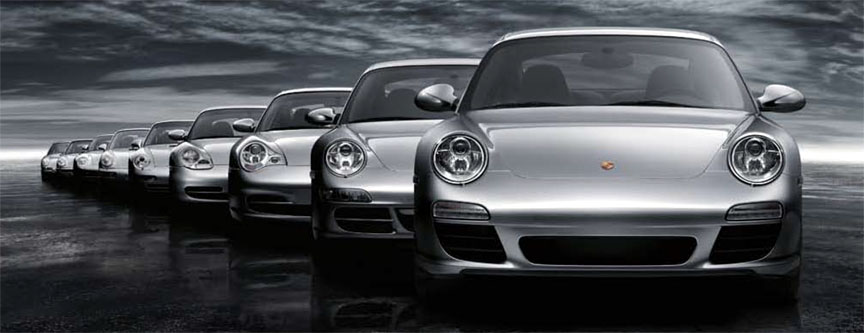
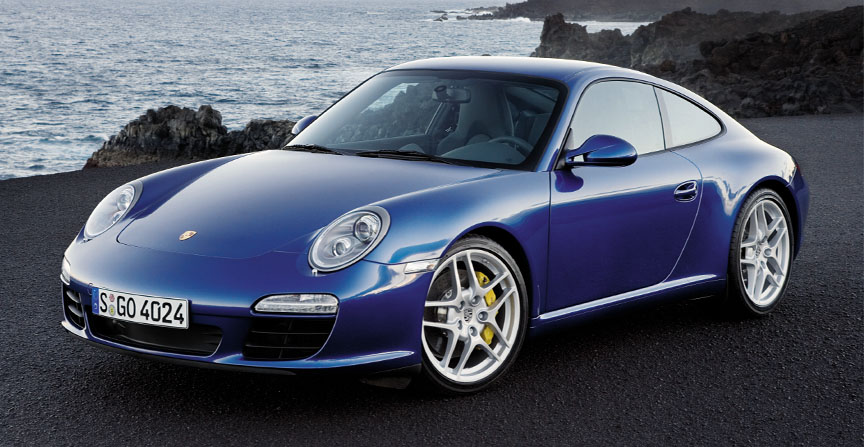
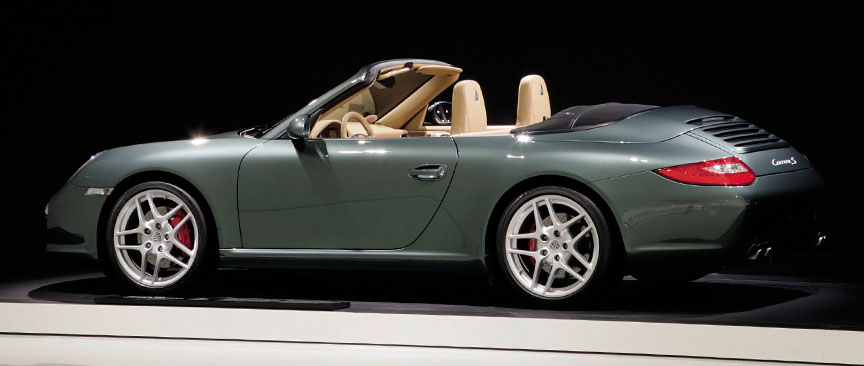
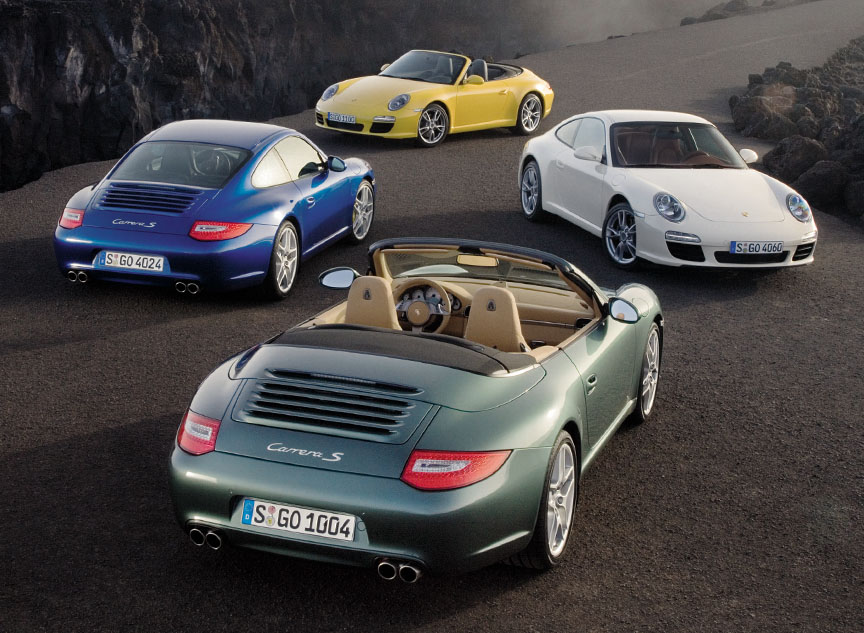
Completely new engines were developed for 997.2 Carreras. A 2-piece crankcase with integrated crankshaft bearings is perhaps the most significant change in technology, replacing the former 4-piece block with its separate crankshaft bearing housing. The new engines came out 6 kg/13 lb lighter. The engines now had direct fuel injection (DFI). The 997.1 Carrera engines were very fragile and when the 997.2 Carrera engines were launched, the press release said “Porsche’s engineers have enhanced the thermal and mechanical stability of the engine” and “the cylinder liners so far freely exposed around the cylinder gaskets are now connected with the housing by a top plate comprising the coolant sleeves. In particular, this helps to give the cylinders even greater stability in their shape and design, always remaining perfectly round”.
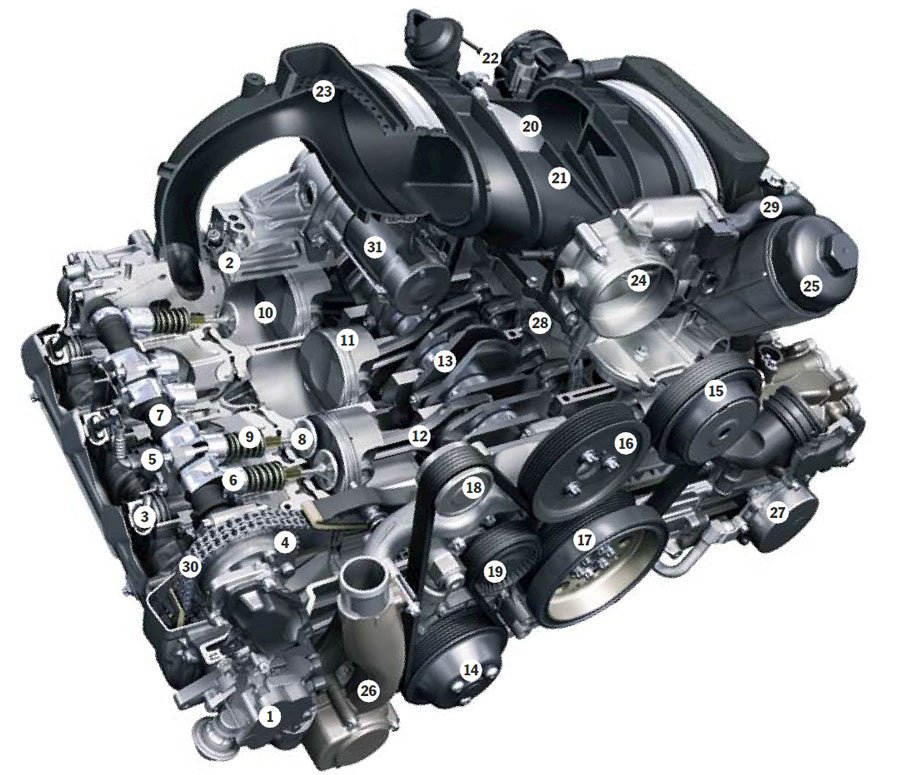
The advertised service interval of 20.000 miles/30.000 km is not advisable. The cost of oil change is marginal and it is advised to do it every 10.000 miles/15.000 km and at least after every 2 years (oil’s lubrication properties deteriorate over time). Still, these engines did not offer the level of durability known from the GT3, Turbo and GT2. They were again – like with the 996/997.1 Carrera – enlargened versions of the wet sump Boxster engines. As the engine in the Boxster is positioned other way around, there’s no space for the external oil tank in the Boxster. This means Boxster cannot have a dry sump engine. That’s too bad, but even worse that the Boxster-design wet sump engine (with enlargened capacity) is installed again in the 911 Carrera. The engine displacements stayed the same at 3.6 and 3.8 litres. Power is up, 3.6-litre now with 254 kW and 3.8 with 283 kW. For comparison 997.1 Carrera S WLS was 280 kW.
In addition to the new engine, the automatic gearbox was new – a 7-speed PDK (Porsche DoppelKupplung, double clutch) instead of the 5-speed Tiptronic. Porsche tested the PDK gearbox already in the 1980s on the 944 Turbo, but it took 25 years before it was put into production for the 997.2. 7th speed is for economy, top speed is reached with 6th.
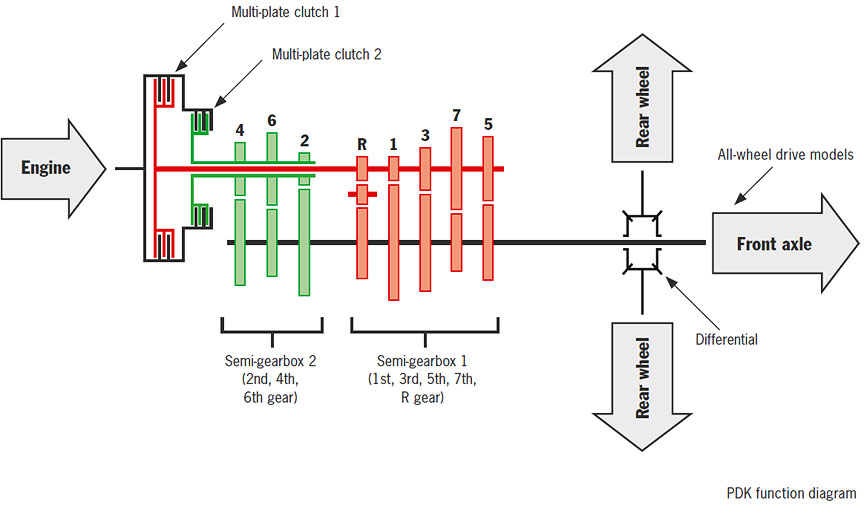
While the Tiptronic was an automatic gearbox with torque converter, the PDK is essentially two mechanical gearboxes in single casing – one of the gearboxes having speeds 1, 3, 5, 7 plus reverse and the other having 2, 4 and 6. The gearchange now is the change of the clutch and is therefore very fast. For example if the car is running on 3rd gear, 4th gear is parallely engaged on the other half of the gearbox and the gearchange is achieved with the clutch change. It is ultra quick until one gear is changed at the time. If you want to change 2 gears down at the time, for example from 5th to 3rd, then it takes time as both gears are in the same half of the PDK gearbox.
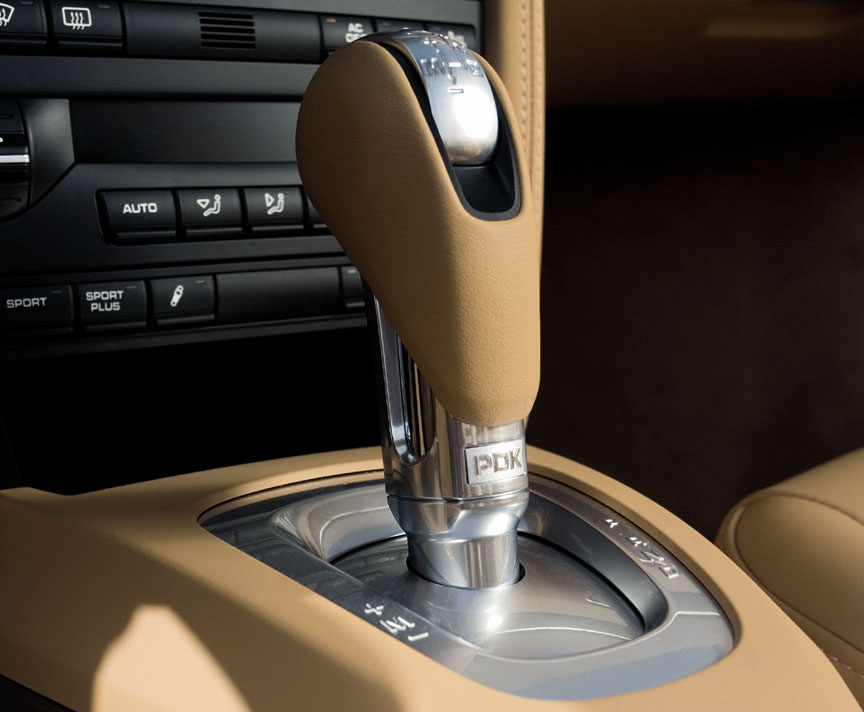
There are no benefits with the PDK in the city traffic compared to the Tiptronic, the latter might even be smoother. The problem is that Porsche had to lower the CO2 emissions, which meant the control over the engine speed (=CO2 emissions) had to be taken away from the driver. As the Tiptronic is lousy in sporty driving situations, there was no chance to push everybody to buy the future 7- or 8-speed Tiptronic. It had to be a an automatic that is better on the race track than the torque converter Tiptronic. The better automatic for a sporty driver is the double-clutch gearbox.
The problem with the CO2-optimized PDK software is that in normal mode the car is using very high gear and ultra-low rpm in the city driving and this makes the car rather lazy. When you want to accelerate quickly, it has to change 2 gears down and that takes as long as with the Tiptronic. Now, when you keep the Sport-mode on, the car uses too high rpm and the noise makes you not to want to drive all the time in Sport-mode in the city. So, you either have 1400 rpm or 2800 rpm, but you would ideally want to drive between 2000 and 2500 rpm to have good torque available anytime without the rattle of the Sport-mode. Although the PDK is 5% more effective in terms of CO2 emissions on the paper, in reality, if you drive it with the same rpm as you would drive a manual gearbox car, the benefit is not there. From the good side the PDK is 10 kg/22 lb lighter than the Tiptronic was. If you are a city driver and like automatic gearboxes, you cannot benefit from the PDK over the Tiptronic. On the race track, in the Sport Plus mode the PDK is perfect while Tiptronic is quite awful in any mode on the race track. With the manual gearbox you are good everywhere, including the feeling being part of the car and aswell as regarding the residual value of your car.
To push the sales of the PDK gearbox, a new method for presenting the acceleration figures was implemented. While earlier the acceleration was measured from the moment the “green light came on”, from the PDK era the acceleration numbers presented are counted from the moment the car already starts to move. It takes more time to get the PDK car launched than with a manual car. On the paper the PDK-equipped cars seem to be winning the acceleration from the traffic lights, but it is the manual gearbox car that wins the unanticipated sprint.
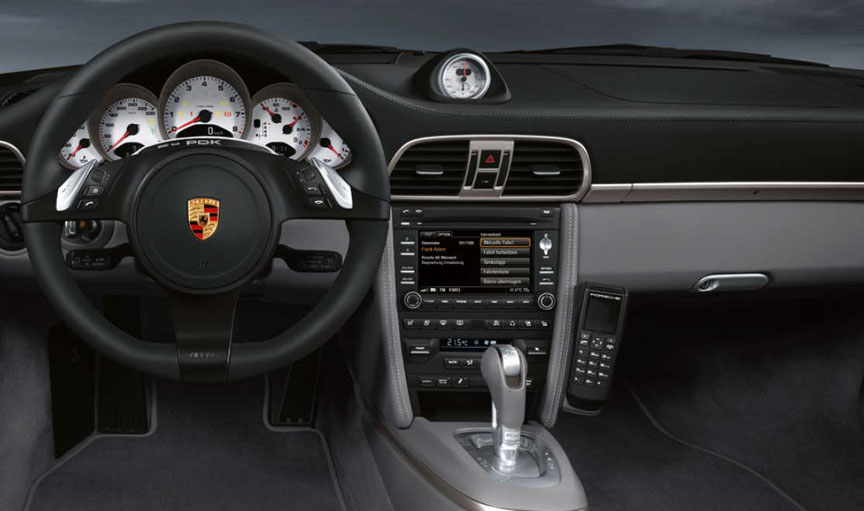
The Carrera 3.6 now got the same size brakes as the Carrera 3.8 with 330 mm discs on all corners (the difference remained in the brake calliper color – black for 3.6 and red for 3.8). The new Start-Off Assistant helps the driver to start off on an uphill gradient without rolling back (no need to use the handbrake). The optional mechanical differential lock is available also for the PDK-equipped cars. Optionally available were the new dynamic headlights that follow the steering wheel when the speed is above 7 mph/10 km/h. To ensure the widest possible illumination in a bend, the inner headlight can turn up to 15° and the outer headlight turns up to 7°. Also a first for 911 were the optional ventilated seats. The most important new feature in the cockpit was the PCM 3 (Porsche Communication Management) which finally came with the touchscreen. The screen diagonal grew from 5.8 to 6.5 inches. The 2009 model year 997.1 Turbos got the PCM3 aswell for their final model year.
The 997.2 Carrera 4 and 4S were launched in the end of 2008. In addition to the PDK, the new 4WD system was the biggest news with the 997.2 Carreras. While the 996 4WD system in the 997.1 Carreras was completely useless, the electronically controlled PTM Porsche Traction Management all-wheel drive system, adapted from the 997 Turbo, is a better system. It came with the mechanical rear axle limited-slip differential as standard.
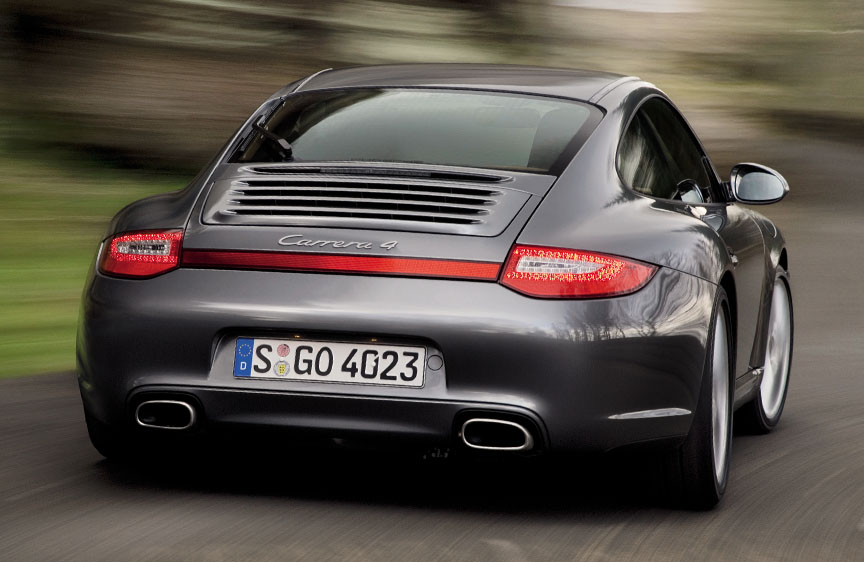
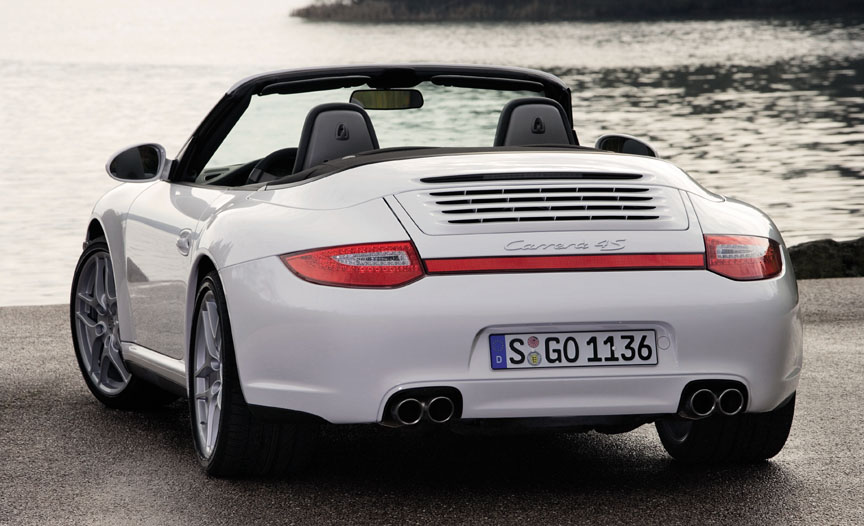
The 997.2 Targas again were available only with the 4-wheel-drive system. In order to minimize the scrunch noises from the Targa top, the body had to be stronger and it was considered that the bodyshell of the 4WD version had a bit stronger front section in terms of torsional stiffness. The rear-wheel-drive GT3 also uses the front body section from the Carrera 4 and it is not a 4WD car, so a rear-wheel-drive Targa could be made. The Targa 4 uses the Carrera 4 Cabriolet bodyshell. At least the 4WD system from the 997.2 Carrera was a bit better than the system in the 997.1 Targa 4.
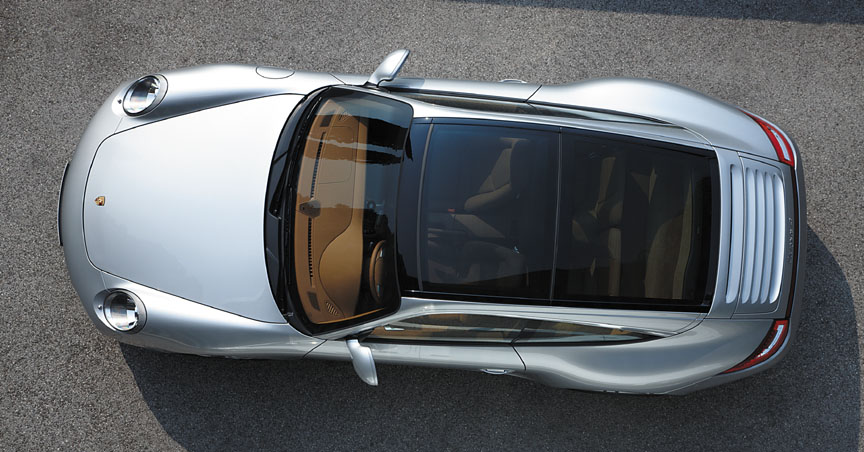
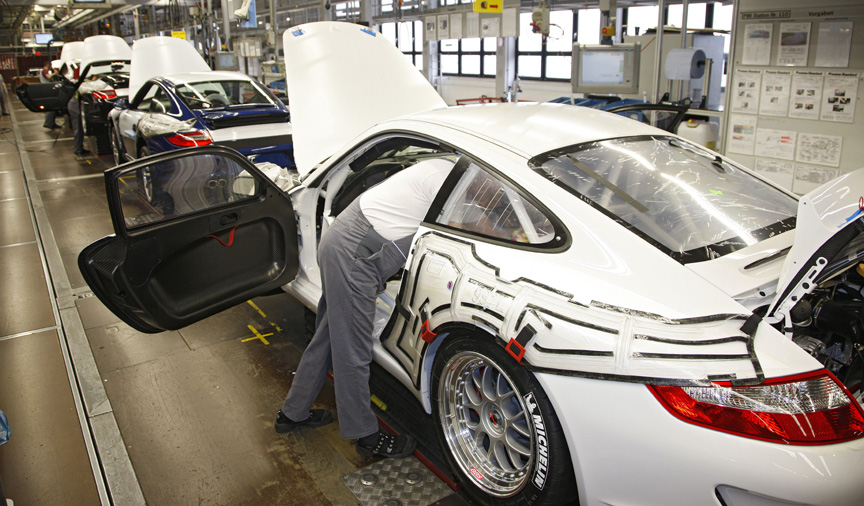
Announced in January 2009, the capacity of the 911 GT3 RSR was increased from 3.8 to 4.0 litres, but after another reduction in the size of the air intake restrictors the power was limited to 331 kW (for comparison the 2008 RSR 3.8 had 342 kW and the 2006 RSR 3.8 even 357 kW). For the 2009 car, the completely redesigned air ducting of the radiators became necessary for the installation of the air-conditioning unit. In the temperature-controlled cockpit the driver makes less driving mistakes. The oil refill with fast filling function was moved to the rear lid, giving mechanics better access. Around 20 RSR 4.0 were built over the winter.
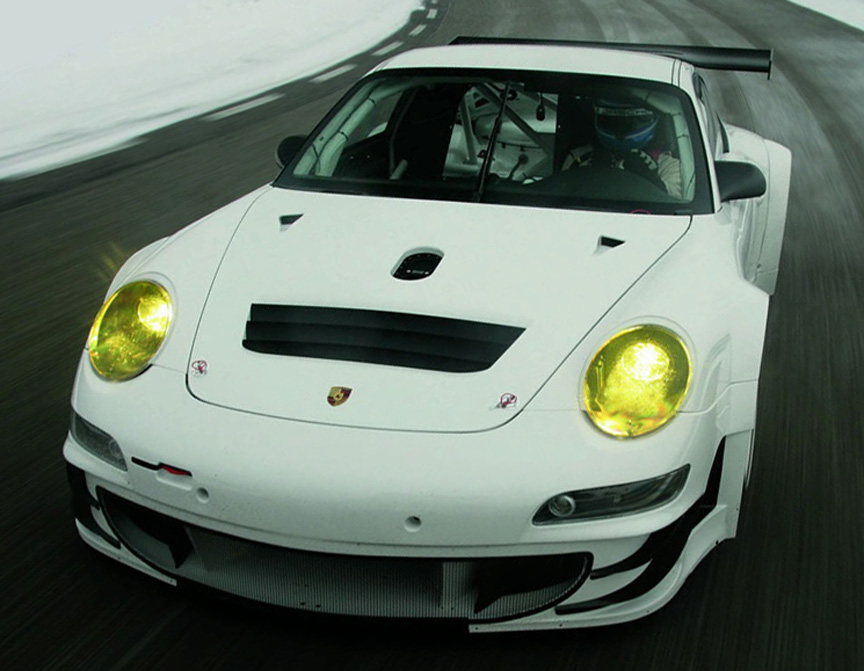
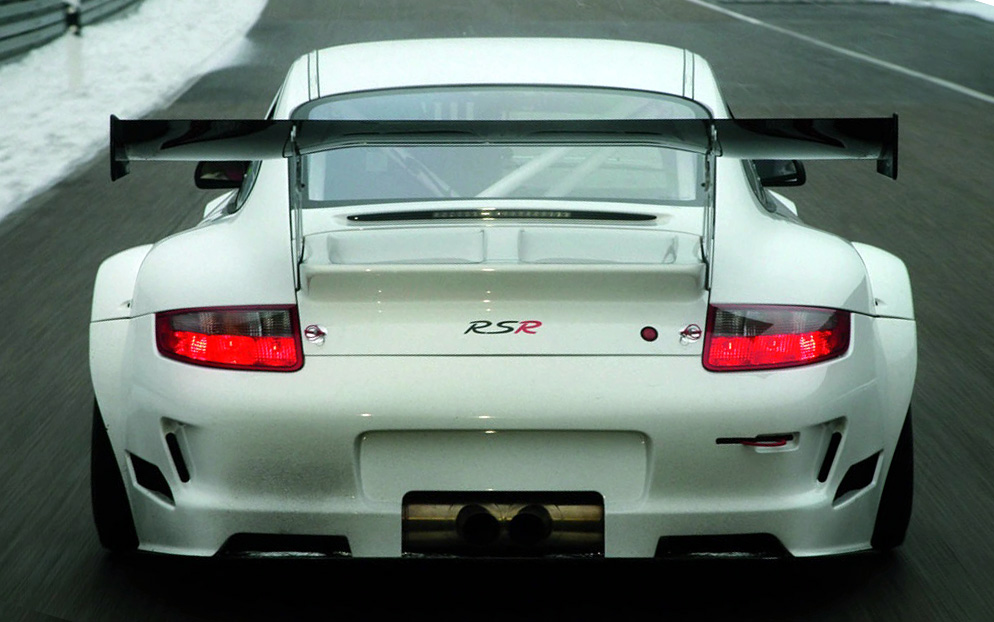
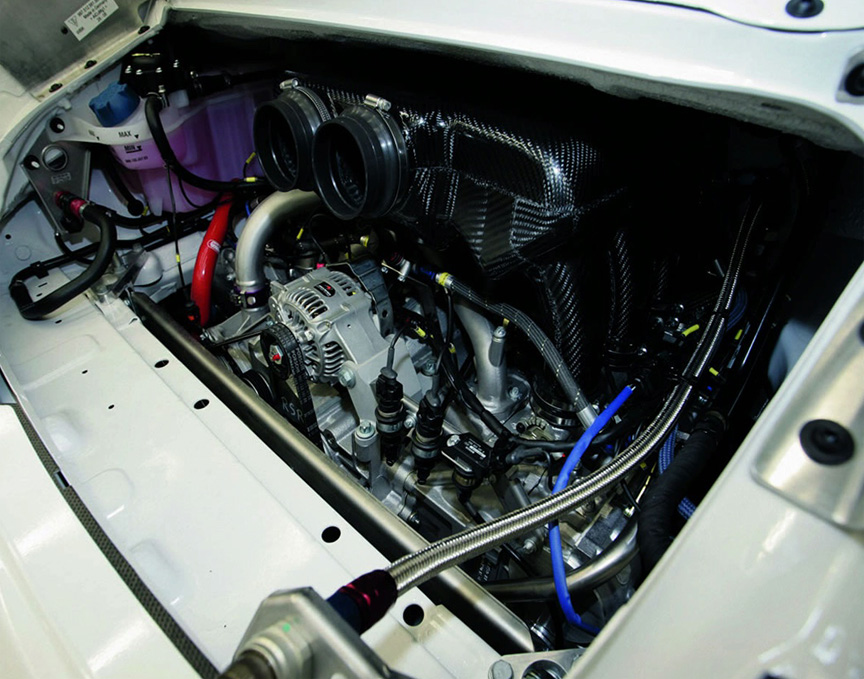
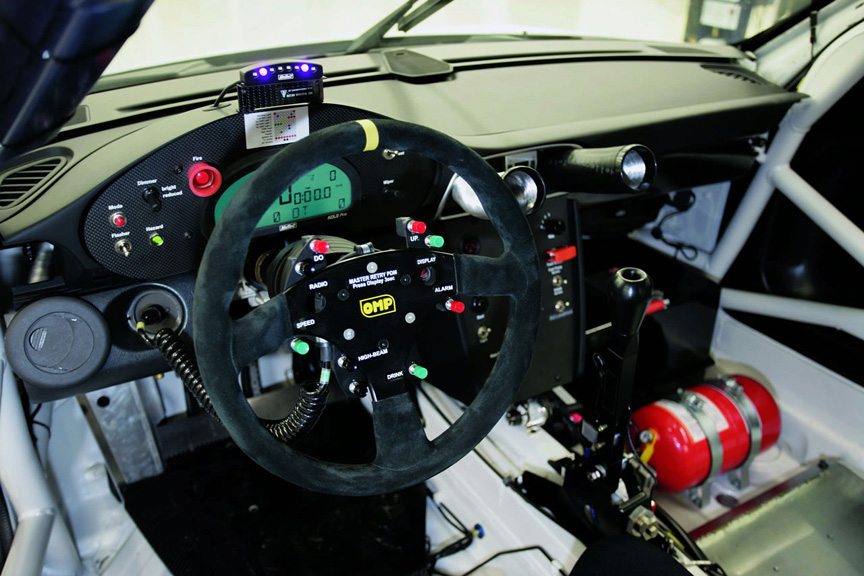
From January 2009, the central lock wheels in RS Spyder design were made available for the 997 Turbo.
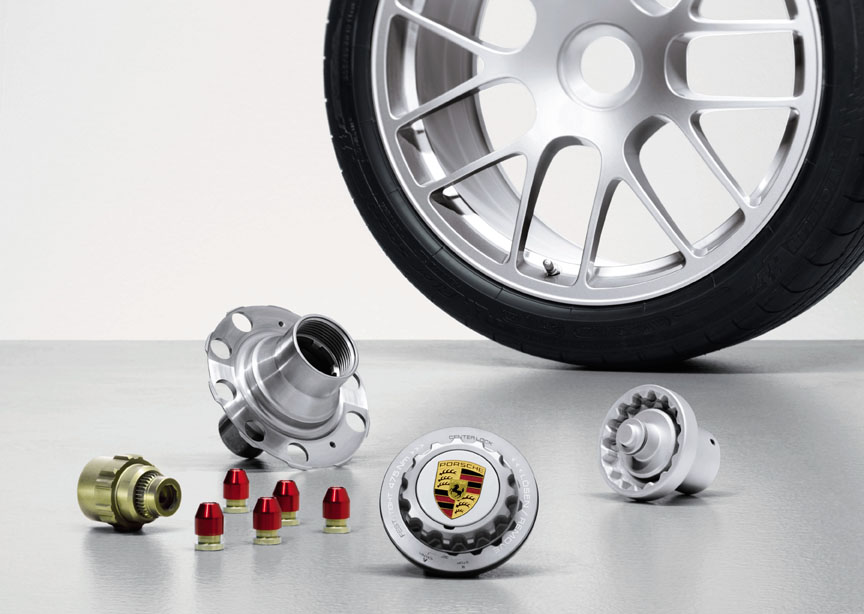
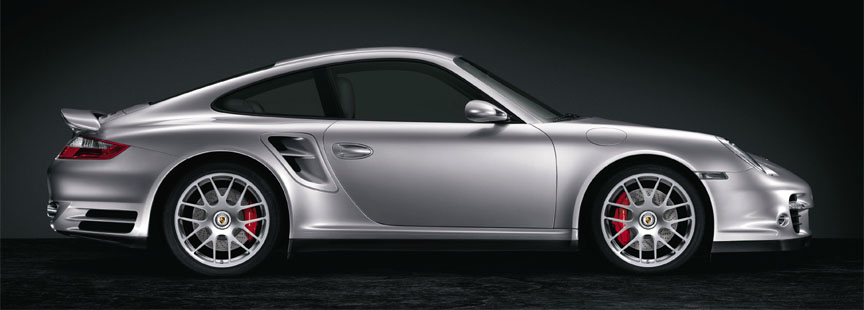
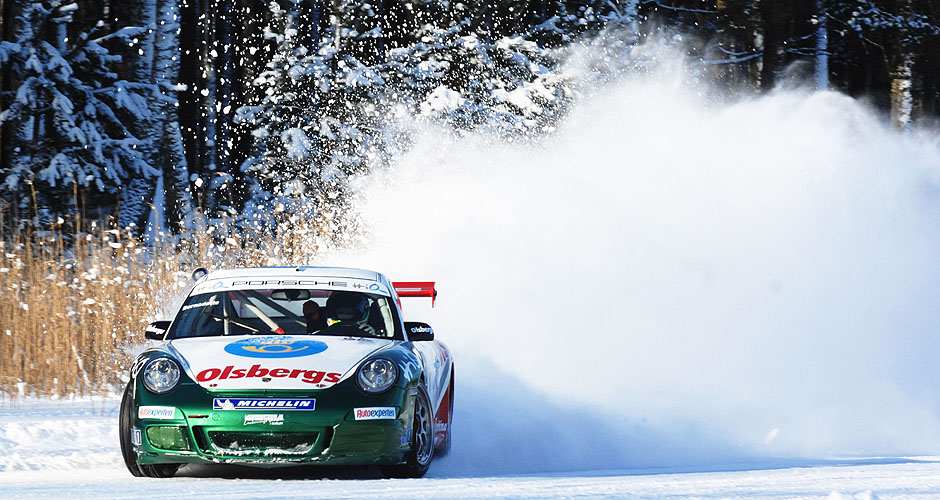
The GT3 3.8 is introduced at the 2009 Geneva Motor Show in March. The first Porsche with 3.8-litre normally aspirated engine was the 1993 911 964 Carrera RS 3.8, which had 221 kW and its full racing version, the RSR 3.8, had 257 kW. It’s quite a leap for the 997 GT3 3.8 that has 320 kW from a normally aspirated engine. Now not only the intake, but also the exhaust camshafts were adjusted by VarioCam system. Despite the increase in engine size, the rev limitter could be lifted higher once again – from 8400 on the 3.6-litre to 8500 rpm on the 3.8. The engine sound is mega.
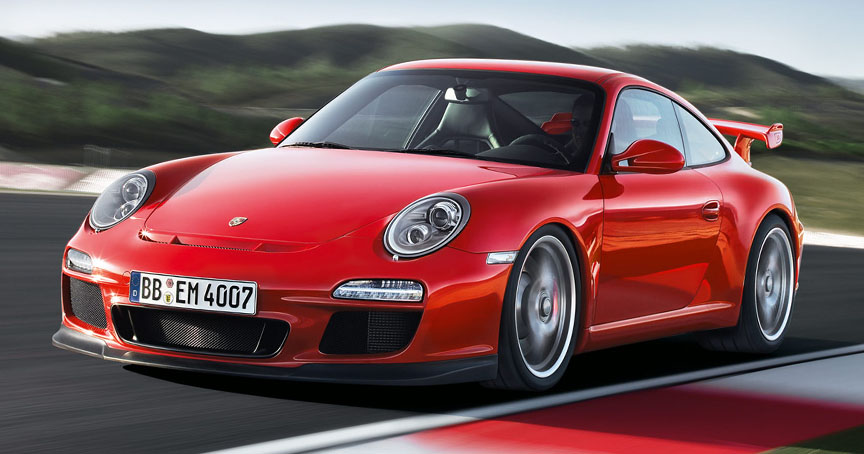
Like in the GT2, but for the first time in a GT3, there is the option to deactivate Stability Control and Traction Control in separate steps. And these functions are not reactivated automatically even under the most extreme driving conditions like it’s the case with other Porsches. The GT3 3.8 is equipped as standard with central lock wheels. A new feature is the optional front axle lift system. With the touch of a button, the front end is lifted by 1.2″/30 mm. If not lowered with the button, the system automatically lowers the car when the speed exceeds 30 mph/50 km/h. Deliveries of the GT3 3.8 started in May 2009 in Europe and in October in America.
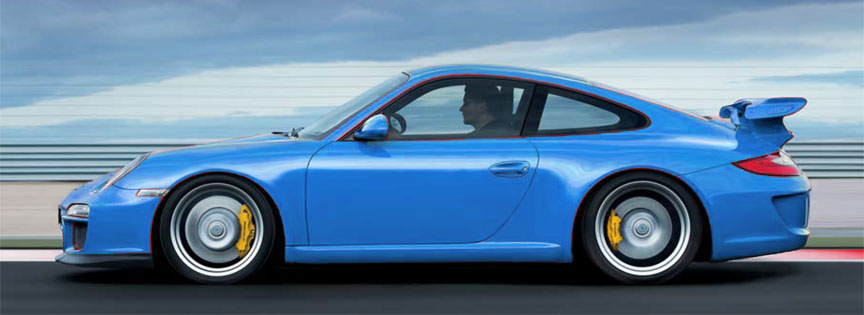
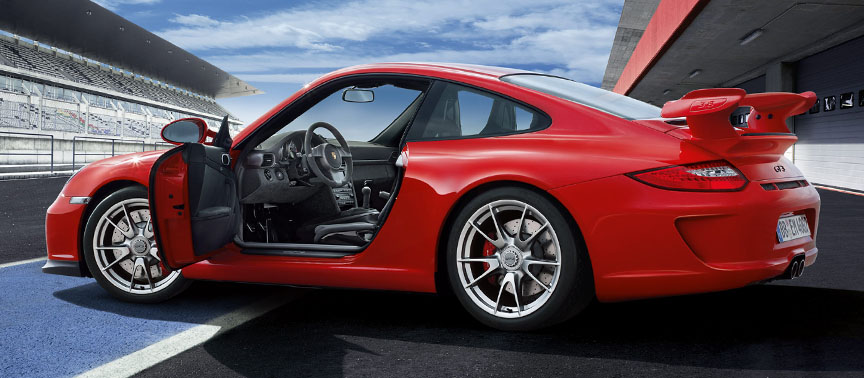
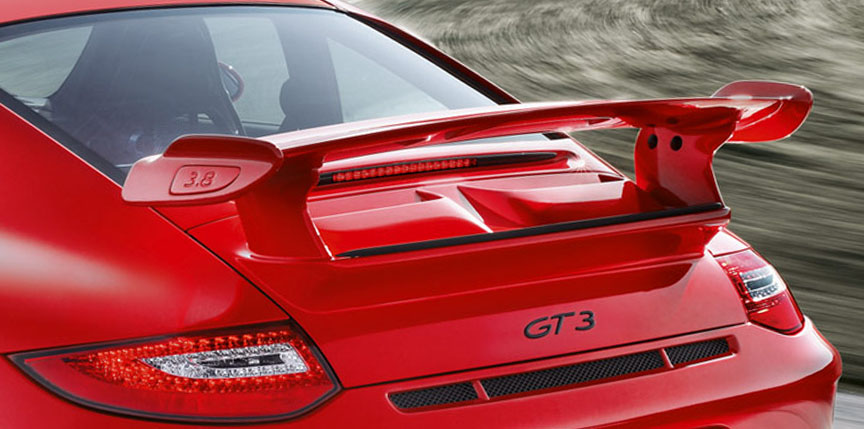
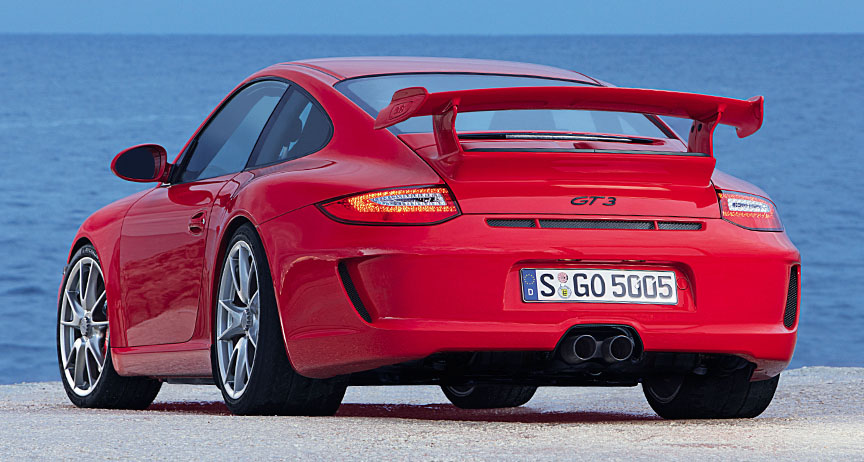
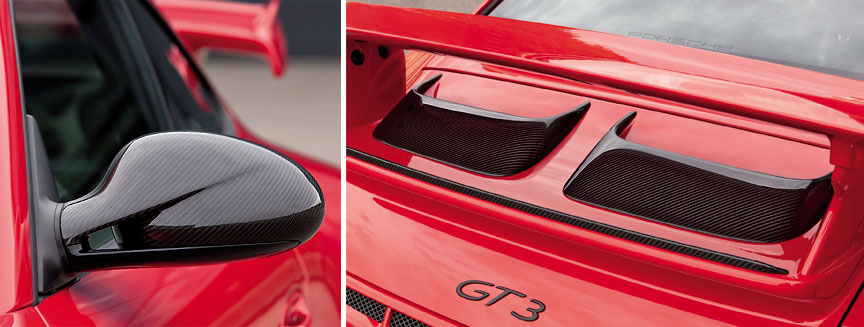
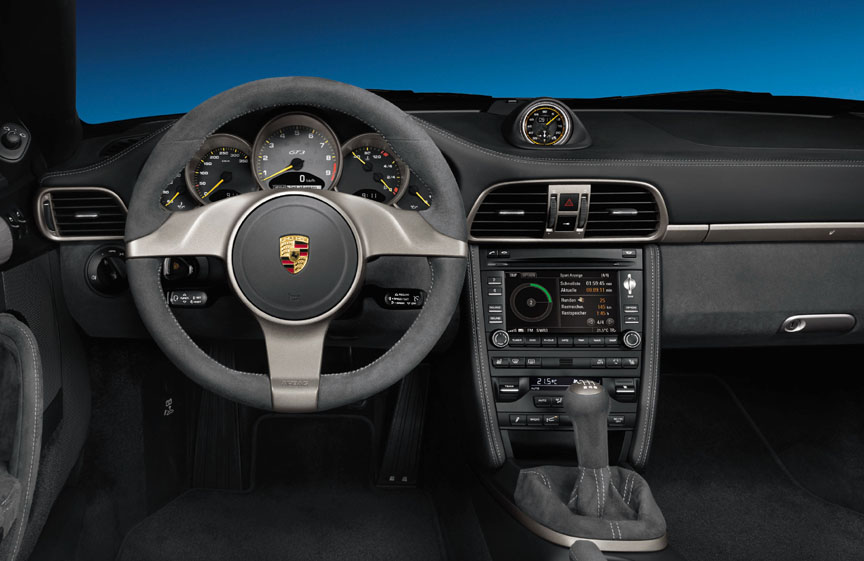
As standard, the GT3 was equipped with normal sports seats, but in many cases the cars were ordered with folding bucket seats (-24 kg/-53 lb) or one-piece bucket seats (-34 kg/-75 lb).
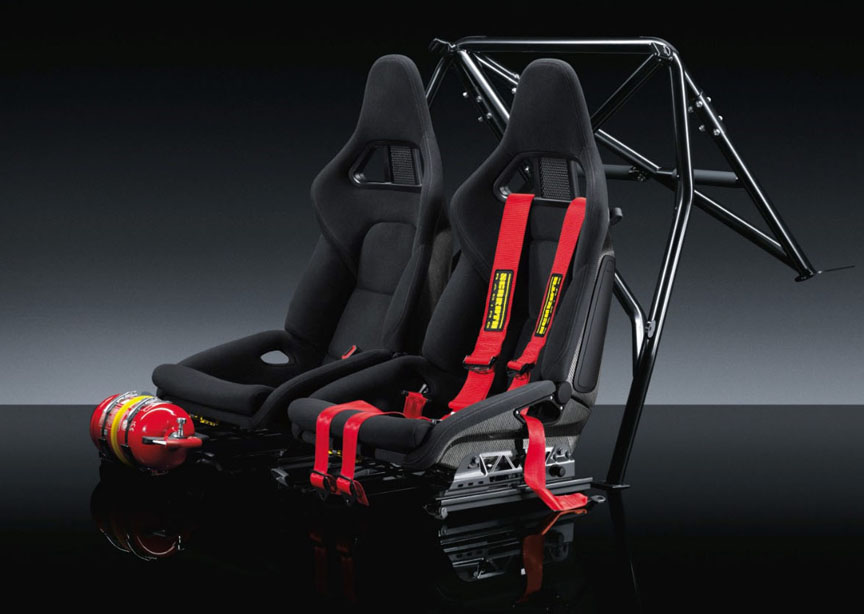

Like in 2007 and 2008, the 2009 Nürburgring 24 hour race was won by yellow-green Manthey Racing 997 GT3 RSR driven by Timo Bernhard, Marc Lieb, Romain Dumas and Marcel Tiemann. 3 years in a row by the same team with the same drivers! Actually, the 2006 race was also won by the Manthey team, then with a 996. Bernhard and Tiemann were onboard also in 2006, so they had won N24 4th time in a row now.
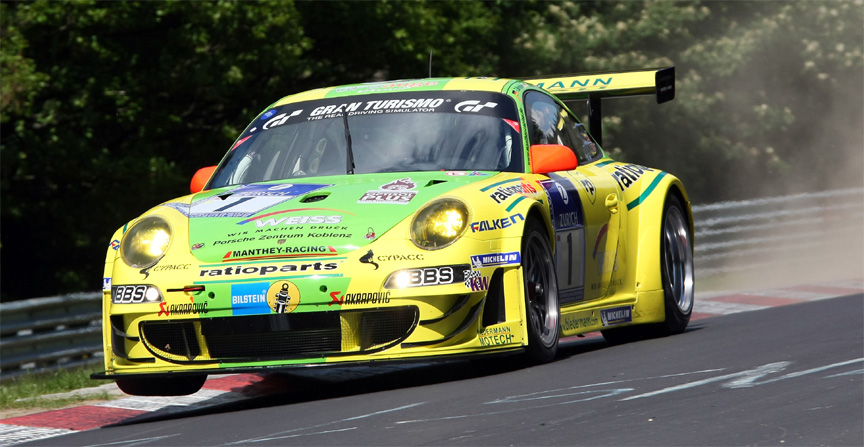
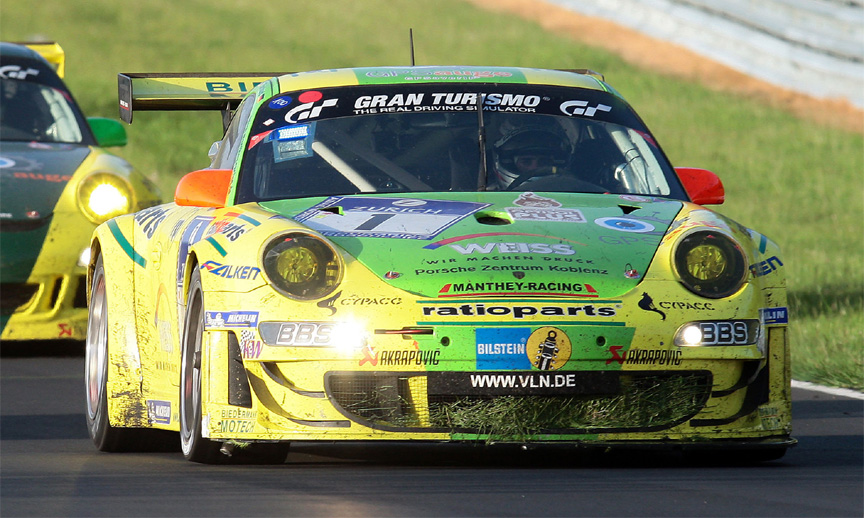
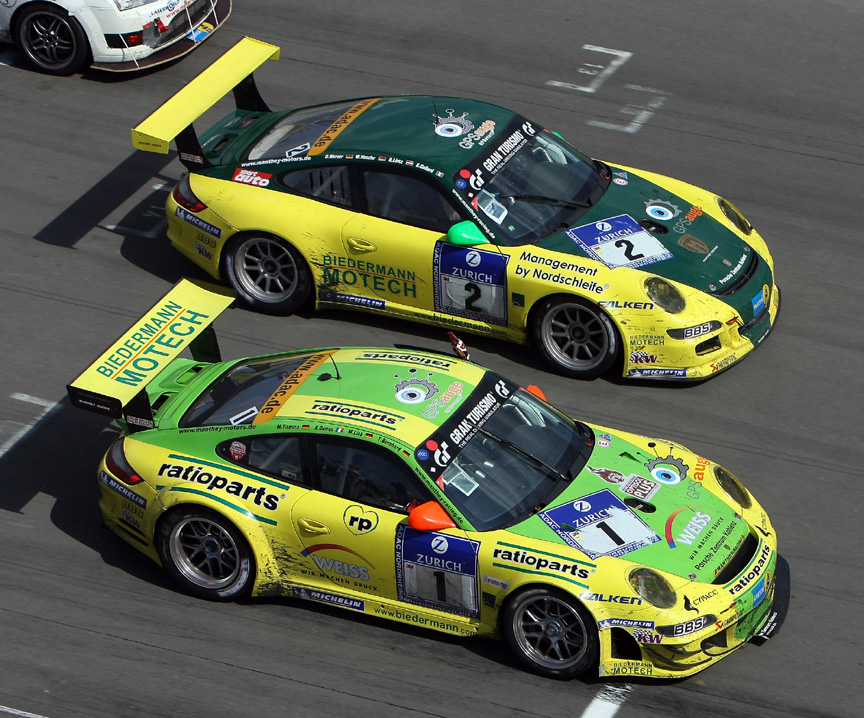
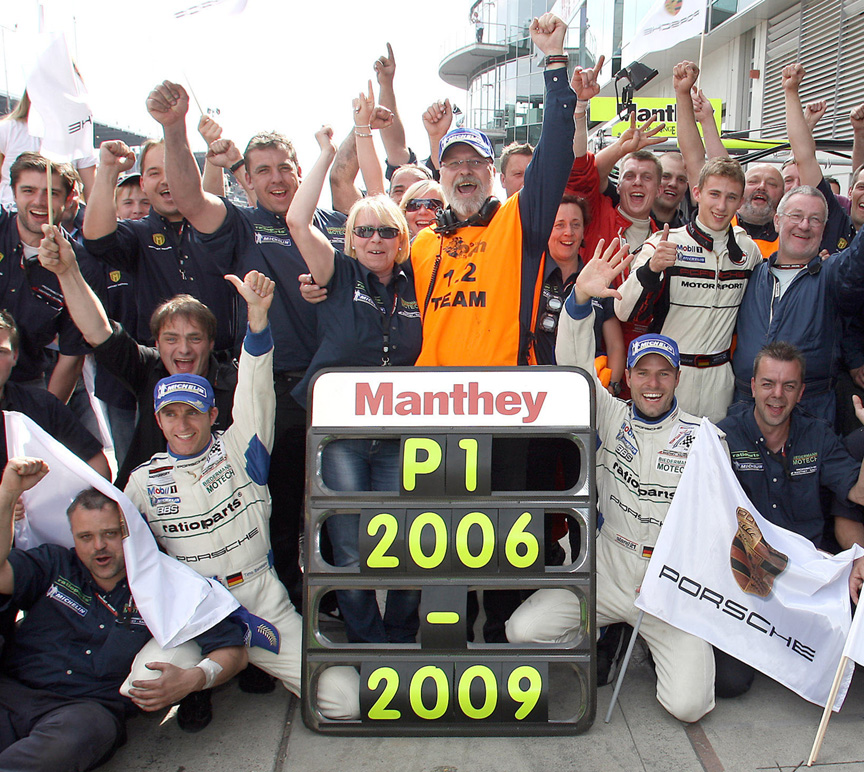
Available from 2009 for the 2010 model year, the X51 WLS powerkit for the Carrera S DFI engine didn’t make much difference performance wise. From 3000 to 4400 rpm the torque is higher and from 6700 rpm power and torque both are higher, but between 5700 to 6700 the WLS engine has less power and torque than the standard 3.8-litre DFI engine.
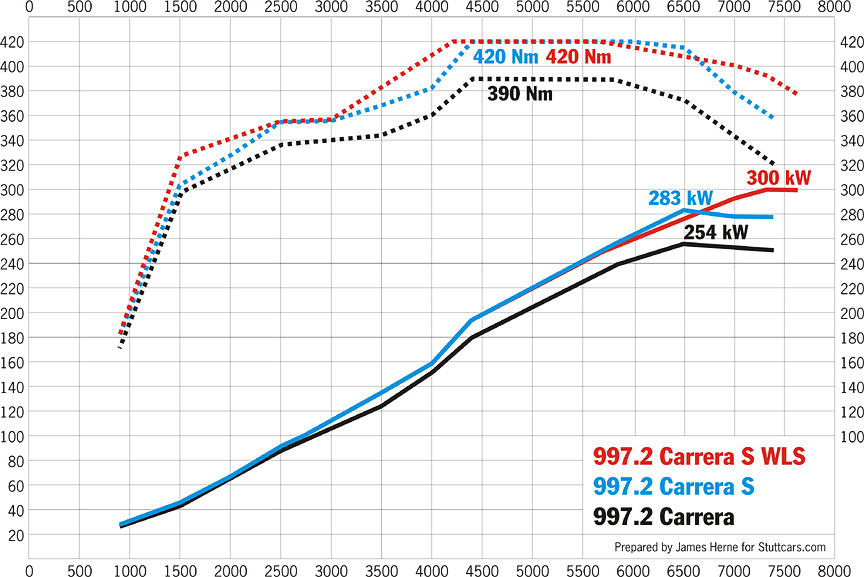
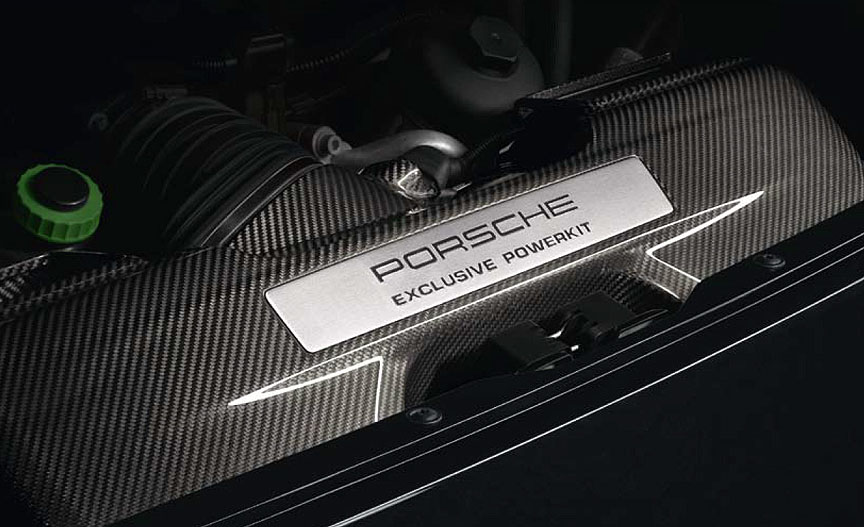
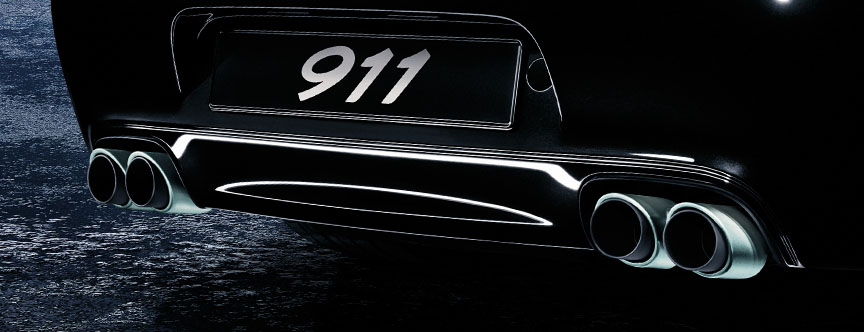
In September 2009, the special edition 911 Sport Classic was unveiled at the IAA Frankfurt Motor Show. The production run was 250 numbered cars. Being a “Classic”, it naturally had to be rear-wheel-drive and have a manual gearbox. In addition the car was equipped with mechanical limited-slip differential. Body with wider rear fenders from the Carrera 4/4S was used. 19″ wheels mimicking the classic Fuchs wheels from the 1960s were created. The name of the paint is Sport Classic Grey and the color of the interior Espresso Nature. Deliveries of the 911 Sport Classic started in January 2010. All cars going to collections, they were delivered with special indoor car covers. With so limited production number, the Sport Classic was made available only in few markets. Porsche’s single largest market – North America – didn’t get it.
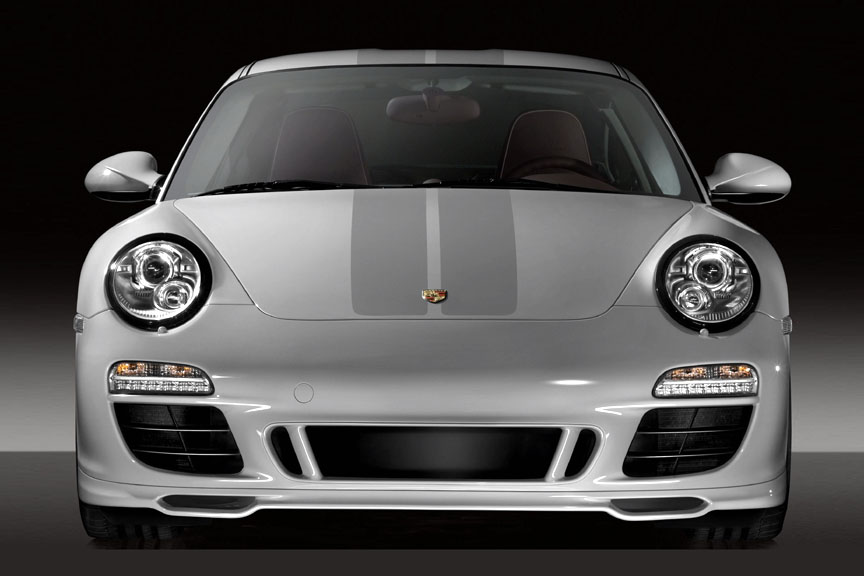
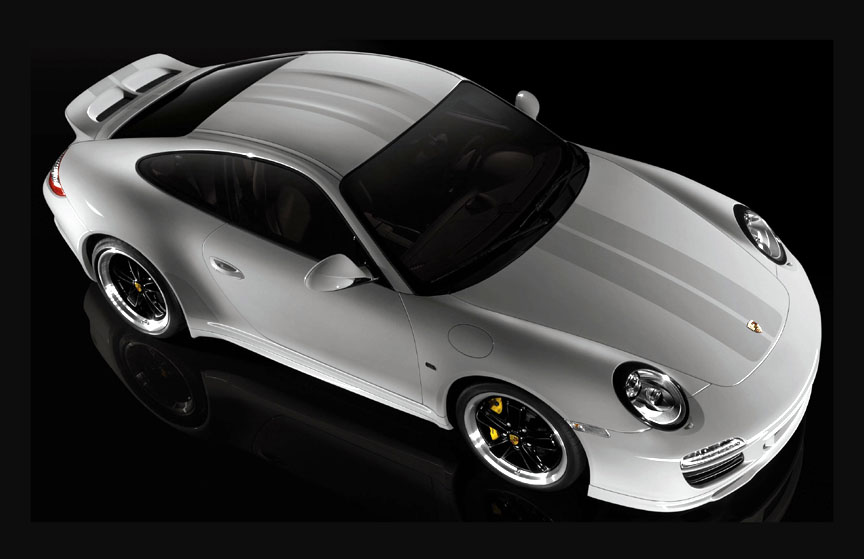
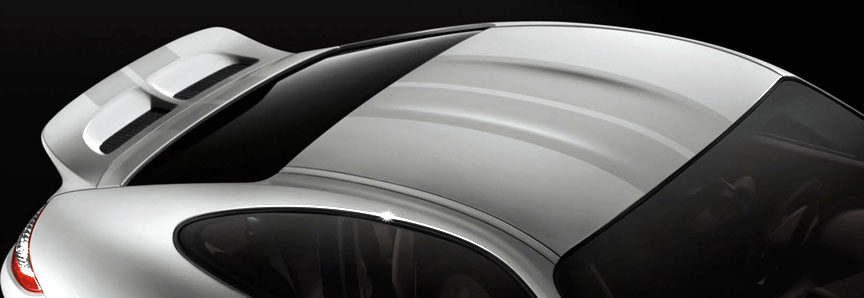
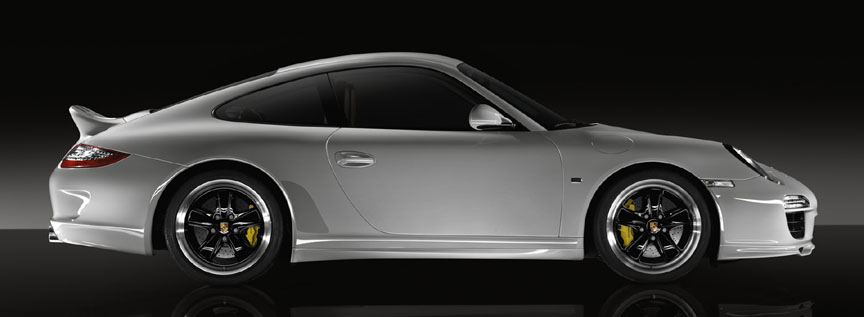
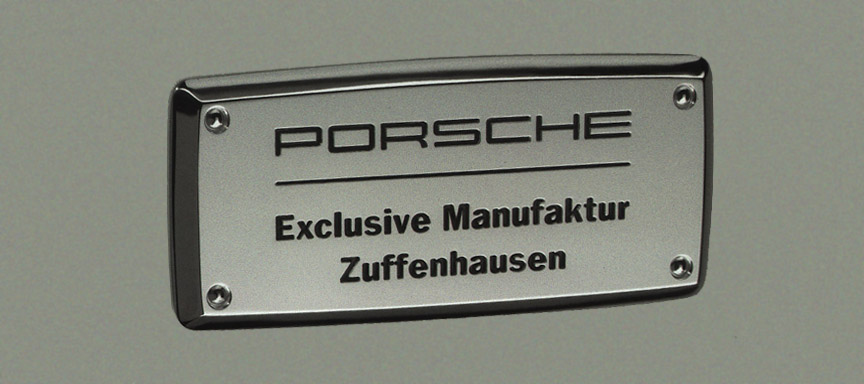
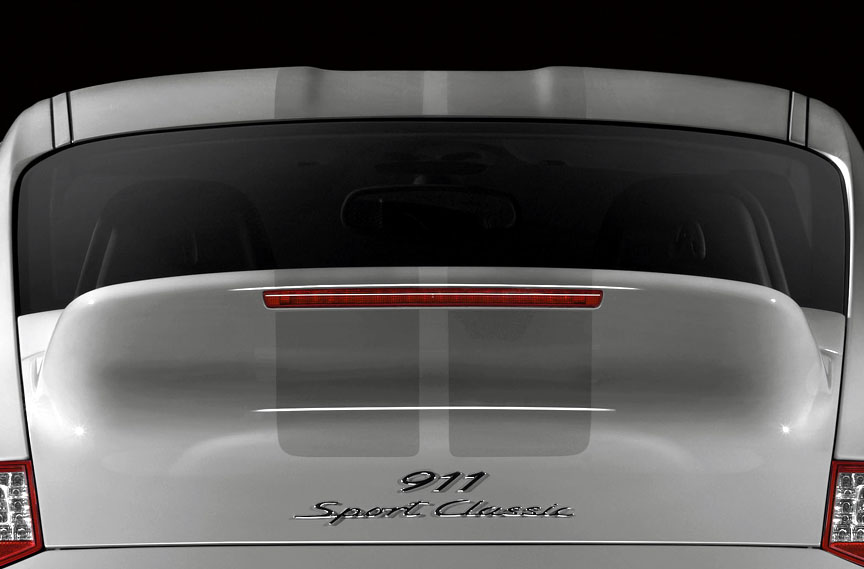
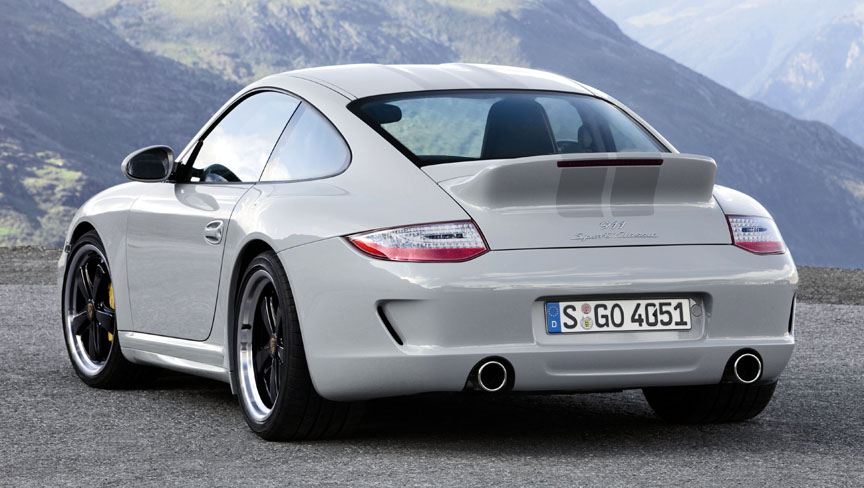
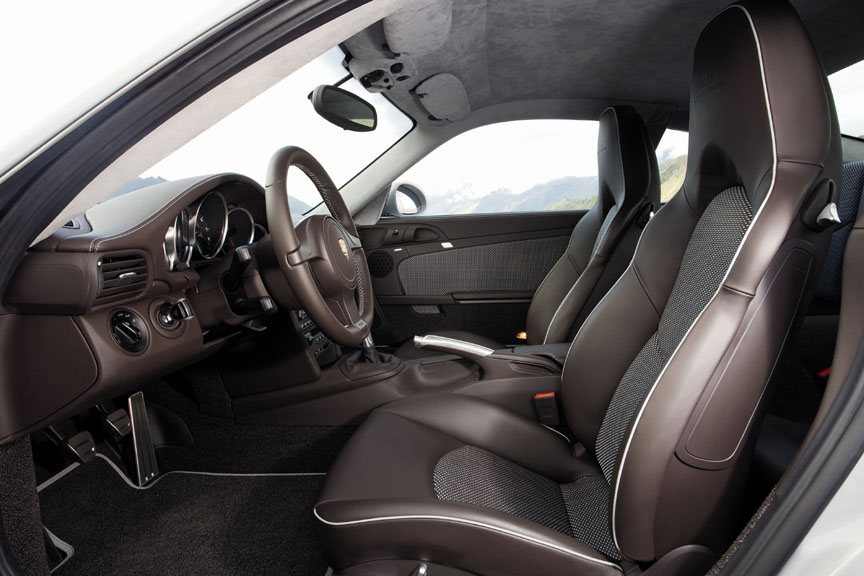
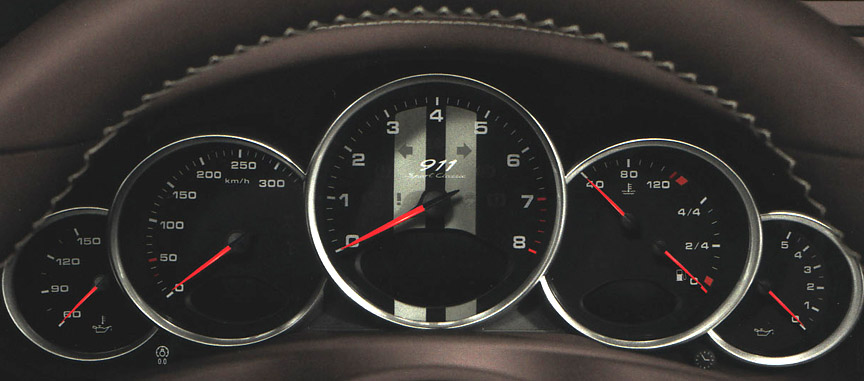
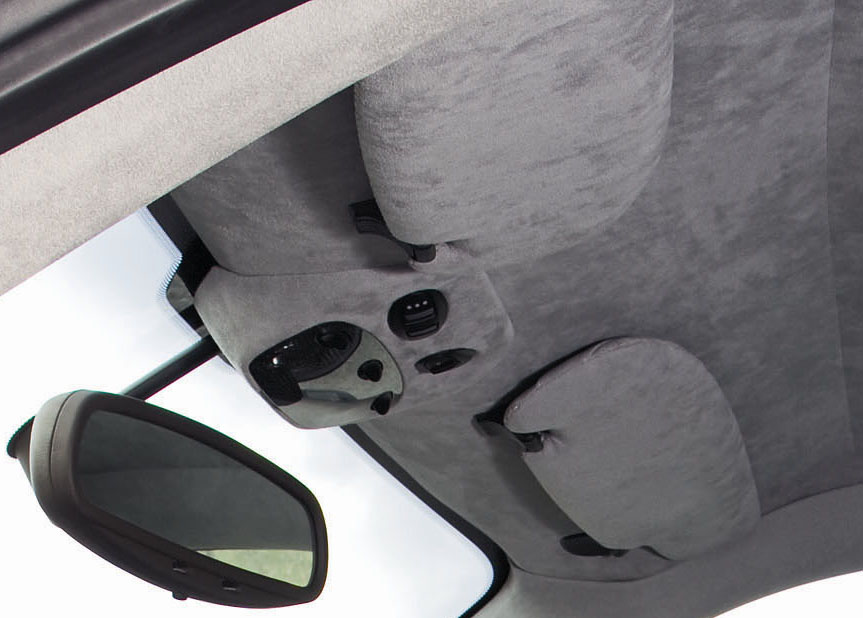
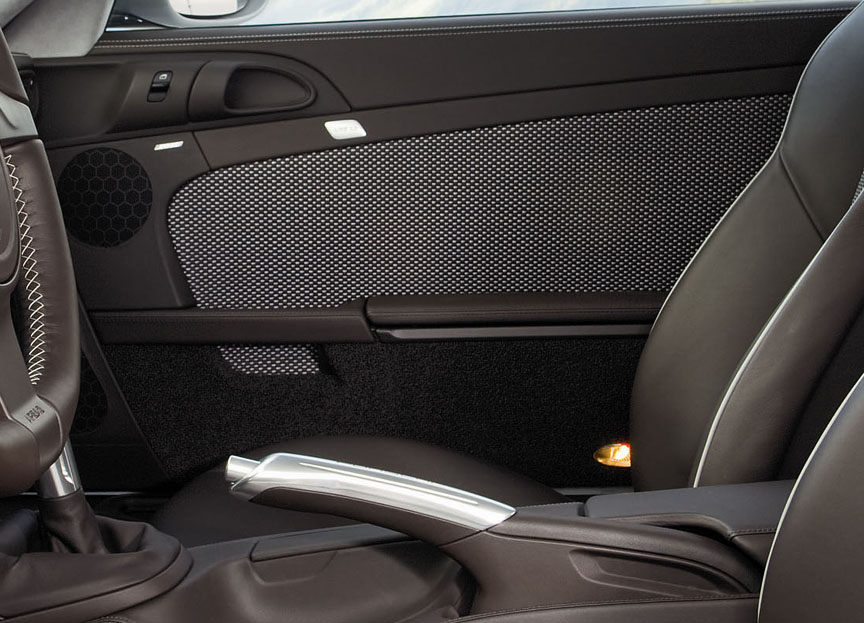
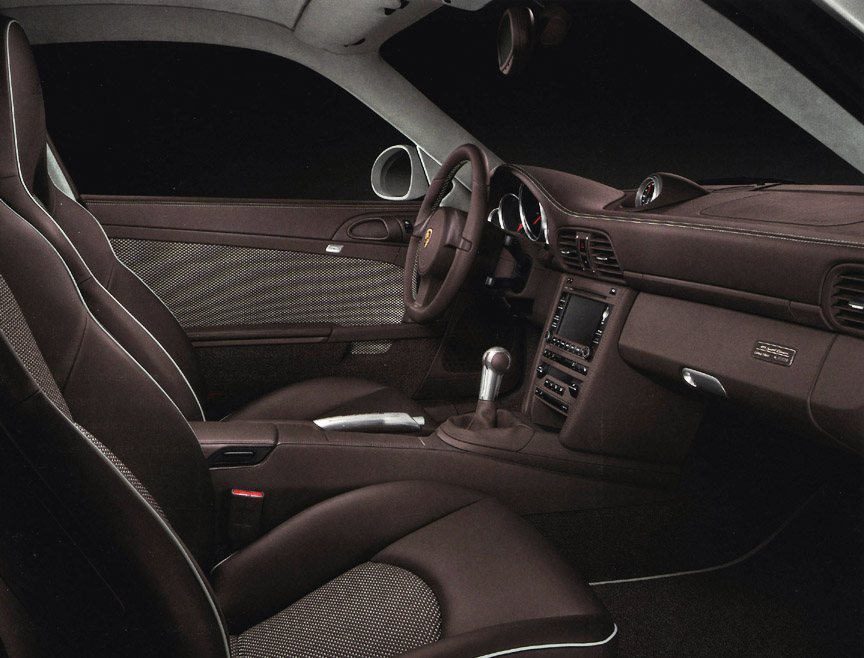
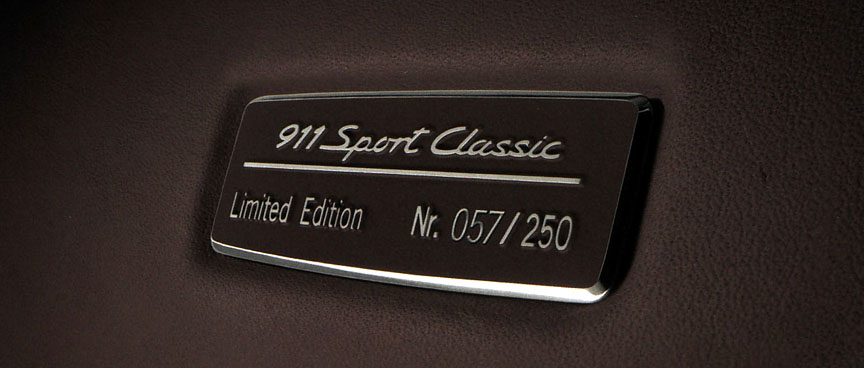


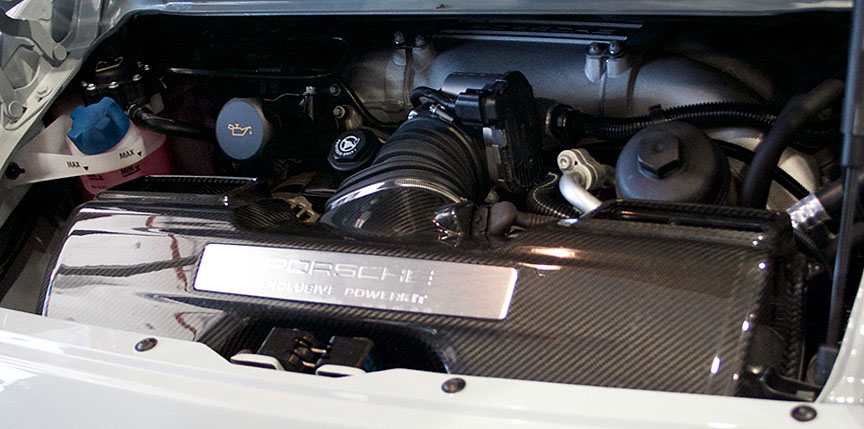
In addition to the 911 Sport Classic, the GT3 RS 3.8 and the 911 Turbo 3.8 were unveiled at the 2009 Frankfurt Motor Show. The power of the Turbo 3.8 was slightly up from 353 kW of the Turbo 3.6 to 368 kW. Design wise it was a very mild makeover (“Don’t fix it if it doesn’t need it!”). The front stayed the same with the Turbo 3.6 and the rear end got bigger exhaust pipe ends and naturally the 997.2 rear lamps. Technology-wise the biggest change was the replacement of the Tiptronic with the PDK gearbox. The engine was a completely new construction, now also with the Direct Fuel Injection system. A new option was the PTV Porsche Torque Vectoring system that made the car more agile on winding roads. The PTV brakes the rear inner wheel in a bend to reduce understeer. With the PTV came also the mechanical rear axle differential.

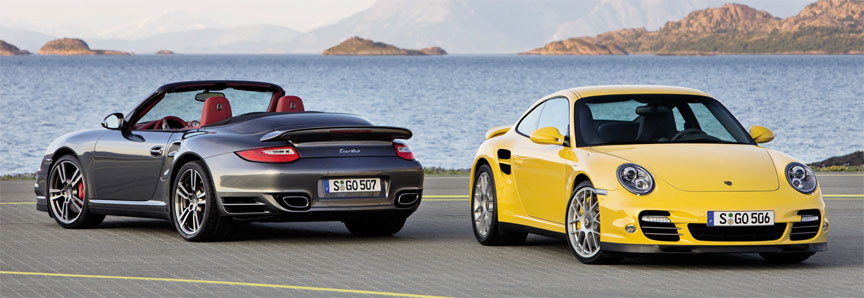
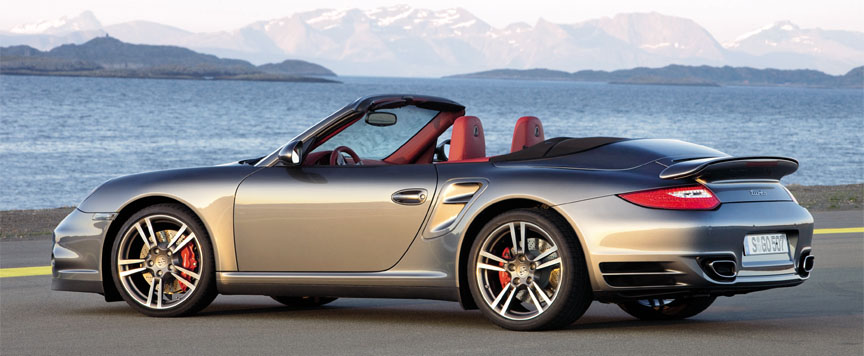
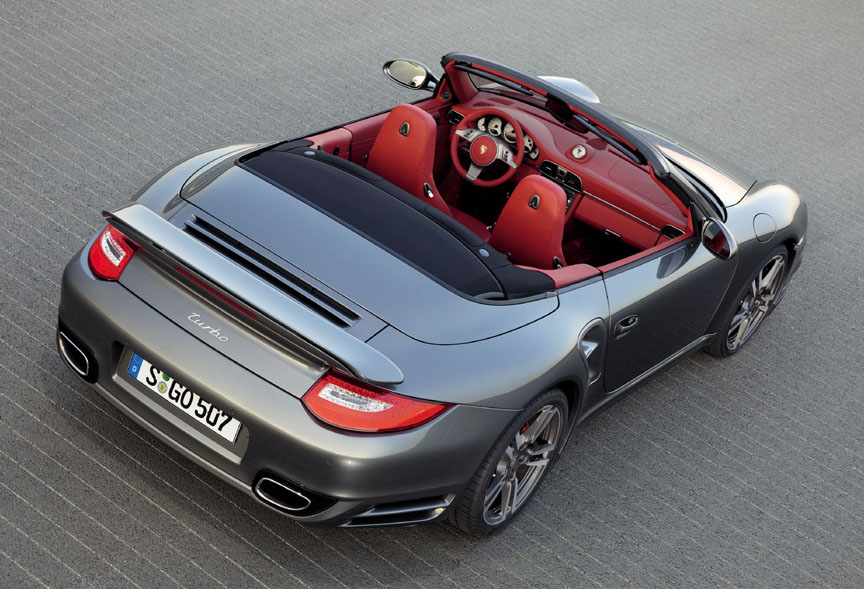
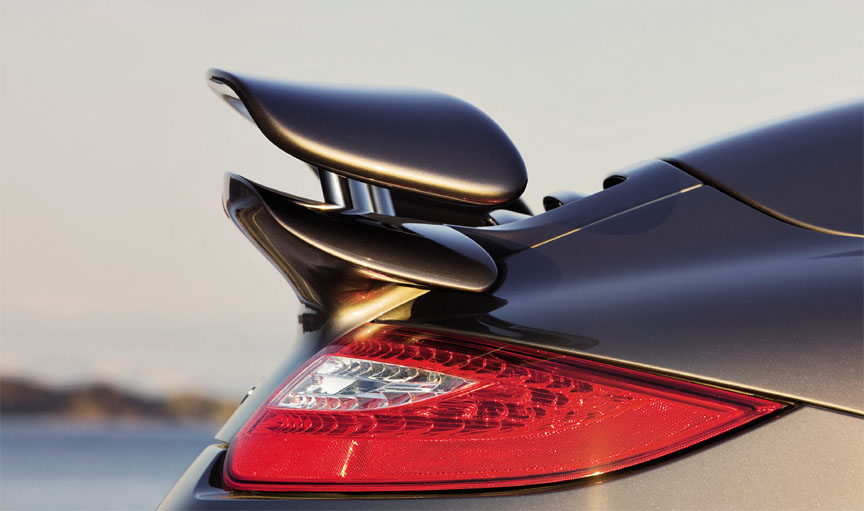
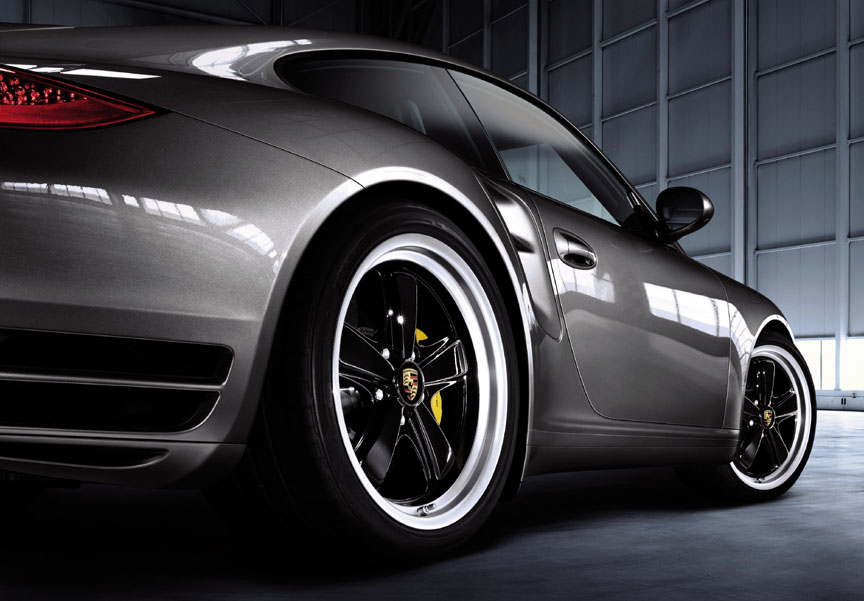
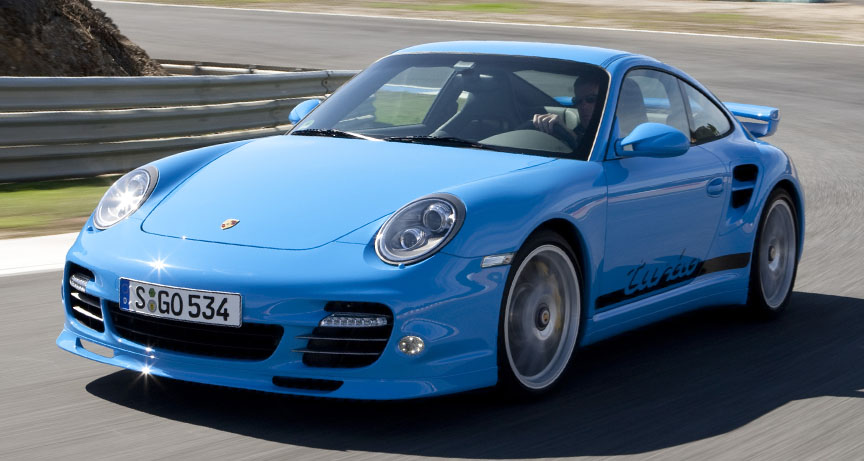
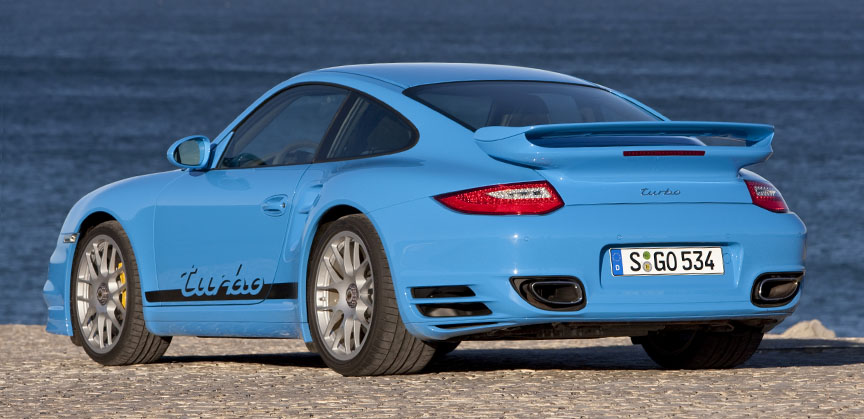
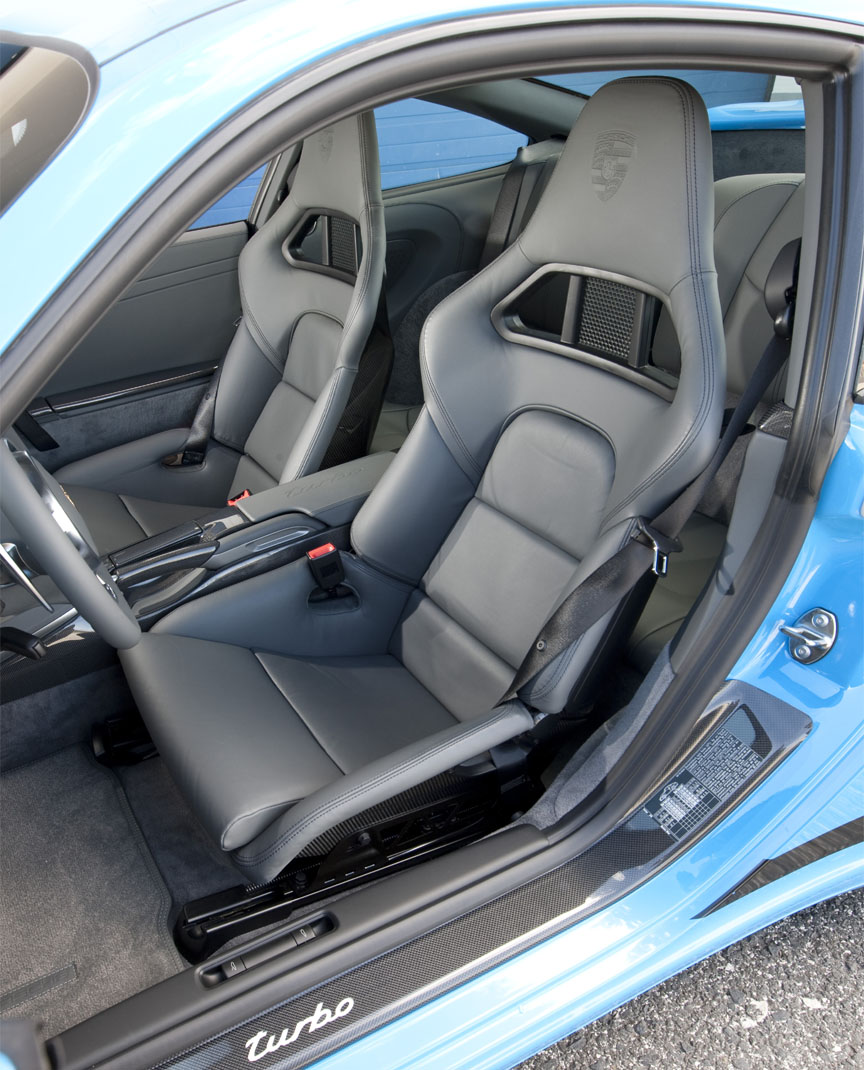
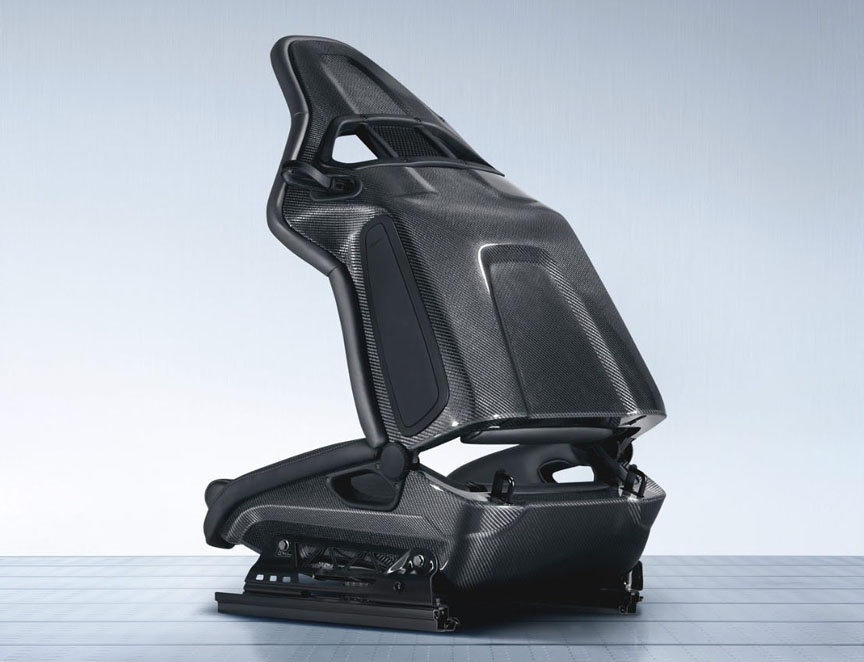
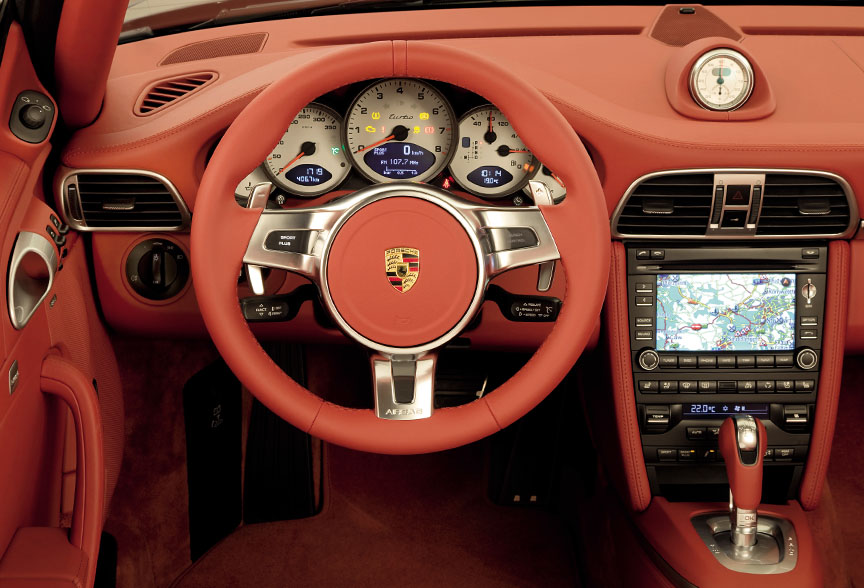
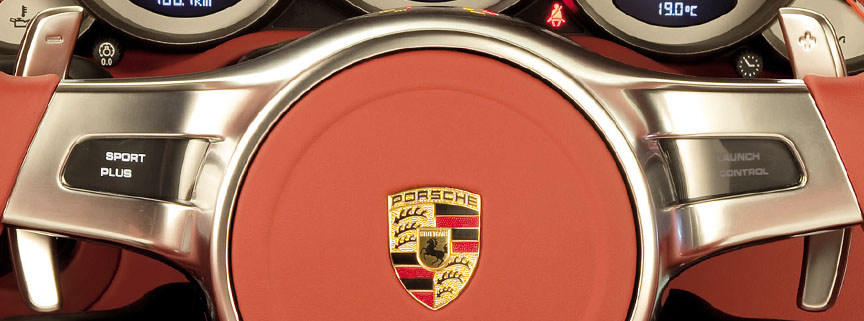

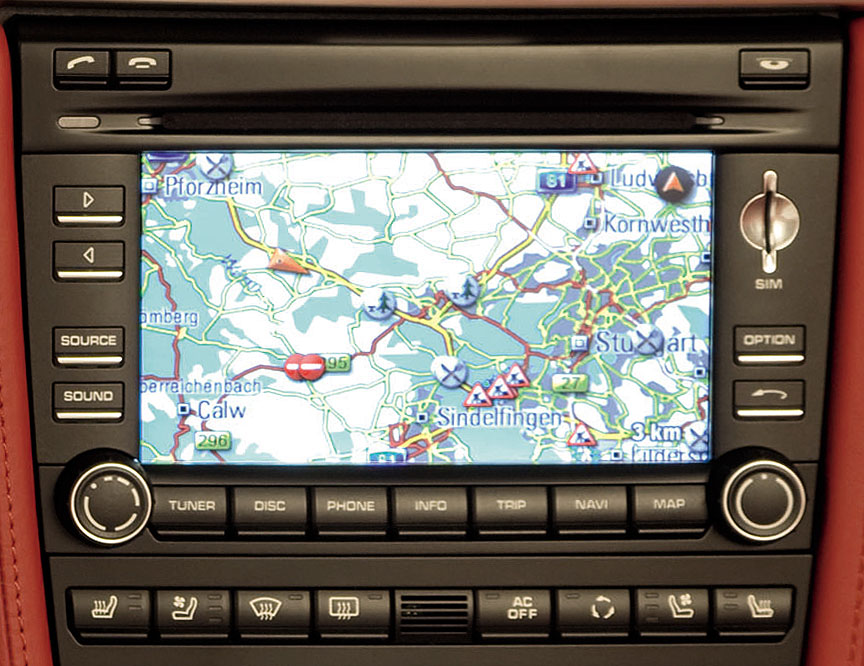
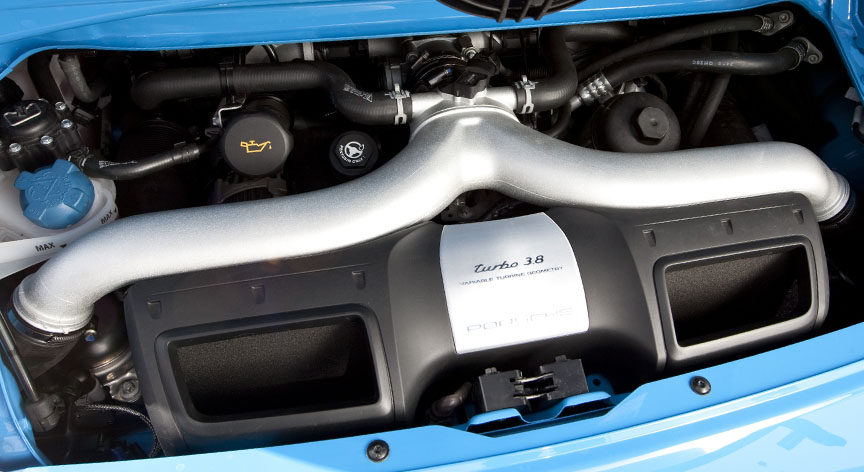

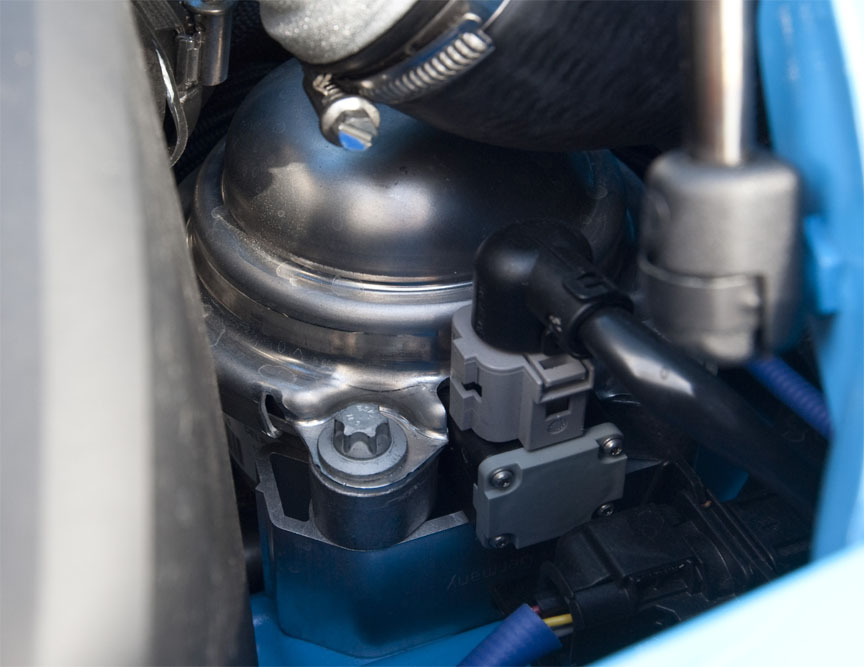
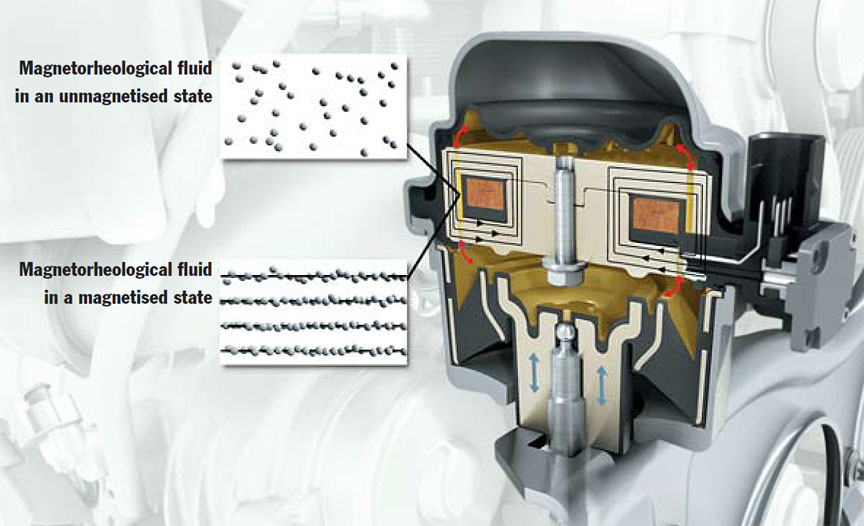
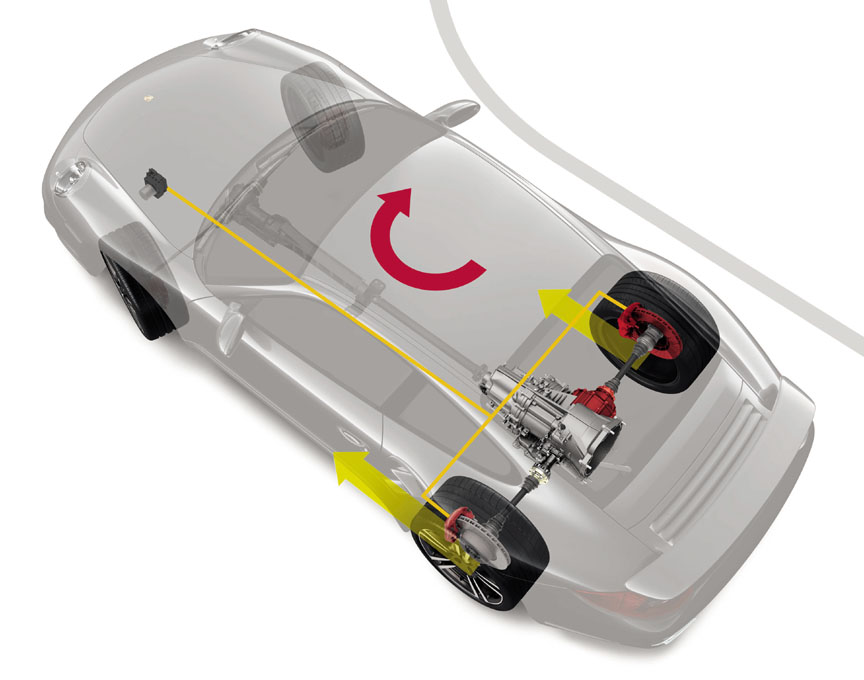
Porsche’s third star at the 2009 Frankfurt Motor Show was the 911 GT3 RS 3.8. While the 997.1 GT3 and RS had the same amount of power, the 997.2 GT3 RS has 331 kW compared to the 997.2 GT3 320 kW. Like on the non-RS GT3 3.8, activating the Sport-button puts the exhaust system to flow-through regime and this increases torque at medium engine speeds by up to 26 lb-ft/35 Nm. The increase in power over the non-RS GT3 3.8 is the result of the improved air filter and intake manifold. The reason the top speed is a bit lower than on the GT3, is the wider body and the larger rear wing. They would drop the top speed dramatically, but to fight that the 6th speed was made 5% shorter for the car to have more engine power at top speed. For better acceleration, gears 1-5 were made 11-13% shorter than on the regular GT3. The PADM engine mounts are standard in the RS. In order to have lower DIN weight (incl. fluids) on the paper, the cars were equipped with 67-litre fuel tanks, but 90-litre tank could be specified at no extra cost (was not available in all markets). A new feature for the RS 3.8 was the ultra-light lithium-ion battery. It weighs less than 6 kg/13 lb. The car was delivered with two batteries, with the li-ion meant for track day use. Deliveries of the GT3 RS 3.8 started in January 2010.
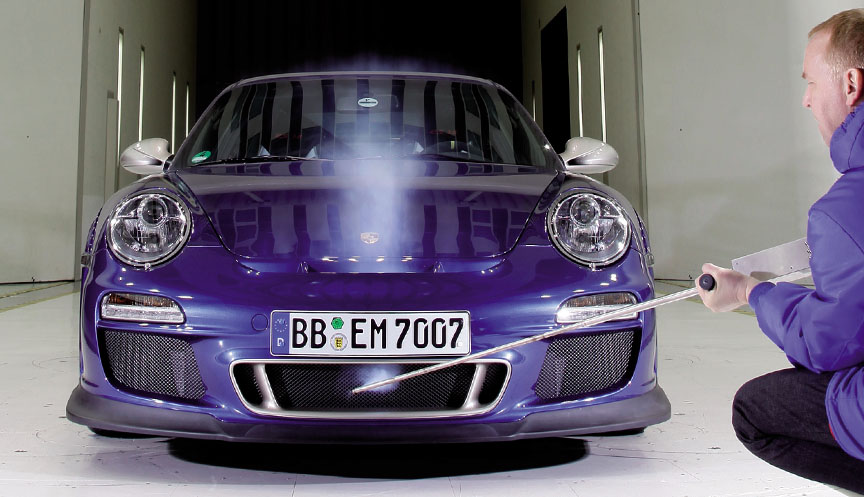
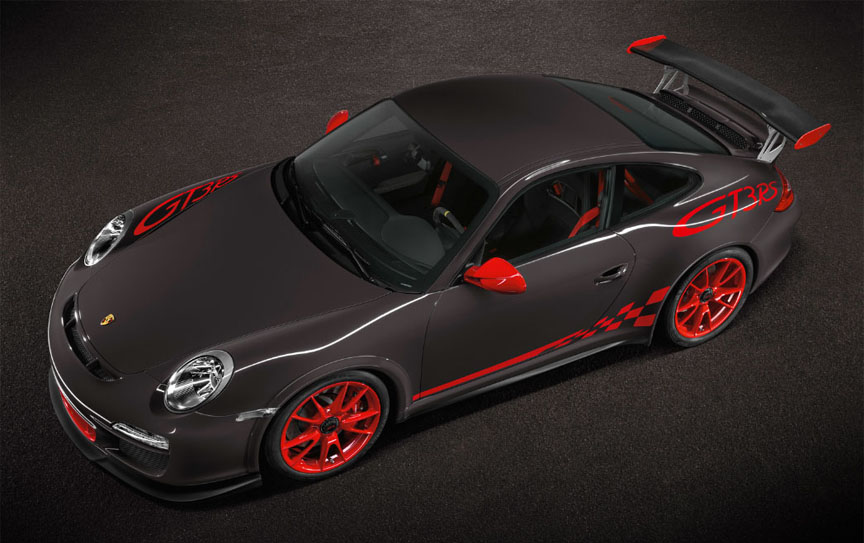
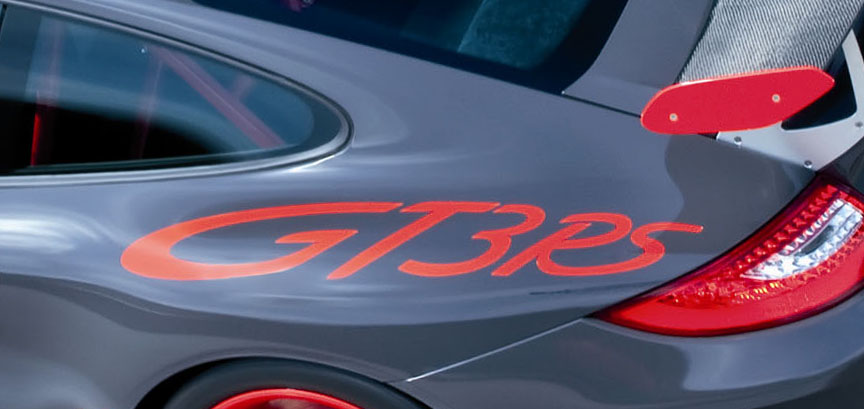

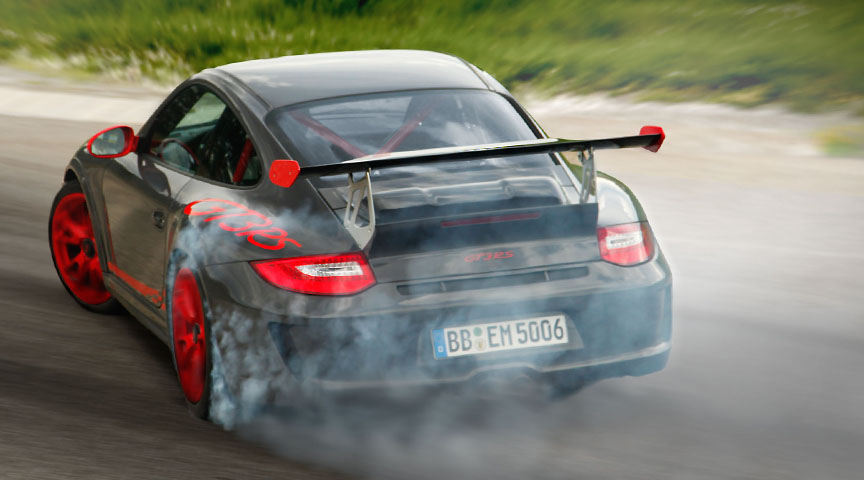
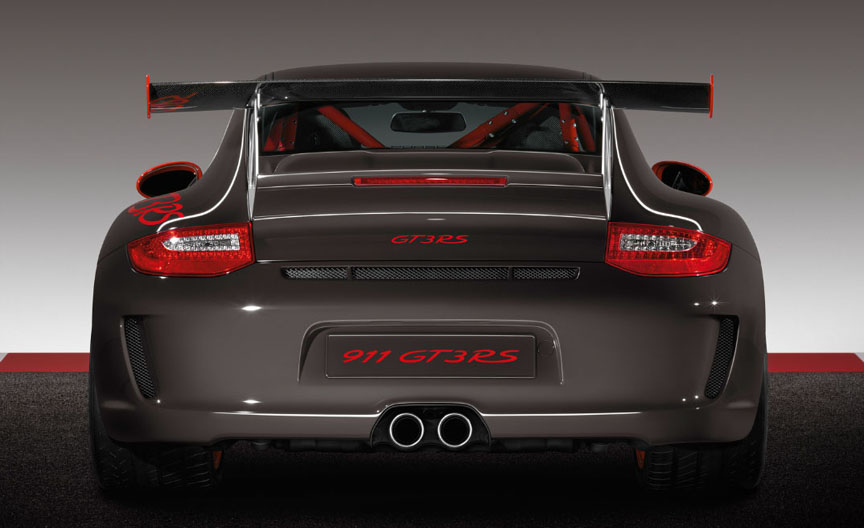
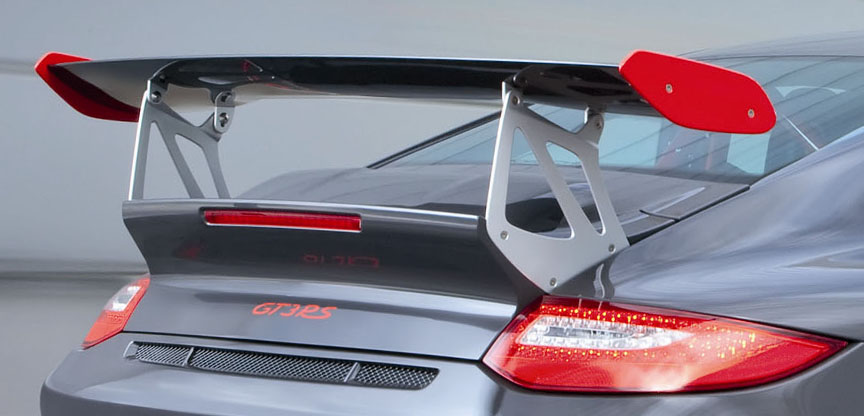
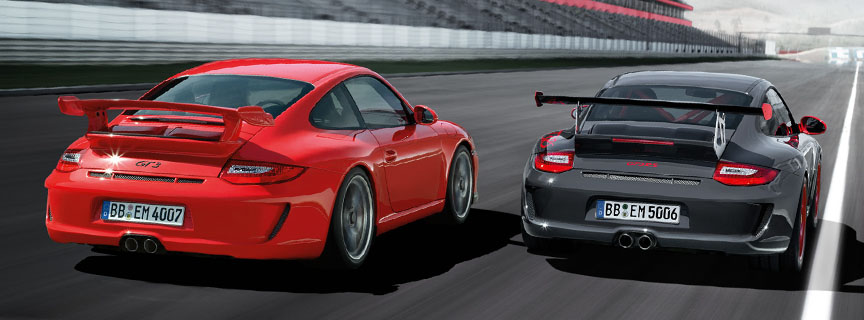
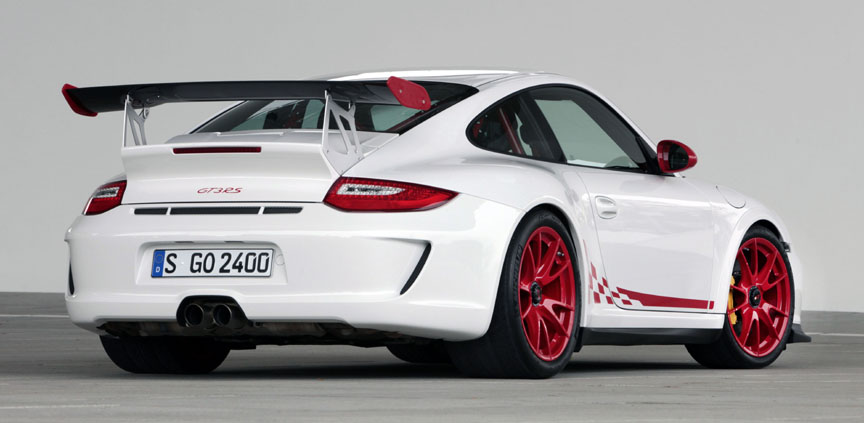
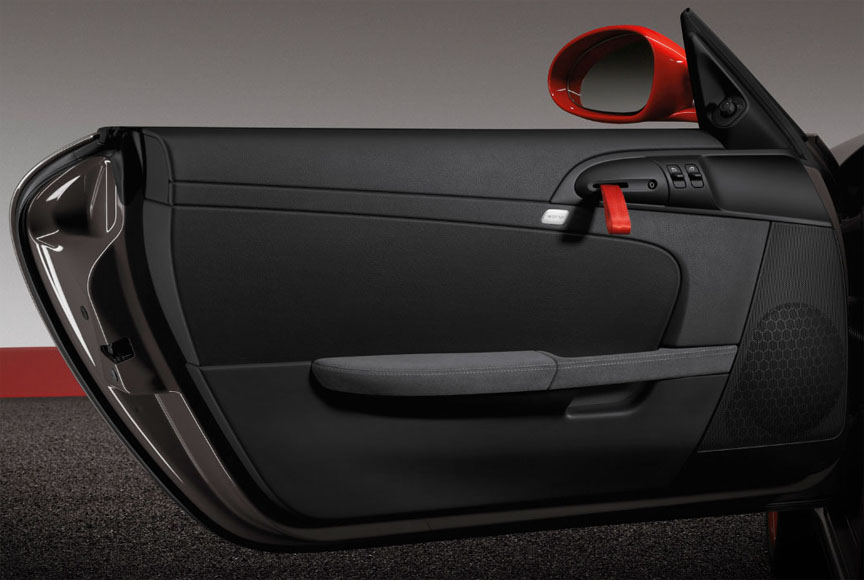
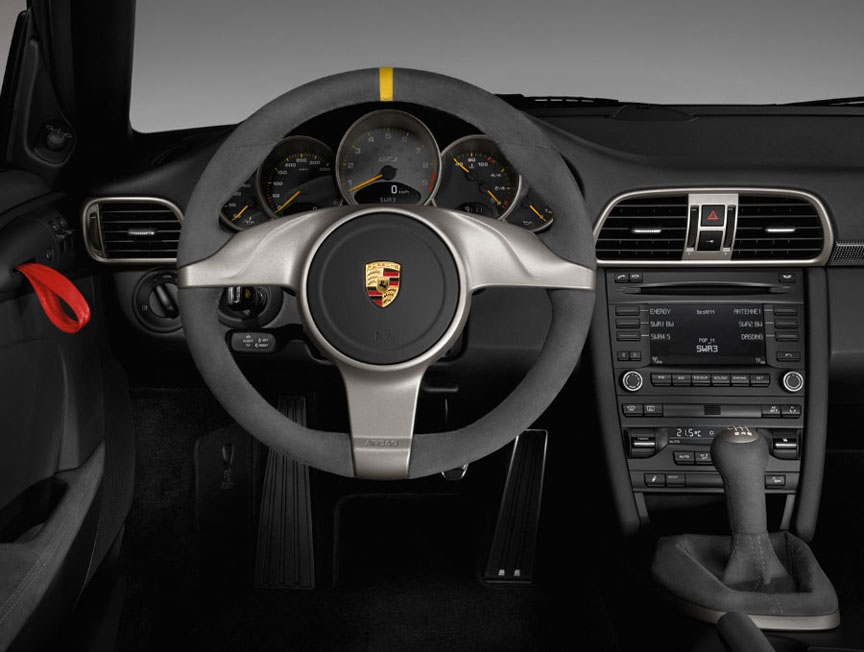
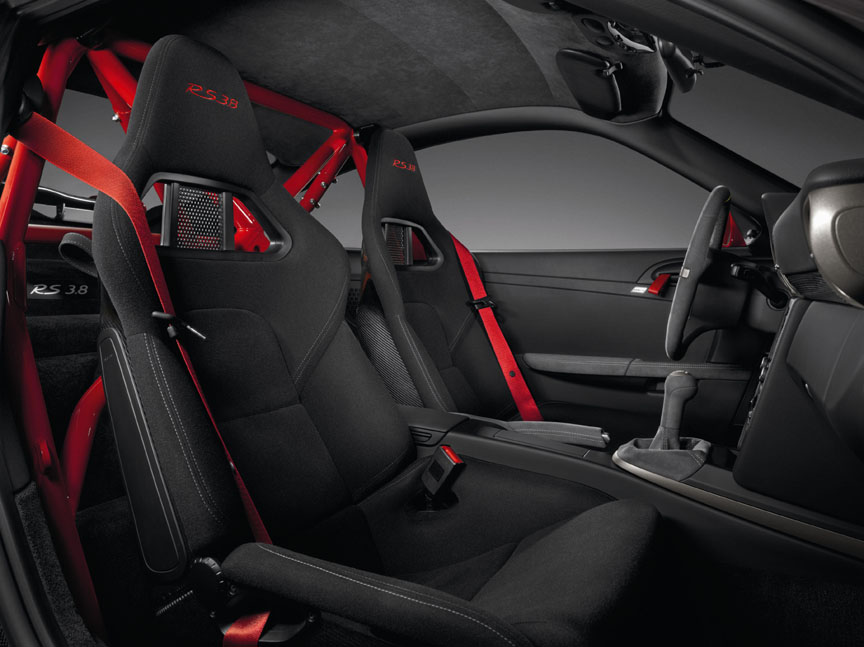
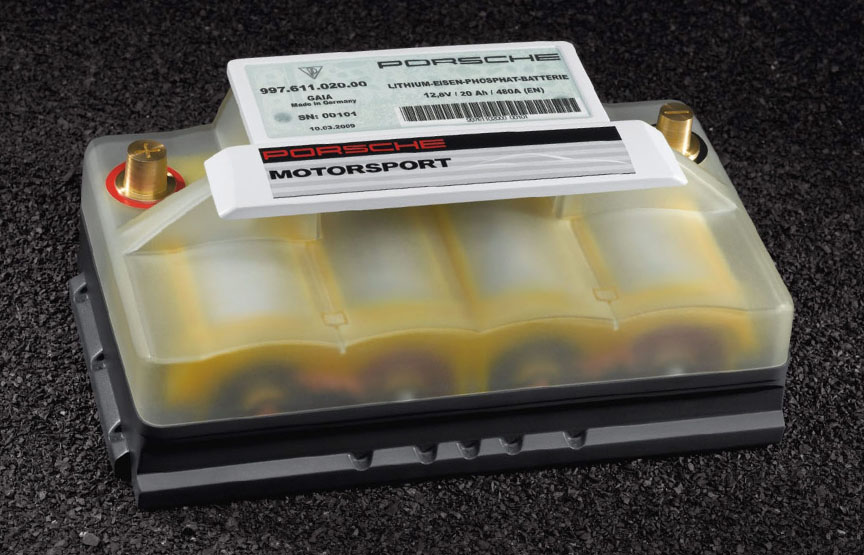
Porsche’s fourth news at the 2009 Frankfurt Motor Show was the GT3 Cup 3.8 for the 2010 racing season. Compared to the 997 Cup 3.6, the 997 Cup 3.8 has the 1.7″/44 mm wider body of the GT3 RS. Wider wheel arches also at the front allow 9.5″ wide front wheels (previously 9″). The wheel width at the rear axle grew a full inch, from 11″ to 12″. Power is significantly up from 309 to 331 kW.
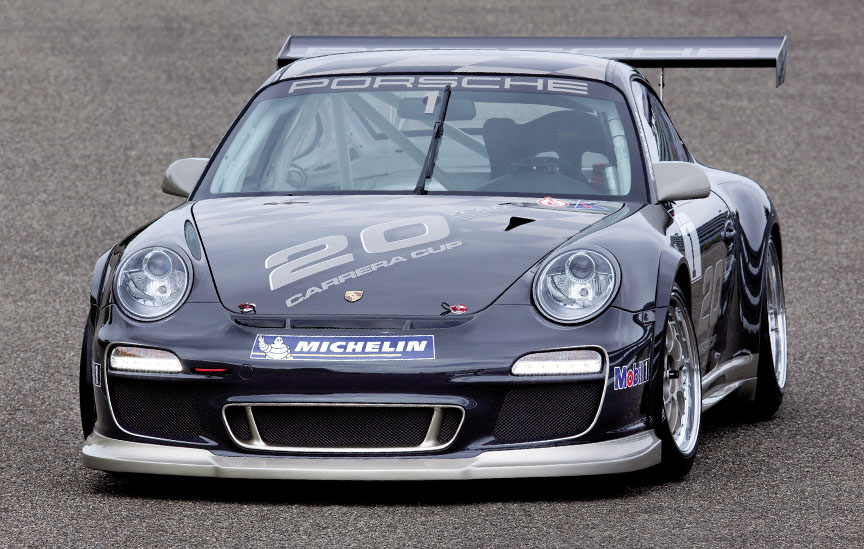
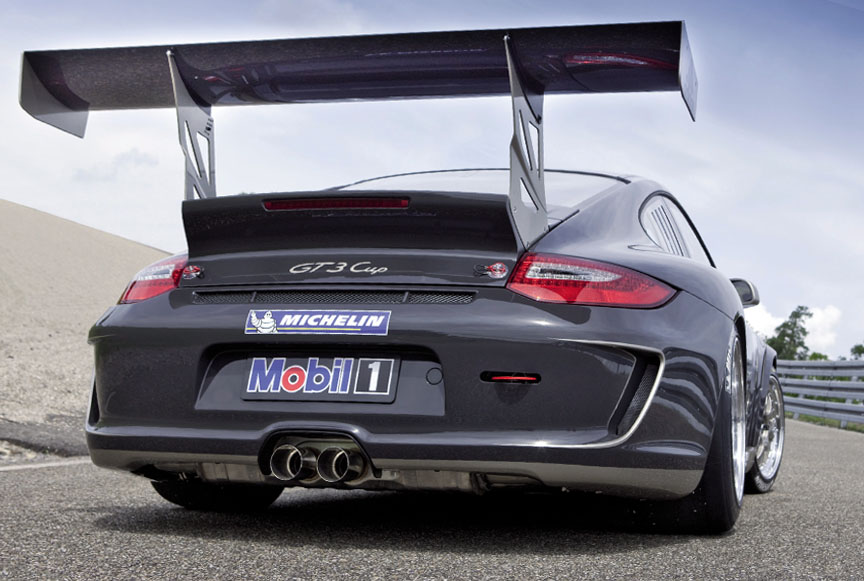
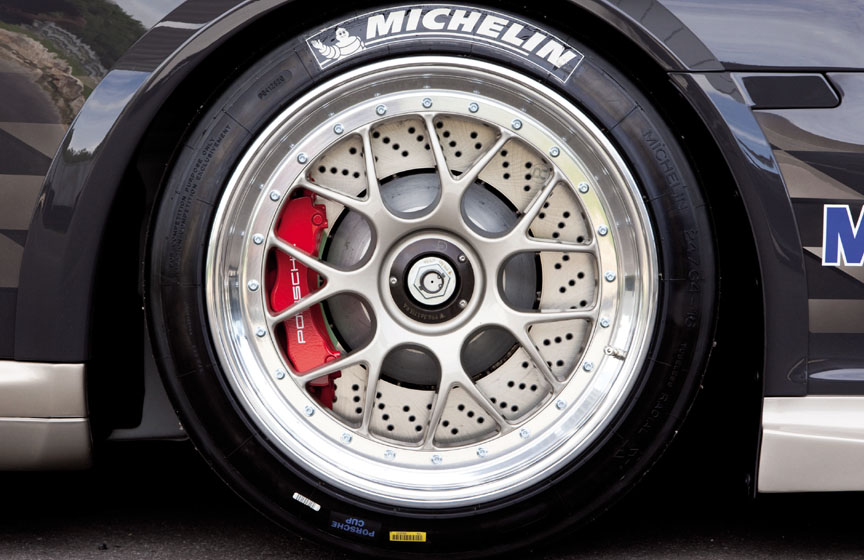
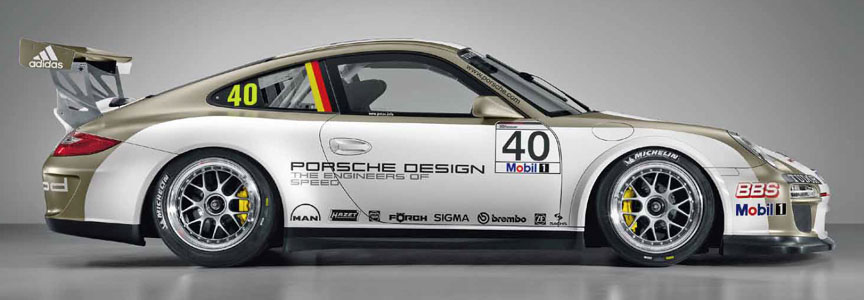
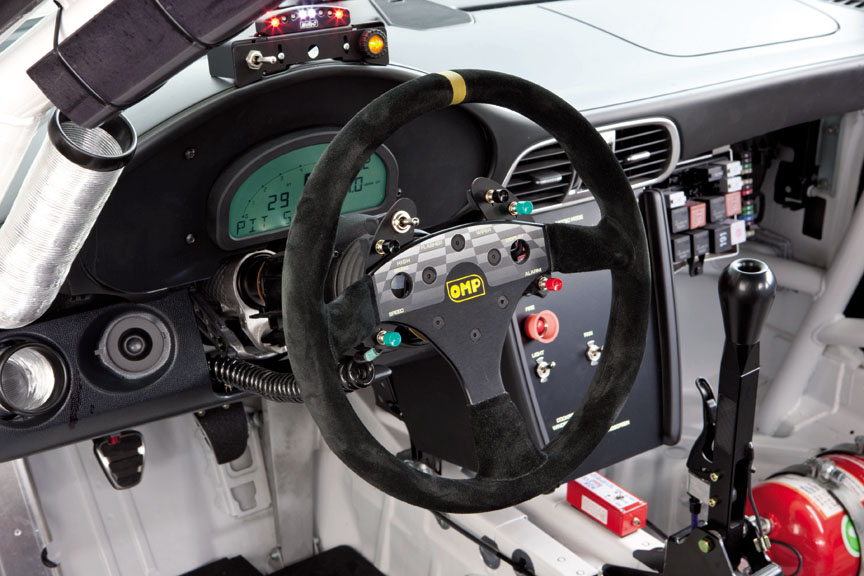
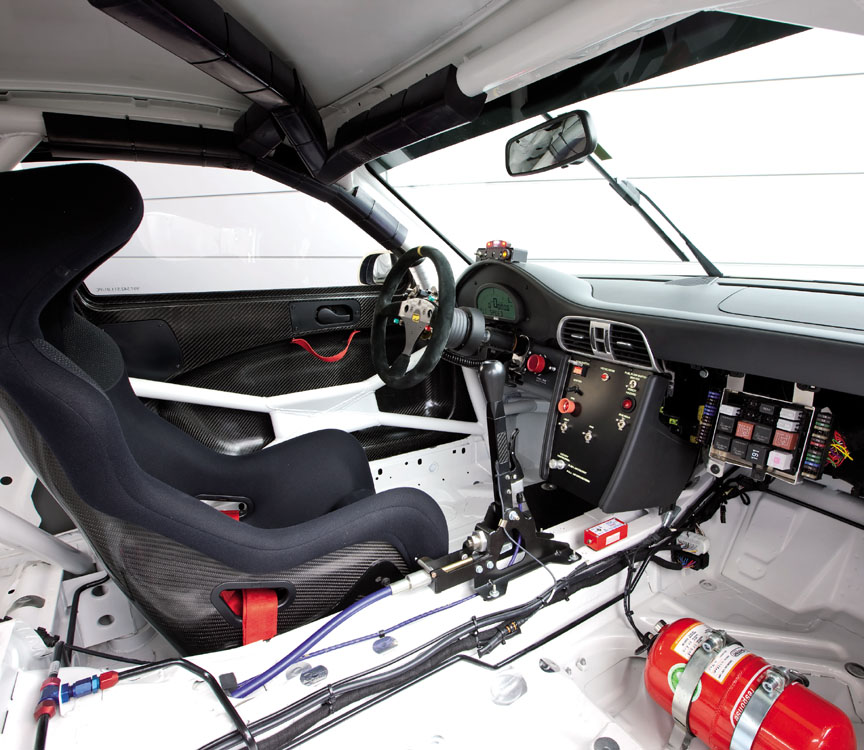
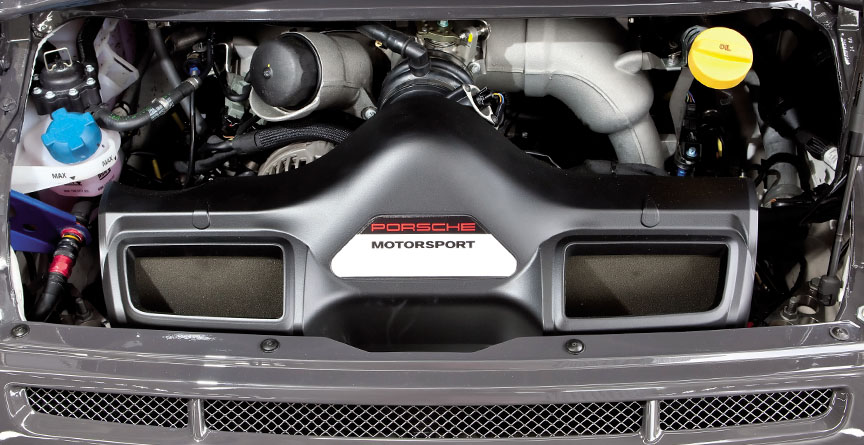
At the 2010 Birmingham Motor Show in January, Porsche Motorsport offered the more competitive 353 kW 911 GT3 R 4.0 for sale instead of the 324 kW 911 GT3 Cup S 3.6. The car was built to be raced in series based on the international FIA GT3 regulations. The e-gas with “throttle-blip” function helps change gears, sophisticated traction control helps to put the power down and race-ABS assists braking.
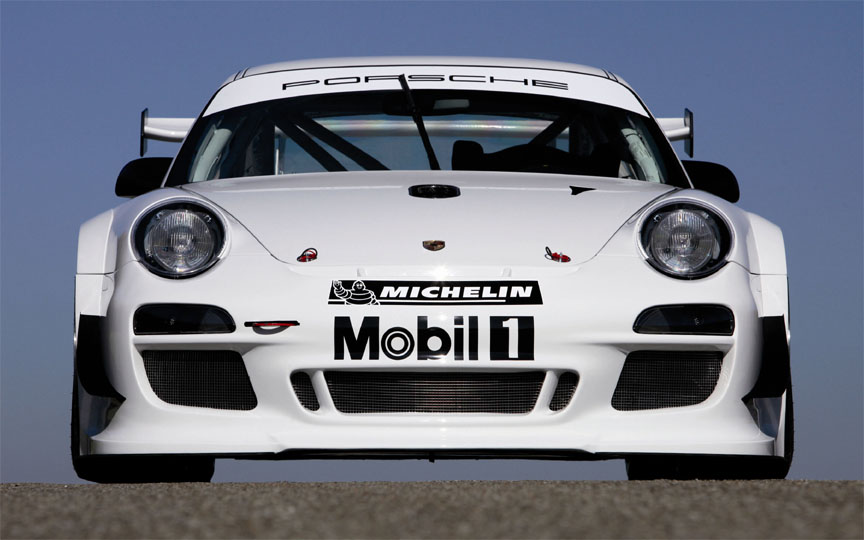
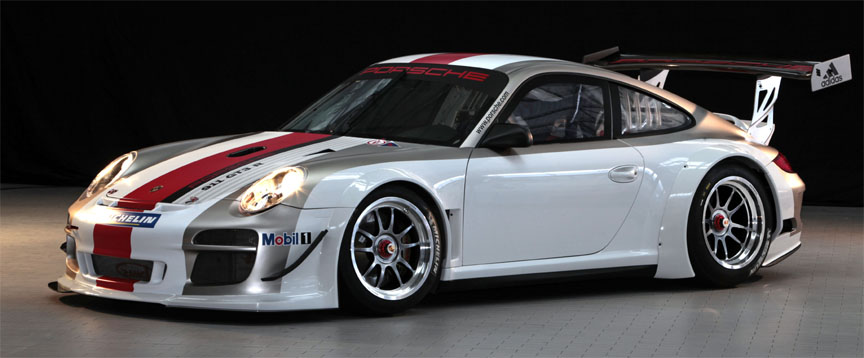
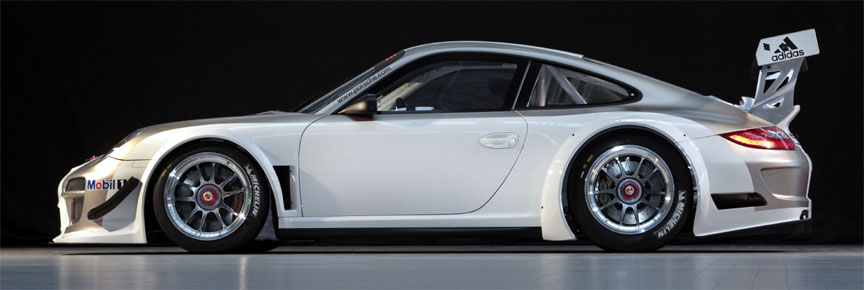
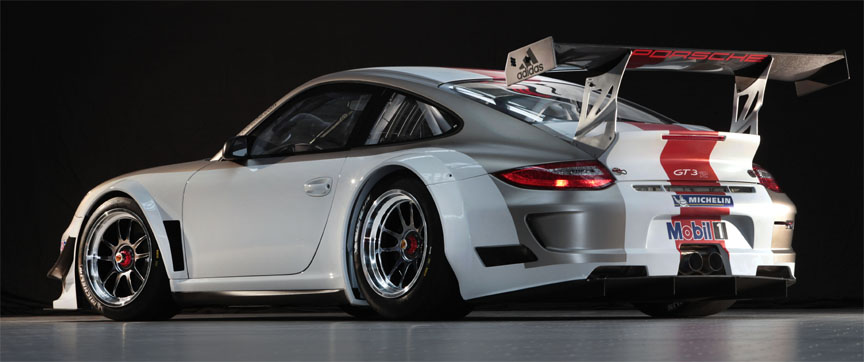
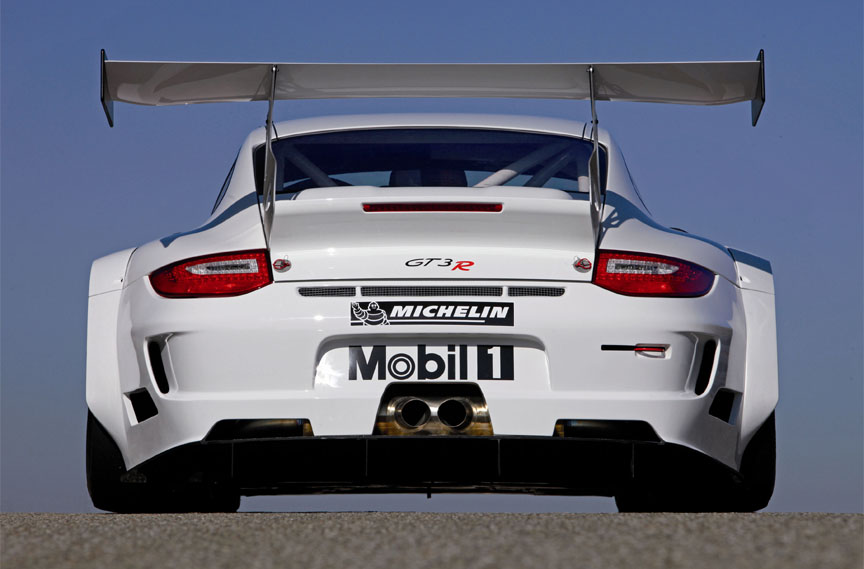
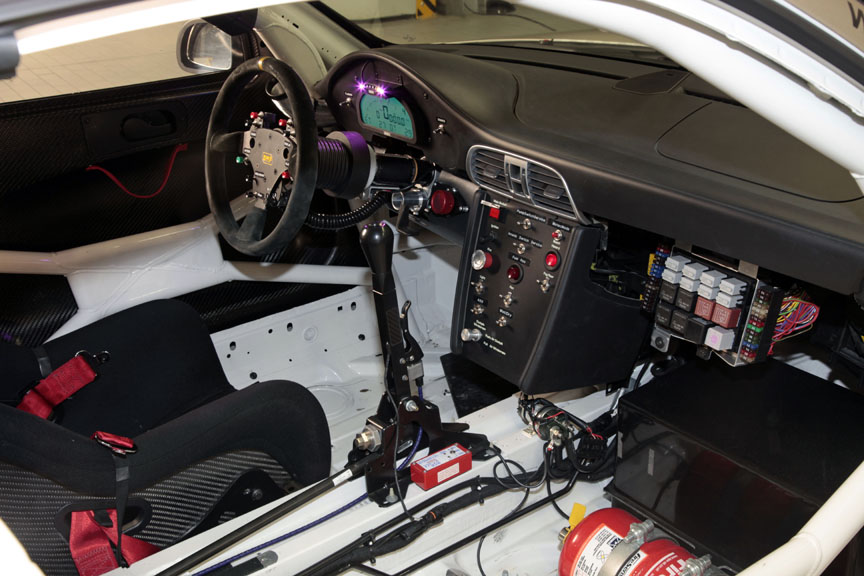
Half a year after the unveiling of the 911 Turbo 3.8, the Turbo S 3.8 was introduced at the 2010 Geneva Motor Show in March. Although with different engine, it had the same amount of power as the 997 GT2 3.6: 390 kW. As a tradition, the Turbo S was not only ultimate in terms of performance, but also in terms of equipment. The weight added by the standard PDK gearbox was balanced out by lighter PCCB ceramic brakes. Standard equipment included the central lock wheels, PTV, dynamic headlamps, SportDesign steering wheel, adaptive sports seats, Sport Chrono Turbo pack including PADM, twin-tone leather upholstery in Black/Crema or Black/Titanium Blue. Deliveries started in May 2010.
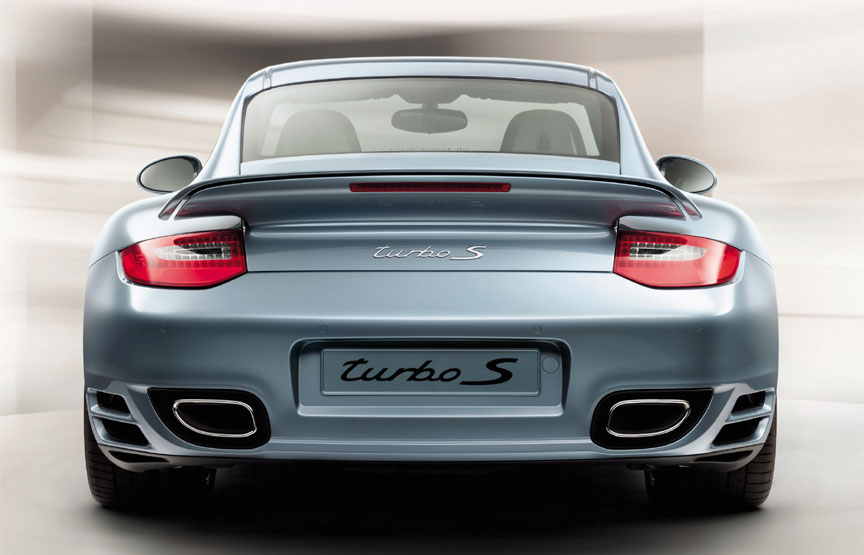
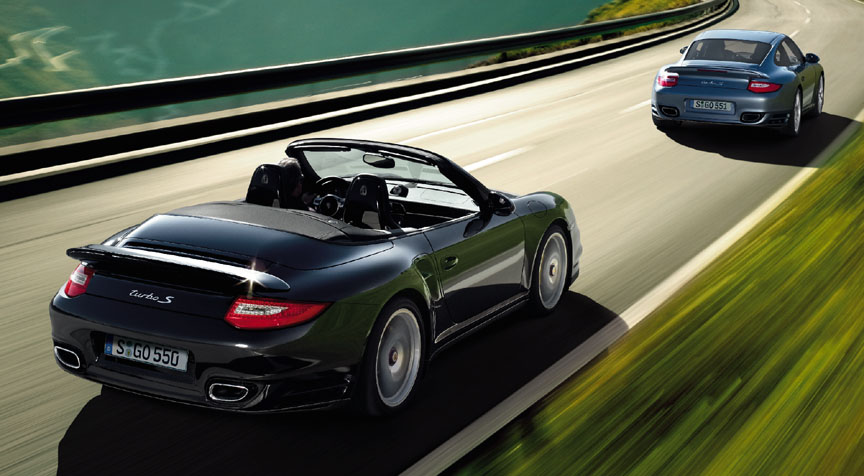
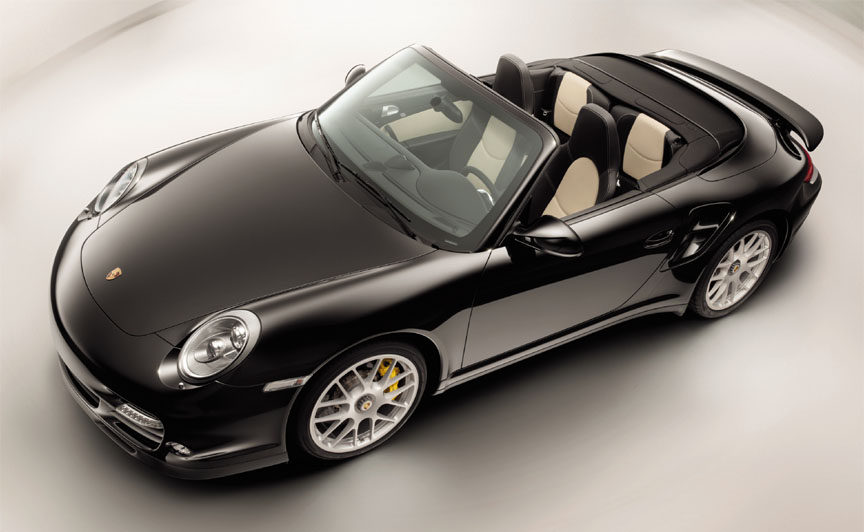
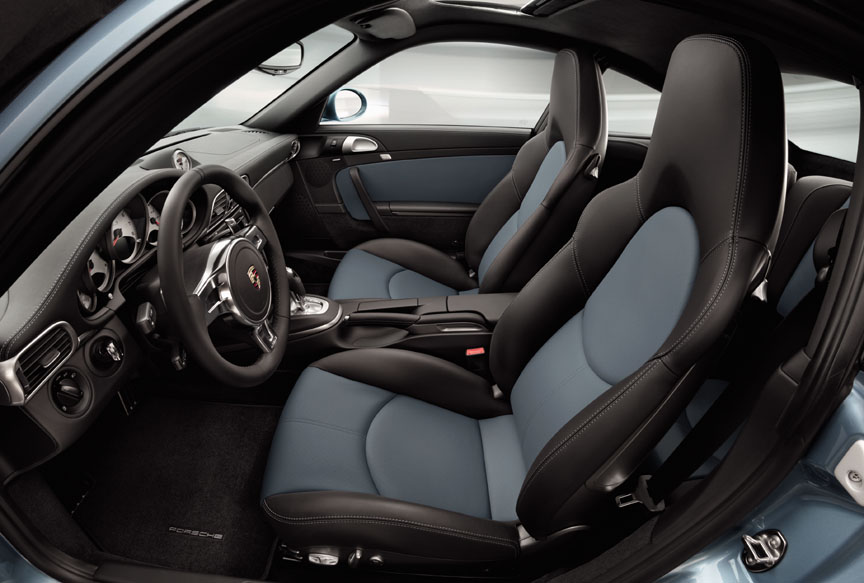
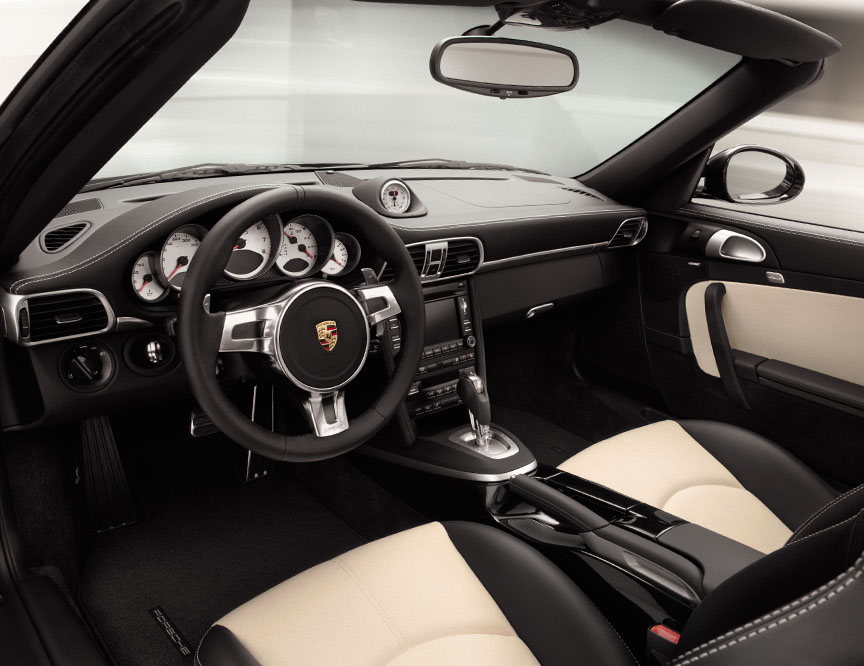
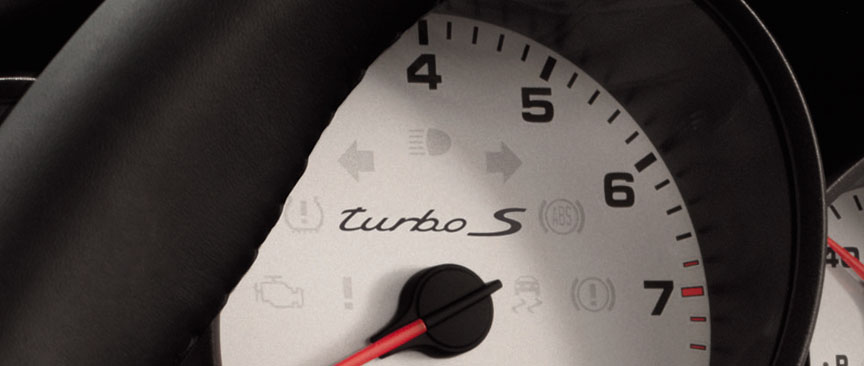
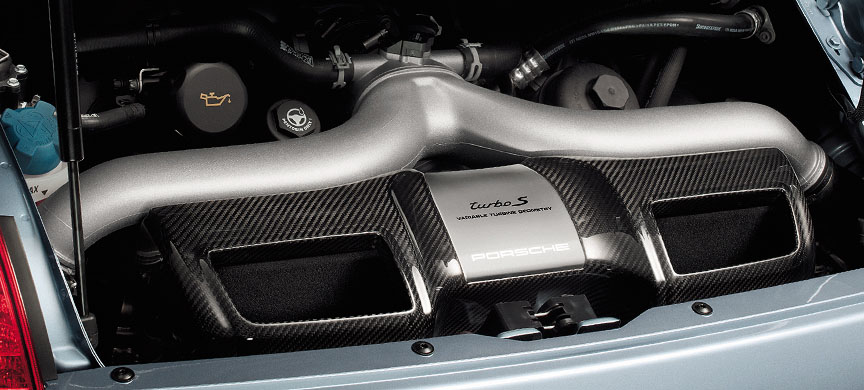
From 2010 the Aerokit for the Carrera versions was offered. It had the nice SportDesign front spoiler, but was offered with the rear spoiler of the previous generation GT3. The mix-up over the generations was questionable – why would you want to have parts from previous generation on your new car?
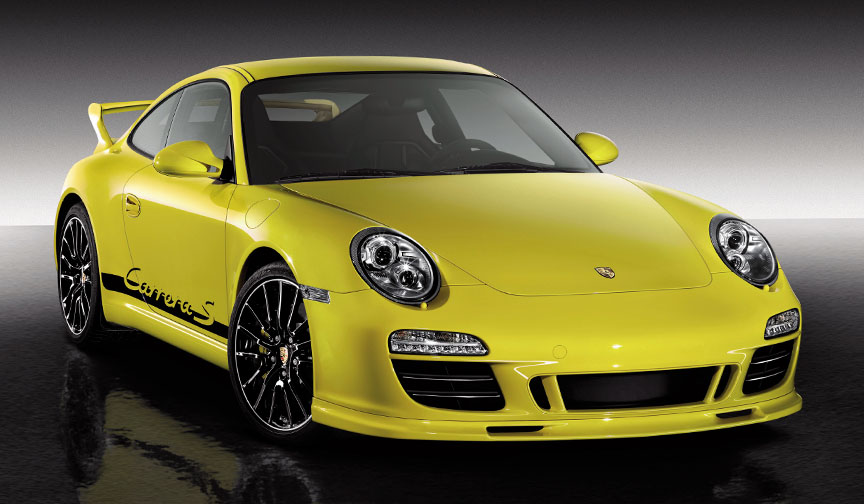
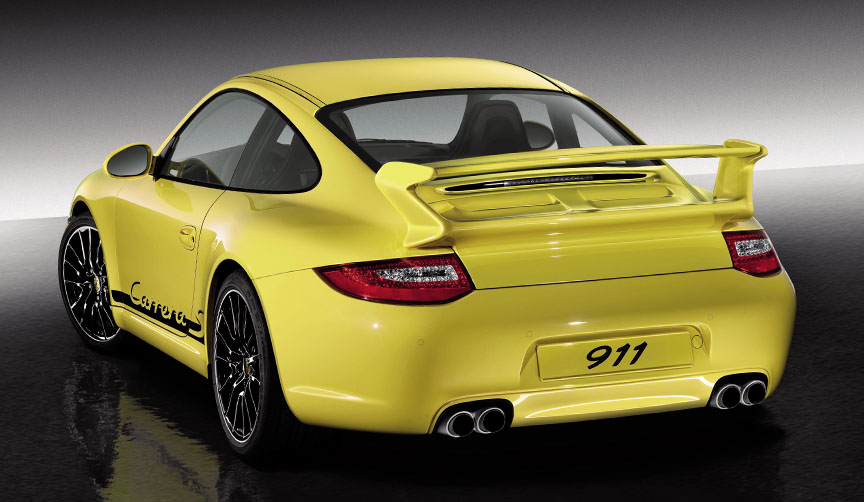
The experimental 911 GT3 R Hybrid was also shown at the 2010 Geneva Motor Show in March and then entered at the 4 hour race of the VLN (Nürburgring) series. The GT3 R Hybrid’s total peak power is 473 kW (353 kW internal combustion engine + 2x 60 kW electric motors), but that comes for the price of added weight.
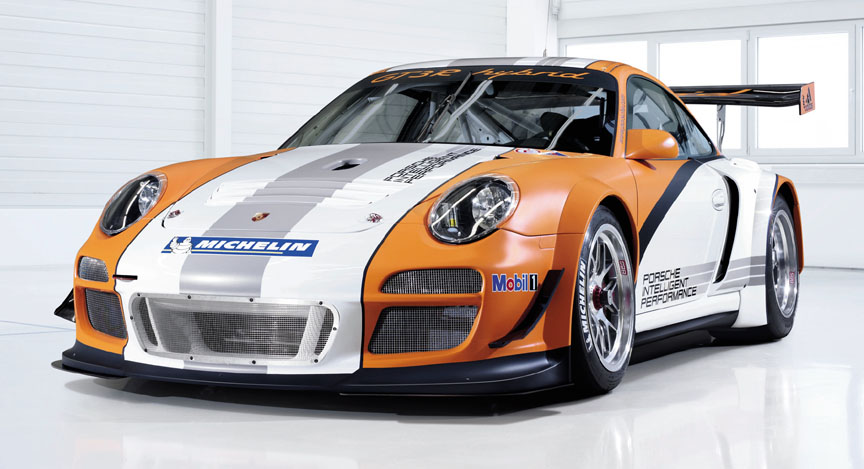
Although Porsche calls it a Hybrid for marketing reasons, the system used is a KERS – electric energy is generated under braking and then used to improve acceleration. The car uses neither batteries nor accumulators. An electrical flywheel power generator fitted in the cockpit delivers energy to the electric motors at the front. The flywheel generator is an electric motor storing energy mechanically as rotation energy. The flywheel generator is charged when the driver applies the brakes, with the two electric motors reversing their function on the front axle and acting as generators. This makes the flywheel battery spin. When accelerating out of a bend or when overtaking, the driver is able to call up extra energy from the charged flywheel generator, the flywheel being slowed down electromagnetically in the generator mode and thus supplying the electric motors from its kinetic energy. This additional power is available to the driver after each charge process for up to 8 seconds. Energy formerly converted – and thus wasted – into heat upon every application of the brakes, is now converted into additional drive power. Hybrid system helps to save fuel which means less fuel stops are needed. The flywheel accumulator was developed by Williams F1 engineers.
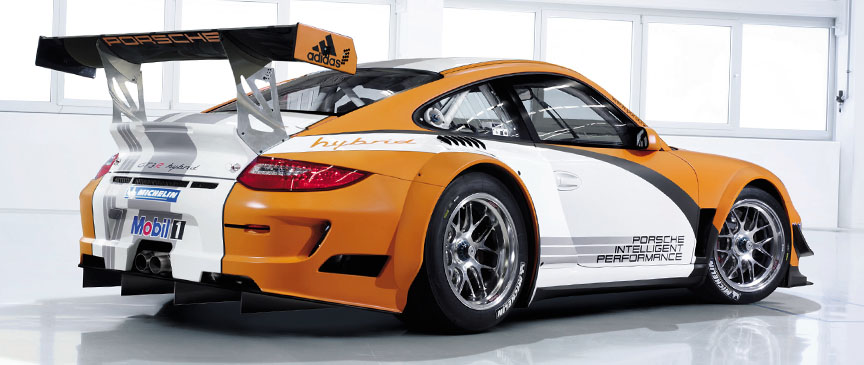
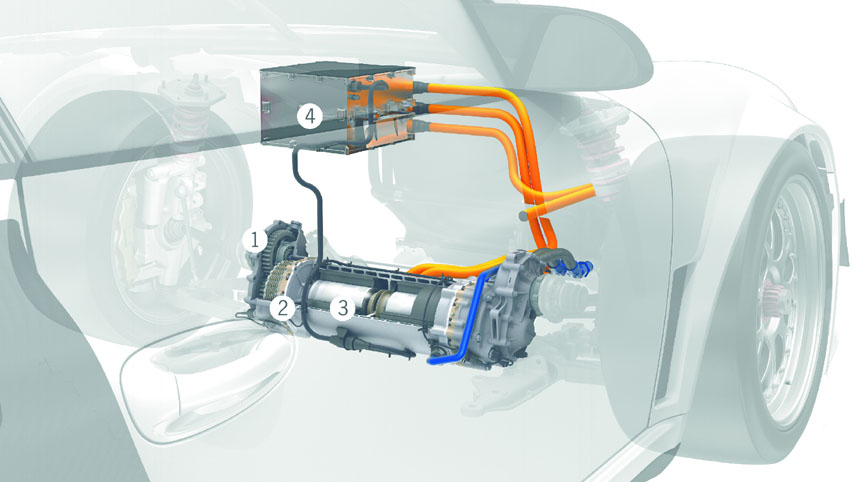
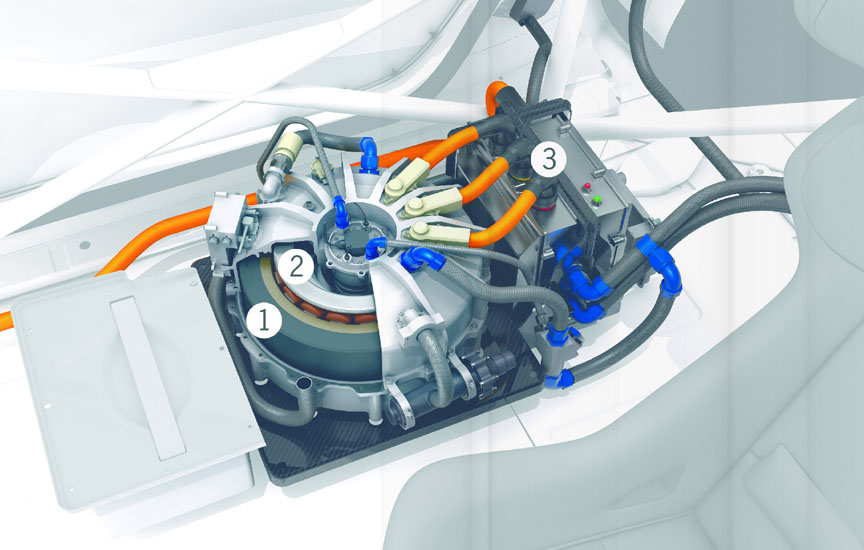
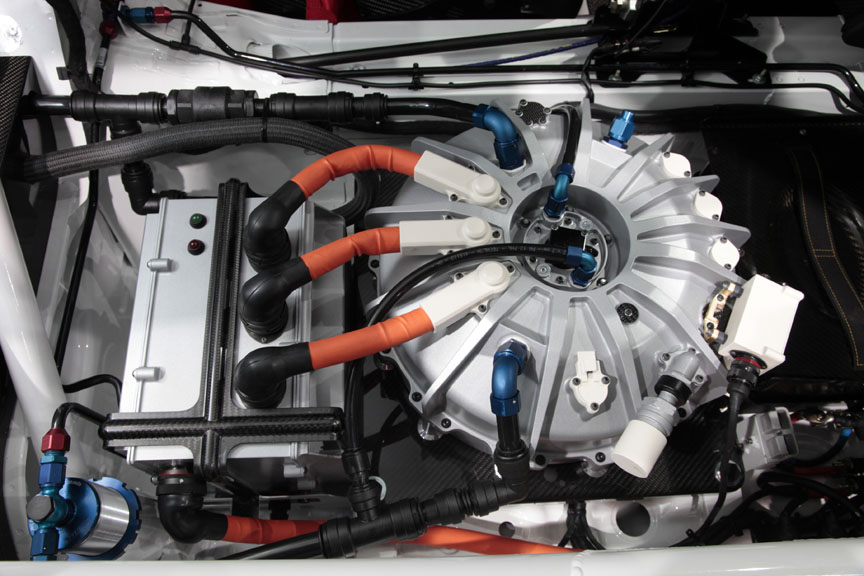
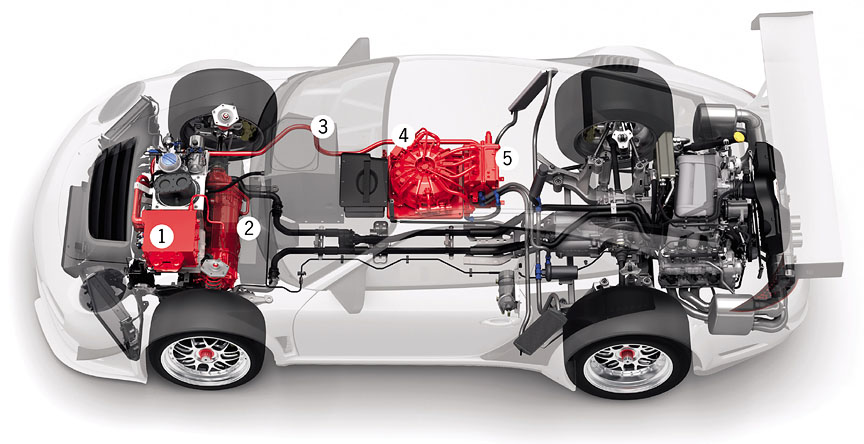
The GT3 R Hybrid was tested at first two 4 hour races of the 2010 Nürburgring VLN series. At the maiden race it finished 7th among 114 finishers from 169 participating teams. At the second VLN race, the Hybrid already scored 3rd among 142 finishers from 206 teams.
The mega news arrived in May 2010 when the 456 kW 997 GT2 RS was announced. With such an amount of power and rather lightweight construction (1370 kg/3020 lb), the turbocharged 997 GT2 RS 3.6 has 50% (!!!) better power-to-weight ratio compared to the 997 Turbo 3.6. No wonder then, it is capable of covering the Nürburgring Nordschleife in 7:18 and goes from zero to 300 km/h (186 mph) in 28.9 seconds.
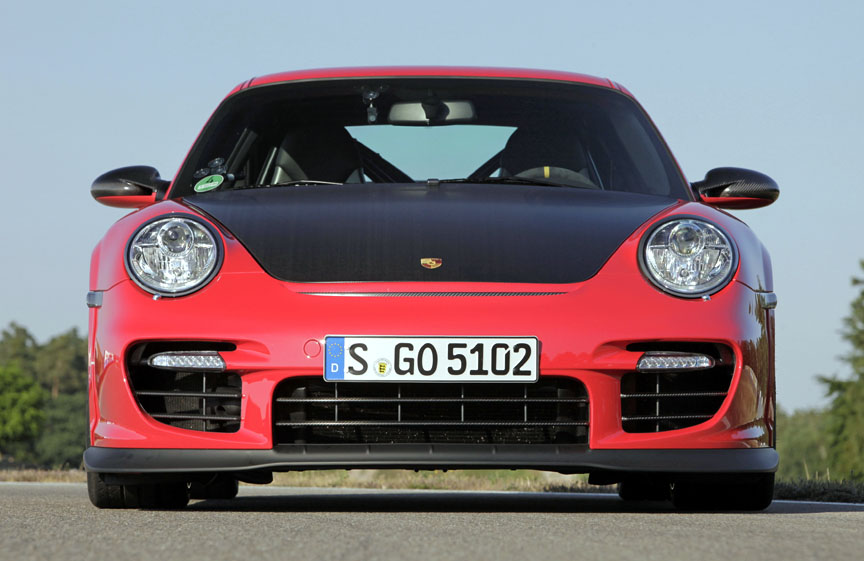
The contrasting front lid and side air intakes look rather hideous because they are large objects and don’t have the relation to any other object on this sculpture. Black coloured GT2 RS therefore looks the best. The GT2 RS was offered only in the most porscheish colors: red, silver, black non-metallic and white. The car was shown for the first time at the Moscow Auto Show in August 2010 and deliveries started in September. Around 25% of the 500 GT2 RS were sold by Porsche Cars North America and delivered in February 2011.

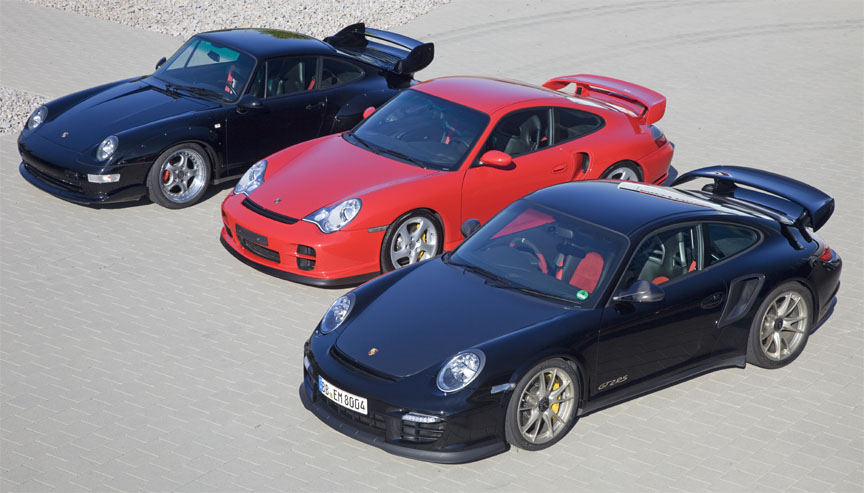
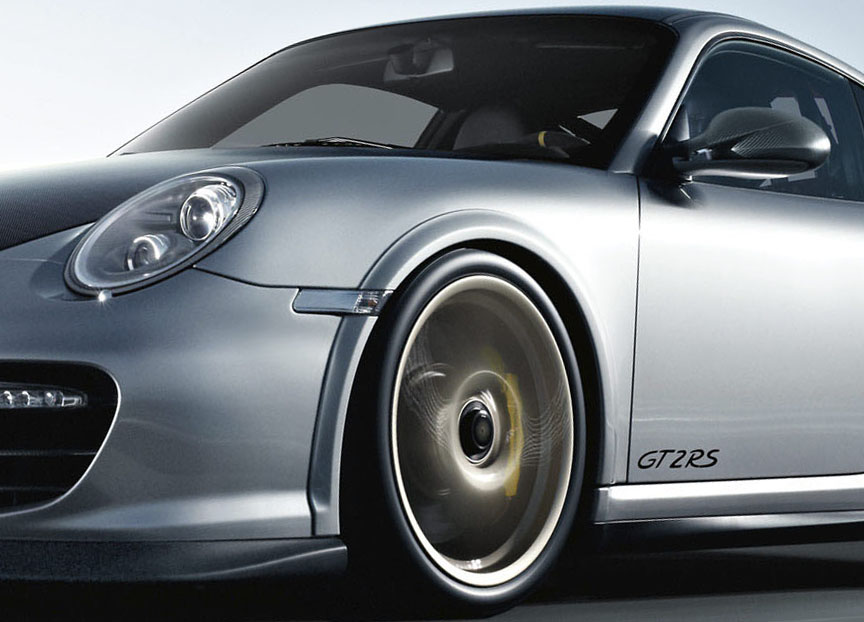
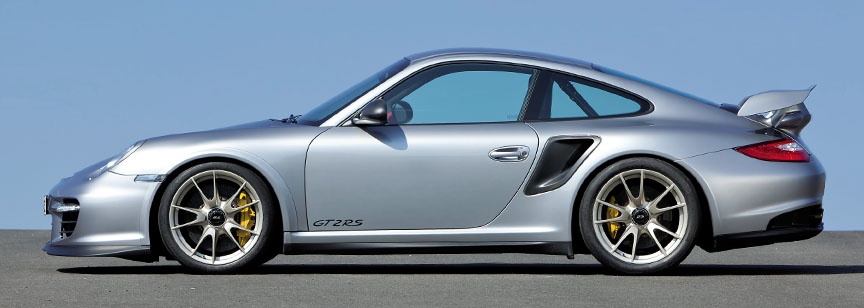
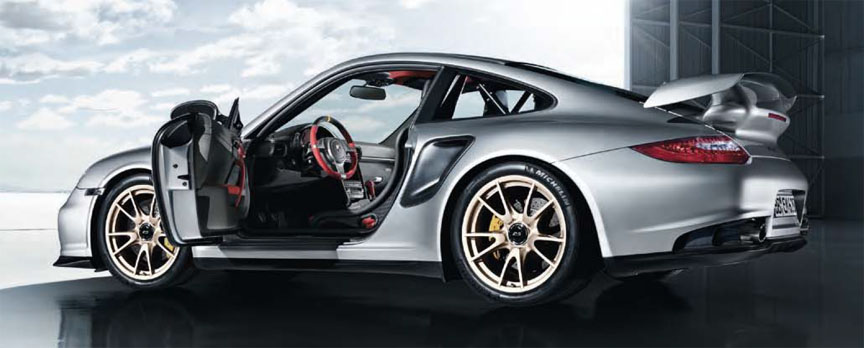
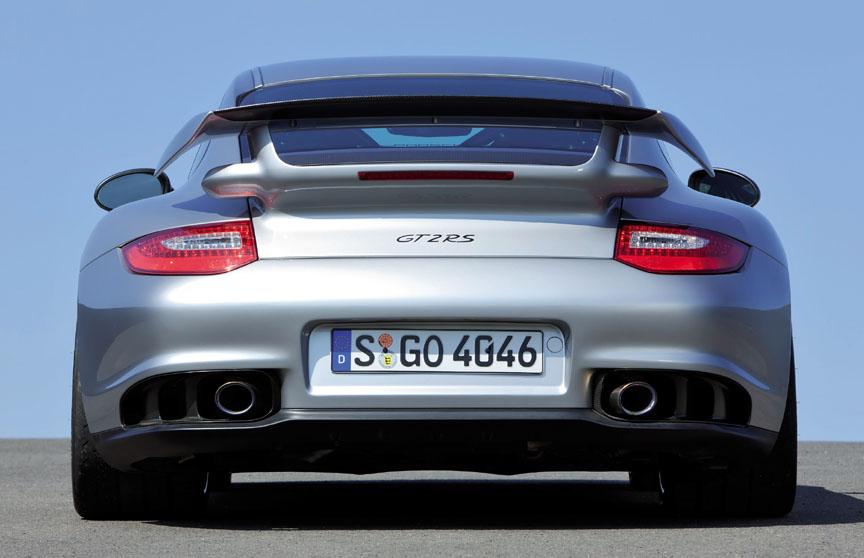
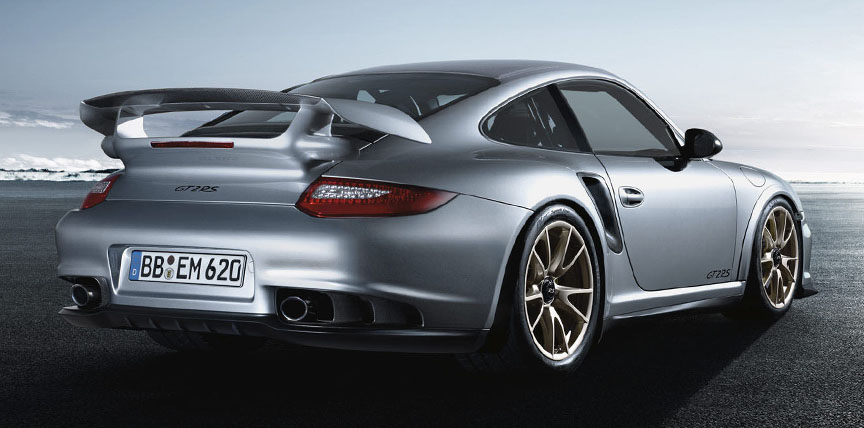
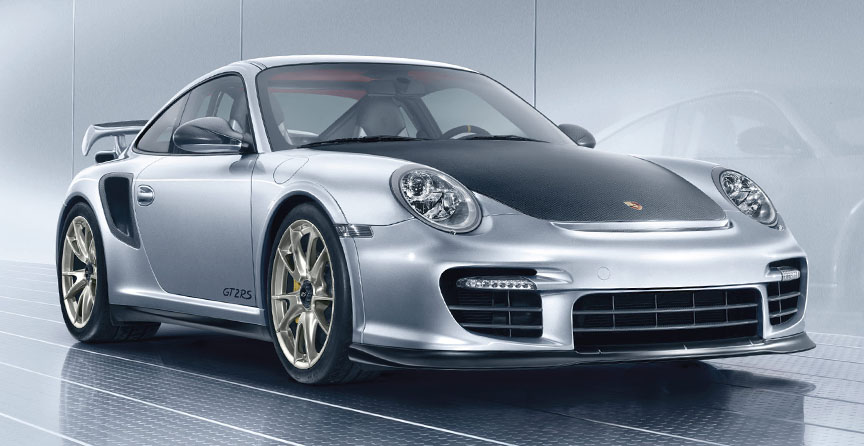
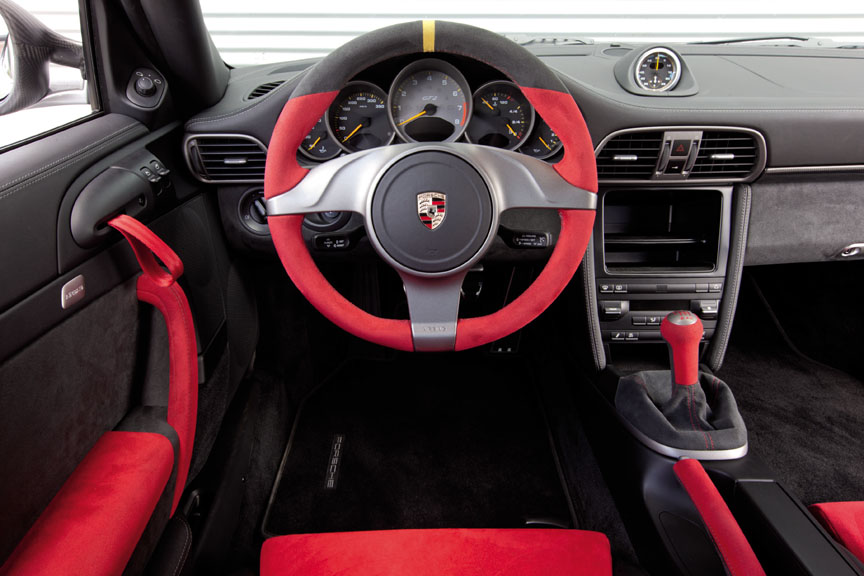
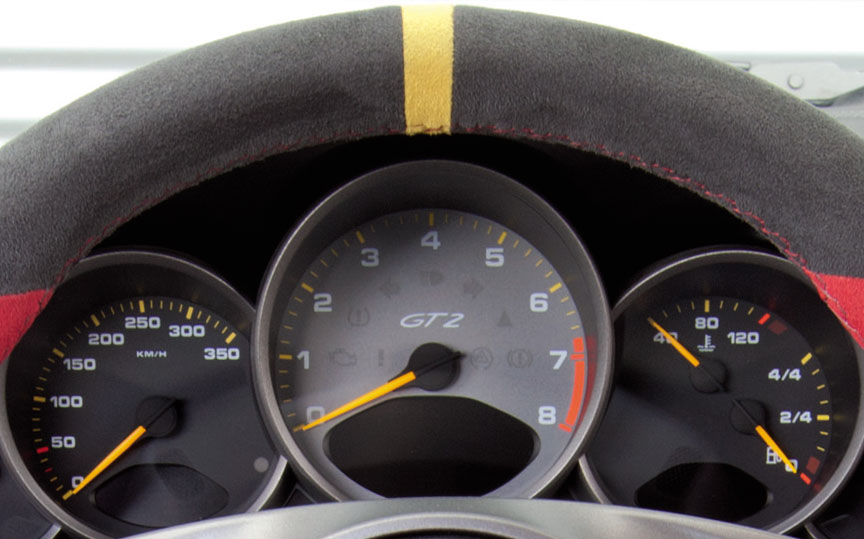

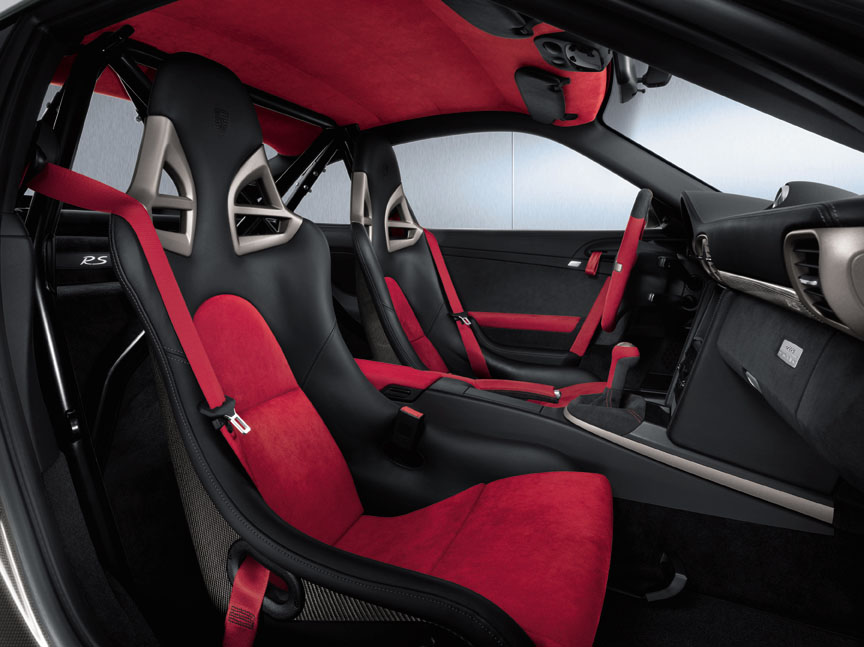
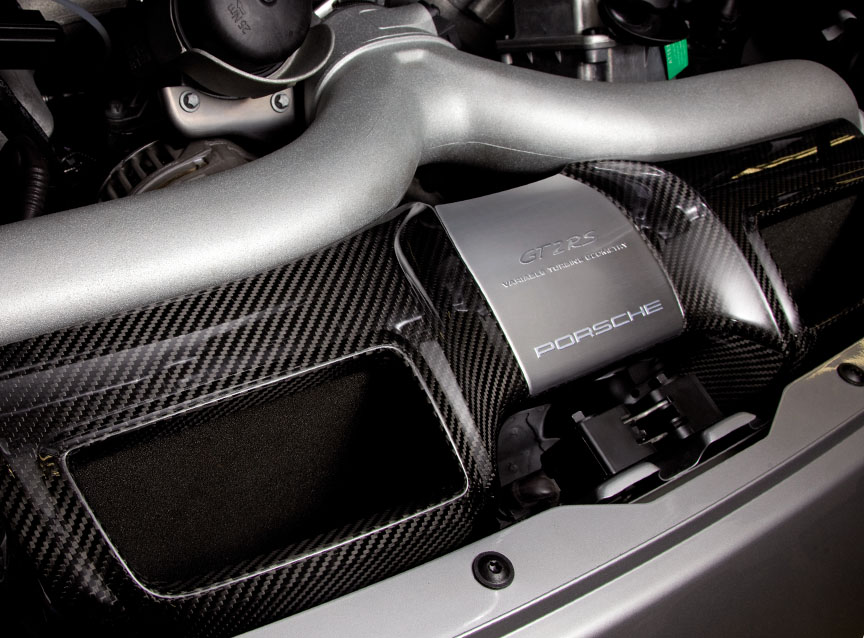
Although the GT3 R Hybrid wasn’t entered for the VLN series anymore, it was entered for the 2010 Nürburgring 24 hour race! Right up until 2 hours before the chequered flag of the gruelling N24 race, the GT3 R Hybrid held the lead. Then the internal combustion engine failed.
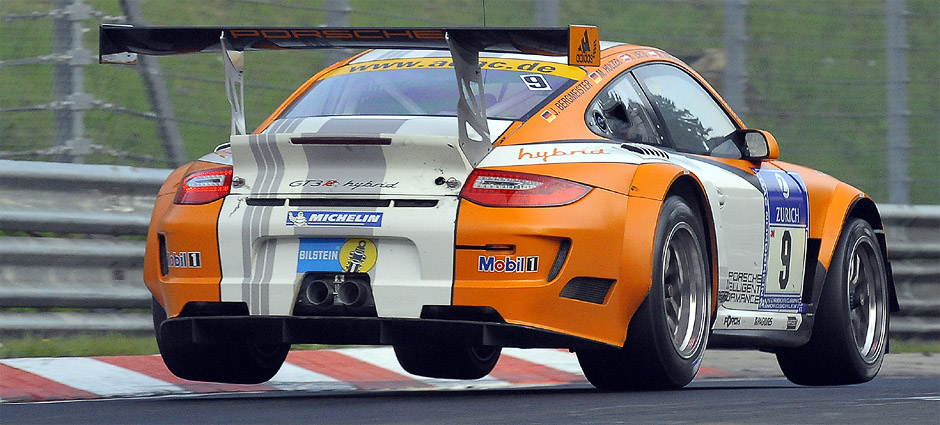
Porsche wanted to show its core values of building cars that you can use daily and race on the weekend without worries on durability, so they entered a street legal GT3 RS 3.8 also for the Nürburgring 24 hour race. The car was signed up with the following drivers:
* Chris Harris (35): no comments, every Porsche-head knows this Porsche-head
* Roland Asch (59): Porsche 944 Turbo Cup Germany winner 1987, 1988, 1989, Porsche 964 Carrera Cup winner 1991
* Horst von Saurma (55): the legendary ‘Sport auto’ magazine journalist who happens to be a Nordschleife specialist
* Patrick Simon (35): racing driver, Nordschleife specialist
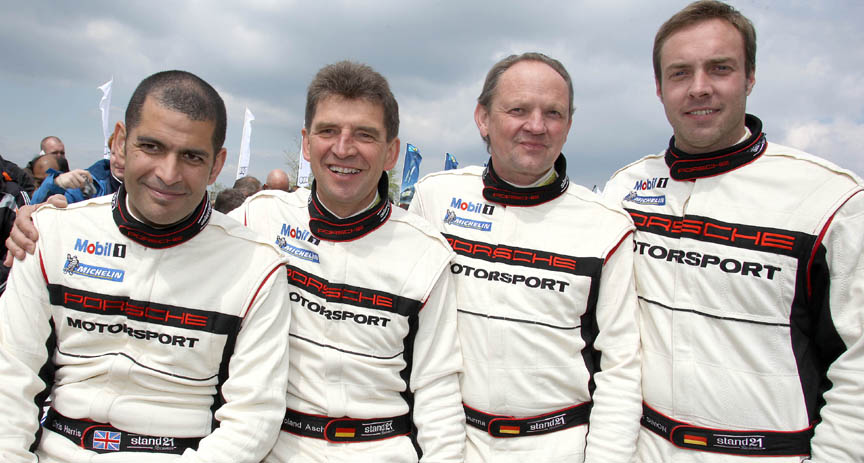
Because of the road surface at some points of Nordschleife not suitable for the LM prototypes (Carousel for example), the N24 race is for sports cars only. It is the most crowded 24 hour race in the world. Thanks to the combined length of the Nordschleife and the Nürburgring F1 track, huge amount of racing cars – approximately 200 – are allowed to take part. One pit garage is shared among 4-5 cars!
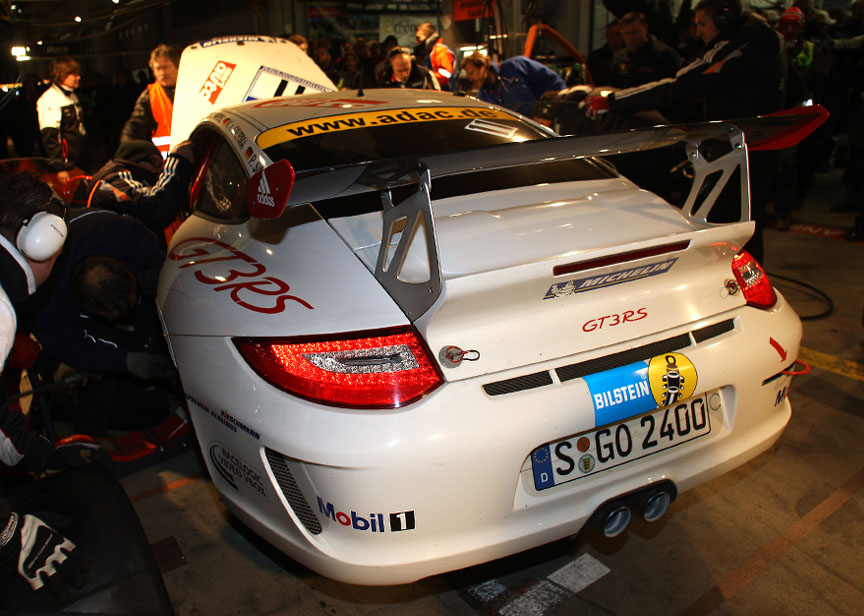
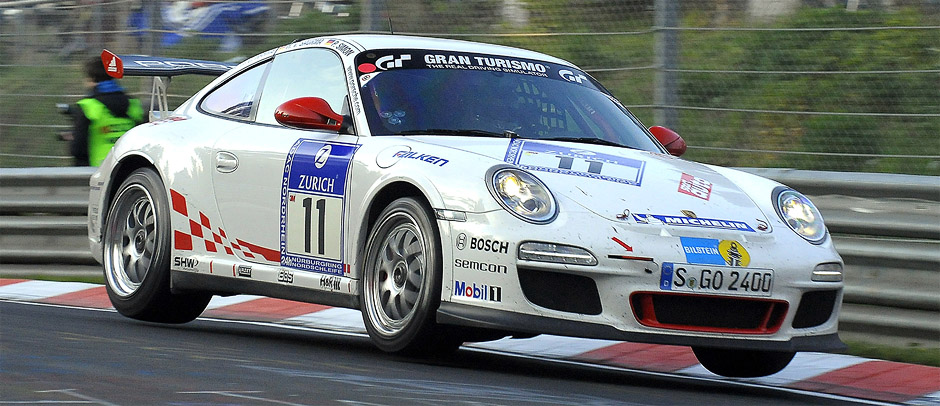
The combined length of the classic Nordschleife (Northern Loop) and the F1 track is 15.8 miles/25.3 km. At the 2010 N24 race 197 cars participated and 123 finished. The team with the street-legal GT3 RS 3.8 scored a good 13th place. The only non-street parts that had to be installed according to the rules for maximum safety, were the different roll cage and the seat.
Roland Asch: “As planned, we replaced the front brakes during the race, but other than that, the mechanics concentrated on refuelling, tyre changes and cleaning the windows during the pit stops. The car ran like clockwork.” He also said “The interior is unusually quiet and somewhat more comfortable for the driver.” After the race the engine ran like new, and not one unfriendly noise came from its manual gearbox. The pilots could complete up to 11 laps (which is 173 miles/279 km) before having to refuel – considerably more than most of their direct competitors. Before the race the car was driven to Nürburg from Stuttgart (200 miles/320 km) and was driven back home after the race. How cool is that!
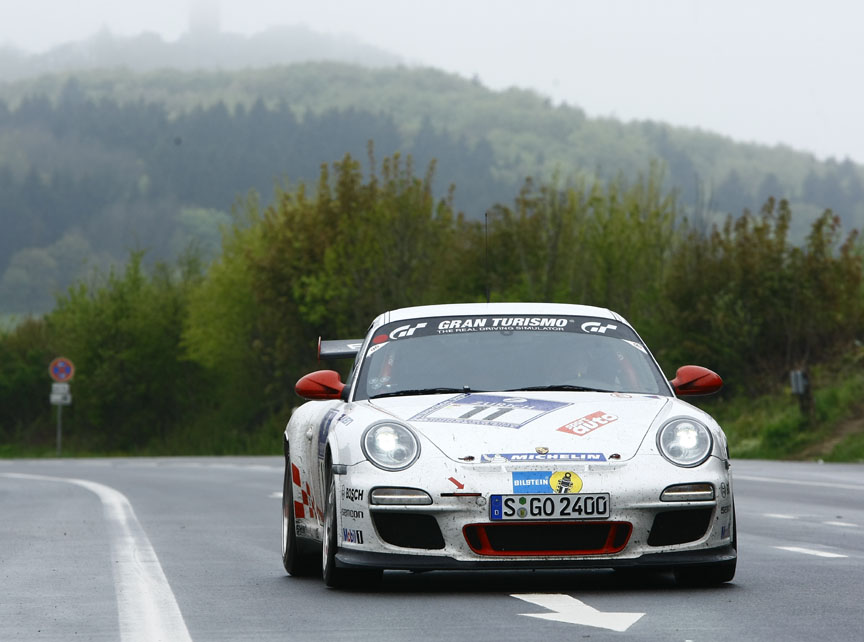
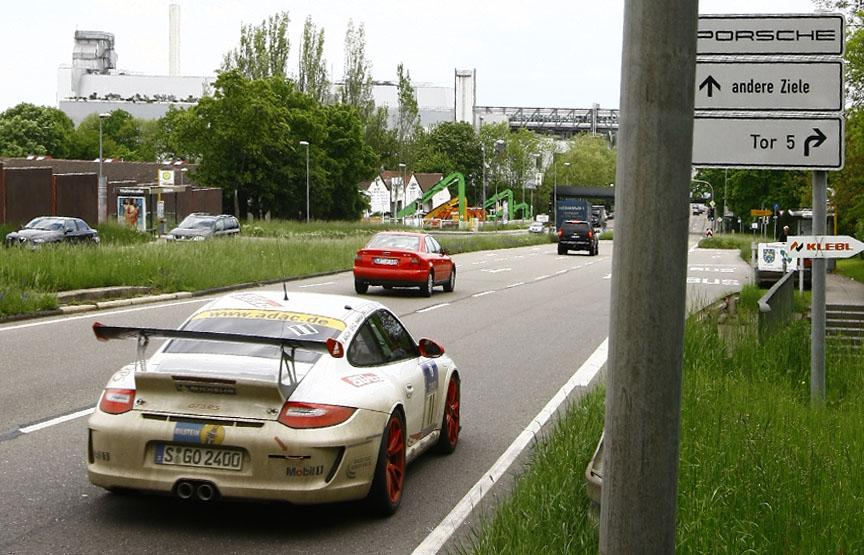
The 2010 Le Mans 24 hour race went well for the GT2-class Porsches: Team Felbermayr Proton won and third place went to BMS Scuderia Italia (both using GT3 RSR 4.0) with a Ferrari between them.
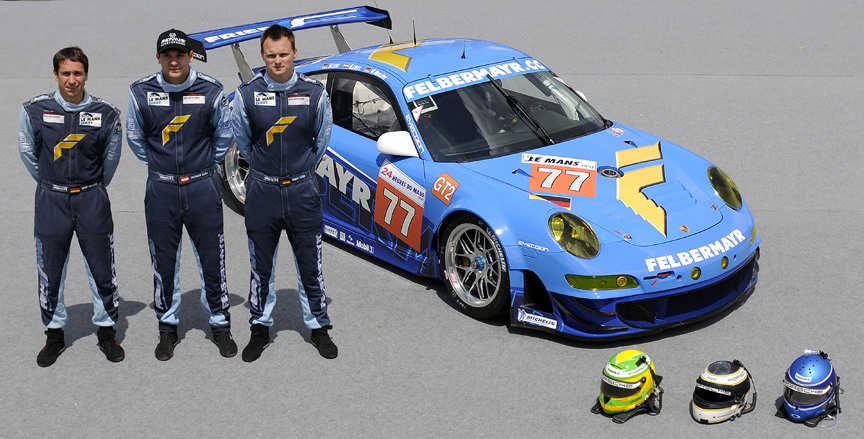
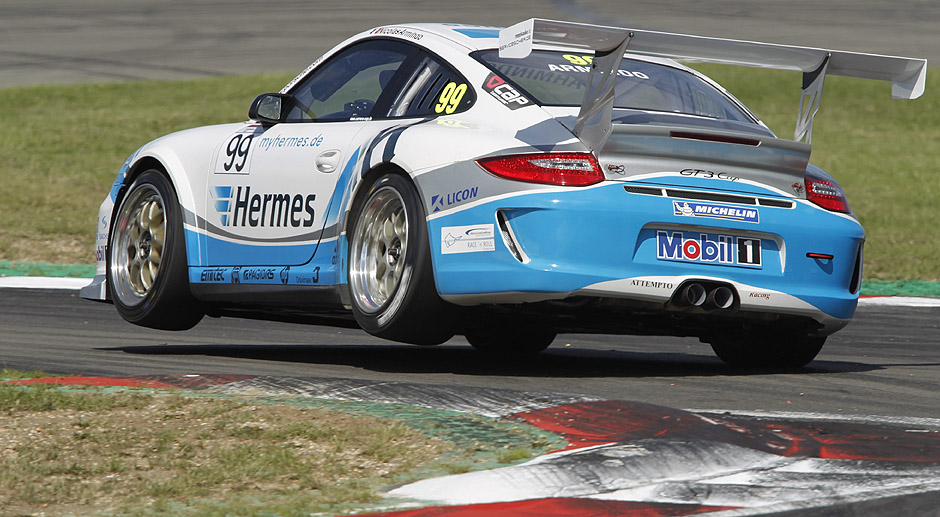
With the 997 nearing its production cycle, the best offers were made. The 911 Carrera GTS was unveiled at the Mondial de l’automobile Paris Motor Show in the end of September 2010 as a 2011 model. It was essentially a Carrera S with WLS powerkit, SportDesign front spoiler, central lock wheels and interior from the GT3. The body had the wider rear fenders like the GT3 RS. With rear wheel drive, wide body and engine powerkit it was almost like the 911 Sport Classic introduced a year earlier. A 911 Carrera couldn’t get much better than this! With the GTS a lot of equipment was offered for a good price. The GTS Coupé was available in 2- and 4-seat configurations. With the manual gearbox it was a superb 911 because its suspension wasn’t as harsh as in the GT3 and the car was therefore more everyday-friendly. Deliveries started in December 2010.

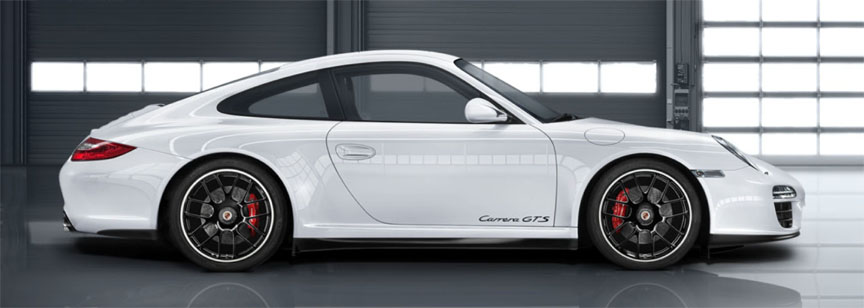
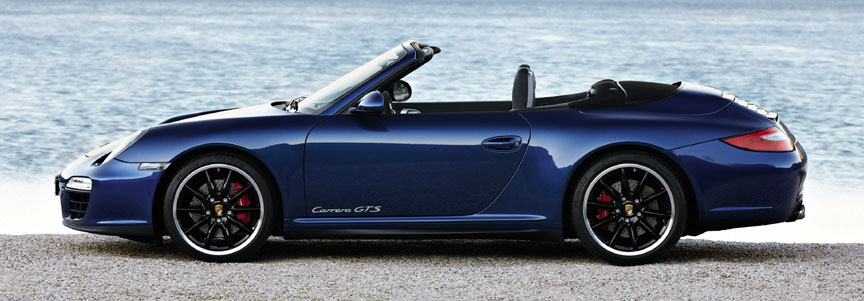
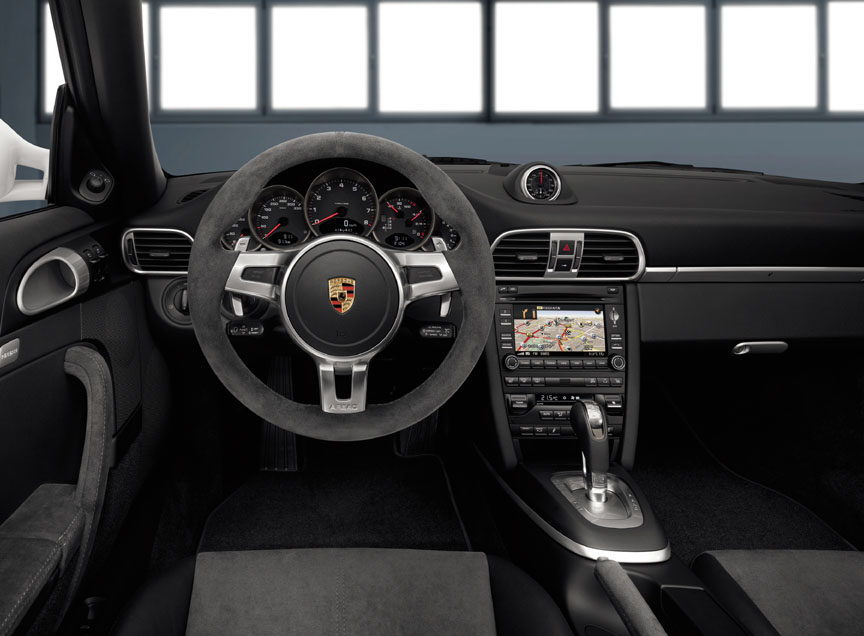
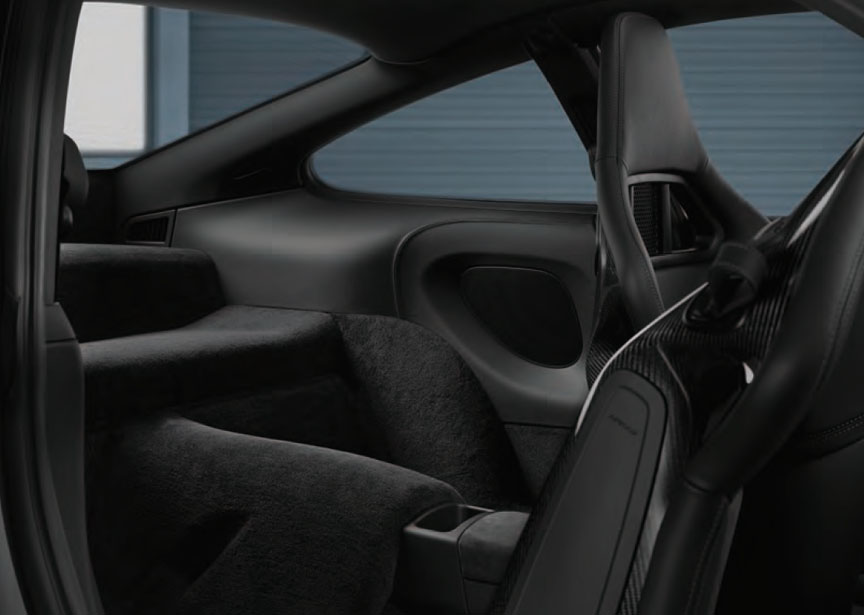
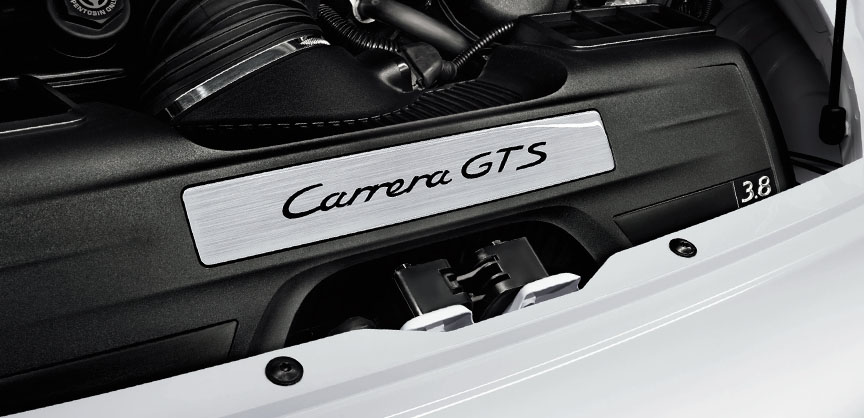
Together with the 911 Carrera GTS, the 997 Speedster was unveiled at the 2010 Paris Motor Show. The 997 Speedster was like the open version of the 911 Sport Classic introduced a year earlier. While the idea of the original 1953 356 Speedster was to be a track day car and it therefore was the lightest 356, the 997 Speedster is a heavy 911. The 997 Speedster has the wider (and heavier) body from the 4WD versions and was made only with the heavier PDK gearbox. In terms of equipment, most of the 997 optional equipment was made standard for the Speedster. 356 cars were made. Deliveries started in December 2010.

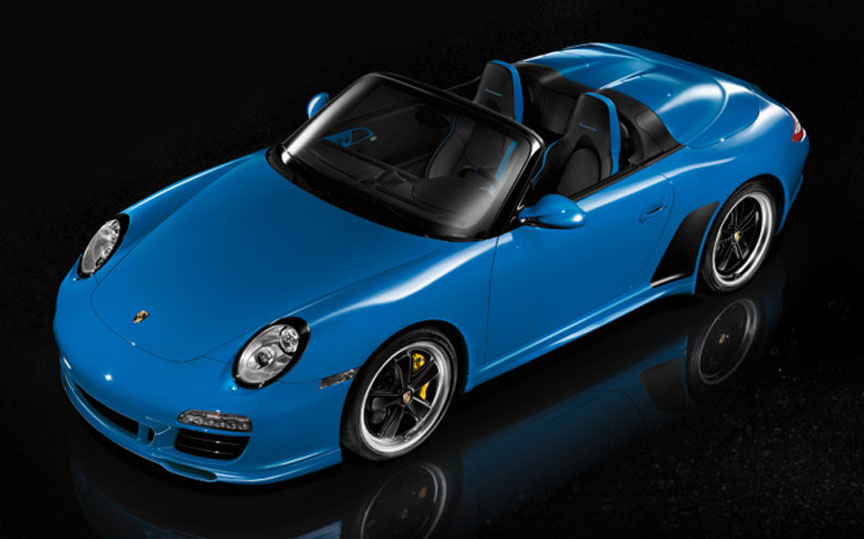
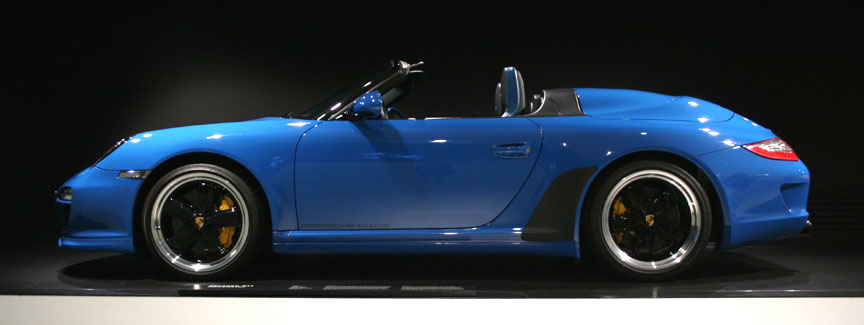

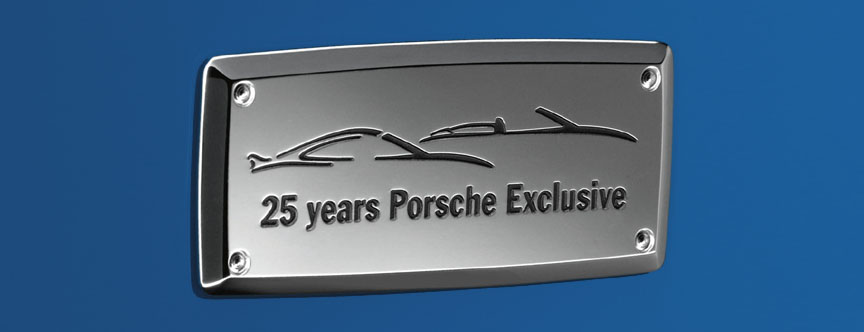
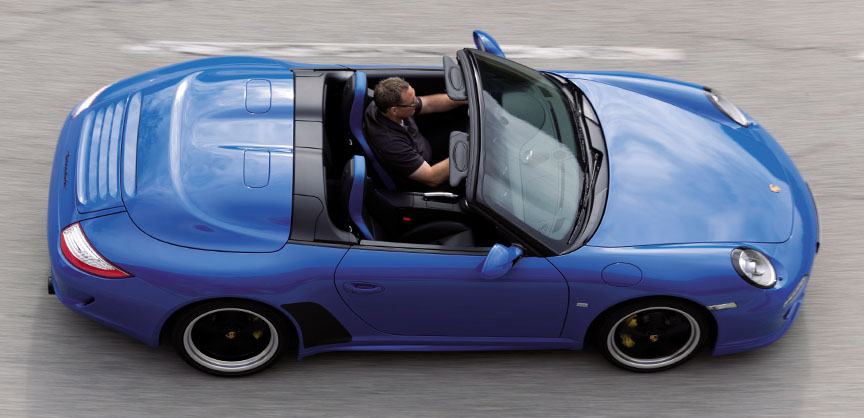
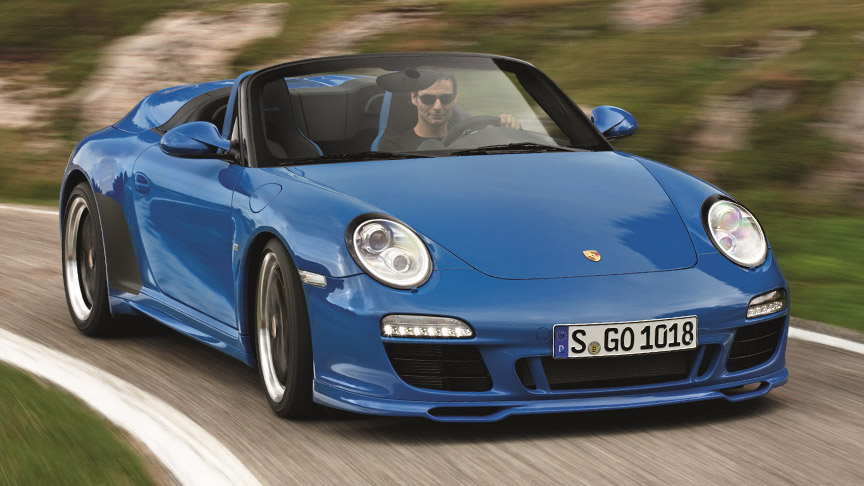
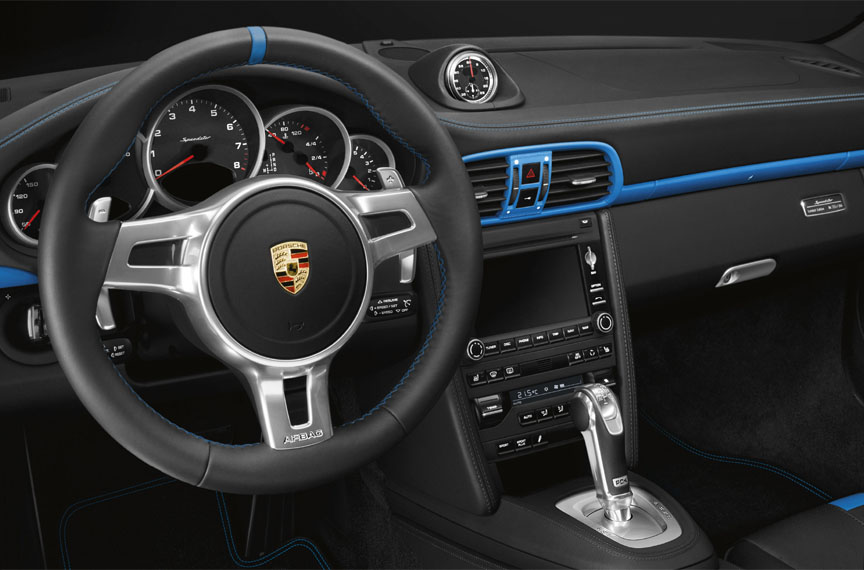
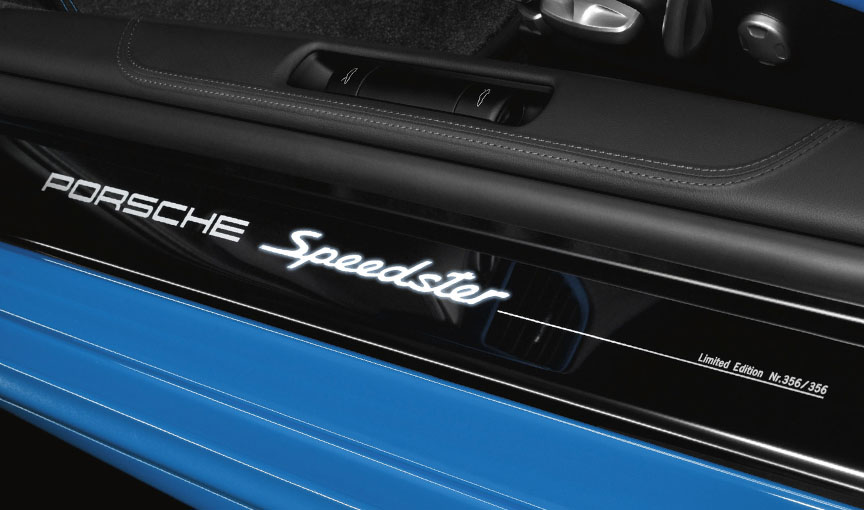
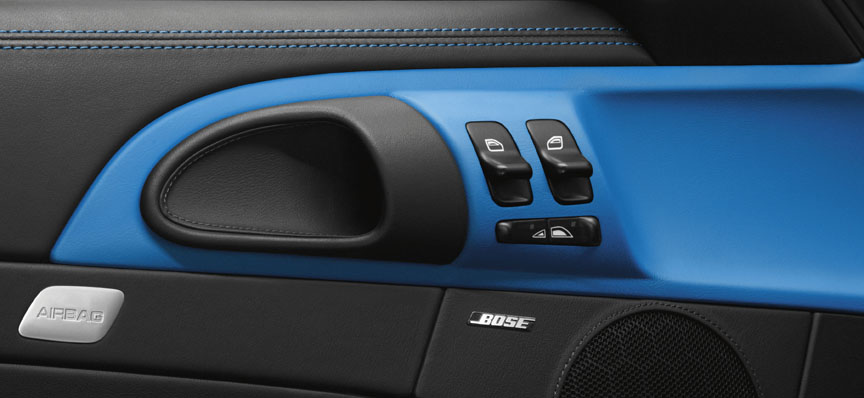
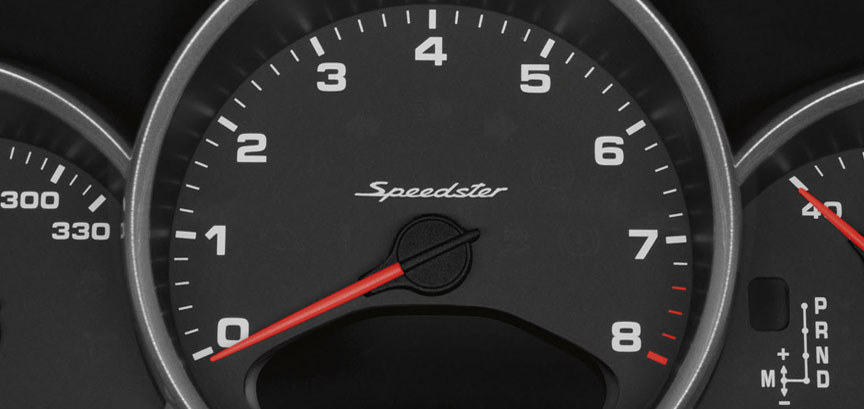
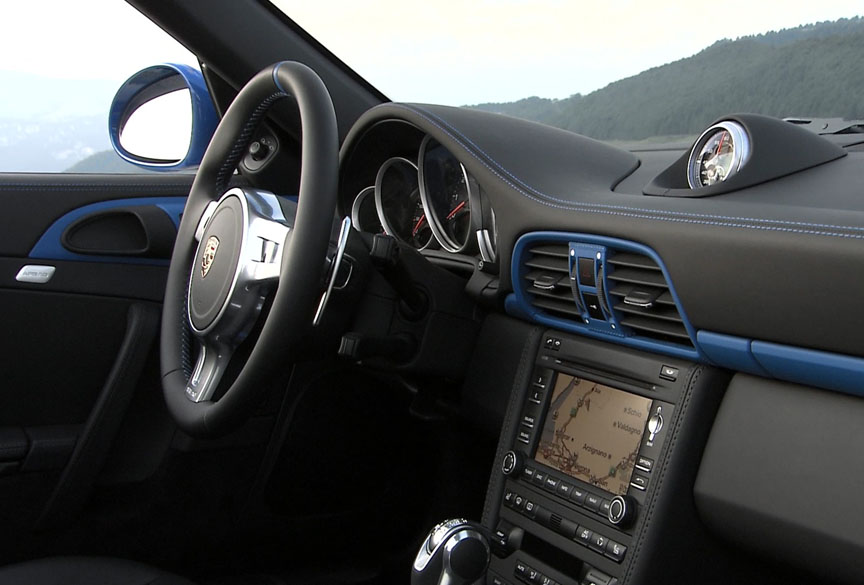
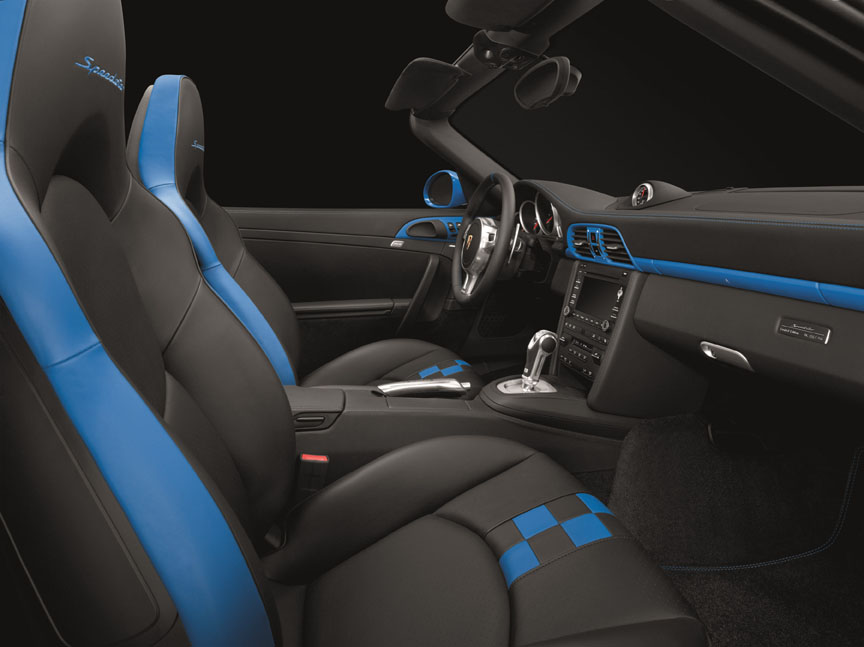
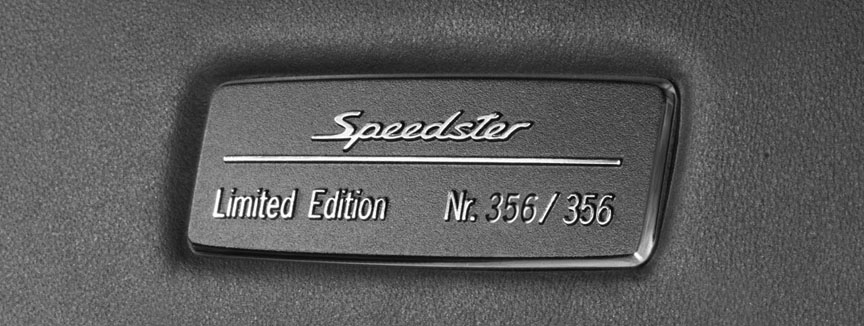
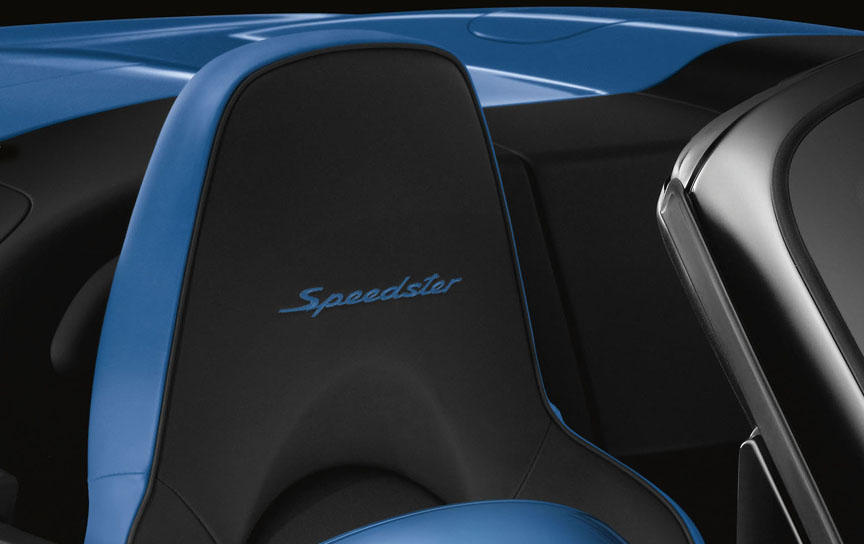
Ranking above the 911 GT3 R is the RSR, built for GT2 racing, which competes in series like the American Le Mans Series, the Le Mans Series and at the Le Mans 24 hour race. The 2011 version RSR finally received the 997.2 rear lamps, but interestingly not the front ones. It doesn’t make difference from the racing point of view, but one would expect it is good for marketing when the racing car looks as similar to the street car as possible. The power of the 4-litre engine stayed almost the same at 355 kW. Maximum revs remained unchanged at already unbelievable 9400 rpm. The front wheels grew to enormous 12″ width (instead of 11″) and contributed to minimizing understeering. Rear wheels stayed at their already enormous 13″ width.
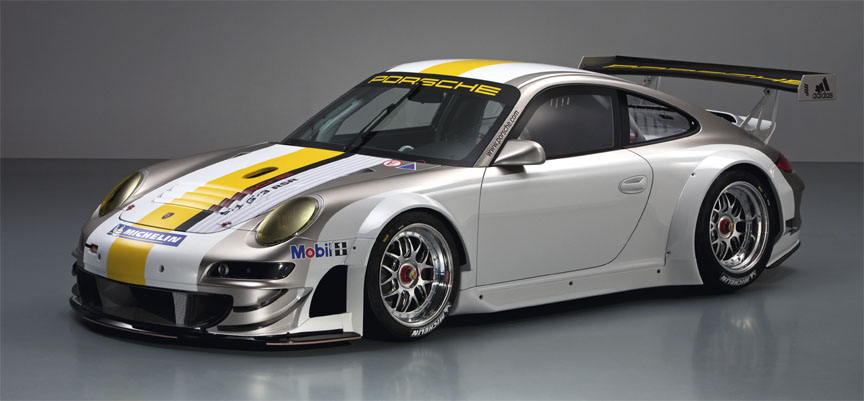
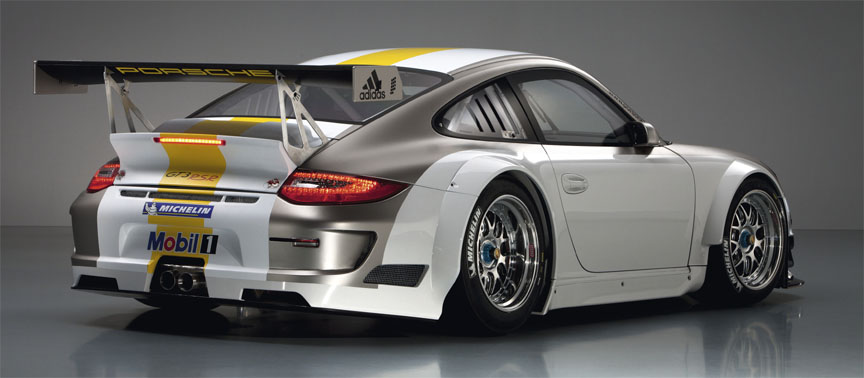
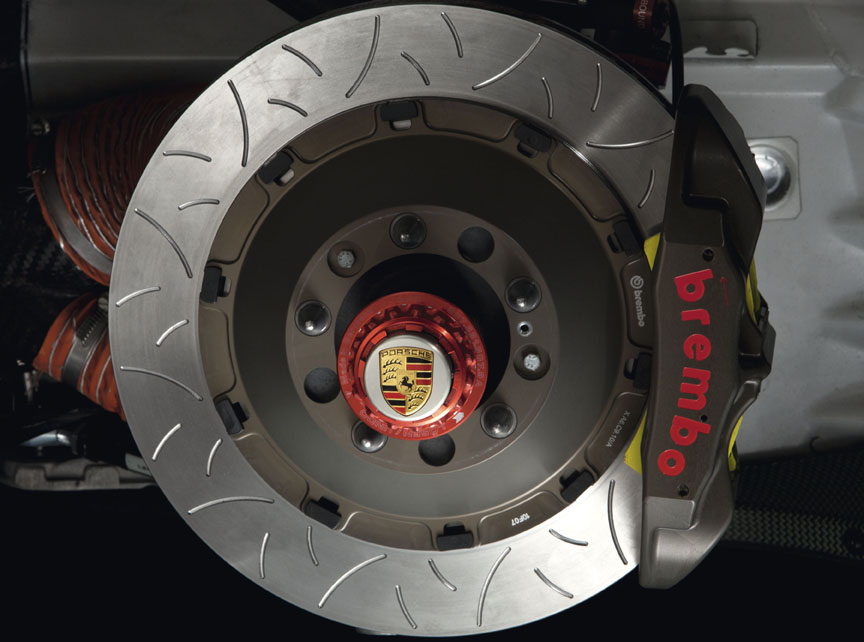
In spring of 2011 final efforts were made to sell the 997. Based on the Carrera 3.6, the Black Edition was a free package of equipment that included Turbo-look wheels, parking assistant, ‘911’ rear lid badge, sports steering wheel, cruise control, anti-dazzle mirrors, rain sensor, navigation module, Bose sound system, universal audio interface and the most valuable item of the package, the dashboard plaque reading “Limited Edition nr. XXXX/1911”. As said, the price of the Black Edition car was the starting price of the 911. A bargain, just that the launch of the new 911 generation was a few months away.
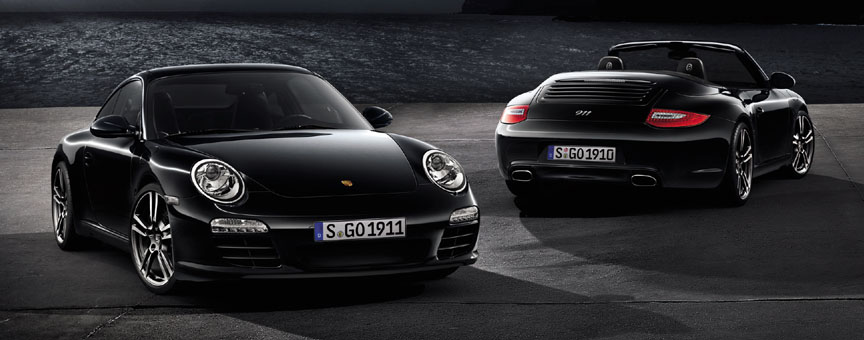

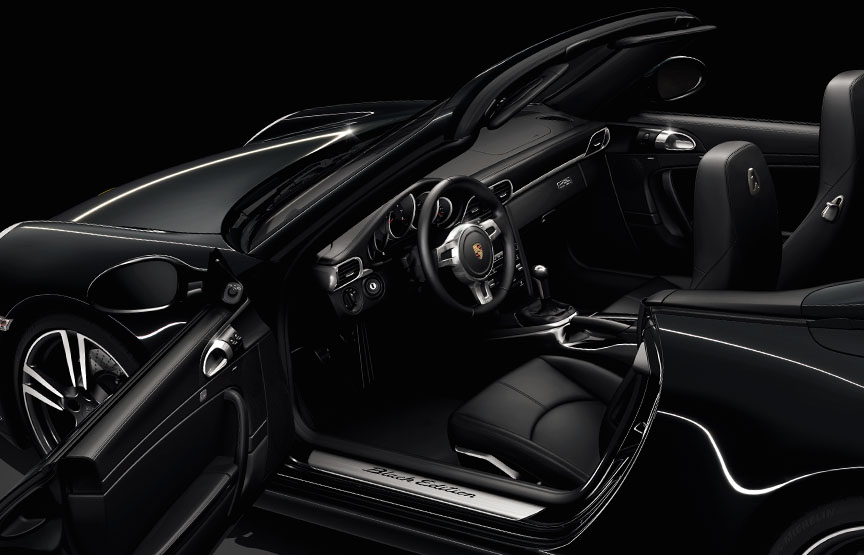

In the spring of 2011 it was announced that the production of the 918 Spyder supercar starts in the end of 2013. If you had ordered the 918 Spyder, you had the exclusive possibility to order a 911 Turbo S “Edition 918 Spyder”. The cool special edition Turbo S could be ordered as a coupe or a convertible.
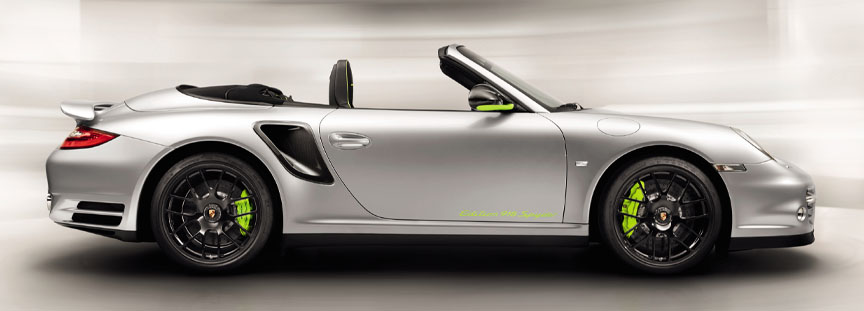
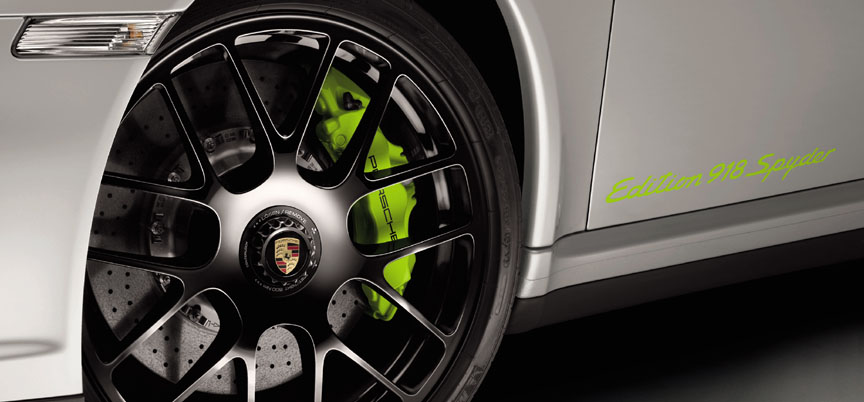
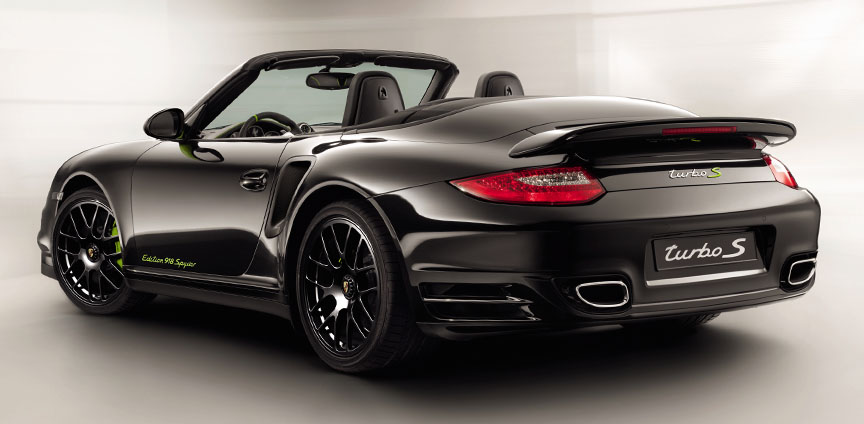

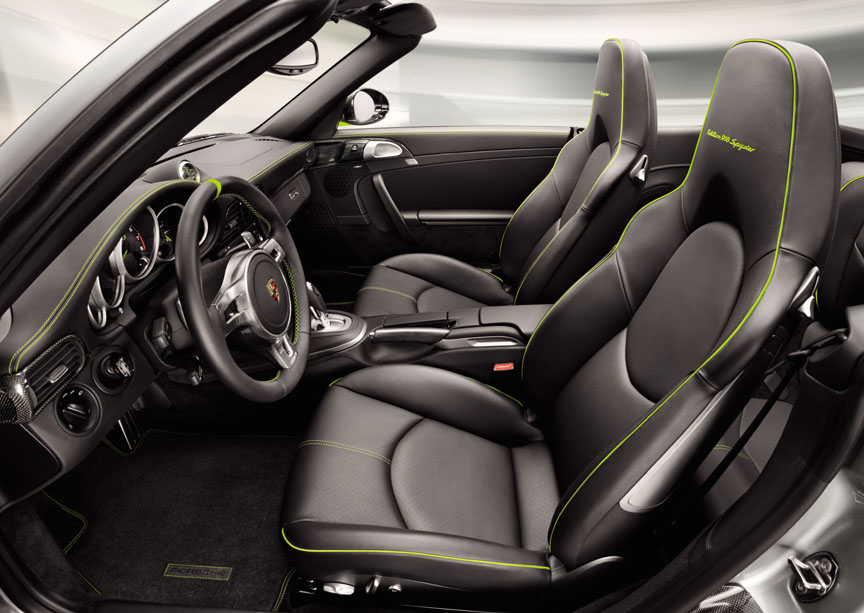
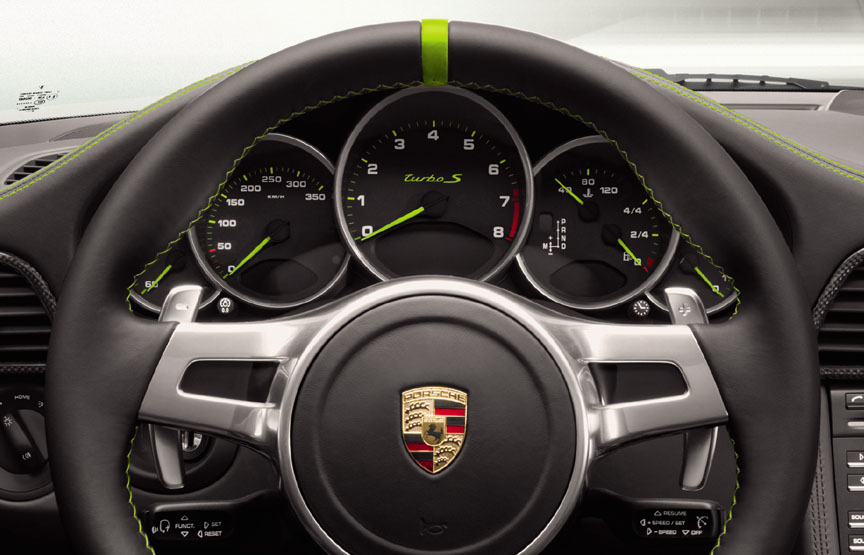
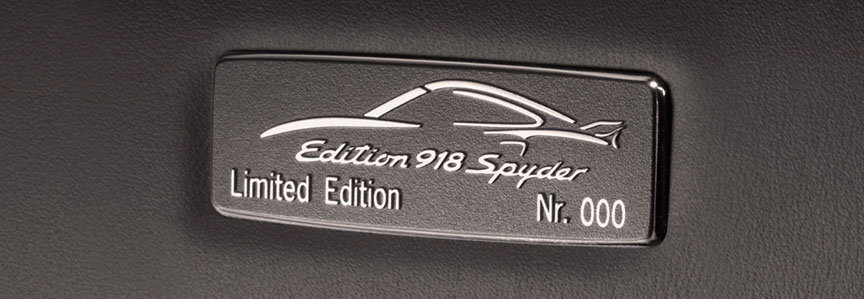
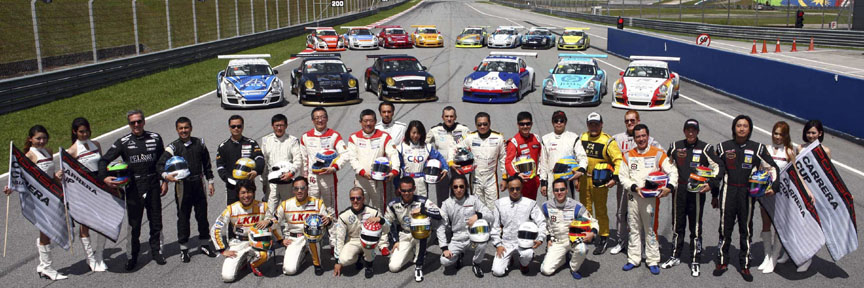
In April 2011, the ultimate street legal GT3, the RS 4.0 was announced. With 368 kW from a naturally aspirated 4-litre engine, it had more power than it’s racing brothers (GT3 RSR 4.0 335 kW, GT3 R 4.0 353 kW). When the racing cars have restrictions in terms of performance, with the street version Porsche engineers could show what they are able to create. The front lid and front wings were made of carbon fibre. 600 lucky guys had the chance to aquire the RS 4.0. Deliveries started in July 2011.
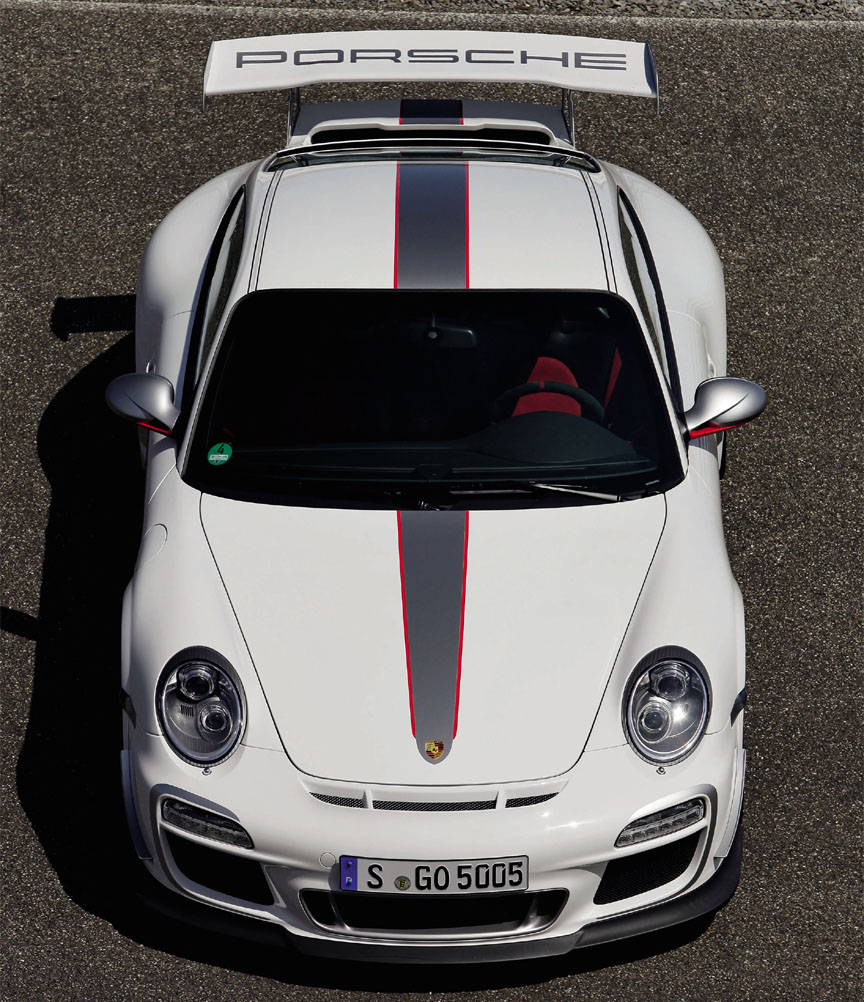

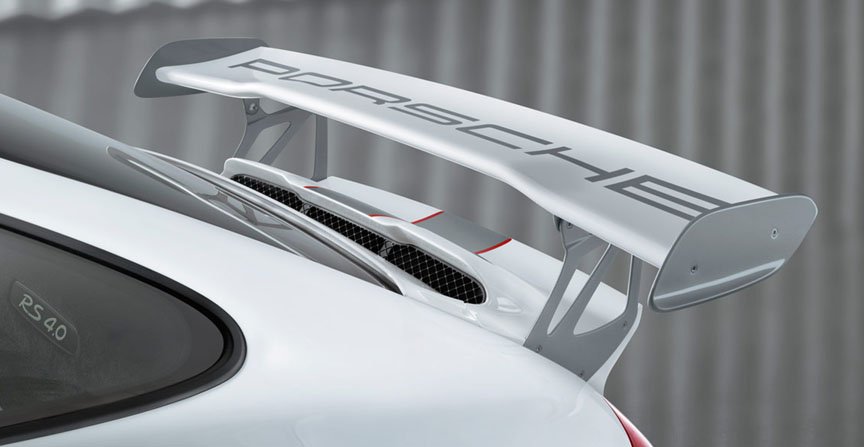


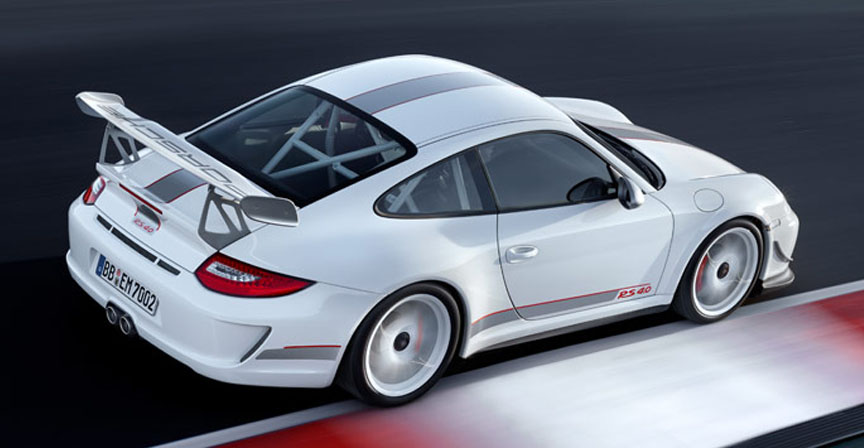

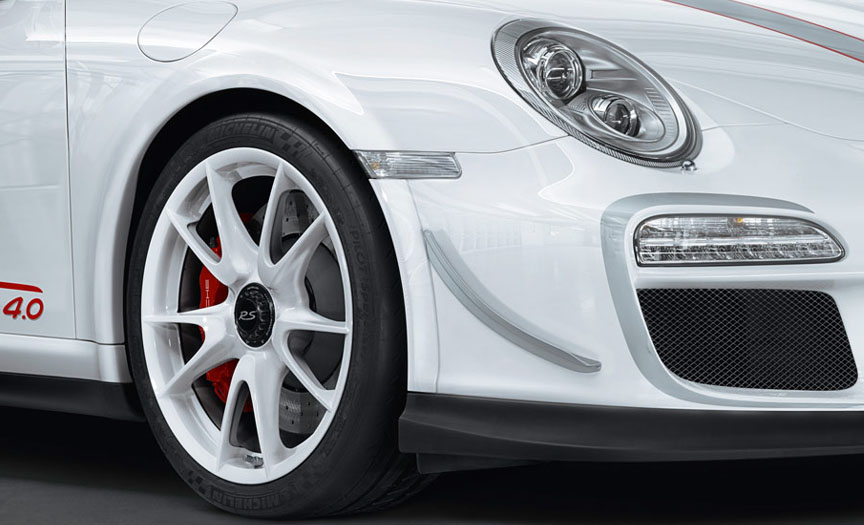
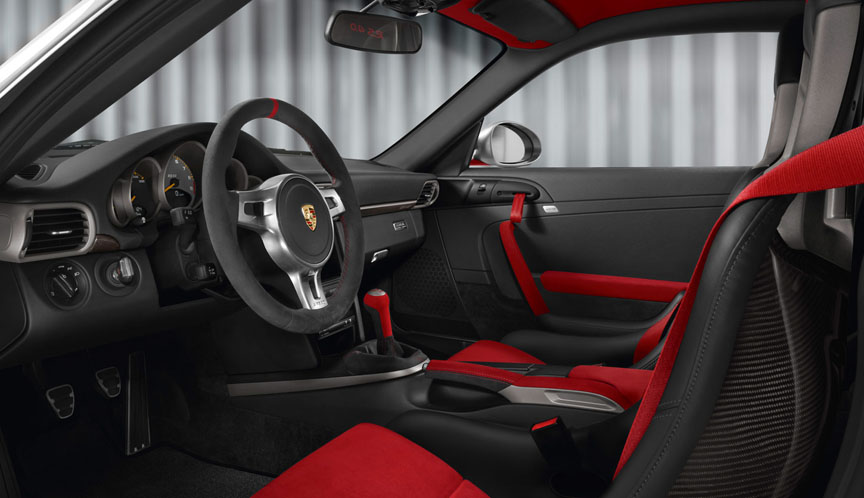
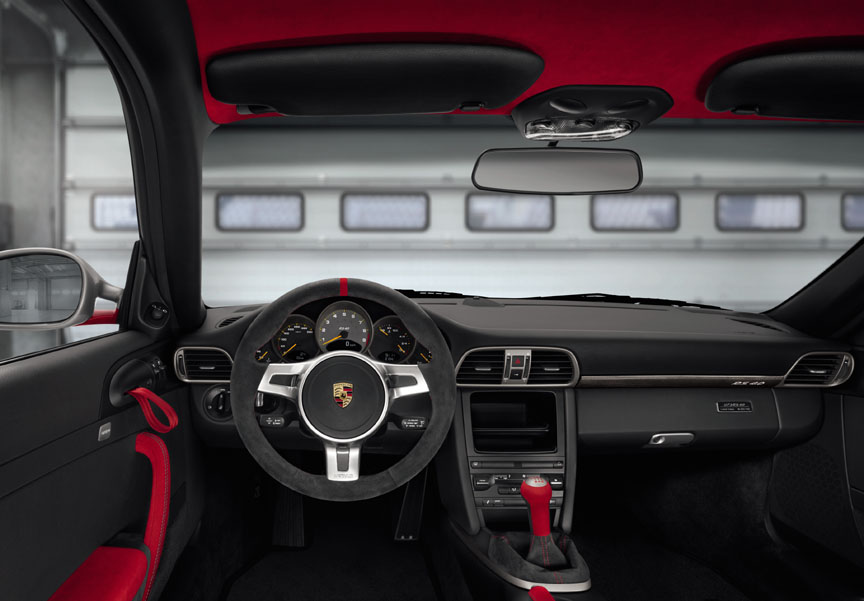
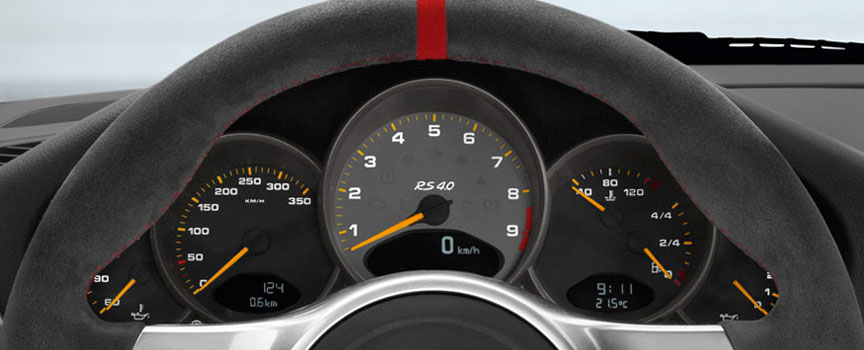
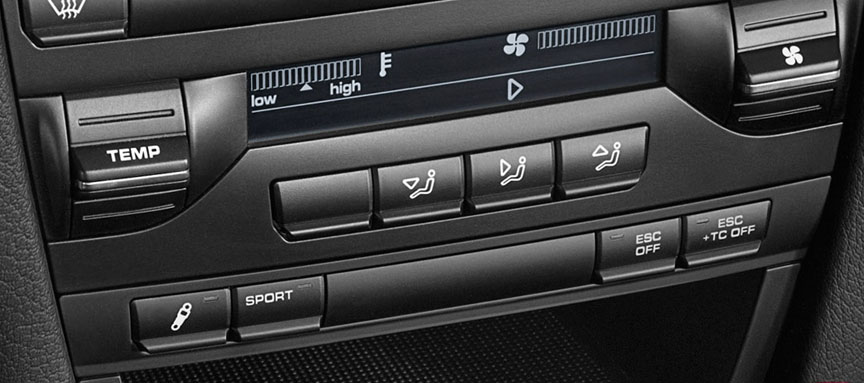
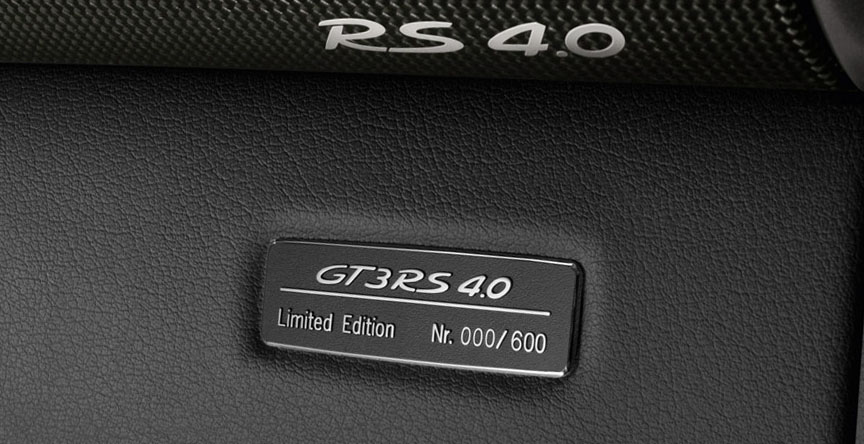
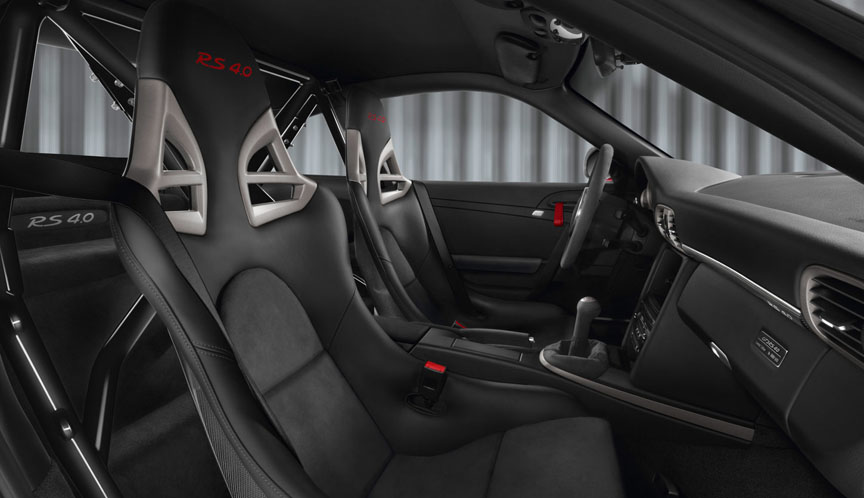
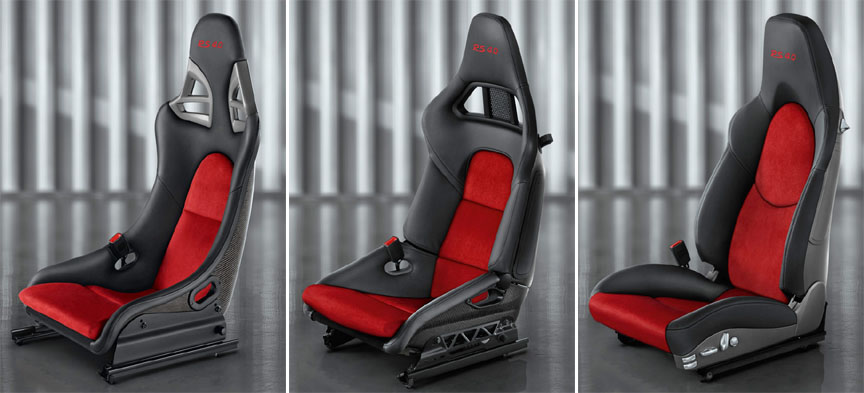
Over the winter of 2010/2011 the 911 GT3 R Hybrid ‘race lab’ was developed further, with the weight of the whole hybrid system decreased from 250 kg/550 lb to 200 kg/440 lb. The weight of the car went down from 1350 kg/2976 lb to 1300 kg/2866 lb. Because of the very high combined power, weight reduction is not so crucial for a race car as the race organizers would add ballast to such a powerful car anyway. Racing cars are equalized with the Balance of Performance system, which means that quicker cars will receive extra ballast. The GT3 RH Version 2.0 had its combustion engine decreased in power to 342 kW (previously 353 kW) for fuel consumption reasons and the electric motor power was increased from 60 to 75 kW each (electric power increase from 120 kW to 150 kW). The total peak power rose from 473 to 492 kW. Most of the controls and the display were moved to the steering wheel. First overall victory came at the 4th 2011 VLN 4 hour race on May 28.
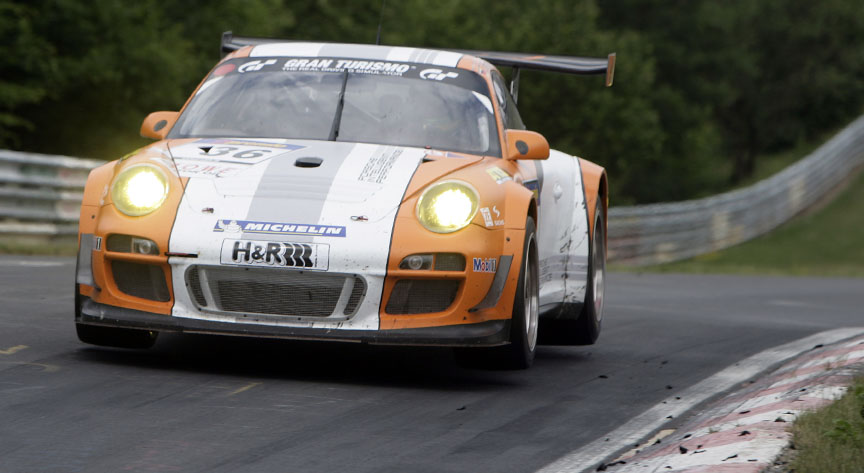
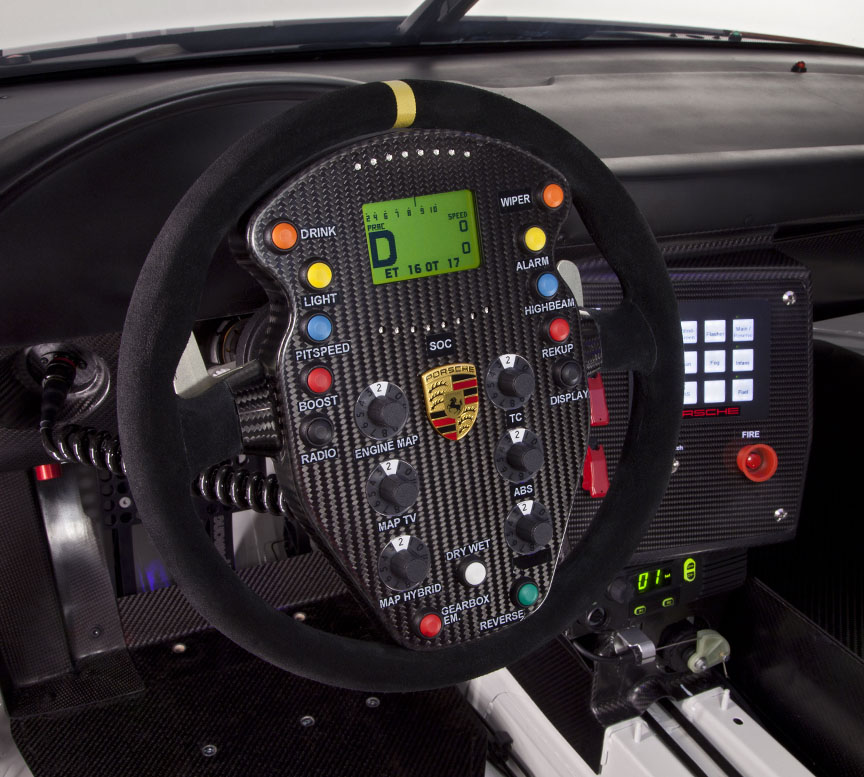
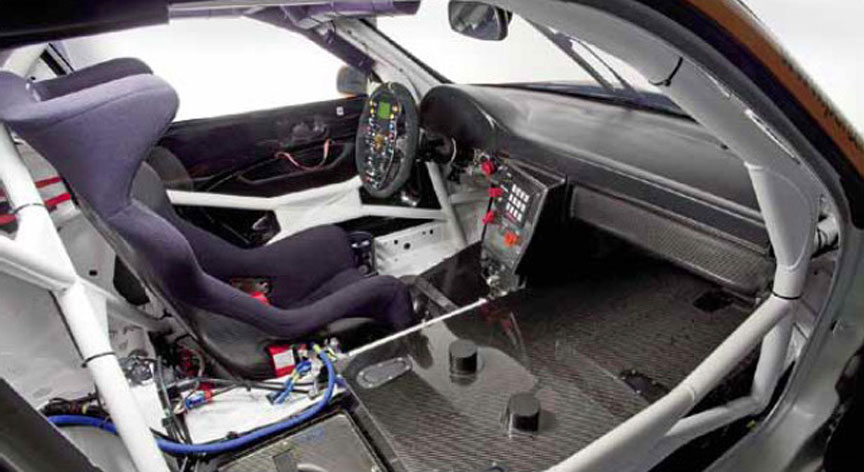
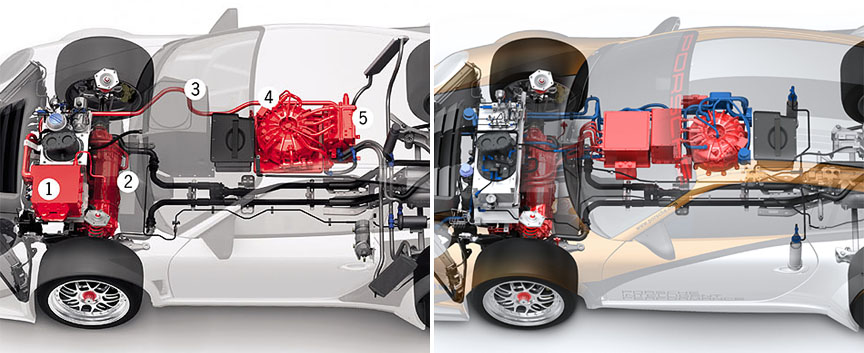
While in 2010 the sequence of N24 overall wins stopped for the Manthey team, in 2011 they won again. Now 5th time in 6 years. Marc Lieb drove instead of Marcel Tiemann, but rest of the winning drivers were the same: Timo Bernhard, Lucas Luhr and Romain Dumas.
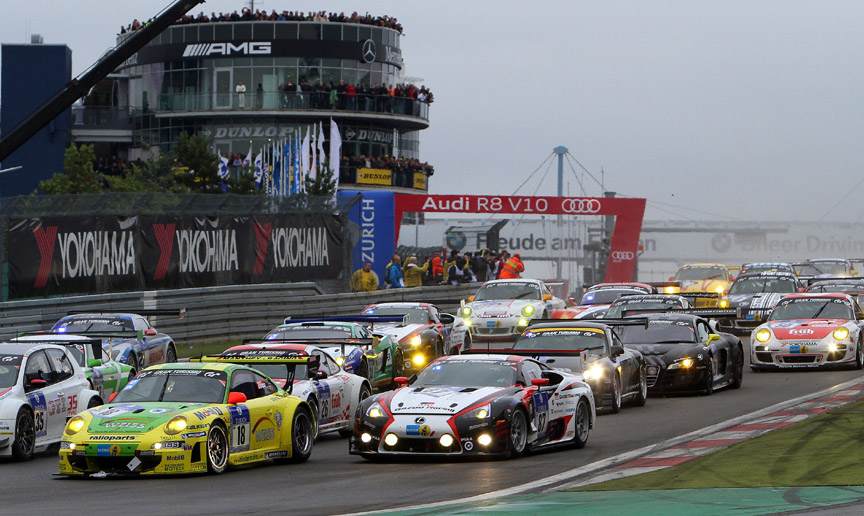
Efforts were made to sell as many 997 as possible and the 911 Carrera 4 GTS Coupé and Cabriolets were delivered from July 2011. The rear-wheel-drive GTS already had the wider body and now the 4 GTS could be told only by the reflector bar between the rear lamps.
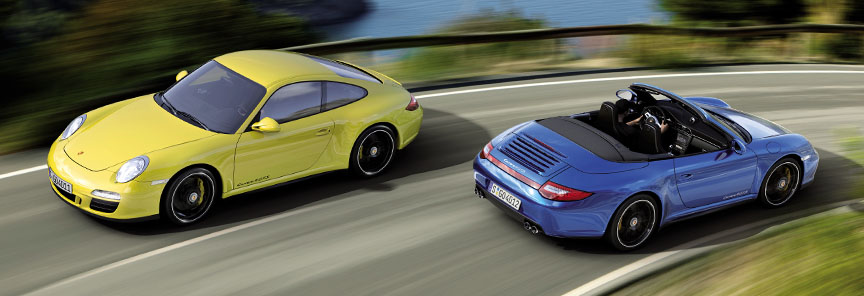

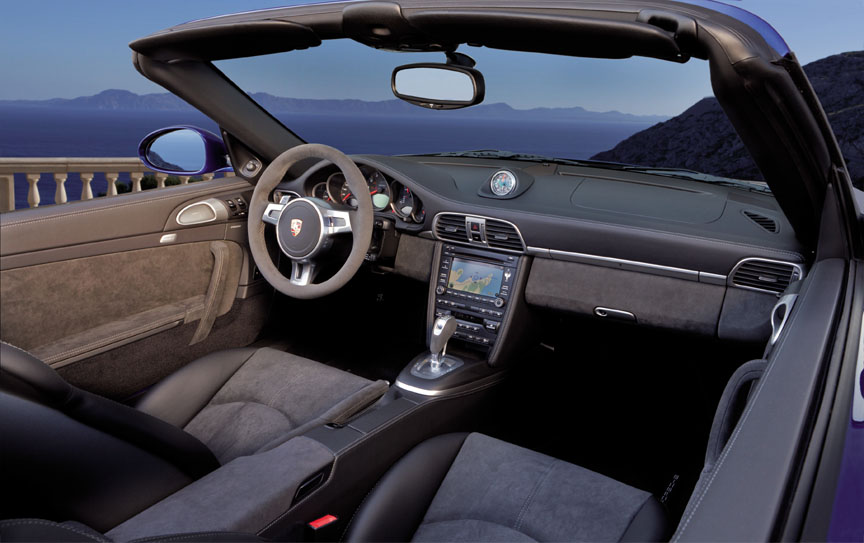
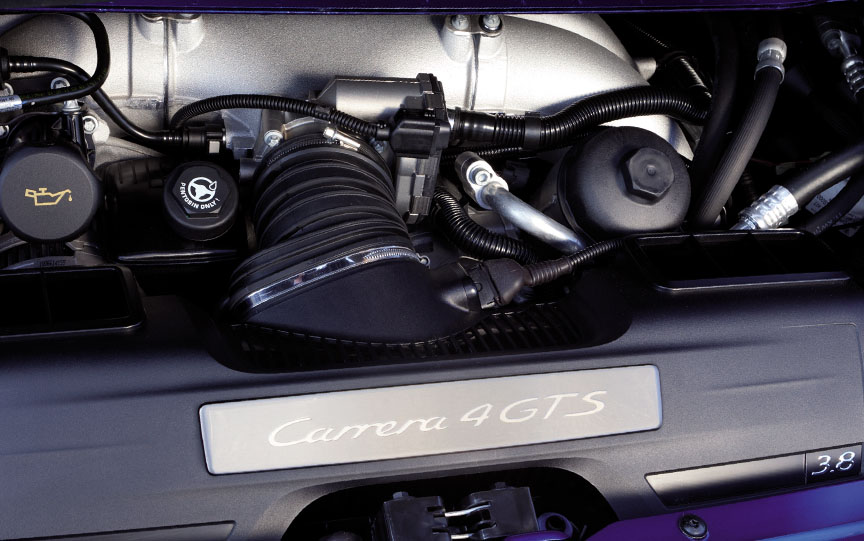
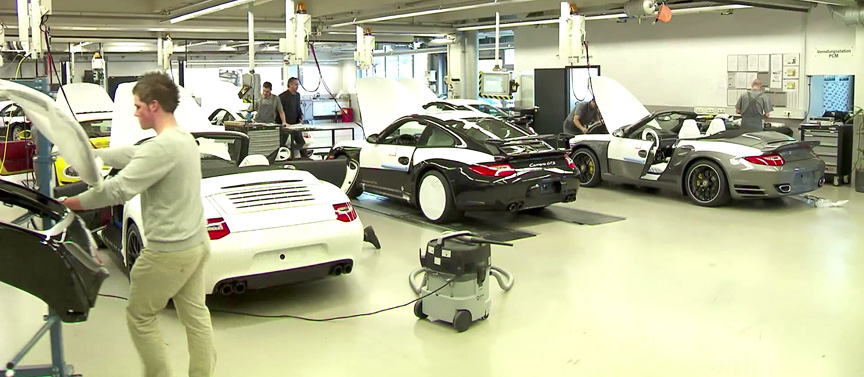
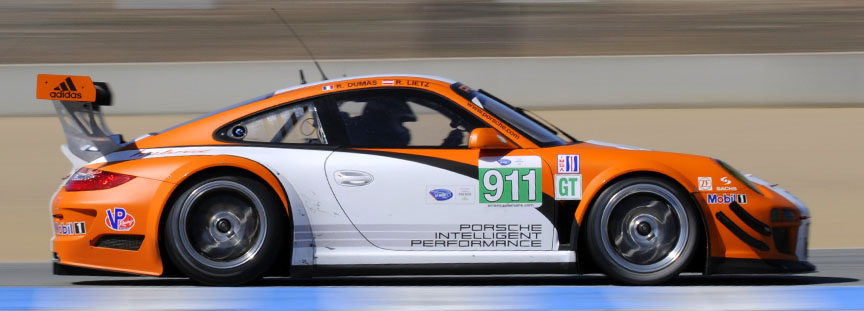
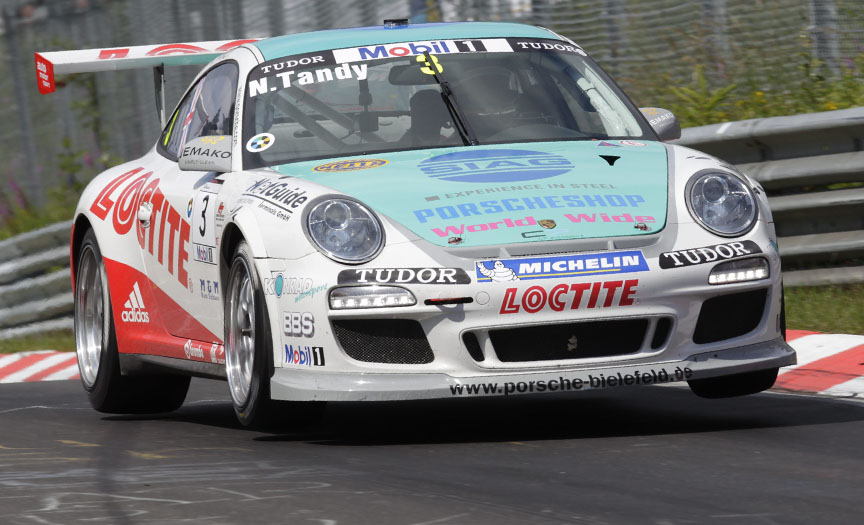
In 2012, 997 news could only come from Porsche Motorsport in Weissach and not anymore from Stuttgart where the 991 was already in production since 2011. The 2012 RSR received a completely new bodykit, but still retained the 997.1 front look. Considering the 991 Carrera was launched in previous year, there was no difference if the 997 would look pre-facelift or facelift. The already wide RSR grew 1.9″/48 mm in width. Rear fender side openings provided air to the engine instead of the earlier air scoop on the engine lid. The RSR was built for the Le Mans 24 hours, the FIA WEC (World Endurance Championship), the Le Mans Series, the American Le Mans Series as well as the International GT Open. With a mandatory air-restrictor it generated 338 kW. The sequential gearbox was operated via shift paddles on the steering wheel.
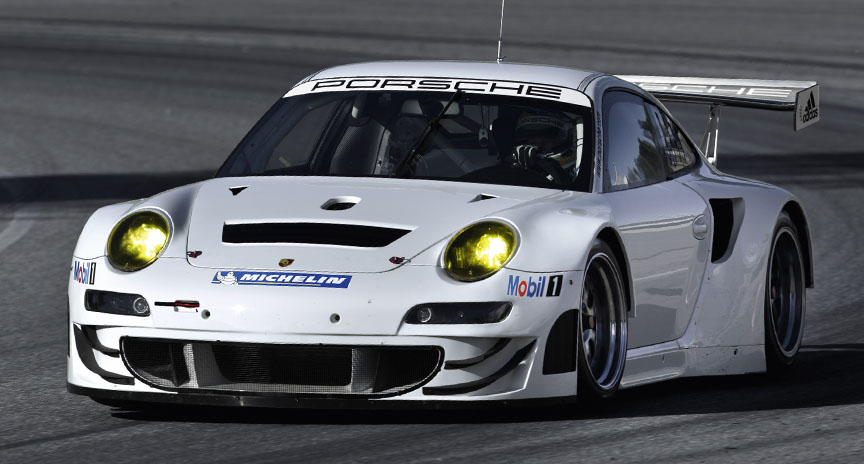
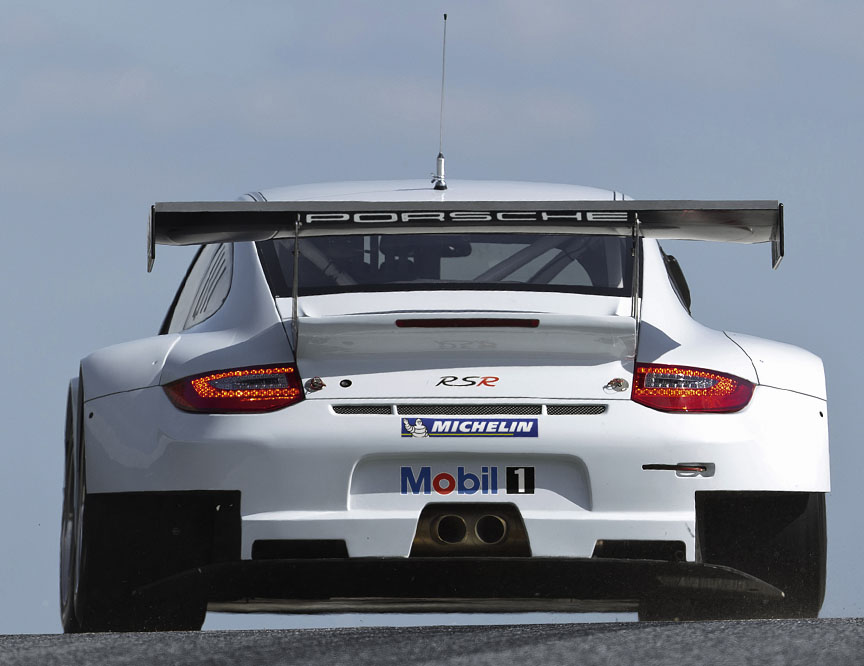
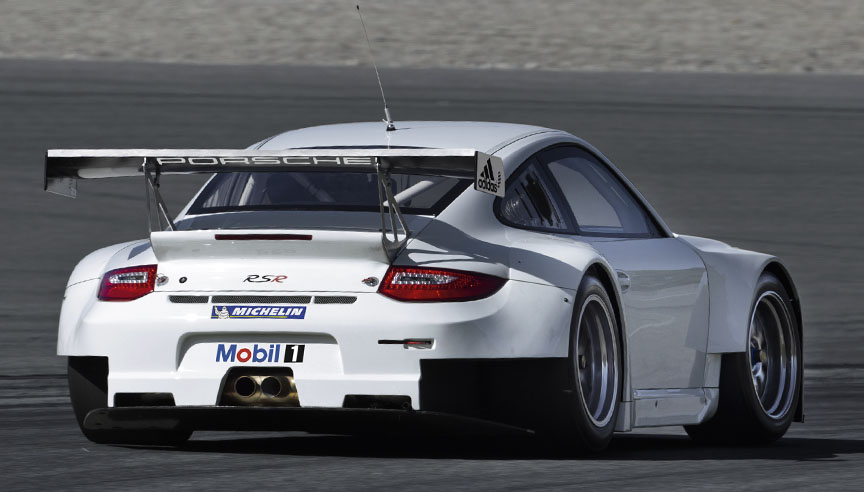
More racing car news: the 2012 GT3 R was equipped with shift paddles behind the steering wheel and the power was boosted from 353 kW to 368 kW. The power increase was achieved through optimisation of the intake system. New 2012 GT3 R cars were built as well as a kit to convert 2010 and 2011 cars was offered.
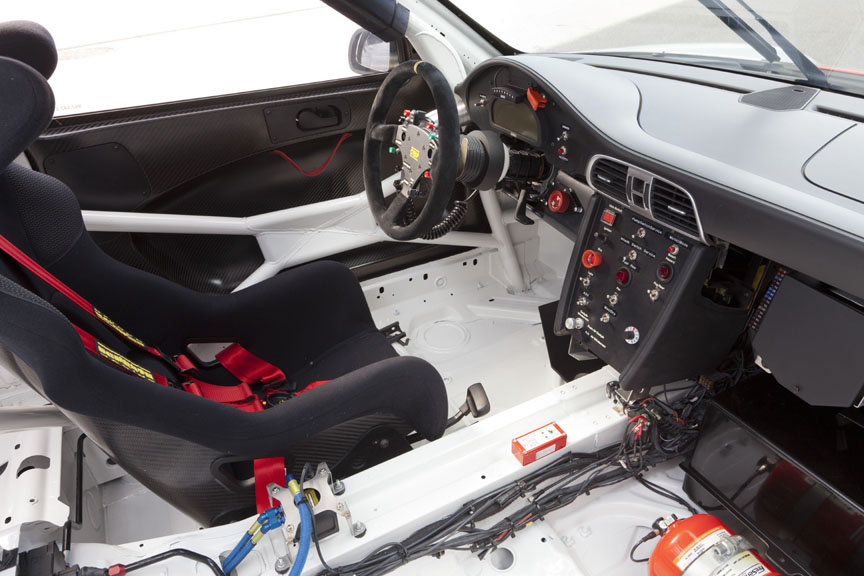
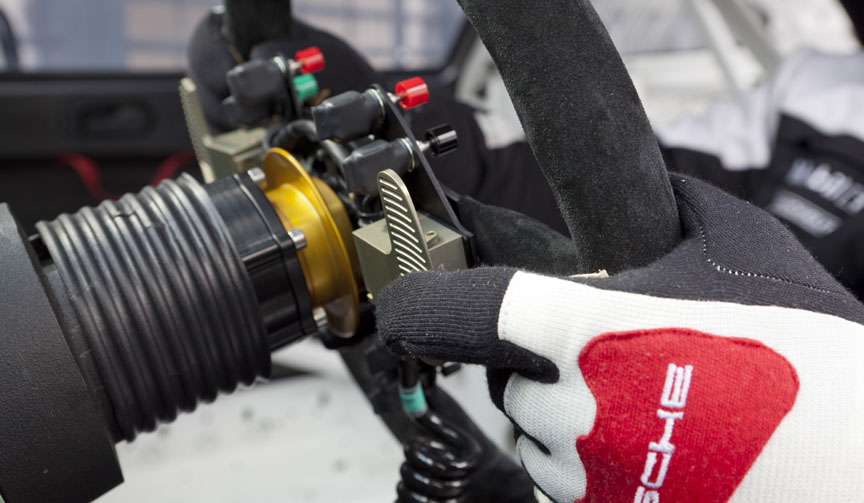
The 2012 GT3 Cup got new refuelling system – the car was now refilled via an opening in the front lid.
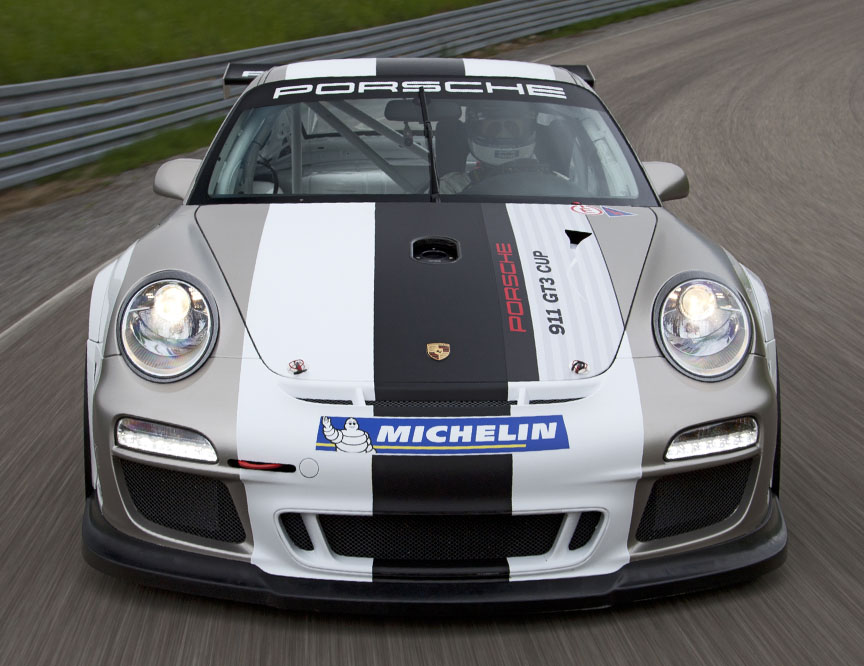
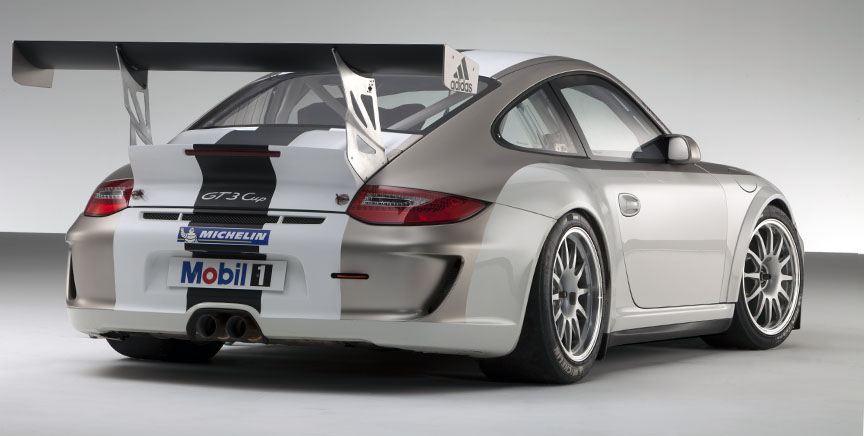
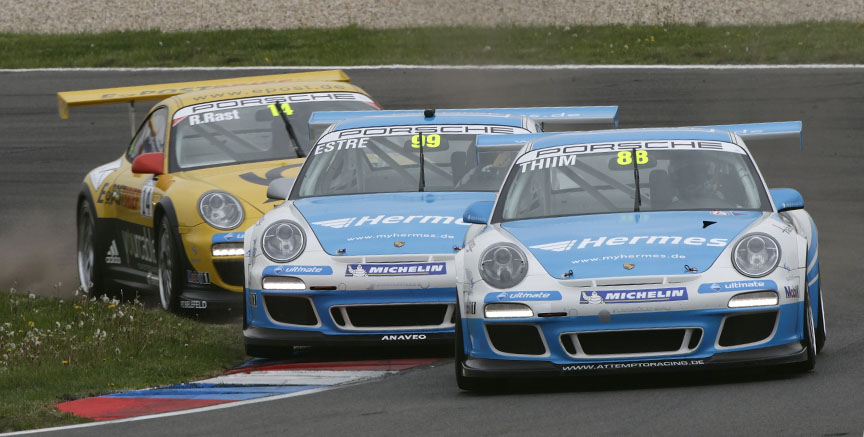
At the 2012 Pike’s Peak uphill competition Romain Dumas could run his GT3 R 4.0 without the air restrictors and therefore had 390 kW of power on his disposal in the 1140 kg/2513 lb car. His car had altered aerodynamics for more downforce and a short gear ratio. The course was 12.42 miles (20.0 km) and had 156 corners from the start at 9390 ft (2860 m) to the finish at 14,110 ft (4300 m). Dumas stormed to the summit in 9:46.181, only 0.017 seconds short from overall victory.
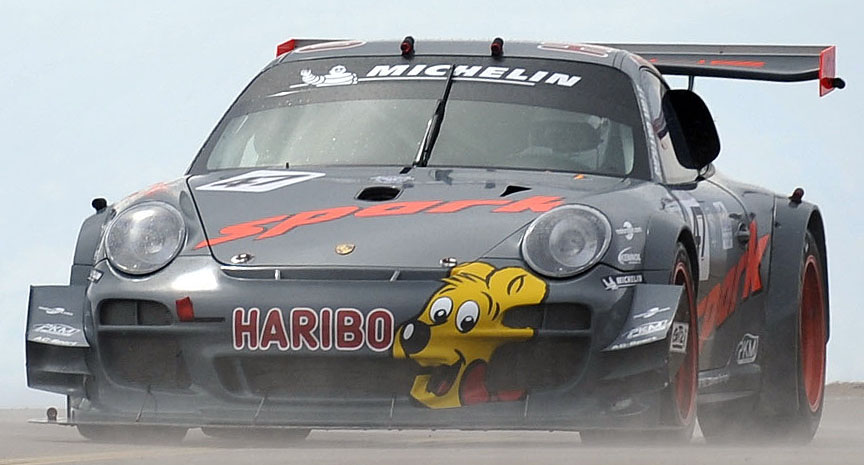
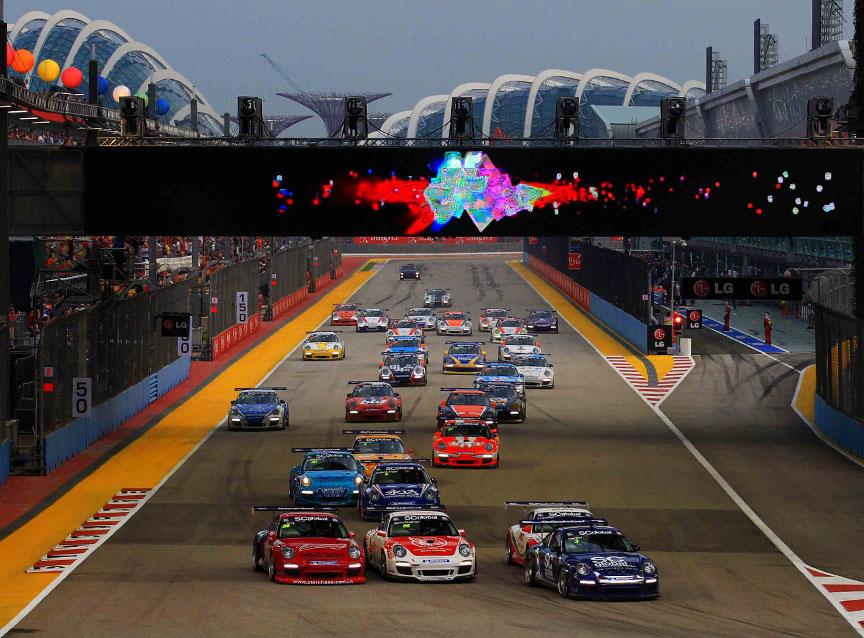


Although the 991-generation 911 was in production already over a year, for the 2013 season an ultimate upgrade kit was offered for the GT3 R. The 2013 spec GT3 R had completely new and wider fenders front and rear. The track on both axles grew by 2″/50 mm. The wheelbase grew by 0.4″/10 mm. The width of the front rims was now 12″ instead of 10.9″. The rear wing was enlarged to the full width of the car.
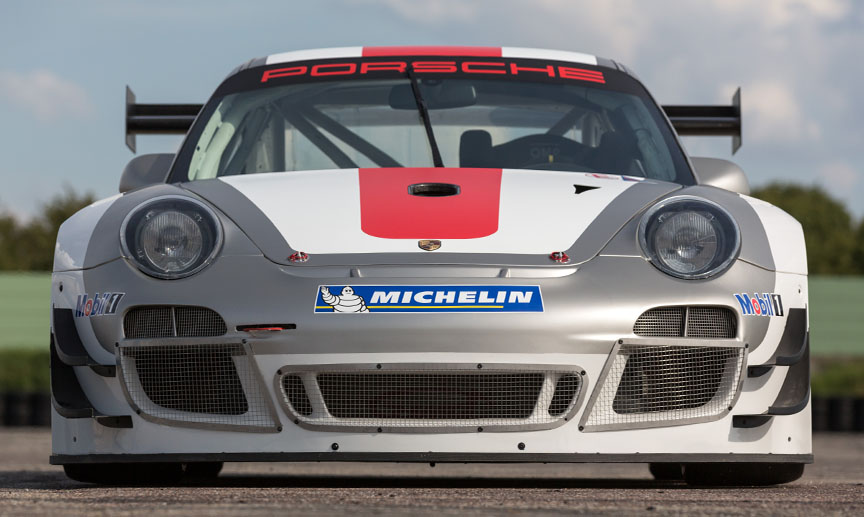
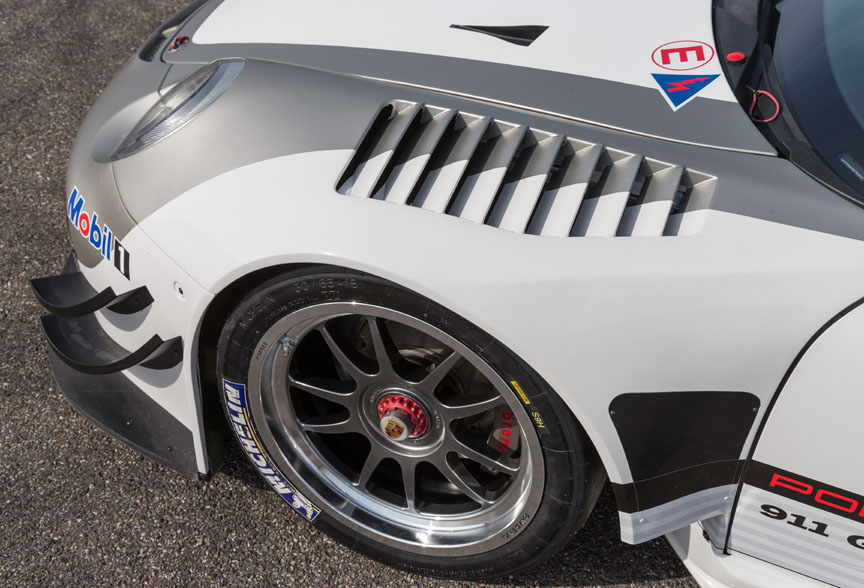
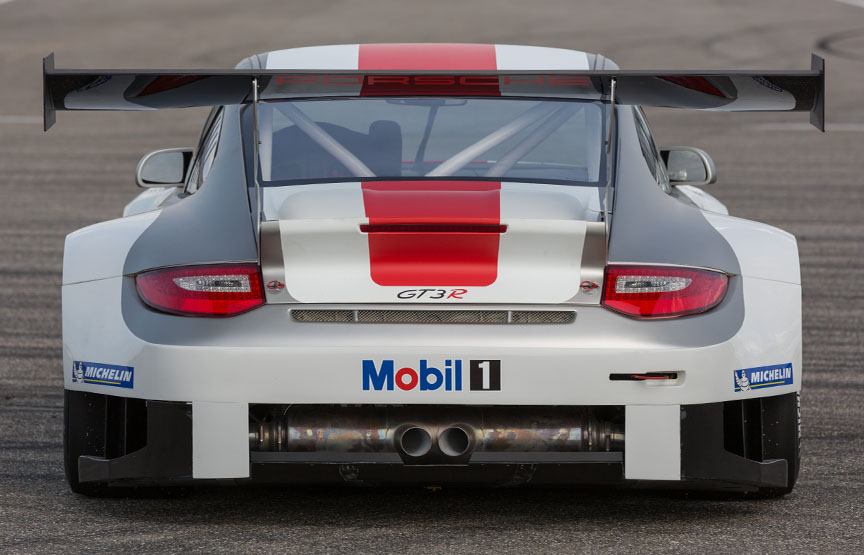
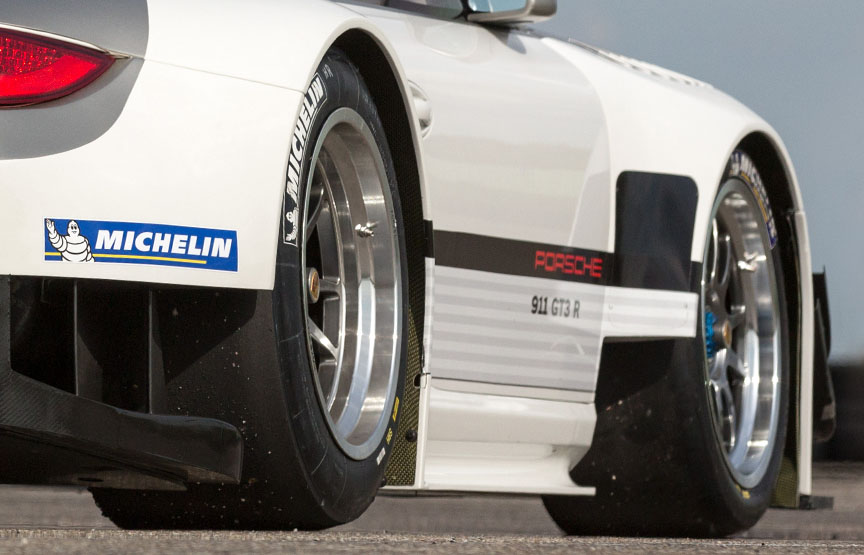
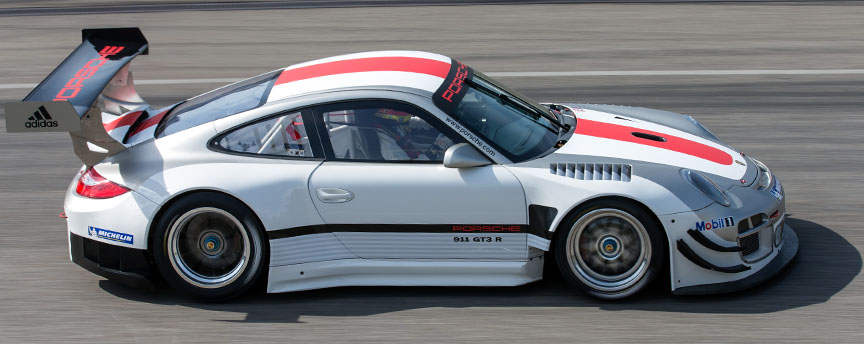
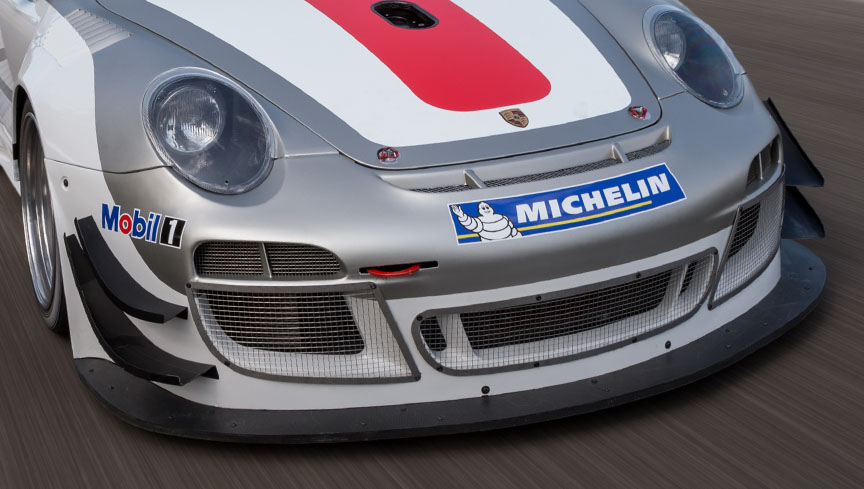
It is rather difficult to understand the differencies between the different 997 GT3 R and different GT3 RSR, but the following photo compilation tries to explain that:
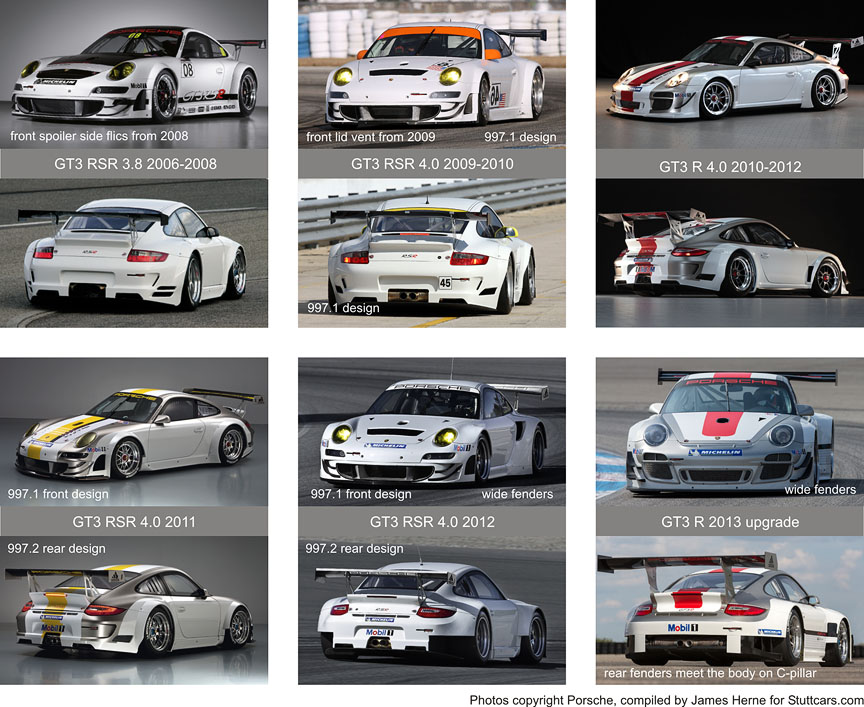
While the Porsche Supercup races in 2013 were finally held with the 991 Cup cars, the national 911 GT3 series were still held with the 997.
